Fujitsu Isotec 015M33324A Dot Matrix Printer User Manual FUJITSU DL7400
Fujitsu Isotec Limited Dot Matrix Printer FUJITSU DL7400
Contents
- 1. Users Manual 1
- 2. Users Manual 2
- 3. Users Manual 3
Users Manual 3
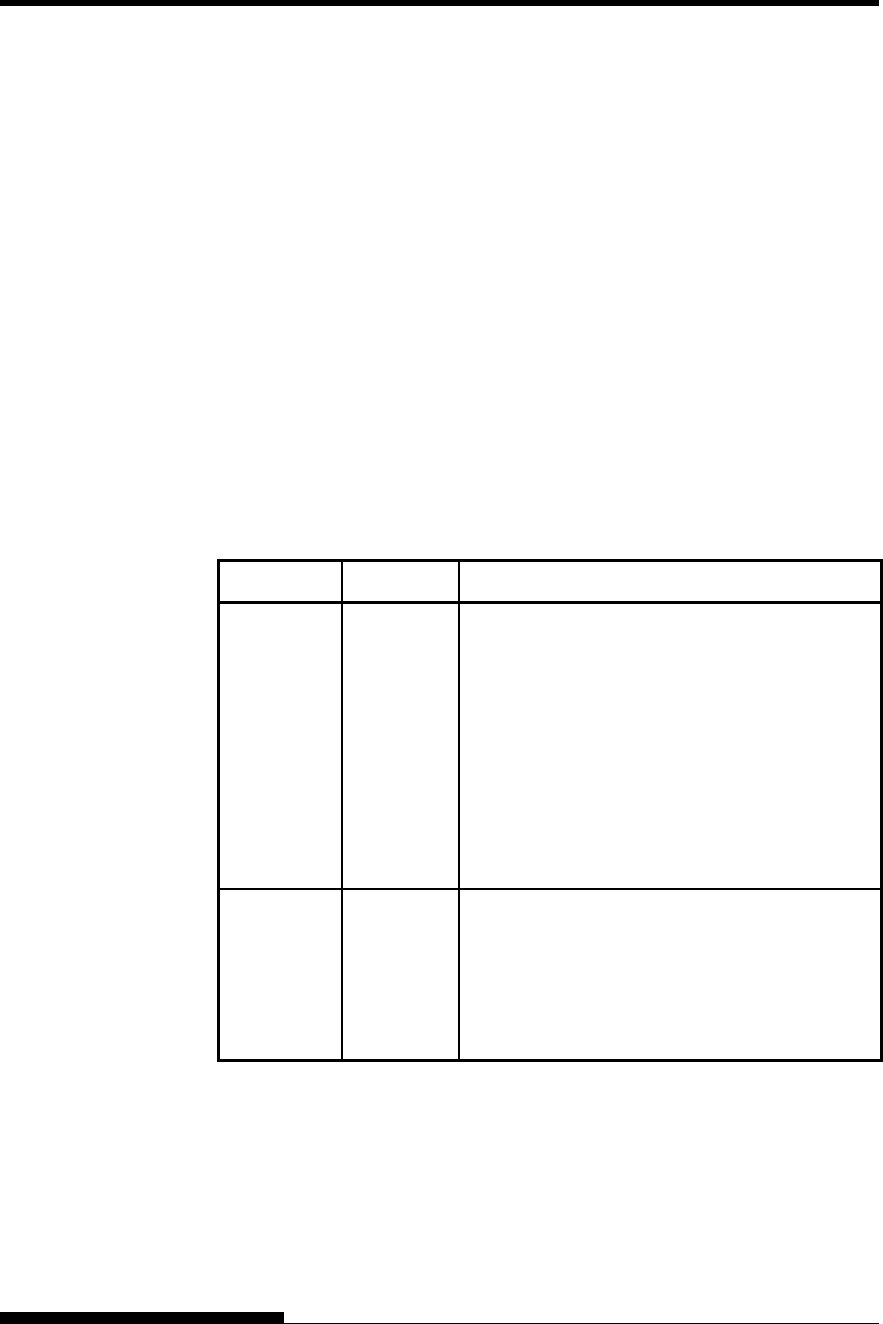
USING SETUP MODE
User's Manual 5-11
The previous page shows a printout of the printer’s factory default
settings. In this printout, options are listed by functional group:
• Menu 1 settings (MENU1 function)
• Menu 2 settings (MENU2 function)
• Hardware settings (HARDWRE function)
• Print position adjustment settings (ADJUST function)
• Configuration settings (CONFIG function)
• Print head gap adjustment settings (GAP-ADJ function)
Most selectable options only alter print features, such as the typestyle,
and page format. However, some options must be selected correctly for
the printer to work properly with your hardware and software.
For each function, Table 5.2 lists items whose options must be selected
correctly for system and printer accessory compatibility.
Table 5.2 Required Options
Function Item Option
MENU1 EMULATE The emulation selected on the printer must be the
same as the emulation selected in your software.
If you selected an emulation when you set up the
printer (Chapter 2), you do not need to change the
EMULATE option unless you want to change to
a different emulation. The emulation assigned to
MENU1 is the default when you turn the printer
on.
See the section MENU1 and MENU2 Items and
Options later in this chapter.
MENU2 None If you use MENU2, the emulation selected for
MENU 2 must be the same as the emulation
selected in your software.
See the section MENU1 and MENU2 Items and
Options later in this chapter.
DECIDING WHICH
OPTIONS TO
CHANGE
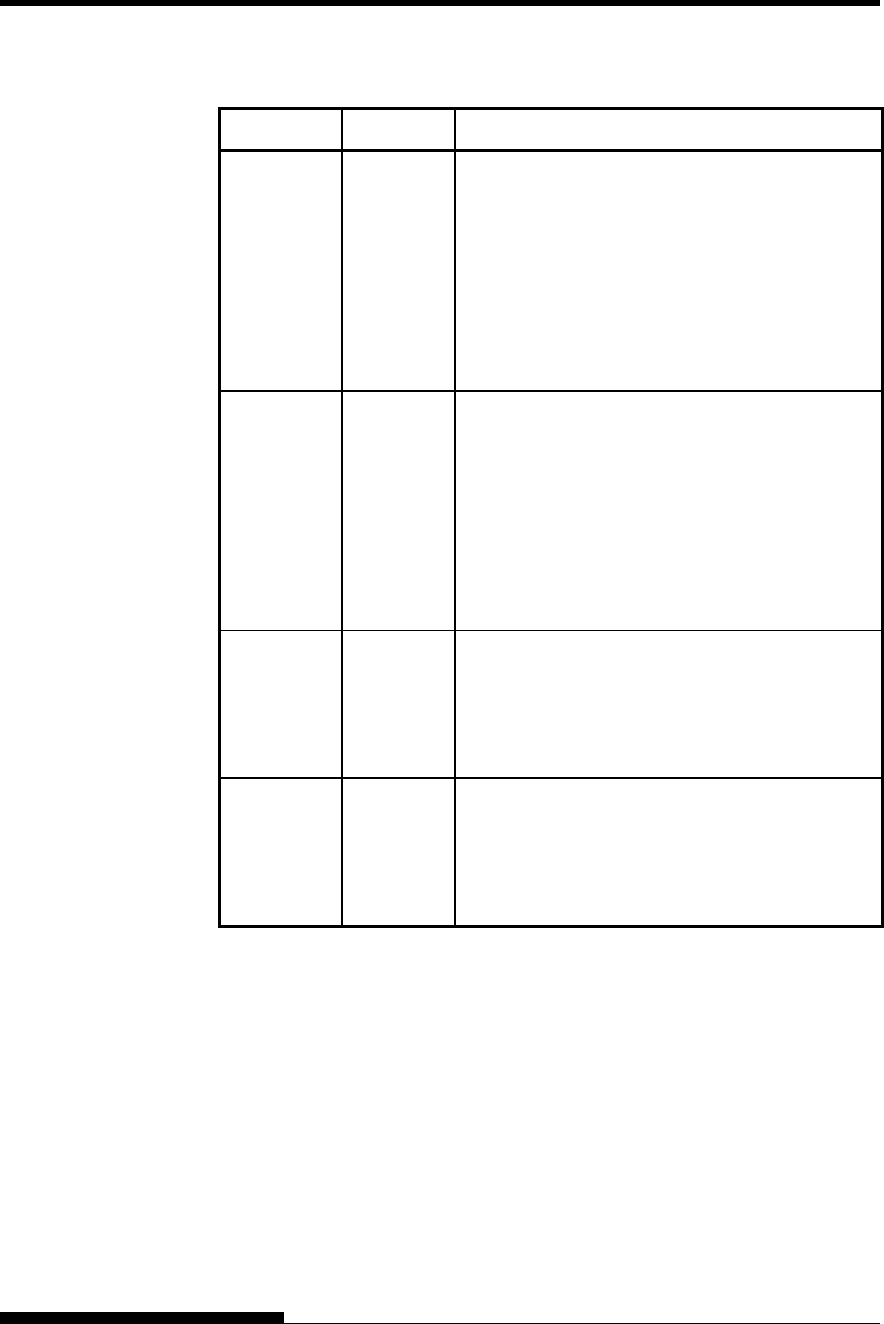
USING SETUP MODE
5-12 User's Manual
Table 5.2 Required Options (Cont.)
Function Item Option
HARDWRE FORMAT
BAUD-RT
PROTOCL
DSR
DUPLEX
CTS
CD
If you have a serial interface, the serial interface
options selected on the printer must be the same
as the settings you selected using your software or
your computer operating system. If the settings
are not the same, the printer will not print or will
print garbage.
See the section Hardware Items and Options
later in this chapter.
ADJUST None If you are not using software to specify the top
margin of the page, use the printer’s default top-
of-form setting, 1 inch (25.4 mm) from the top of
the paper. If you are using software to specify the
top margin of the page, change the default setting
to 1/6 inch (4.2 mm).
See the section Print Position Adjustment Items
and Options later in this chapter.
CONFIG None You can change the printer’s primary
configuration.
See the section Configuration Items and
Options later in this chapter.
GAP-ADJ None If you adjust the gap manually or fix the gap,
change the setting.
See the section Print Head Gap Adjustment
Items and Options.
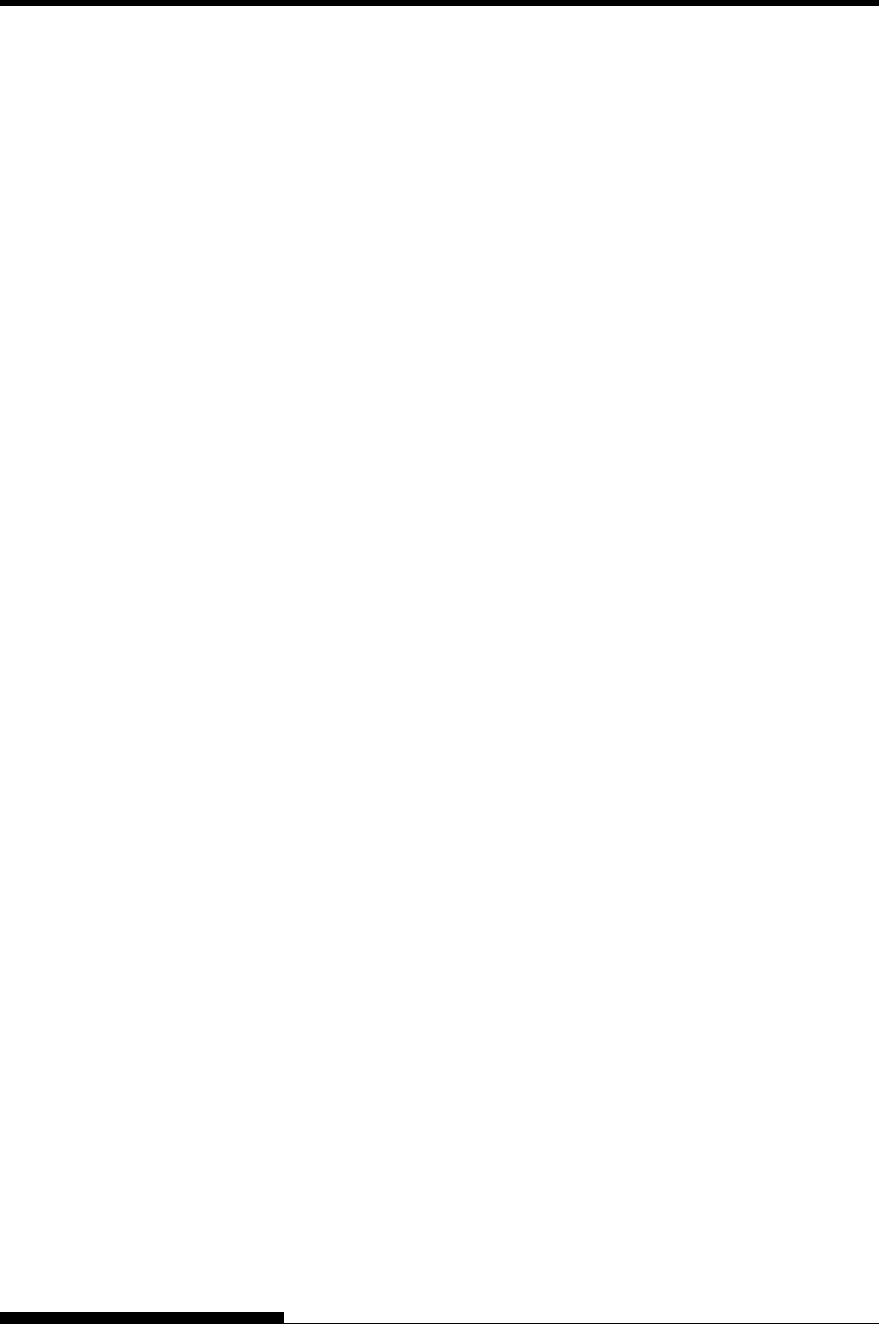
USING SETUP MODE
User's Manual 5-13
The MENU1 and MENU2 functions allow you to change the print
options assigned to MENU1 and MENU2 on the printer control panel. In
normal (nonsetup) mode, you can easily switch between the menus for
printing, as described in Chapter 4.
MENU1 is invoked when you first turn the printer on.
Select the same emulation on the printer as is selected in your software.
If the emulations are not the same, the printer will not work correctly
with your software. If you plan to use two different emulations on a
regular basis, assign the most frequently used emulation to MENU1.
Assign the second emulation to MENU2. All of the other settings
available for MENU1 and MENU2 are optional. Some of the items and
options will vary with the emulation.
To determine which features your software supports, refer to your
software documentation.
Table 5.3 describes the MENU1 and MENU2 items and options. Both
functions offer the same items and options. The items in Table 5.3 are
listed in the order in which they are printed. Not all items are defined for
all emulations and some options vary with the emulation.
The procedure for changing the options is referred to in the section Setup
Mode Example.
MENU1 AND MENU2
ITEMS AND
OPTIONS
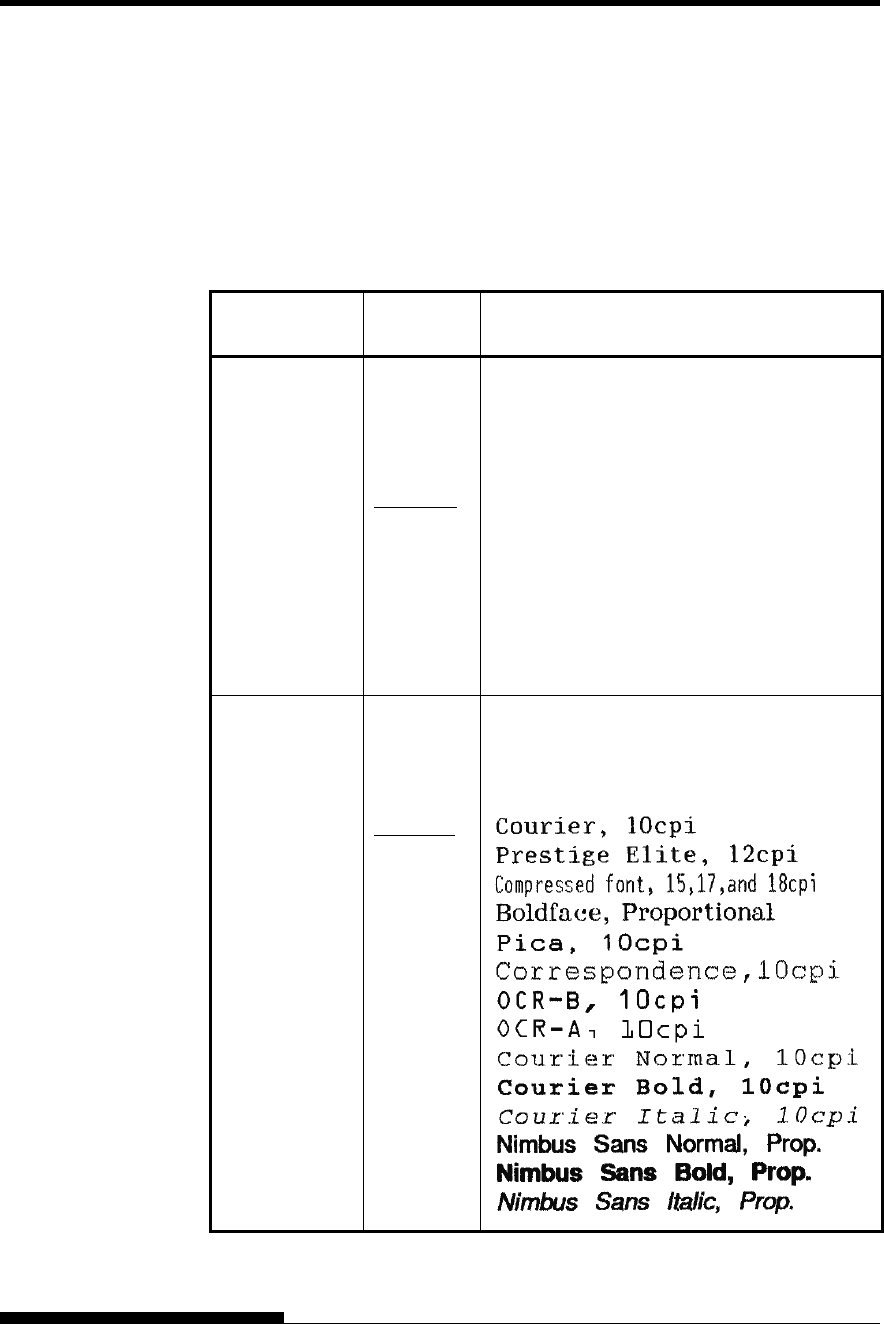
USING SETUP MODE
5-14 User's Manual
Table 5.3 MENU1 and MENU2 Items and Options
NOTES:
• Underlined options are the factory defaults.
• Asterisks identify items and options that differ for the IBM XL24E
and Epson ESC/P2 emulations. The notes are defined at the end of
the table.
MENU1 and
MENU2 Items
Options Description
<EMULATE> Select the same emulation as is selected in
your software. See the section Selecting an
Emulation in Chapter 2 for information on
selecting an emulation.
DPL24C+ Fujitsu DL-series printers
(DPL24C PLUS command set)
XL24E
ESC/P2
IBM Proprinter XL24E printers Epson printers
using the ESC/P2 command set
NOTE: When you change the emulation, all
MENU1 or MENU2 options are reset to the
factory defaults for that emulation.
<FONT>
COUR 10
PRSTG12
COMPRSD
BOLDFCE
PICA 10
CORRESP
OCR-B
OCR-A
COUR-N
COUR-B
COUR-I
N.SAN-N
N.SAN-B
N.SAN-I
For each of the following fonts, the
recommended pitch settings are given after the
font name. When you change the font, be sure
to also change the pitch, if required.
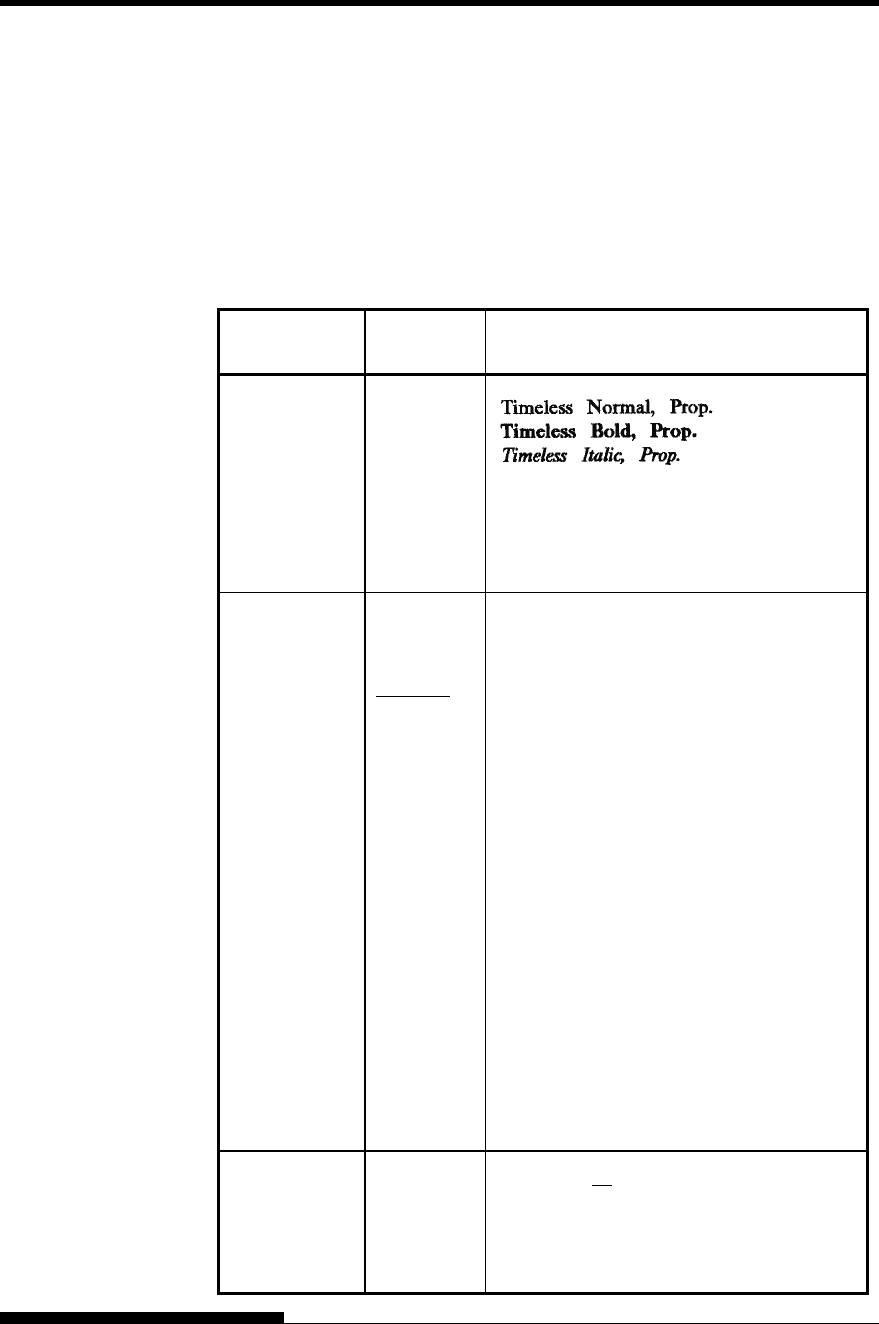
USING SETUP MODE
User's Manual 5-15
Table 5.3 MENU1 and MENU2 Items and Options (Cont.)
NOTES:
• Underlined options are the factory defaults.
• Asterisks identify items and options that differ for the IBM XL24E
and Epson ESC/P2 emulations. The notes are defined at the end of
the table.
MENU1 and
MENU2 Items
Options Description
<FONT>
(continued)
TIMLS-N
TIMLS-B
TIMLS-I
DOWNLD# Font 0 or font 1 in the printer’s download
RAM
See Appendix F for font examples.
<QUALITY> Select the print quality that most often meets
your needs.
LETTER Letter print quality. This option provides the
highest resolution but the slowest print
speed. It cannot be used with the
compressed font.
REPORT Report print quality. This option provides
lower resolution than letter quality, but at
twice the speed. If you want only the double
speed, regardless of fonts, use the
correspondence font. The quality of the
correspondence font is higher than that of
report.
DRAFT Regular draft print quality. This option
provides lower resolution than report
quality, but at 3.2 times letter speed.
HI-DRFT High-speed draft print quality. This option
provides lower resolution than draft quality,
but at 3.5 times letter speed.
<PITCH> ## CPI 2.5, 3, 5, 6, 10, 12, 15, 17, 18, or 20 cpi
(characters per horizontal inch)
PROP SP Proportional spacing (1/12 inch per
character space)
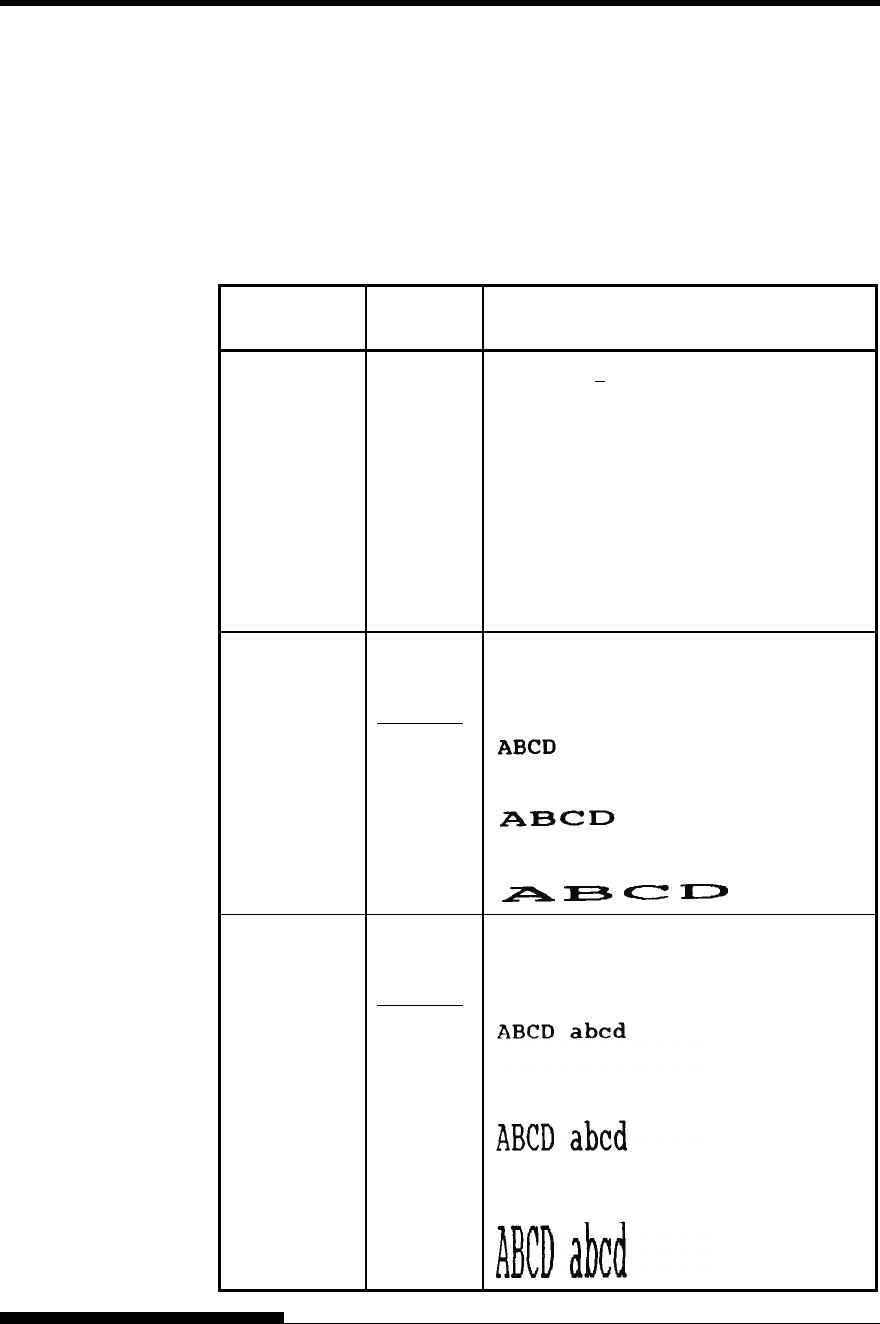
USING SETUP MODE
5-16 User's Manual
Table 5.3 MENU1 and MENU2 Items and Options (Cont.)
NOTES:
• Underlined options are the factory defaults.
• Asterisks identify items and options that differ for the IBM XL24E
and Epson ESC/P2 emulations. The notes are defined at the end of
the table.
MENU1 and
MENU2 Items
Options Description
<LINE SP> ## LPI 1, 2, 3, 4, 5, 6, 7, or 8 lpi
(lines per vertical inch)
6 lpi 3 lpi (double spacing)
ABCD ABCD
ABCD
ABCD ABCD
ABCD
ABCD ABCD
ABCD
<CHAR-W> Change also the pitch 2 TIMES or 4 TIMES
is selected.
NORMAL Standard character width
2 TIMES Double character width
4 TIMES
(*1)
Quadruple character width
<CHAR-H> Change also the line spacing if 2 TIMES or 4
TIMES is selected.
NORMAL Standard character height
2 TIMES Double character height
4 TIMES
(*1)
Quadruple character height
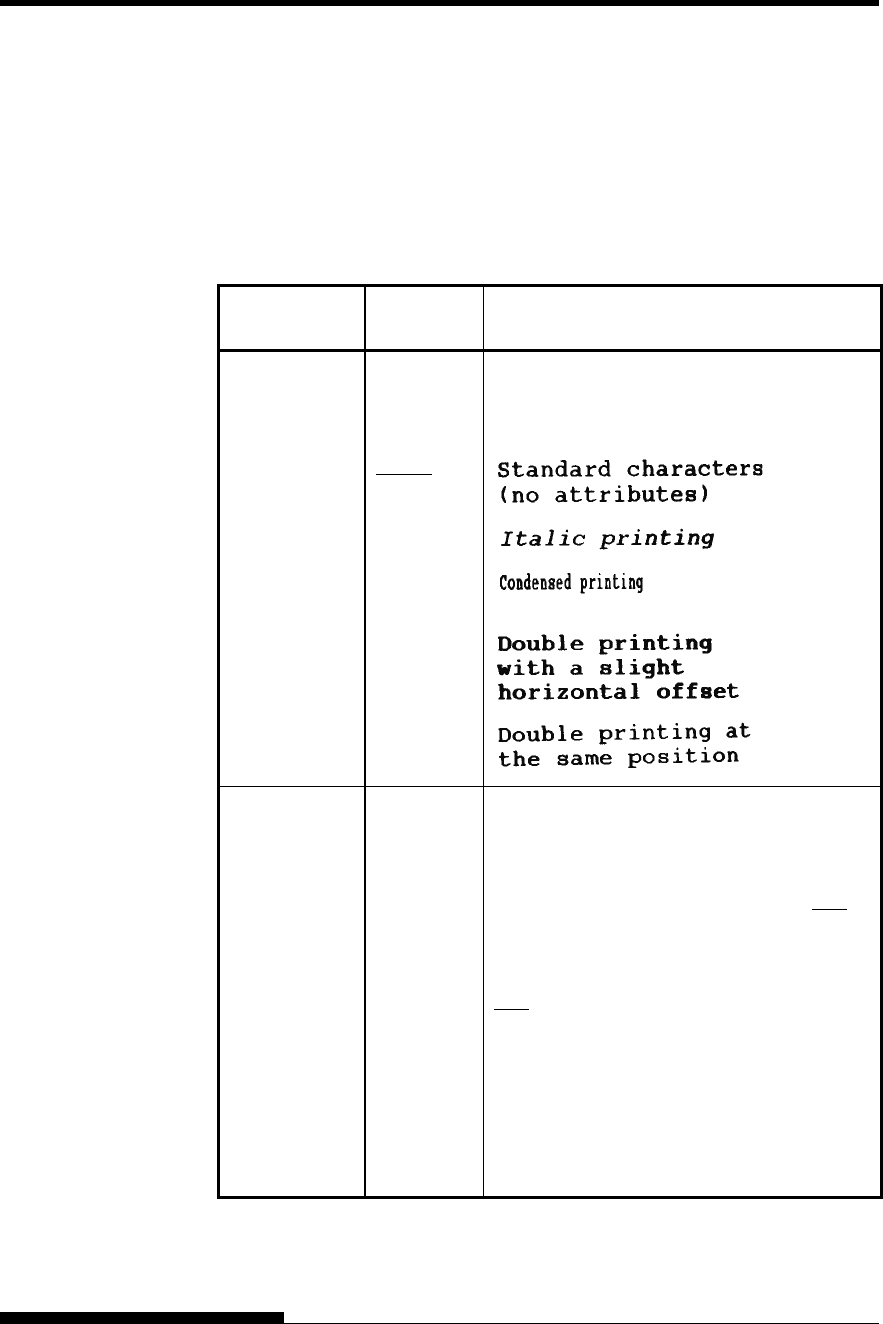
USING SETUP MODE
User's Manual 5-17
Table 5.3 MENU1 and MENU2 Items and Options (Cont.)
NOTES:
• Underlined options are the factory defaults.
• Asterisks identify items and options that differ for the IBM XL24E
and Epson ESC/P2 emulations. The notes are defined at the end of
the table.
MENU1 and
MENU2 Items
Options Description
<ATTRIB> Selects an attribute to add emphasis to your
documents.
Only one attribute may be selected at a time.
NONE
ITALICS
CONDNSD
(*1)
SHADOW
BOLD
<PAGE LG> Specifies the length of the page in inches.
## IN
For DPL24C PLUS and IBM XL24E
emulations:
3.0, 3.5, 4.0, 5.0, 5.5, 6.0, 7.0, 8.0, 8.5, 11.0
(letter size), 11.6 (A4 size), 12.0, 14.0, 18.0
inches, or LINE
For Epson ESC/P2 emulation: 4.0, 4.5, 5.0, ...,
11.0, 11.5, ..., 22.0 inches
LINE
Selecting the page length by specifying
number of lines per page (default: 66 lines per
page) Selecting this option displays the <PG
LX10> and <PG LX1>. Use in combination
the <PG LX10> to set the tens value of the
lines-per-page setting, and the <PG LX1> to
set the ones value of the lines-per-page setting.
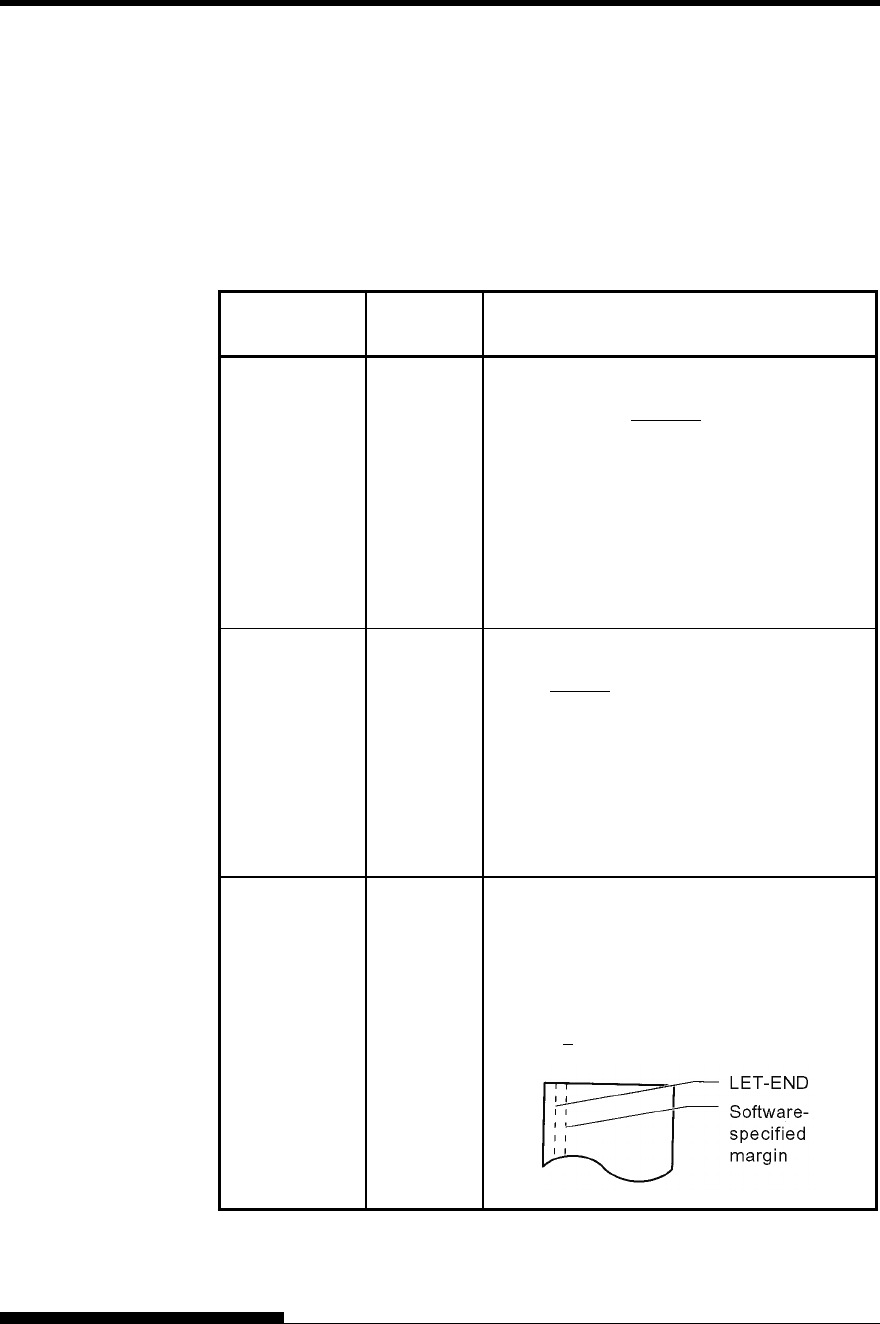
USING SETUP MODE
5-18 User's Manual
Table 5.3 MENU1 and MENU2 Items and Options (Cont.)
NOTES:
• Underlined options are the factory defaults.
• Asterisks identify items and options that differ for the IBM XL24E
and Epson ESC/P2 emulations. The notes are defined at the end of
the table.
MENU1 and
MENU2 Items
Options Description
<PG LX10> Tens value
setting for
setting
number of
lines per
page
0 LINE, 10 LINE, 20 LINE, 30 LINE 40
LINE, 50 LINE, 60 LINE, 70 LINE 80 LINE,
90 LINE
• The LINE setting depends on the line
spacing setting 'LINE SP'.
• When 0 LINE is set, the line spacing
value is 11.0 IN (only when both 'PG
LX10' = '0 LINE' and 'PG LX1' = '0
LINE' are set).
<PG LX1> Ones value
setting for
setting
number of
lines per
page
0 LINE, 1 LINE, 2 LINE, 3 LINE 4 LINE, 5
LINE, 6 LINE, 7 LINE 8 LINE, 9 LINE
• The LINE setting depends on the line
spacing setting 'LINE SP'.
• When 0 LINE is set, the line spacing
value is 11.0 IN (only when both 'PG
LX10' = '0 LINE' and 'PG LX1' = '0
LINE' are set).
<LFT-END> Specifies the print start column for changing
the left margin. Printing starts at the position
given by this column plus your software-
specified left margin.
## COLM Column 1, 2, 3, ..., 41
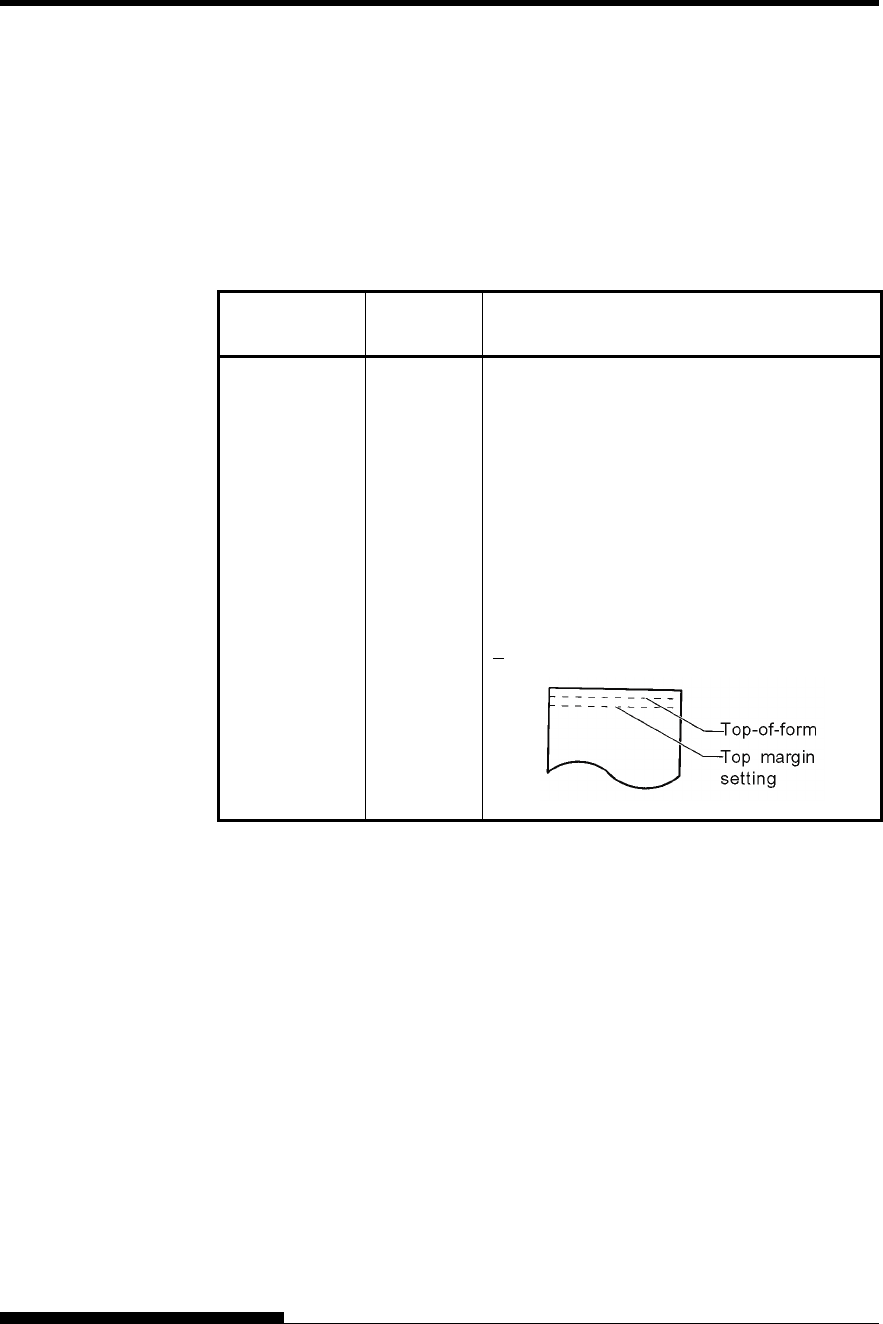
USING SETUP MODE
User's Manual 5-19
Table 5.3 MENU1 and MENU2 Items and Options (Cont.)
NOTES:
• Underlined options are the factory defaults.
• Asterisks identify items and options that differ for the IBM XL24E
and Epson ESC/P2 emulations. The notes are defined at the end of
the table.
MENU1 and
MENU2 Items
Options Description
<TOP-MRG> Specifies the number of space lines for the top
margin. The resultant blank space is the
<TOP-MRG> setting minus 1 line.
The total size of your top margin is the above
resultant value plus the following two settings:
top-of-form (default = 1 inch) and the
software-specified top margin. If you are using
software to specify the top margin, use the
default (1 line) for <TOP-MRG>.
## LINE 1, 2, 3,4, 5, 6, 7, 8, 9, or 10 lines
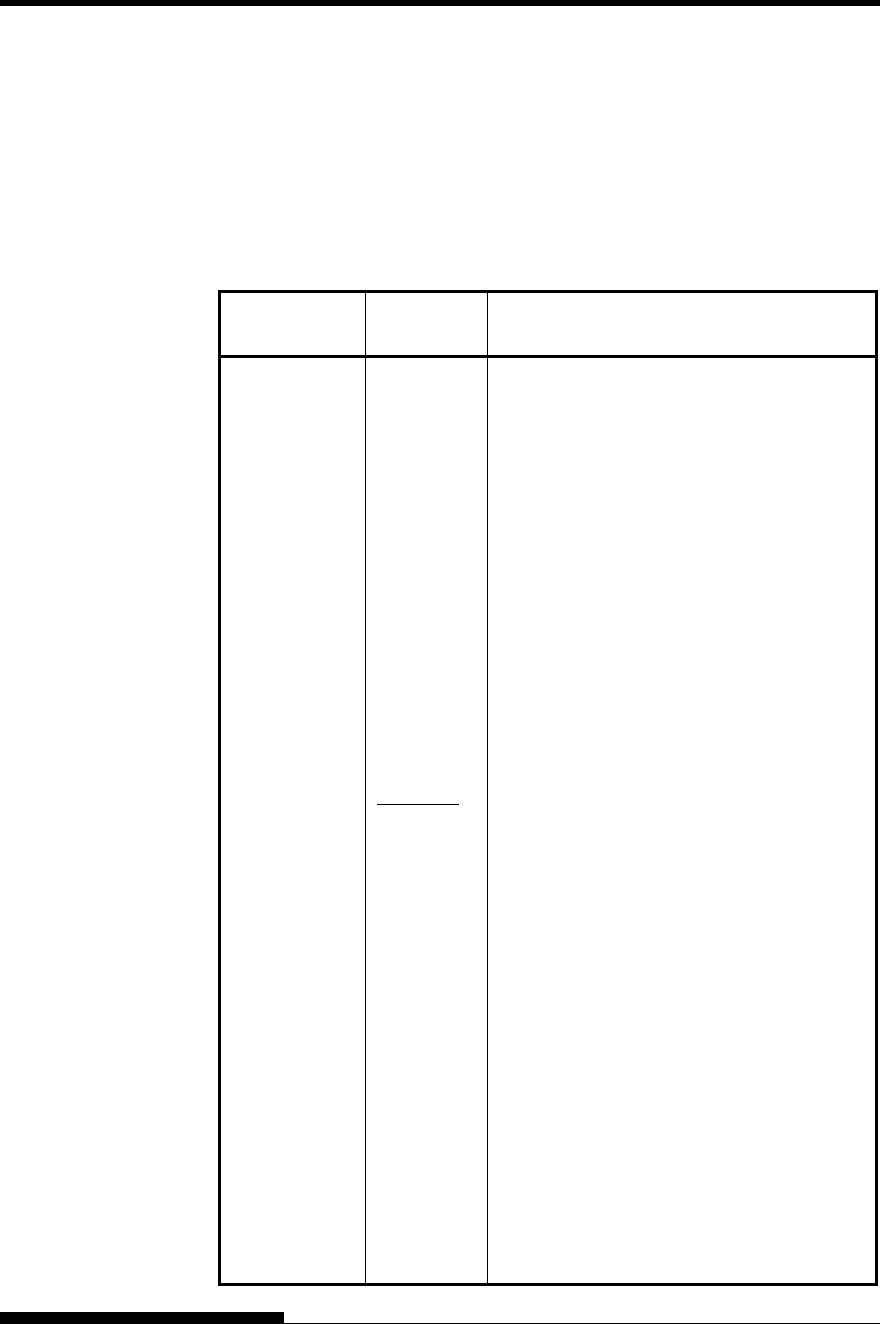
USING SETUP MODE
5-20 User's Manual
Table 5.3 MENU1 and MENU2 Items and Options (Cont.)
NOTES:
• Underlined options are the factory defaults.
• Asterisks identify items and options that differ for the IBM XL24E
and Epson ESC/P2 emulations. The notes are defined at the end of
the table.
MENU1 and
MENU2 Items
Options Description
<LANGUGE> Selects a language. Appendix E shows the
character sets for each language.
Two-pass means that diacritical marks are
printed separately from their letters and that
letters are printed without any reduction.
The first listing is common to all emulations.
Options specific to each emulation are
skipped. See the subsequent listings (*2)
and(*3).
USA
American English
(Same as code page 437)
UK British English
GERMAN German
SWEDISH Swedish
PAGE437 Code page 437
PAGE850 Code page 850
PAGE860 Code page 860
PAGE863 Code page 863
PAGE865 Code page 865
ECMA94 ECMA 94
ISO8859 ISO 8859-1
PG852 Code page 852
PG852-T Code page 852 two-pass
PG855 Code page 855
PG866 Code page 866
HUNGARY Hungarian
HUNG-T Hungarian two-pass
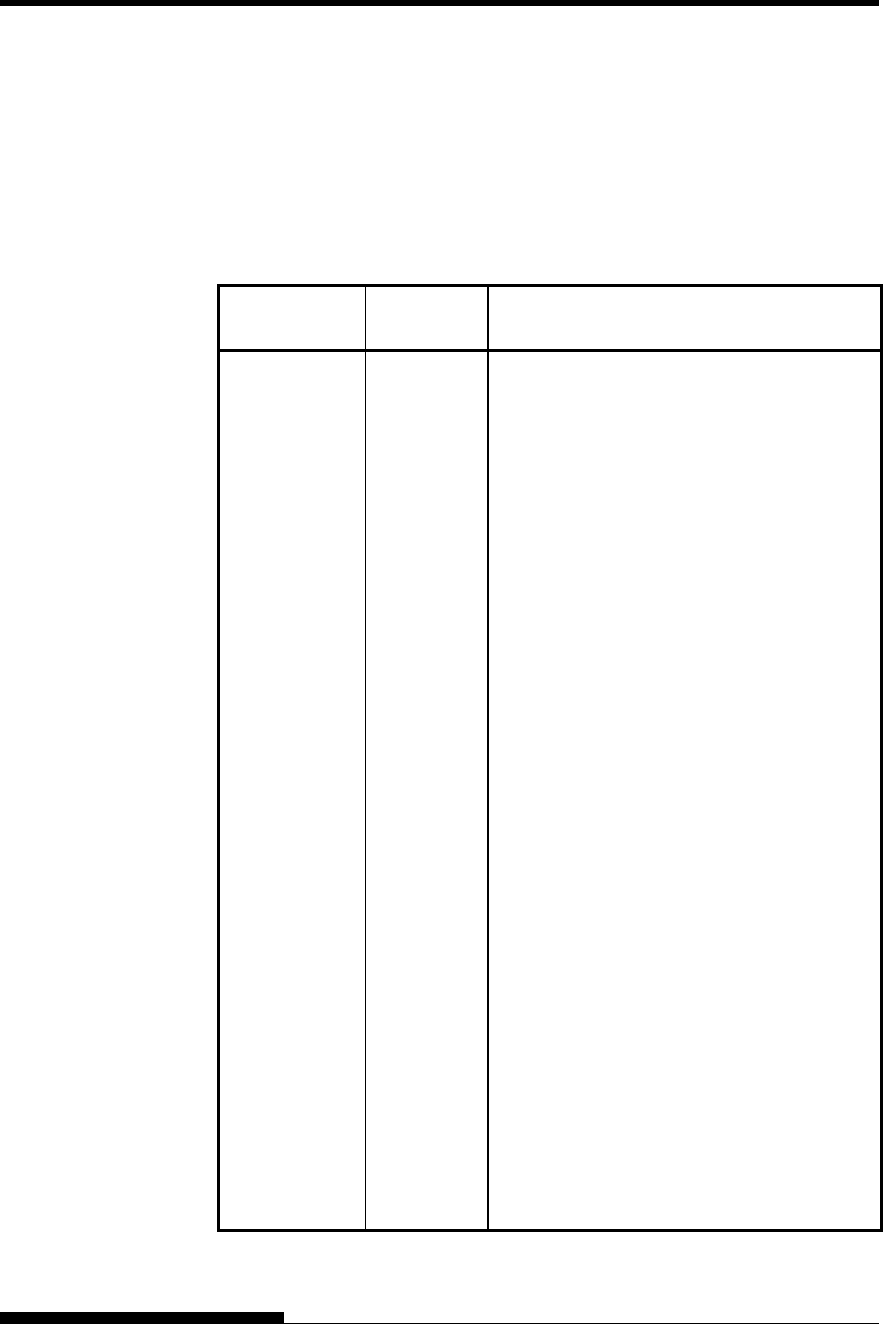
USING SETUP MODE
User's Manual 5-21
Table 5.3 MENU1 and MENU2 Items and Options (Cont.)
NOTES:
• Underlined options are the factory defaults.
• Asterisks identify items and options that differ for the IBM XL24E
and Epson ESC/P2 emulations. The notes are defined at the end of
the table.
MENU1 and
MENU2 Items
Options Description
SLOV Slovenian <LANGUGE>
(continued) SLOV-T Slovenian two-pass
POLISH Polish
POLSH-T Polish two-pass
MAZOWIA Mazowian
MAZOW-T Mazowian two-pass
LATIN2 Latin 2
LATIN2-T Latin 2 two-pass
KAMENIC Kamenicky
KAMEN-T Kamenicky two-pass
TURKY Turkish
TURKY-T Turkish two-pass
CYRILIC Cyrillic
IBM437 IBM 437
IBM851 IBM 851
ELOT928 ELOT 928
PG-DHN Code page DHN
LATIN-P Latin Polish
ISO-LTN ISO Latin
LITHUA1 Lithuanian1
LITHUA2 Lithuanian2
MIK
MACEDON Macedonian
PG-MAC
ELOT927
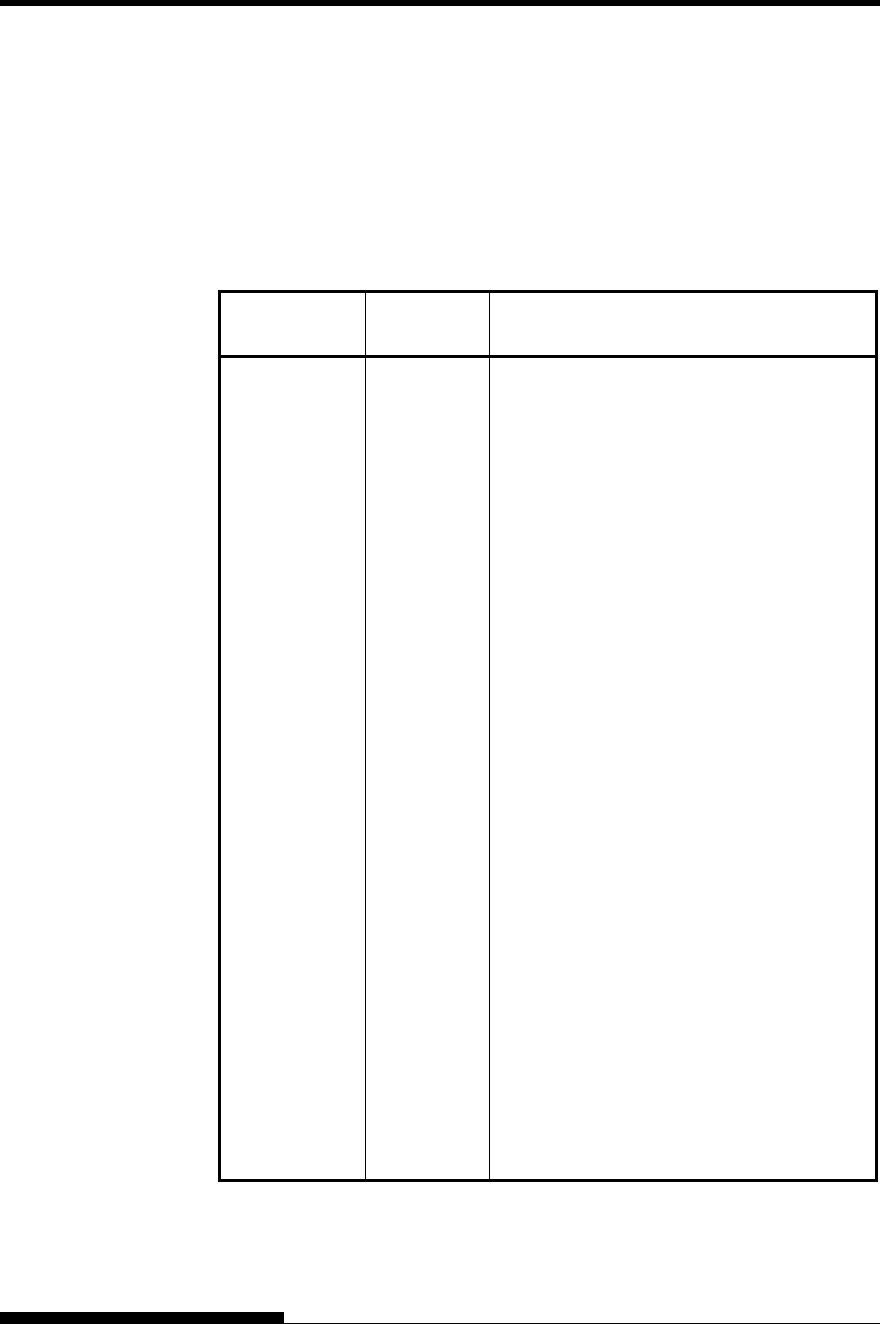
USING SETUP MODE
5-22 User's Manual
Table 5.3 MENU1 and MENU2 Items and Options (Cont.)
NOTES:
• Underlined options are the factory defaults.
• Asterisks identify items and options that differ for the IBM XL24E
and Epson ESC/P2 emulations. The notes are defined at the end of
the table.
MENU1 and
MENU2 Items
Options Description
ABG
<LANGUGE>
(continued) ABY
DEC GR
HBR-OLD
PG862
HBR-DEC
GREEK 11
ISO-TUK ISO Turkish
RUSCII
LATIN-9
WCP1250 Windows-1250
WCP1251 Windows-1251
WCP1252 Windows-1252
(*2)
FRENCH French
ITALIAN Italian
SPANISH Spanish
DANISH1 Danish I
DANISH2 Danish II
FINNISH Finnish
NORWEGN Norwegian
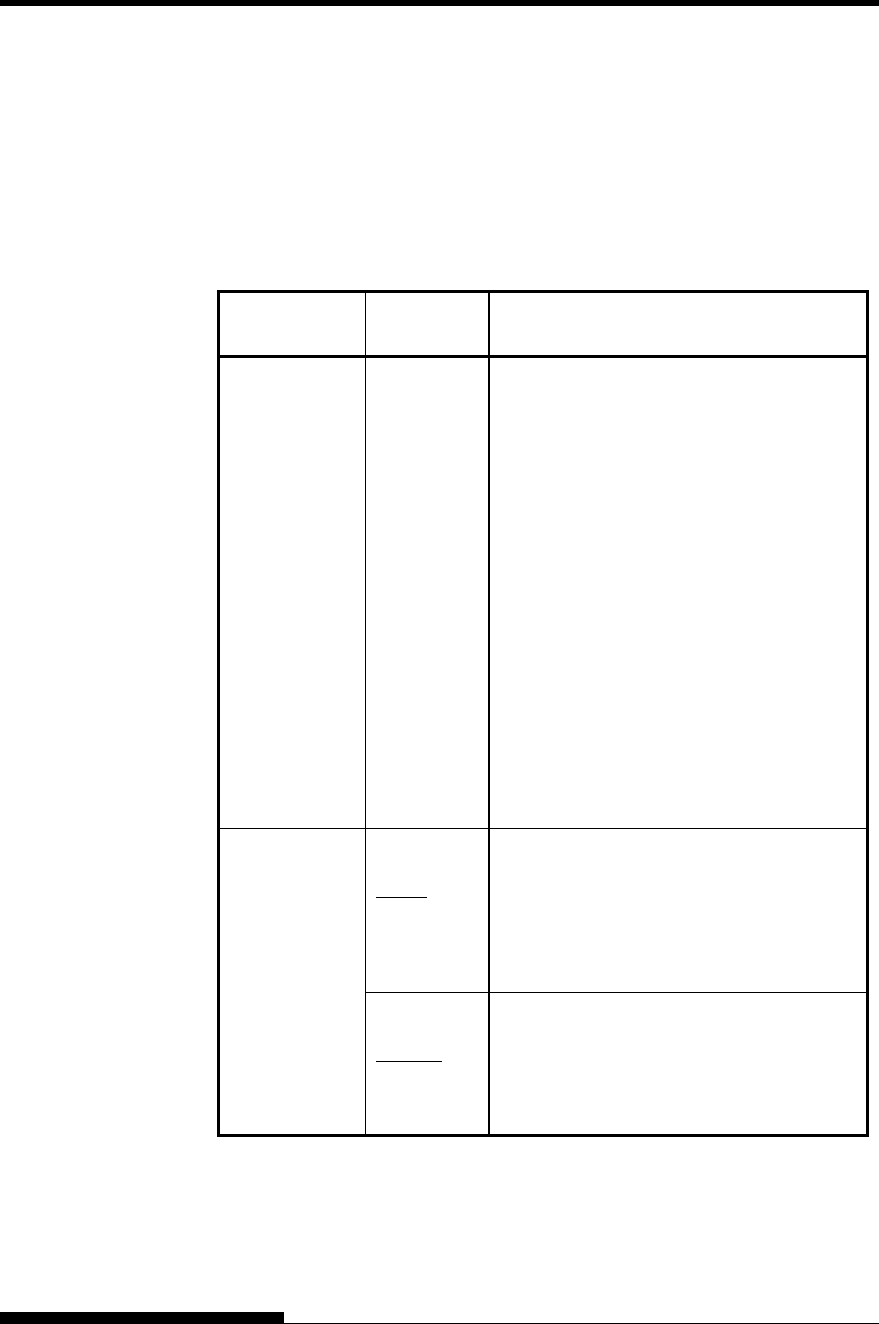
USING SETUP MODE
User's Manual 5-23
Table 5.3 MENU1 and MENU2 Items and Options (Cont.)
NOTES:
• Underlined options are the factory defaults.
• Asterisks identify items and options that differ for the IBM XL24E
and Epson ESC/P2 emulations. The notes are defined at the end of
the table.
MENU1 and
MENU2 Items
Options Description
(*3)
<LANGUGE>
(continued) DANISH1 Danish I
ITALIAN Italian
SPANSH1 Spanish I
SPANSH2 Spanish II
JAPAN Japanese
NORWEGN Norwegian
LATIN A Latin American
FRENCH French
DANISH2 Danish II
KOREA Korea
LEGAL Legal
<CHR-SET> SET 1 IBM character set 1
SET 2 IBM character set 2
If a downloaded (soft) font is used, the
character set for that font overrides the
<CHR-SET> setting.
(*3)
ITALIC Italic characters are available.
GRAPHIC
Graphics characters (ruled lines) are
available.
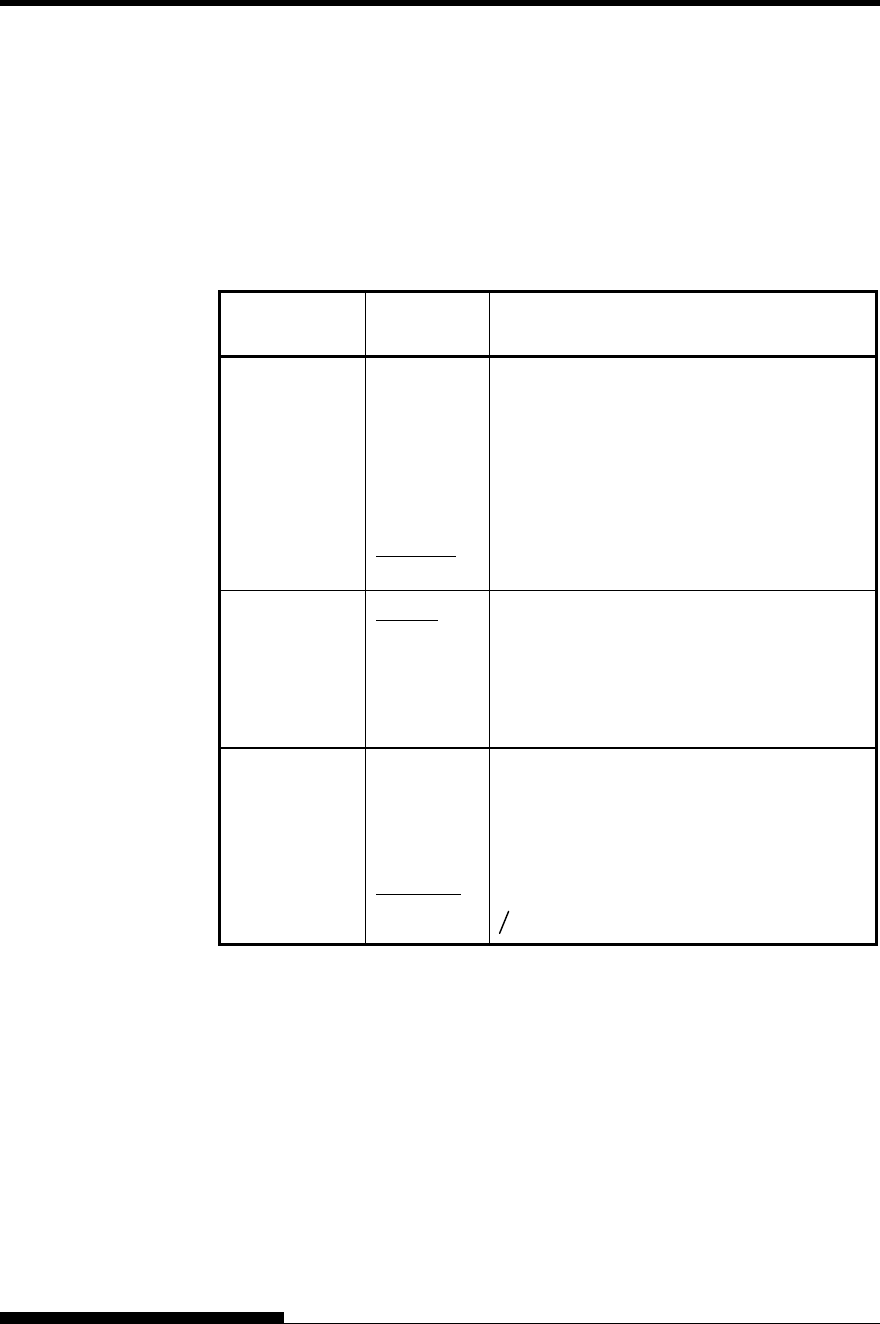
USING SETUP MODE
5-24 User's Manual
Table 5.3 MENU1 and MENU2 Items and Options (Cont.)
NOTES:
• Underlined options are the factory defaults.
• Asterisks identify items and options that differ for the IBM XL24E
and Epson ESC/P2 emulations. The notes are defined at the end of
the table.
MENU1 and
MENU2 Items
Options Description
For continuous forms, this option specifies
whether an inch is skipped around the
perforation. If you are not using software to
specify a bottom margin, select SKIP when
using thicker, multipart forms.
<PRF-SKP>
SKIP One inch is skipped around the perforation.
NO-SKIP The perforation is not skipped. Printing
continues in the bottom margin of the page.
<WIDTH> 13.6 IN 13.6-inch page width
11.4 IN 11.4-inch page width
11.0 IN 11-inch page width
8.0 IN 8-inch page width
<ZEROFNT>
(*2)
Specifies whether to print the number zero
with a slash. This is useful to distinguish the
capital letter “O” from the number “0”.
Invalid for some soft fonts.
NO-SLSH 0
SLASH 0
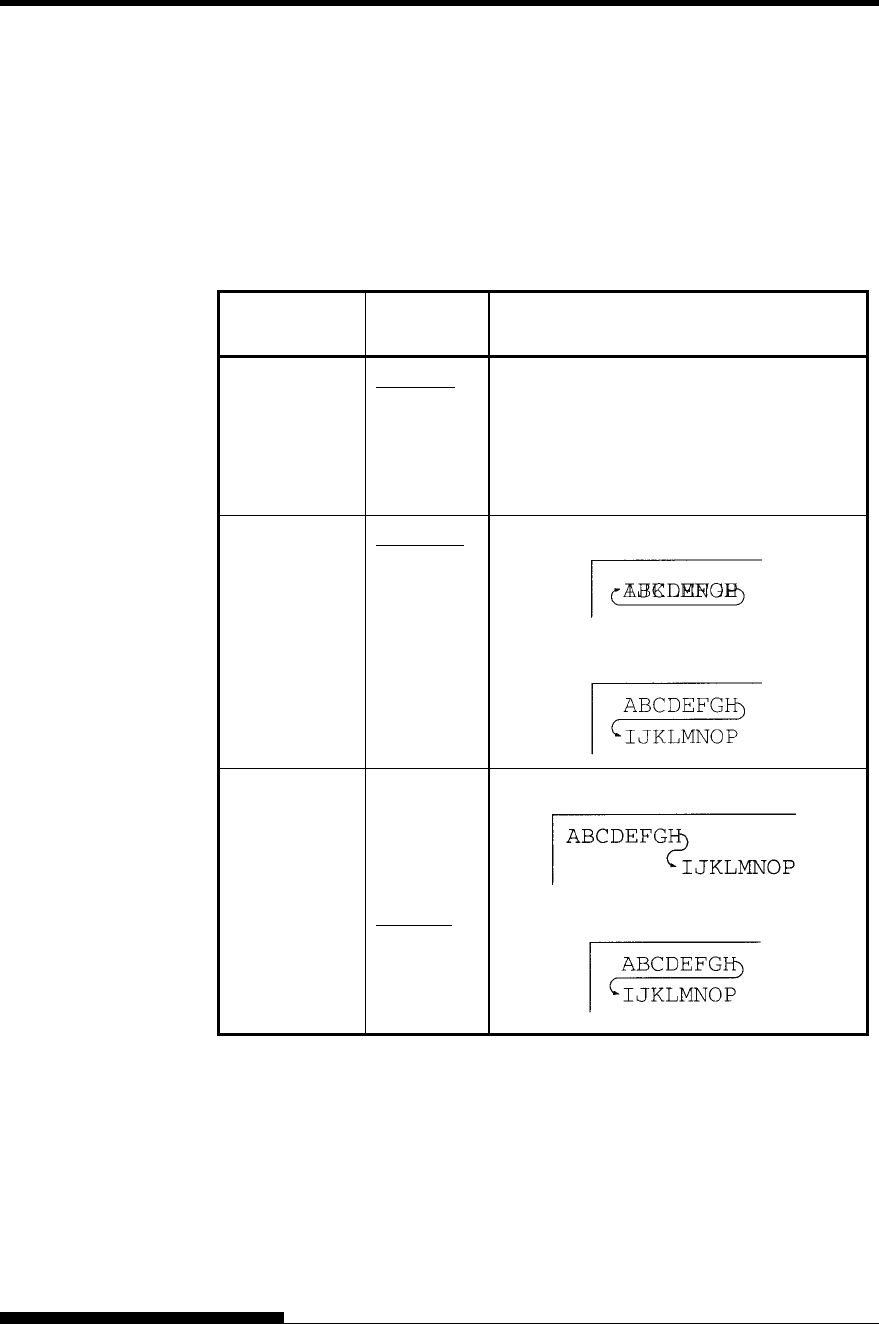
USING SETUP MODE
User's Manual 5-25
Table 5.3 MENU1 and MENU2 Items and Options (Cont.)
NOTES:
• Underlined options are the factory defaults.
• Asterisks identify items and options that differ for the IBM XL24E
and Epson ESC/P2 emulations. The notes are defined at the end of
the table.
MENU1 and
MENU2 Items
Options Description
ENABLE Enables the DC1 and DC3 codes.
Any data received between DC3 and the
next DC1 is ignored.
<DC3-CDE>
(*4)
DISABLE Disables the DC1 and DC3 codes. These
codes are then ignored.
<CR-CODE> CR ONLY No line feed is added to a carriage return.
CR & LF A line feed is added to each carriage return.
<LF-CODE>
(*3)
LF ONLY No carriage return is added to a line feed.
LF & CR A carriage return is added to each line feed.
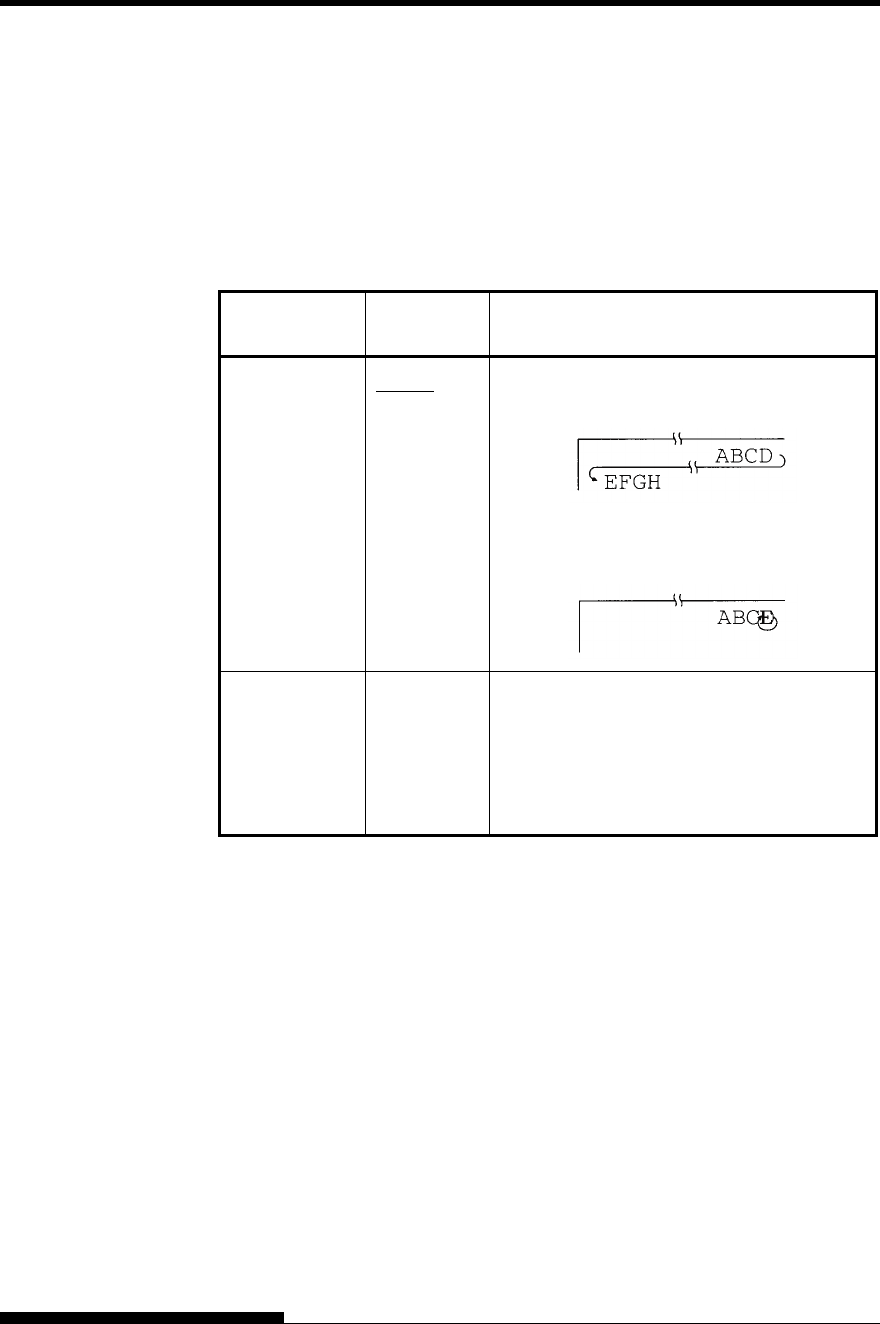
USING SETUP MODE
5-26 User's Manual
Table 5.3 MENU1 and MENU2 Items and Options (Cont.)
NOTES:
• Underlined options are the factory defaults.
• Asterisks identify items and options that differ for the IBM XL24E
and Epson ESC/P2 emulations. The notes are defined at the end of
the table.
MENU1 and
MENU2 Items
Options Description
WRAP End-of-line wrap. Causes a carriage return
plus a line feed.
<RGHTEND>
OVR-PRT Characters are overprinted at the end of a
line.
<==END==> Indicates the end of MENU1 items. Press
the T button to print the first item,
<EMULATE>. Press the S button to print
the previous item, <RGHTEND>. Press the
ONLINE button to reprint the
<<FUNCTION>> menu.
*1 Unavailable in the IBM XL24E emulation
*2 Unavailable in the Epson ESC/P2 emulations
*3 Available only in the Epson ESC/P2 emulations
*4 Available only in the DPL24C+ emulation
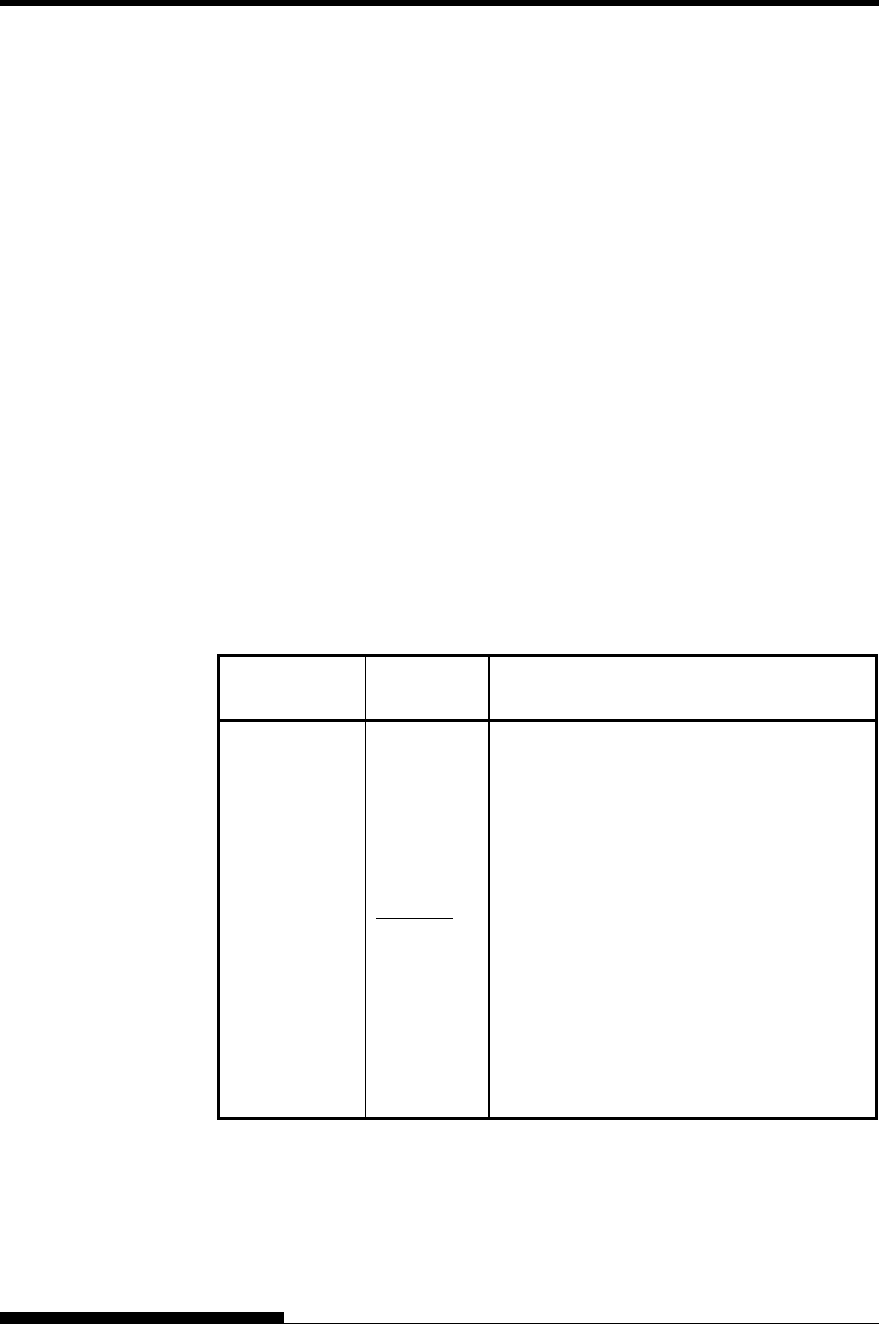
USING SETUP MODE
User's Manual 5-27
Resetting MENU1 and MENU2
To reset the factory defaults for both MENU1 and MENU2, select the
DEFAULT/INITIAL function. For more information, see the section
Resetting Defaults later in this chapter. The DEFAULT function cannot
reset those options which are handled by the HARDWRE, ADJUST,
CONFIG, and GAP-ADJ functions. The INITIAL function can reset
those options which are handled by the HARDWRE, ADJUST,
CONFIG, and GAP-ADJ functions.
The HARDWRE function defines the printer’s hardware operating
conditions. If you are using the optional RS-232C serial interface, the
serial interface options must be set properly for the printer to function
correctly with your system hardware.
Table 5.4 describes the HARDWRE items and options . Items are listed
in the order in which they are printed. The procedure for changing the
hardware options is described after Table 5.4.
Table 5.4 HARDWRE Items and Options
NOTE: Underlined options are the factory defaults.
HARDWRE
Items
Options Description
<PPR-OUT> Specifies how the printer responds when you
run out of paper.
CNTONLY The printer detects paper-out only for
continuous forms. Printing stops and the
PAPER OUT indicator lights red.
DETECT The printer detects paper-out for both
continuous forms and single sheets. Printing
stops and the PAPER OUT indicator lights
red.
IGNORE The printer ignores paper-out for both
continuous forms and single sheets. Printing
continues until no more data remains. No
PAPER OUT warning is displayed.
CHANGING
HARDWARE
OPTIONS
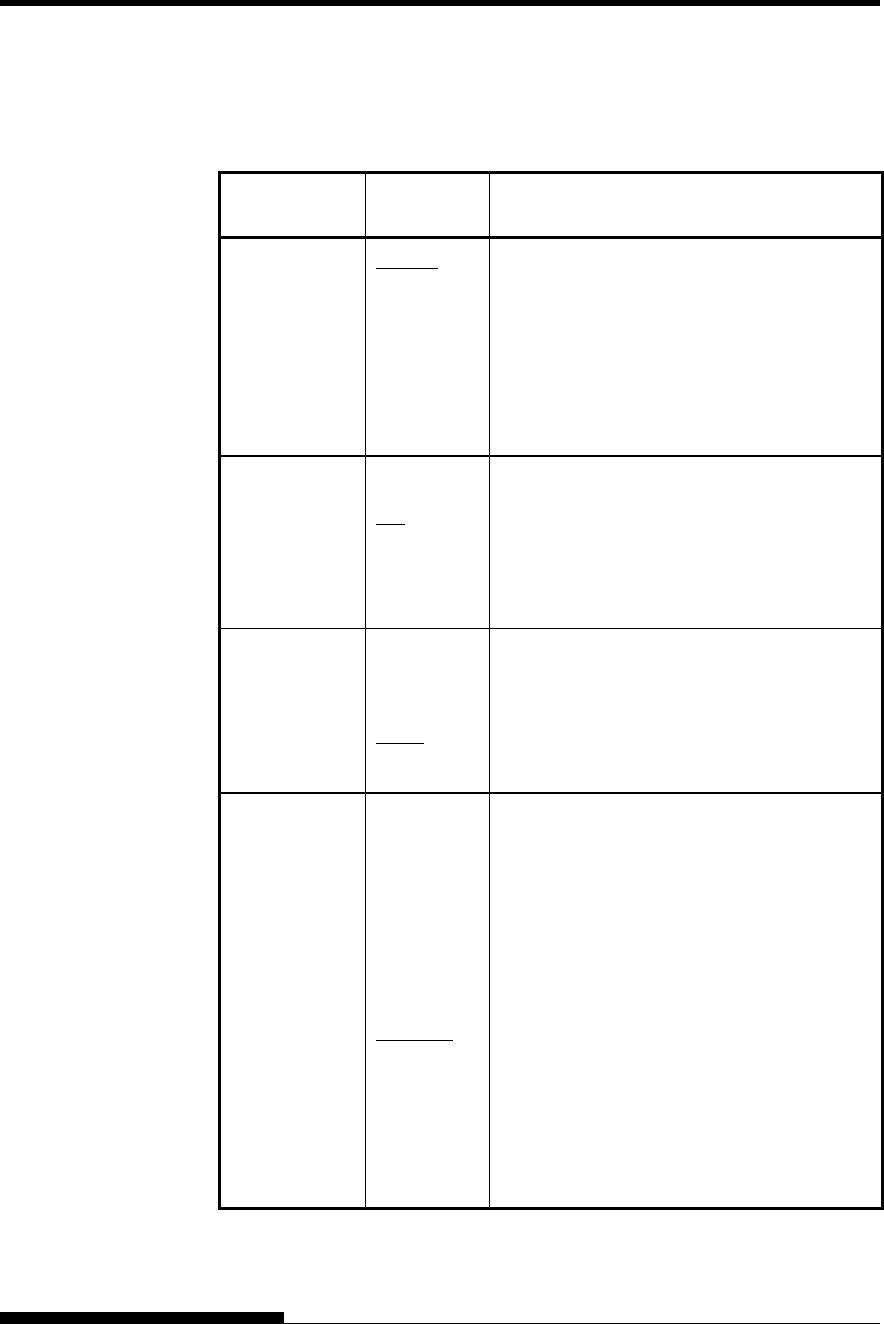
USING SETUP MODE
5-28 User's Manual
Table 5.4 HARDWRE Items and Options (Cont.)
NOTE: Underlined options are the factory defaults.
HARDWRE
Items
Options Description
<PRT-DIR> BI-DIR Bidirectional printing. The printer prints in
either direction while seeking the next print
direction for a shorter print time.
UNI-DIR
Unidirectional printing. Unidirectional
printing is used for printing vertical lines in
tables even if vertical alignment is not
adjusted. Unidirectional printing is slower
than bidirectional printing.
<BUZZER> Enables or disables the printer status buzzer.
ON Buzzer on (recommended).
The printer beeps to indicate paperout or
other conditions.
OFF Buzzer off under any conditions.
<WORD-LG> To determine the required word length, refer
to your computer documentation. Select 8-
BIT to print bit image graphics.
8 BIT 8-bit word length (used by most computers)
7 BIT 7-bit word length (MSB = 0)
<BUFFER> Assigns buffer memory to input data and
downloaded font data.
Print buffer Download buffer
NONE 0 byte 128K bytes
256BYTE 256 bytes 127.75K bytes
2KBYTE 2K bytes 126K bytes
8KBYTE 8K bytes 120K bytes
24KBYTE 24K bytes 104K bytes
32KBYTE 32K bytes 96K bytes
96KBYTE 96K bytes 32K bytes
128KBYT 128K bytes 0K bytes
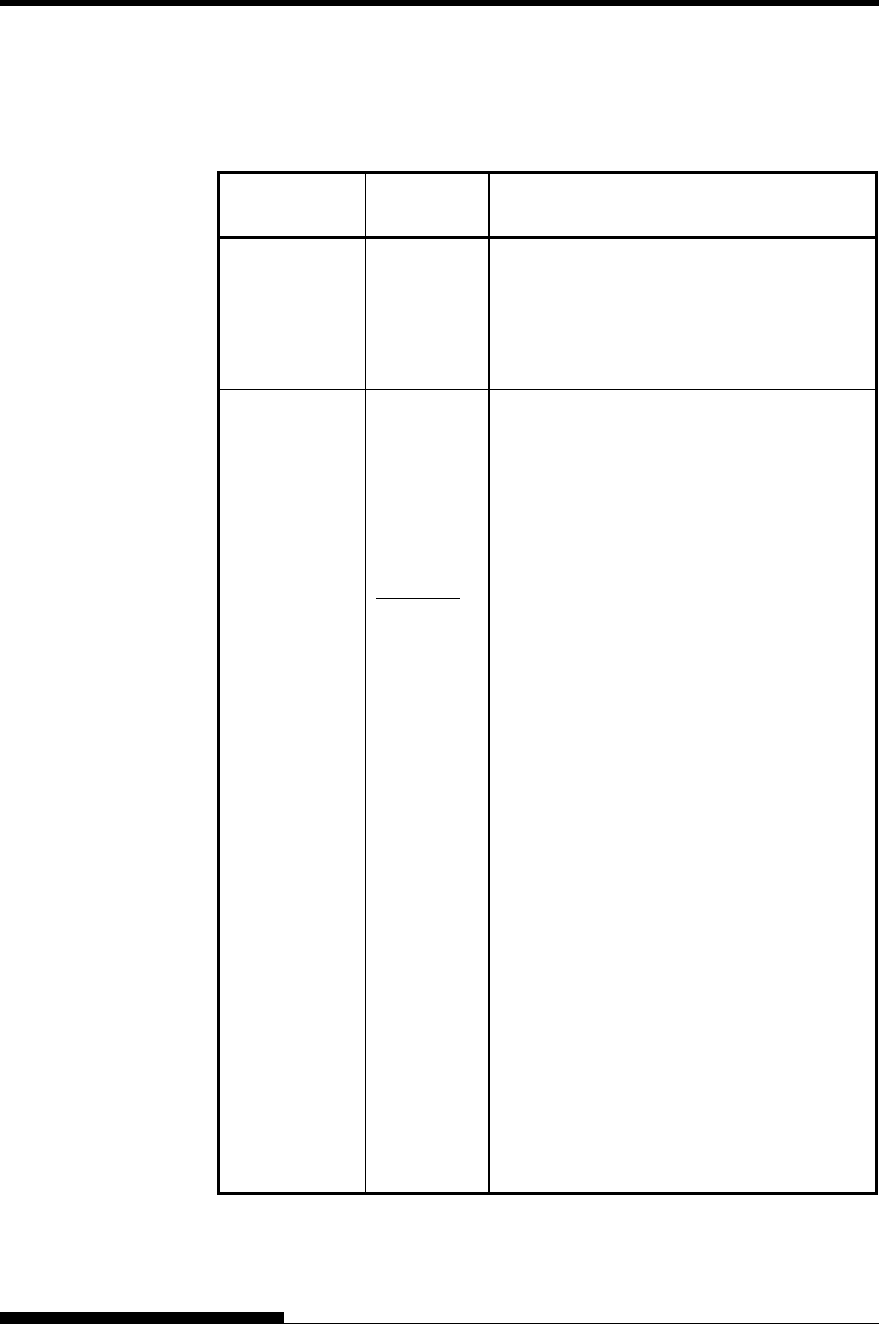
USING SETUP MODE
User's Manual 5-29
Table 5.4 HARDWRE Items and Options (Cont.)
NOTE: Underlined options are the factory defaults.
HARDWRE
Items
Options Description
<BUFFER>
(continued)
NOTE:
• 0BYTE option is recommended only
for graphics application.
• With 128KB selected, the printer
cannot accept any download font data.
<INTRFCE> Selects the type of the interface to the
computer.
PARALEL Centronics parallel interface
SERIAL RS-232C serial interface
USB USB interface
AUTO-2S Auto interface selection mode
AUTO-4S
AUTO-6S
• Both interfaces are ready for
communication.
AUTO10S
AUTO15S
• Specify the timing regarding the selected
interface as being inactive.
AUTO20S
To switch the interface to the optional LAN
interface, mount the LAN card with the setup
mode set to “AUTO-XS” or “AUTOXXS”
under “INTERFCE,” which in turn is under
“HARDWRE” The interface will
automatically switch to the optional LAN
interface.
To switch the interface to something other
than the optional LAN interface, do either of
the following:
• To return the setup mode to
“INTERFCE” under “HARDWRE,”
remove the LAN card.
• To switch the interface to a fixed
interface, set PARALEL,USB with the
LAN card mounted, and the setup mode
set to “INTERFCE” under
“HARDWRE.”
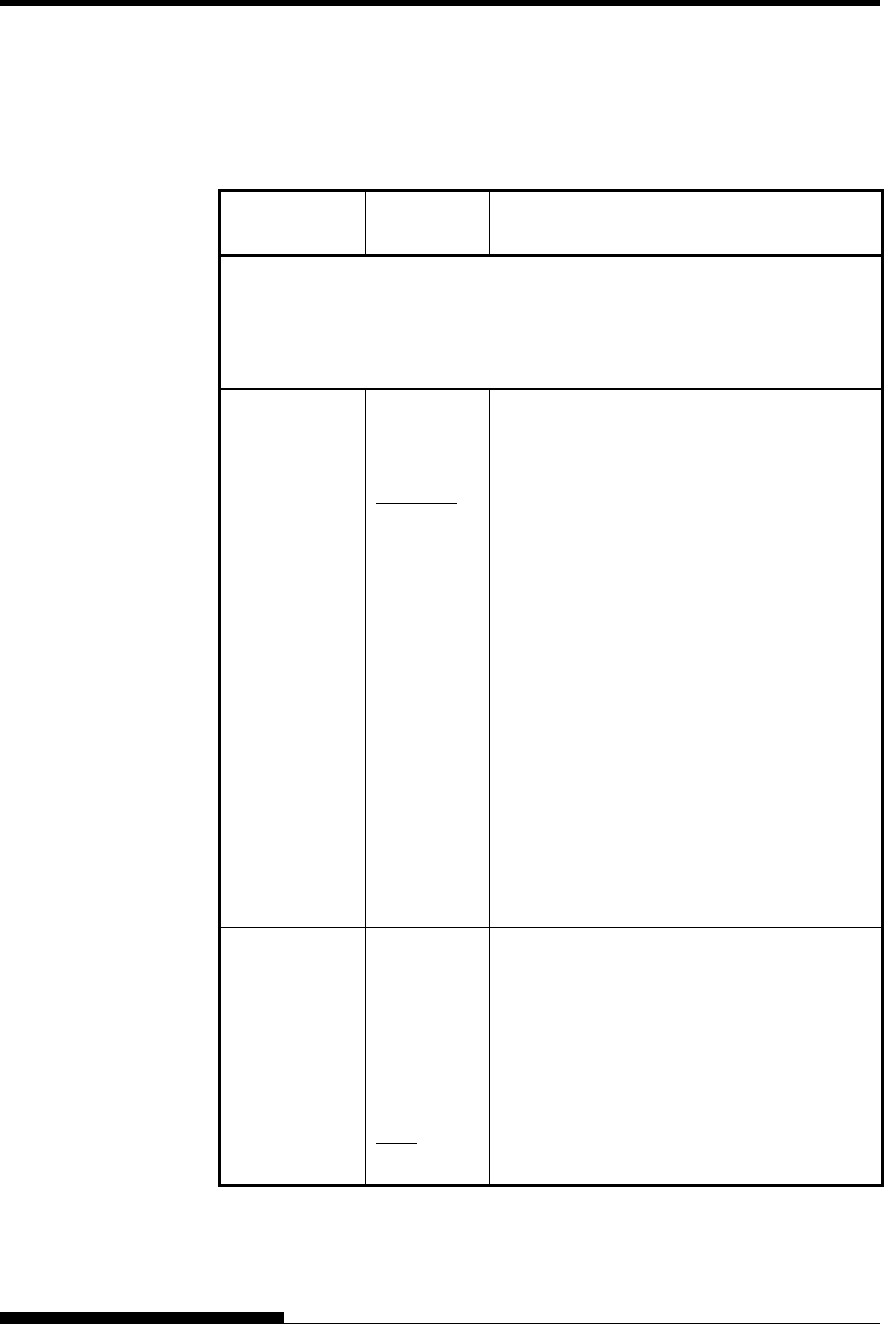
USING SETUP MODE
5-30 User's Manual
Table 5.4 HARDWRE Items and Options (Cont.)
NOTE: Underlined options are the factory defaults.
HARDWRE
Items
Options Description
Serial Interface or USB interface Items. The following <FORMAT> to
<DUPLEX> items are not printed when you select the PARALEL option for
the <INTRFCE> item. Be sure that the options selected on the printer are the
same as the options selected using your computer operating system or your
software. Refer to the documentation provided for your computer and software.
<FORMAT> Number
of data
bits
Parity bit Number of stop
bits
8NONE 1 8 None 1
8NONE 2 8 None 2
8EVEN 1 8 Even 1
8ODD 1 8 Odd 1
7EVEN 1 7 Even 1
7ODD 1 7 Odd 1
7MARK 1 7 Mark 1
7SPACE 1 7 Space 1
7EVEN 2 7 Even 2
7ODD 2 7 Odd 2
The data format also includes a start bit. The
mark is logical 1. The space is logical 0.
<BAUD-RT> 150
300
600
1200
2400
4800
9600
19200
The baud rate is in bps (bits per second).
Select the same baud rate as 600 used by your
computer or modem.
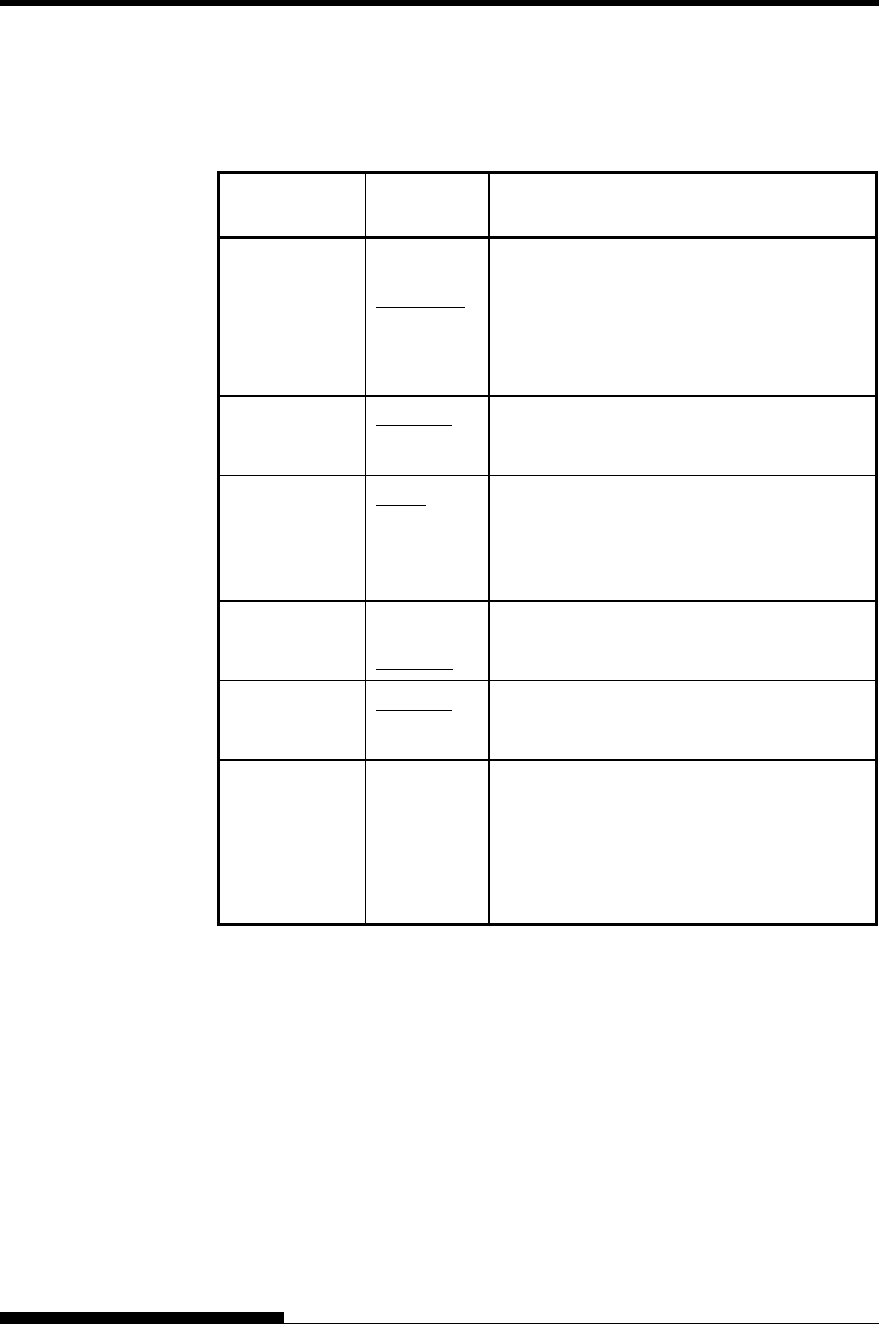
USING SETUP MODE
User's Manual 5-31
Table 5.4 HARDWRE Items and Options (Cont.)
NOTE: Underlined options are the factory defaults.
HARDWRE
Items
Options Description
<PROTOCL> Indicates data transmission protocol.
XON/XOF The DC1 and DC3 codes are used.
DTR The Data Terminal Ready signal is used.
REV-CHL The Reverse Channel signal is used.
<DSR> IGNORE DSR is ignored by the printer.
DETECT DSR is detected by the printer.
<DUPLEX> FULL Simultaneous data transmission occurs in
opposite directions.
HALF
Data transmission occurs in either direction,
but not simultaneously.
<CTS> IGNORE CTS is ignored by the printer.
DETECT CTS is detected by the printer.
<CD> IGNORE CD is ignored by the printer.
DETECT CD is detected by the printer.
<==END==> Indicates the end of the HARDWRE item
list. Press the T button to print the first item,
which is <PPR-OUT>.
Press the S button to print the previous item.
Press the ONLINE button to reprint the
<<FUNCTION>> menu.
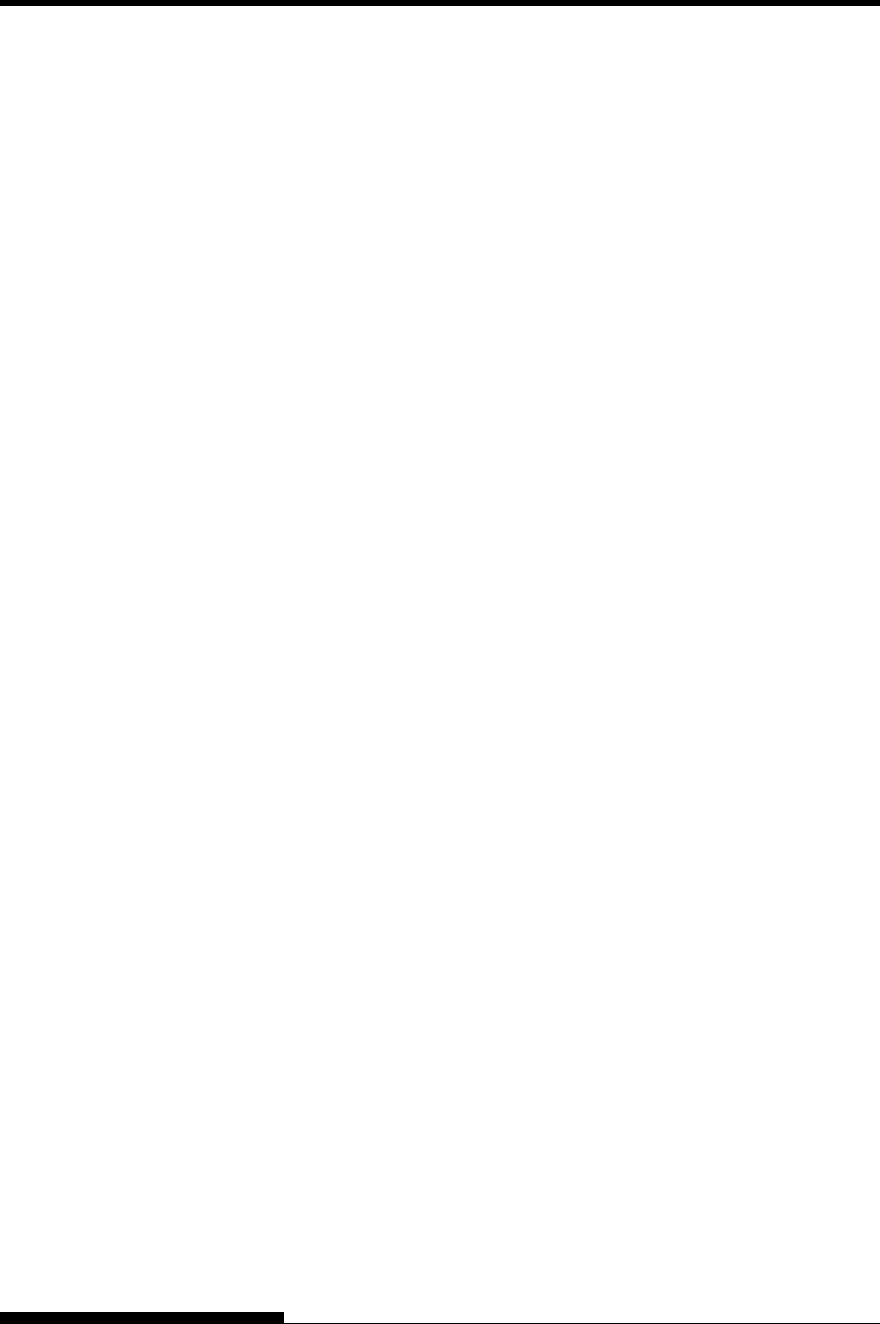
USING SETUP MODE
5-32 User's Manual
When you print using ruled paper, you often want to adjust the print
position so that the print sits properly on the ruled lines. The ADJUST
function allows you to:
• Set top-of-form position
• Fine-tune top-of-form position
• Fine-tune left print start column (left margin)
• Adjust for accumlative line spacing error in a page
The top edge of your paper is the physical top of the page. The logical
top of the page, as “understood” by the printer when loading paper, is
called the top-of-form. Printing starts at this position. Note that printing
actually starts at the position obtained by adding the following:
• Top-of-form, default = 1.8/6 inch (7.6mm)
• Top margin specified by your software
• Printer TOP-MRG (top margin setting), default = 1 line
Table 5.5 describes the ADJUST items and options. Items are listed in
the order they are printed. The procedure for changing top-of-form is
described after Table 5.5.
CHANGING PRINT
POSITION
ADJUSTMENT
OPTIONS
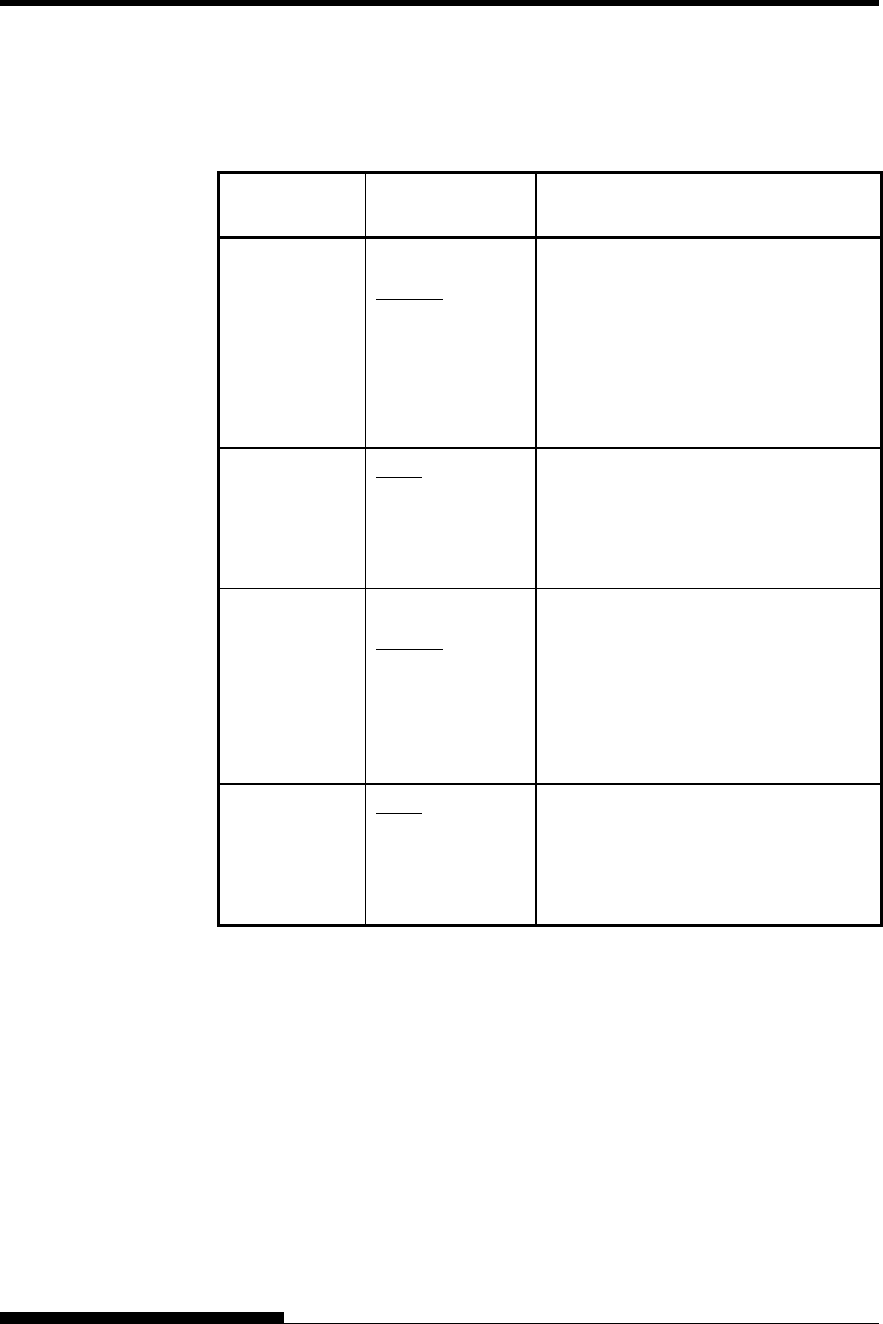
USING SETUP MODE
User's Manual 5-33
Table 5.5 ADJUST Items and Options
NOTE: Underlined options are the factory defaults.
HARDWRE
Items
Options Description
<FCNTORG> 1/6 IN
1.8/6 IN
:
6/6 IN
:
66/6 IN
Sets the top-of-form for front
continuous forms in increments of 1/6
inch (4.2 mm) from the physical top of
the page.
The default is recommended if your top
margin is not software-specified. A
setting of 1/6 inch is preferable when
your top margin is software-specified.
<FCNTFIN> 0/180, ..., 29/180 Fine-tunes the top-of-form position for
front continuous forms.
Increases top-of-form in increments of
1/180 inch
(0.14 mm).
<RCNTORG> 1/6 IN
1.8/6 IN
:
6/6 IN
:
66/6 IN
Sets the top-of-form for rear continuous
forms in increments of 1/6 inch (4.2
mm) from the physical top of the page.
The default is recommended if your top
margin is not software-specified. A
setting of 1/6 inch is preferable when
your top margin is software-specified.
<RCNTFIN> 0/180, ..., 29/180 Fine-tunes the top-of-form position for
rear continuous forms.
Increases top-of-form in increments of
1/180 inch
(0.14 mm).
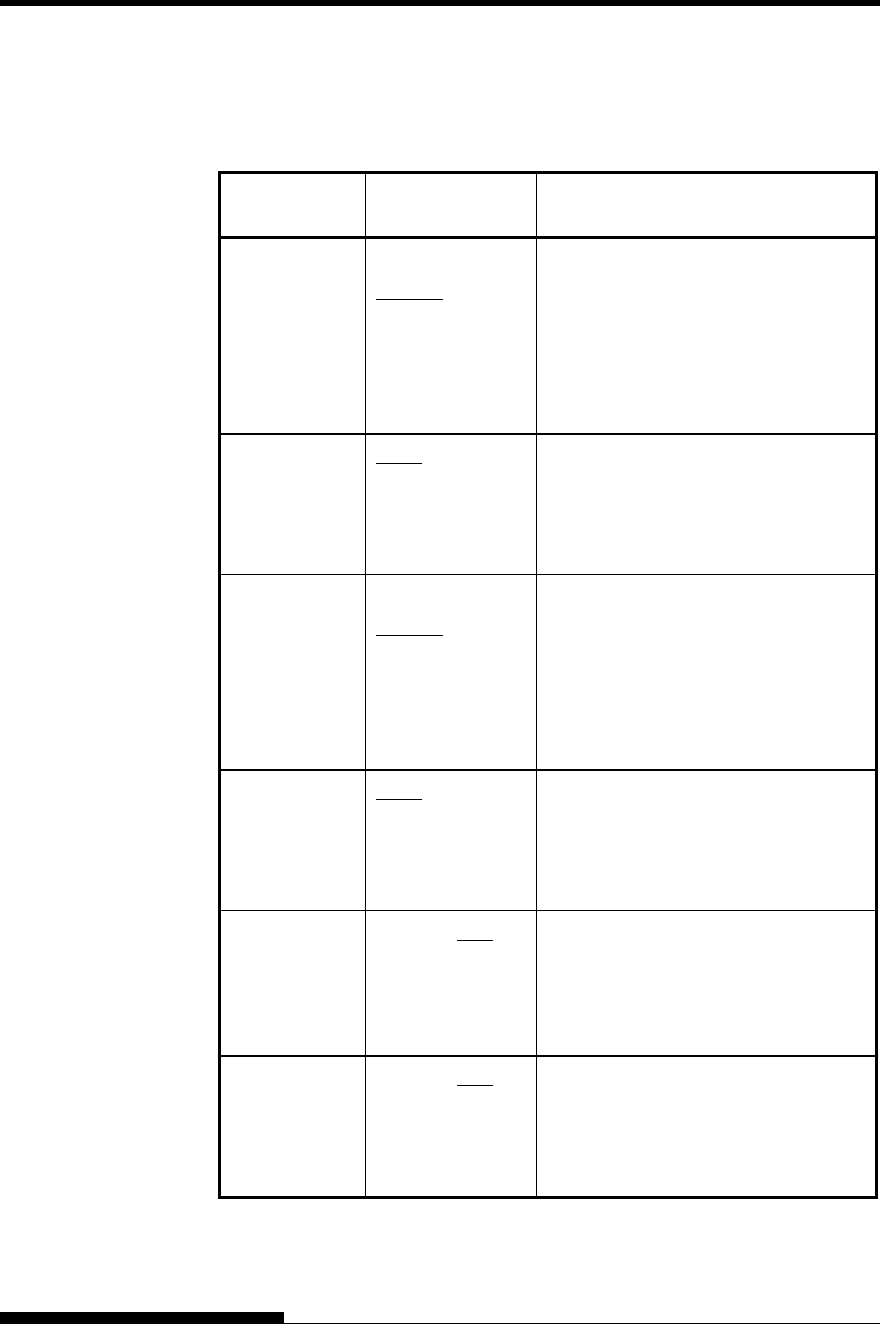
USING SETUP MODE
5-34 User's Manual
Table 5.5 ADJUST Items and Options (Cont.)
NOTE: Underlined options are the factory defaults.
HARDWRE
Items
Options Description
<FCUTORG> 1/6 IN
1.8/6 IN
:
6/6 IN
:
66/6 IN
Sets the top-of-form for front single
sheets in increments of 1/6 inch (4.2
mm) from the physical top of the page.
The default is recommended if your top
margin is not software-specified. A
setting of 1/6 inch is preferable when
your top margin is software-specified.
<FCUTFIN> 0/180, ..., 29/180 Fine-tunes the top-of-form position for
front single sheets.
Increases top-of-form in increments of
1/180 inch
(0.14 mm).
<RCUTORG> 1/6 IN
1.8/6 IN
:
6/6 IN
:
66/6 IN
Sets the top-of-form for rear single
sheets in increments of 1/6 inch (4.2
mm) from the physical top of the page.
The default is recommended if your top
margin is not software-specified. A
setting of 1/6 inch is preferable when
your top margin is software-specified.
<RCUTFIN> 0/180, ..., 29/180 Fine-tunes the top-of-form position for
rear single sheets.
Increases top-of-form in increments of
1/180 inch
(0.14 mm).
<CNT-LFT> 10/90, ..., 0/90,
..., 10/90
Fine-tunes the left print start position
for continuous forms.
Moves the position left or right in
increments of 1/90 inch
(0.28 mm).
<CUT-LFT> 10/90, ..., 0/90,
..., 10/90
Fine-tunes the left print start position
for single sheets.
Moves the position left or right in
increments of 1/90 inch
(0.28 mm).
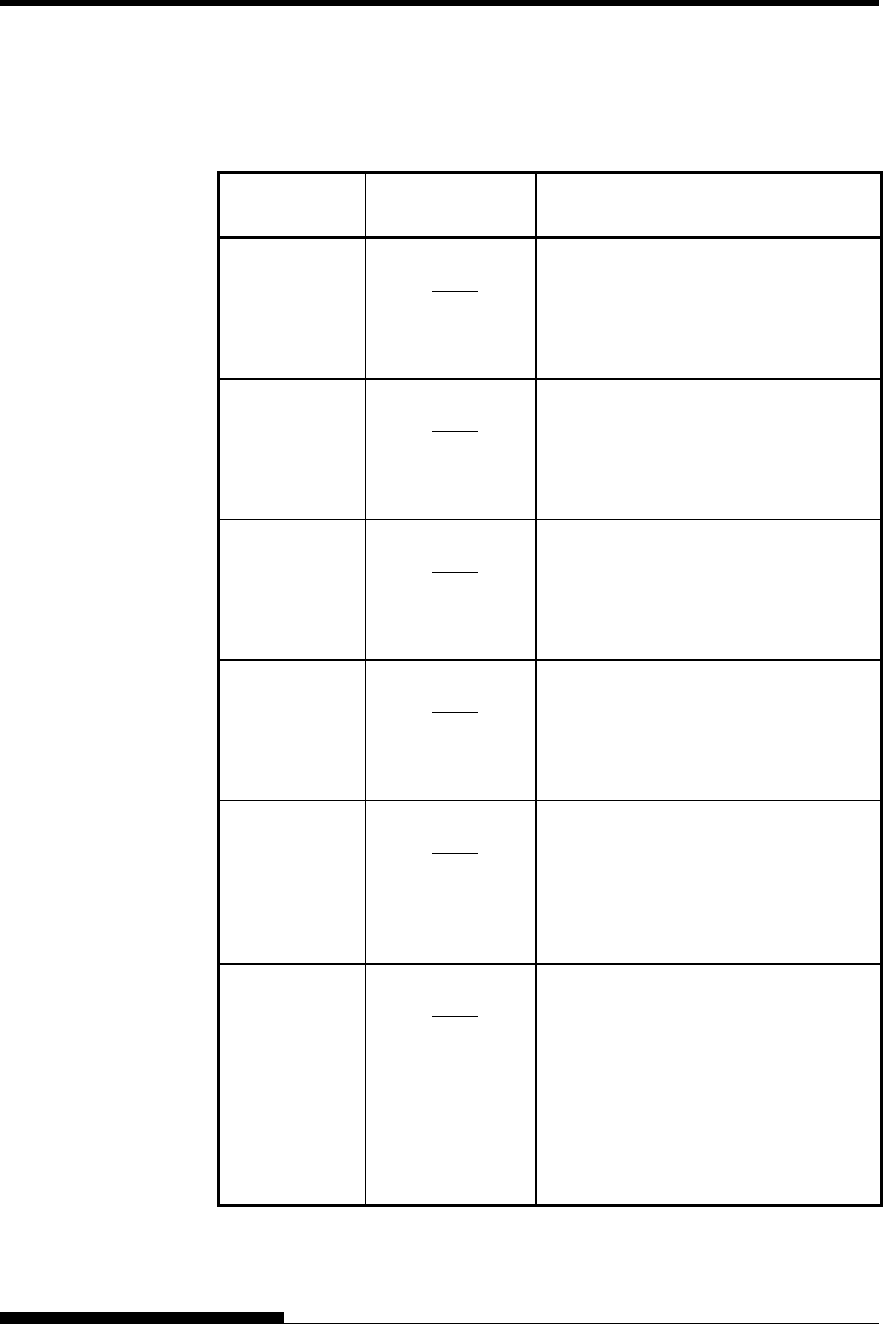
USING SETUP MODE
User's Manual 5-35
Table 5.5 ADJUST Items and Options (Cont.)
NOTE: Underlined options are the factory defaults.
HARDWRE
Items
Options Description
<FCNTADJ> -14/360, -9/360, -
4/360, 0/360
4/360, 9/360,
14/360,
GRAPHIC(*1)
Compensates for the forms feed error
accumulated through feeding of front
continuous forms.
<RCNTADJ> -14/360, -9/360, -
4/360, 0/360
4/360, 9/360,
14/360,
GRAPHIC(*1)
Compensates for the forms feed error
accumulated through feeding of rear
continuous forms.
<FCNTAJL> -14/360, -9/360, -
4/360, 0/360
4/360, 9/360,
14/360,
GRAPHIC(*1)
Compensates for the forms feed error
accumulated through feeding of front
continuous forms. (Last page)
<RCNTAJL> -14/360, -9/360, -
4/360, 0/360
4/360, 9/360,
14/360,
GRAPHIC(*1)
Compensates for the forms feed error
accumulated through feeding of rear
continuous forms. (Last page)
<CUT-ADJ> -14/360, -9/360, -
4/360, 0/360
4/360, 9/360,
14/360,
GRAPHIC(*1)
Compensates the line spacing pitch on
the basis of the spacing error
accumulated for feeding single sheets
by10 inches.
Decreases or increases in increments of
1/360 inch in total.
<FCSFADJ> -14/360, -9/360, -
4/360, 0/360
4/360, 9/360,
14/360,
GRAPHIC(*1)
Compensates the line spacing pitch on
the basis of the spacing error
accumulated for feeding single sheets
by10 inches.
Decreases or increases in increments of
1/360 inch in total.
This option is available only when
paper is being loaded in the front cut
sheet feeder.
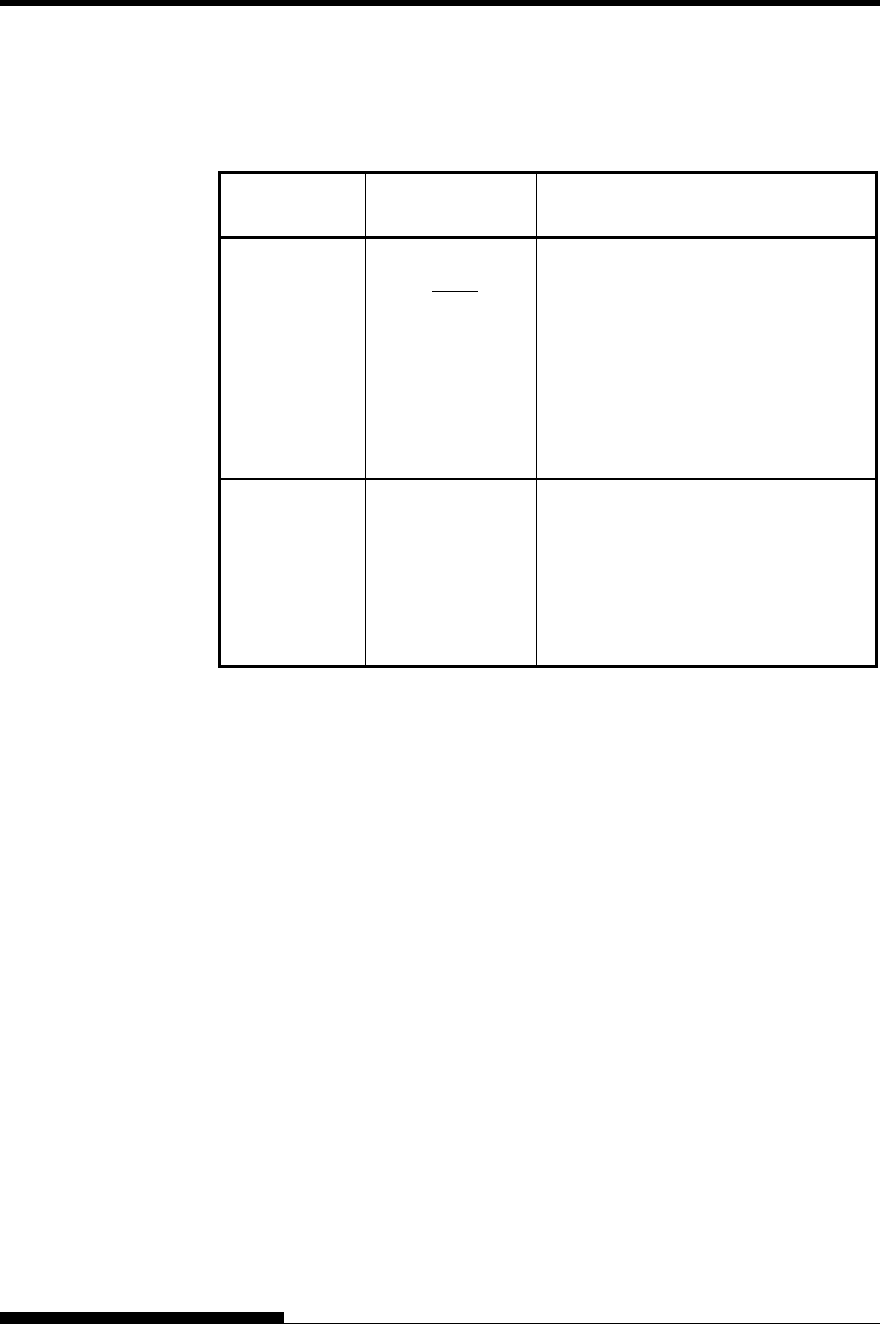
USING SETUP MODE
5-36 User's Manual
Table 5.5 ADJUST Items and Options (Cont.)
NOTE: Underlined options are the factory defaults.
HARDWRE
Items
Options Description
<RCSFADJ> -14/360, -9/360, -
4/360, 0/360
4/360, 9/360,
14/360,
GRAPHIC(*1)
Compensates the line spacing pitch on
the basis of the spacing error
accumulated for feeding single sheets
by10 inches.
Decreases or increases in increments of
1/360 inch in total.
This option is available only when
paper is being loaded in the rear cut
sheet feeder.
<==END==> Indicates the end of MENU1 items.
Press the T button to print the first
item, <FCNTORG>. Press the S
button to print the previous item,
<RCSFADJ>. Press the ONLINE
button to reprint the <<FUNCTION>>
menu.
*1: When printing graphics, selecting “GRAPHIC” may result in the
printing of clearer graphics.
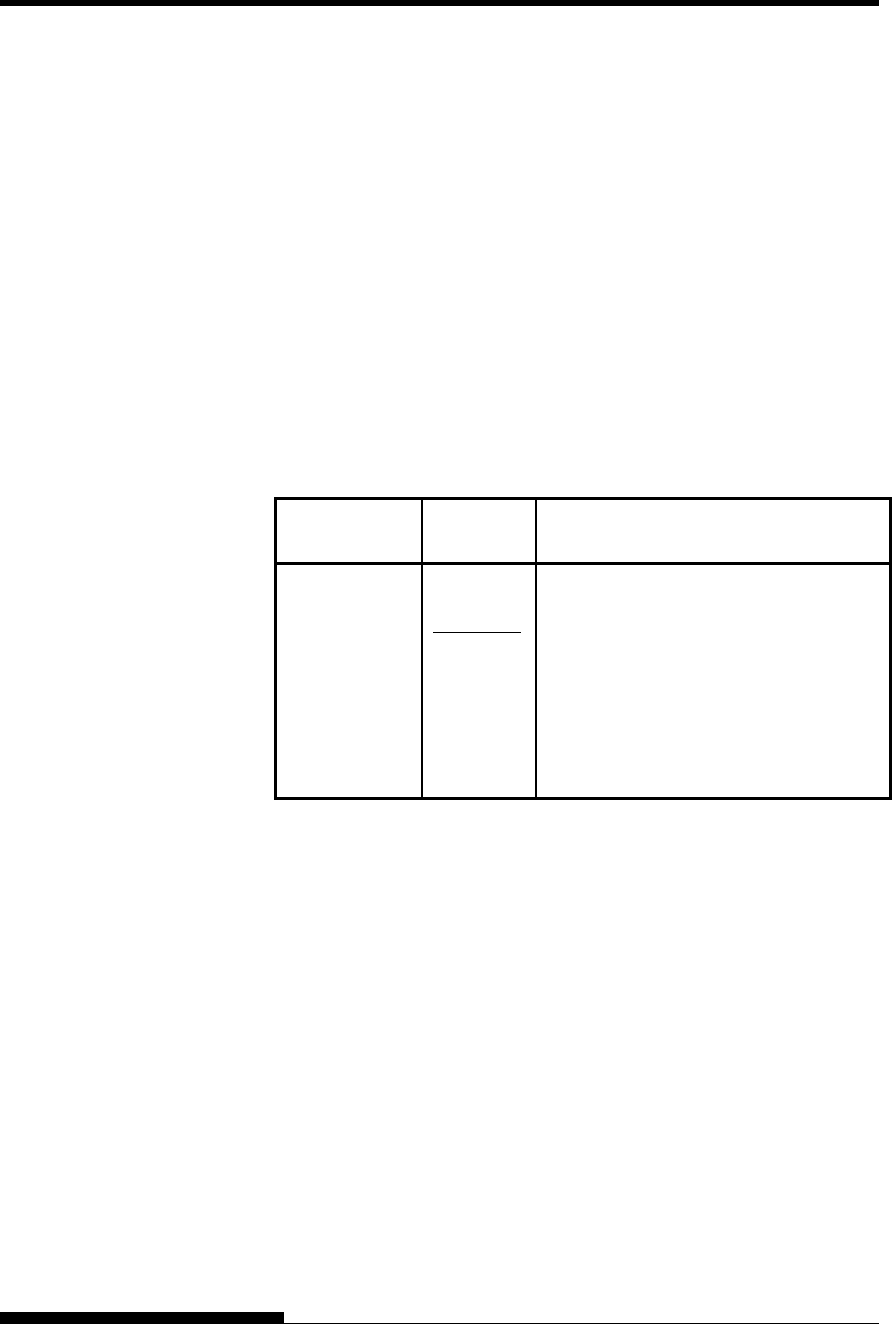
USING SETUP MODE
User's Manual 5-37
The CONFIG function defines the printer’s primary configuration. You
can set the following options to ensure that the printer meets your
requirements:
• Tear off for continuous forms
• Autoloading of single sheets
• Direct decoding of certain commands
• Enabling of the AREA OVER indicator
Table 5.6 describes the CONFIG items and options. Items are listed in
the order they are printed. The procedure for changing the configuration
options is described after Table 5.6.
Table 5.6 CONFIG Items and Options
NOTE: Underlined options are the factory defaults.
CONFIG
Items
Options Description
<TEAROFF> Auto or manual tearoff feed.
MANUAL Automatic tearoff feed is invalid, and
tearoff feed must be done using the
TEAR OFF button.
AUTO
Automatic tearoff feed is valid but only
for continuous forms. Tearoff feed can
also be done using the TEAR OFF
button.
CHANGING
CONFIGURATION
OPTIONS
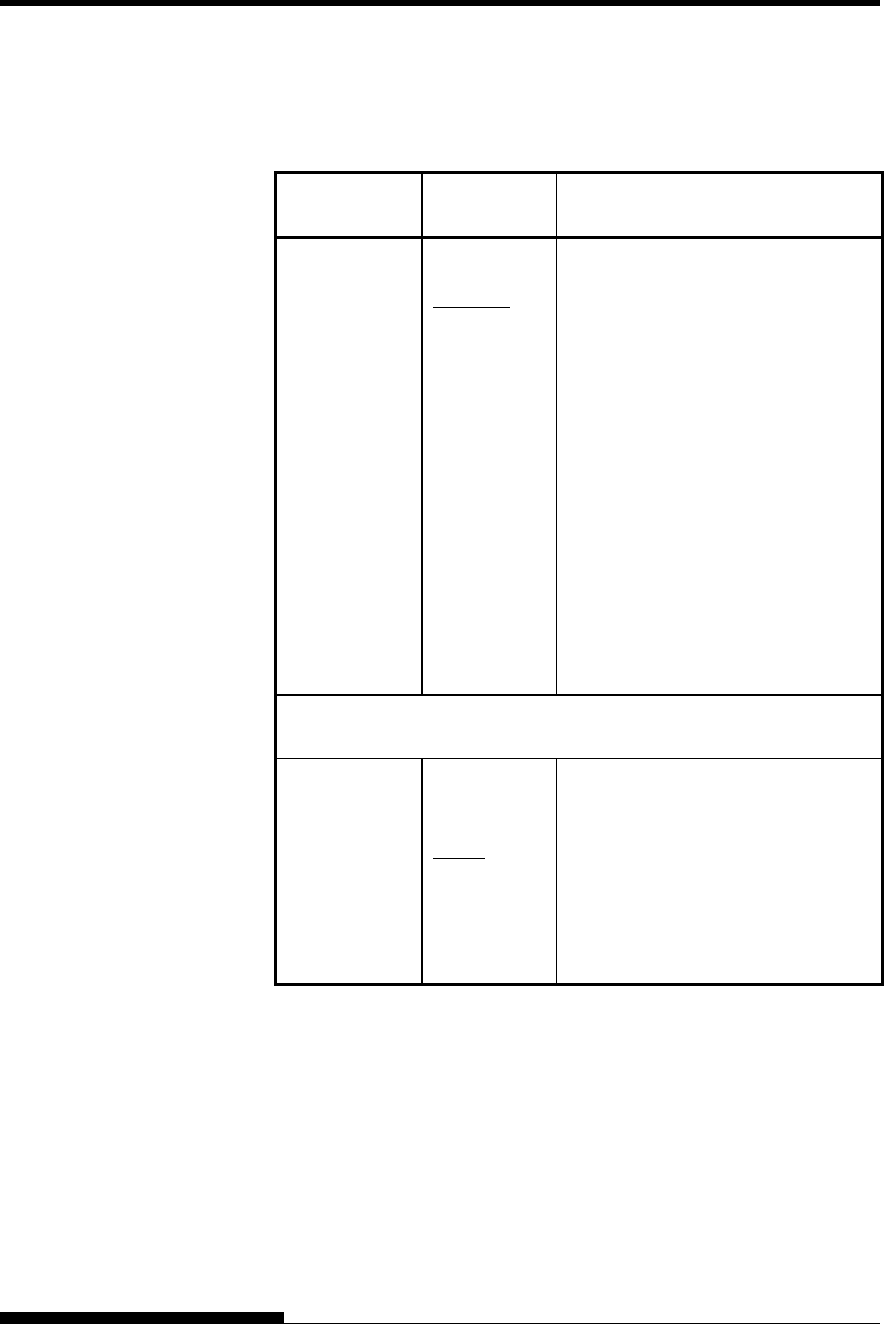
USING SETUP MODE
5-38 User's Manual
Table 5.6 CONFIG Items and Options (Cont.)
NOTE: Underlined options are the factory defaults.
CONFIG
Items
Options Description
<TEARPOS> Tearoff position.
VISIBLE Select this option when your software
positions forms to the next top-
ofform after printing the last data.
The printer performs tearoff feed
without adding a form feed when data
transfer has stopped.
ALWAYS
Select this option when your software
stops after printing the last data. The
printer performs tearoff feed after
adding a form feed when data transfer
has stopped.
Note: For both settings, tearoff
positioning will fail if the page
length setting does not match the
actual perforation spacing.
The following <TEAR-EN> item is printed when TEAROFF:AUTO is
specified for the <TEAROFF> item.
<TEAR-EN> Tearoff enabled time (offset time).
0 SEC
1 SEC
2 SEC
4 SEC
6 SEC
The offset time is from when data
transfer stops to when the printer
performs automatic tearoff feed.
If the printer receives data again
within the offset time, the printer
does not perform automatic tearoff
feed.
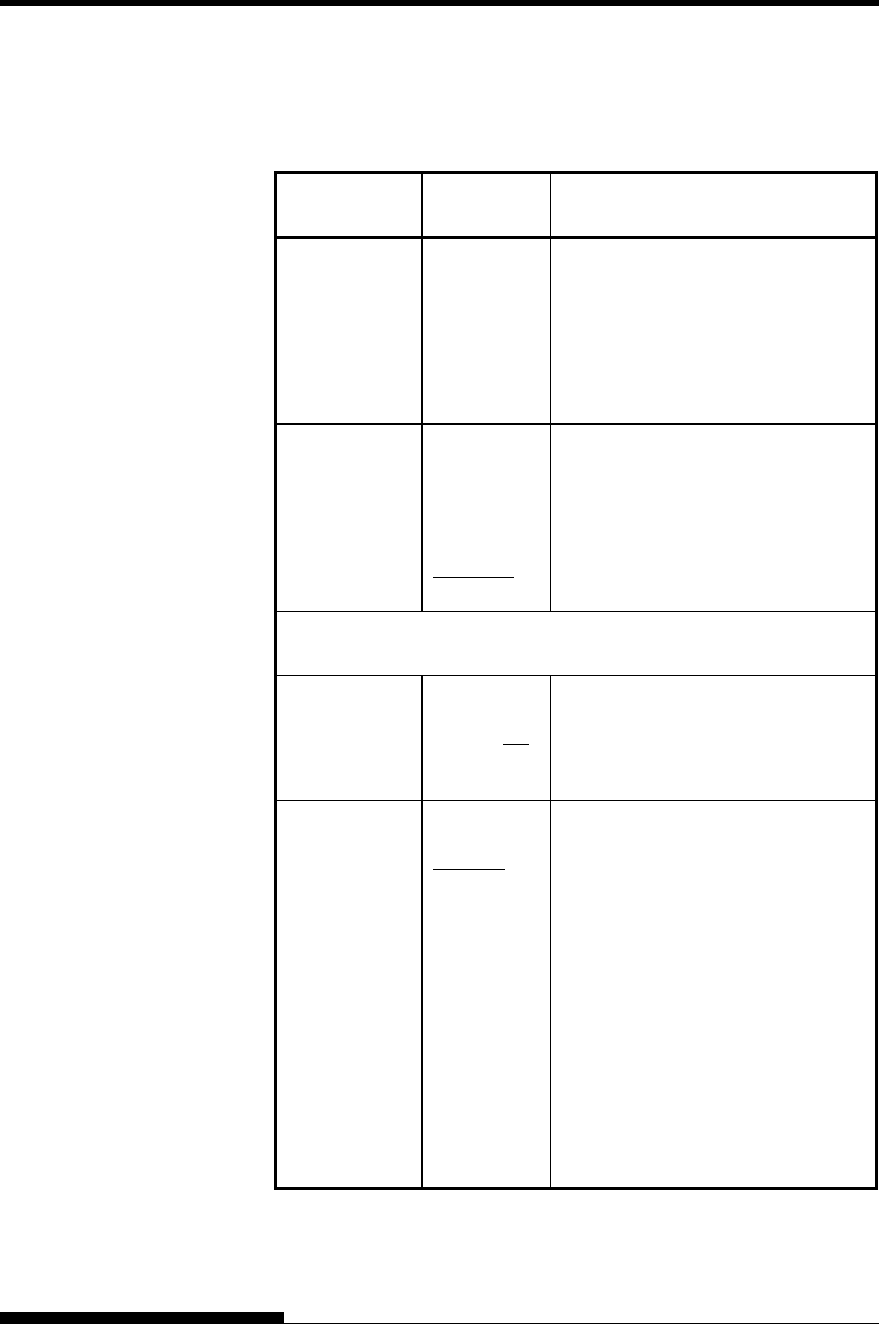
USING SETUP MODE
User's Manual 5-39
Table 5.6 CONFIG Items and Options (Cont.)
NOTE: Underlined options are the factory defaults.
CONFIG
Items
Options Description
<TEAR-EN>
(continued)
In some application
programs, data
transfer may stop temporarily due to
internal processing. This setting can
avoid an undesired tearoff feed by
waiting for up to six seconds each
time data transfer stops.
<CUTLOAD> Single sheet autoloading.
AUTO
Single sheet paper is automatically
loaded a certain time after you set the
paper.
BUTTON Single sheet paper can be loaded by
pressing the LOAD button.
The following <LOADTIM> item is printed when CUTLOAD:AUTO
is specified for the <CUTLOAD> item.
<LOADTIM> Autoload start time.
0.5, 1.0, 1.5,
2.0 2.5,
3.0SEC
Autoloading starts when this amount
of time passes after you set single
sheet paper.
<DECODE> Command decode timing.
DIRECT The printer decodes certain
commands immediately after
receiving data.
Example:
ESC SUB I, ESC CR
P (DPL24C+) ESC
Q # (IBM XL24E)
QUEUED
The printer decodes commands after
storing all data (including commands)
in the input buffer. This speeds data
reception because the printer does not
require decoding time during data
reception.
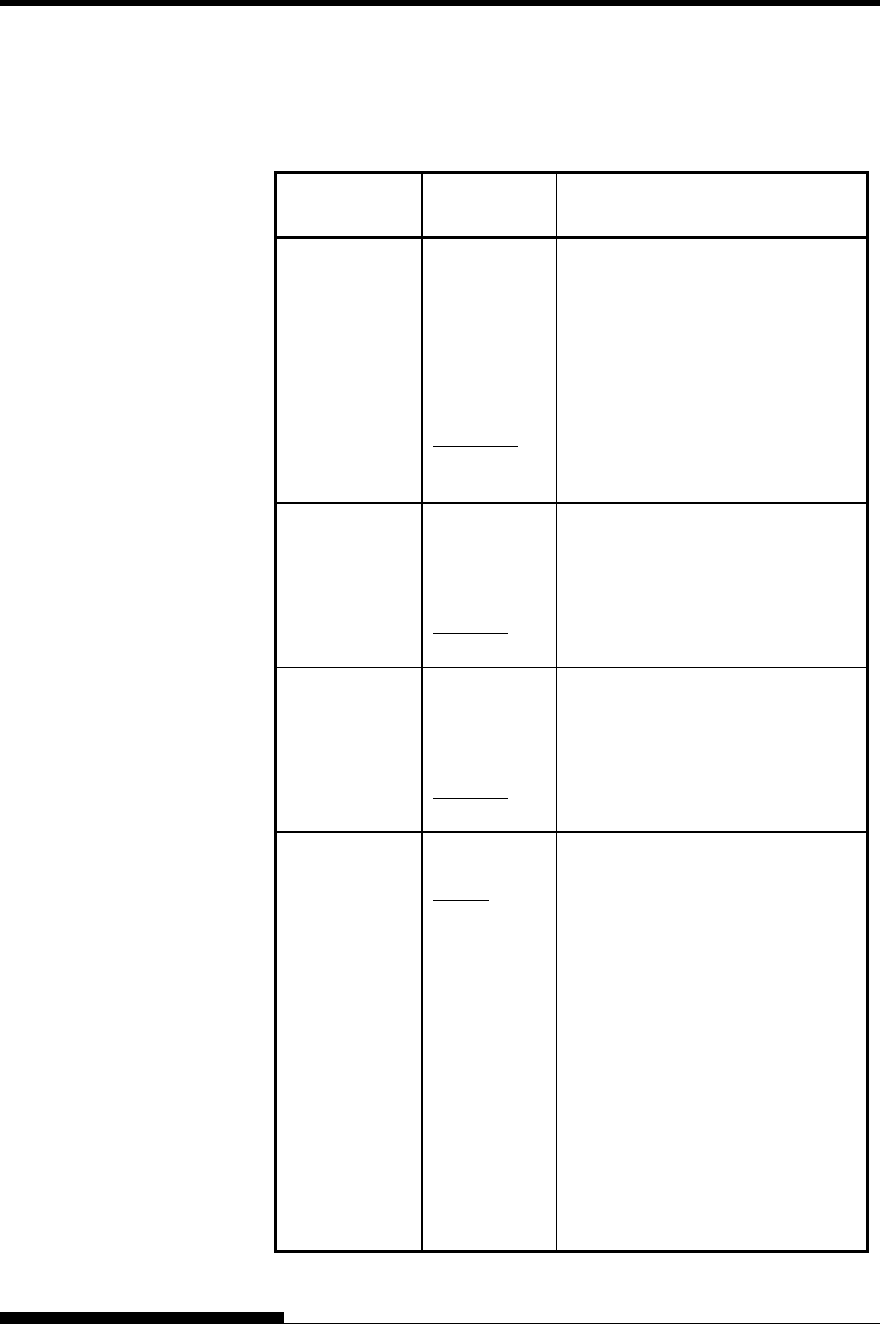
USING SETUP MODE
5-40 User's Manual
Table 5.6 CONFIG Items and Options (Cont.)
NOTE: Underlined options are the factory defaults.
CONFIG
Items
Options Description
<AREACNT> Area-over detection control.
ENABLE
Detects the left and right edges of
paper when loading the paper.
The printer does not print data
beyond the edges, but turns on the
AREA OVER indicator.
DISABLE Does not detect the edges. Select
this option when you are using
colored or preprinted paper.
<CUT-ONL> Printer status after loading paper in
offline mode for single sheets.
OFFLINE Remains offline after paper loading.
ONLINE Goes into online after paper
loading.
<CNT-ONL> Printer status after loading paper in
offline mode for continuous forms.
OFFLINE Remains offline after paper loading.
ONLINE Goes into online after paper
loading.
<LOCK> Lock function of setup mode.
NONE Enables all buttons on the control
panel.
SETUP
Disables the setup-related buttons
to keep the printer from entering
setup mode during the offline state.
ALL
Disables the setup-related buttons
and the MENU button.
Once this setting has been selected,
setup mode cannot be entered from
the control panel. To cancel this
setting, turn the power on while
simultaneously pressing the HI
IMPACT, TEAR OFF, and LF/FF
buttons.
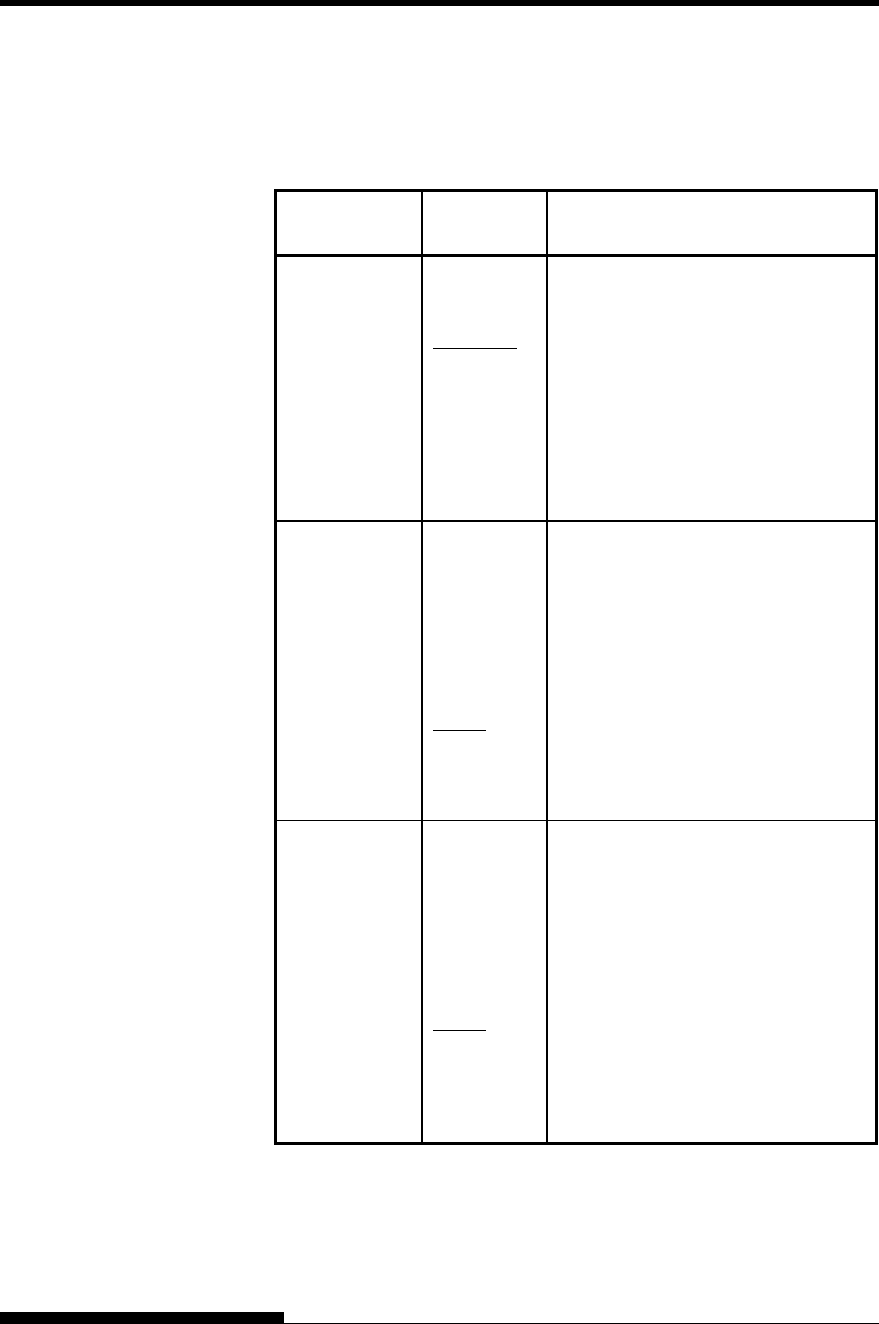
USING SETUP MODE
User's Manual 5-41
Table 5.6 CONFIG Items and Options (Cont.)
NOTE: Underlined options are the factory defaults.
CONFIG
Items
Options Description
<//S//> Effectiveness of the Cut Sheet
Selection command (//S//).
DISABLE Makes the command ineffective.
ENABLE Makes the command effective.
Note: The Cut Sheet Selection
command (//S//) changes the
paper source to the paper table
and waits for manual insertion
of a cut sheet.
<FCNT-PE> Detection of end of front continuous
forms.
TRACTOR
Paper end is detected by the sensor on
the tractor unit.
Paper-end unprinted area:
Continuous forms: About 101 mm
EDGE Regardless of paper end, printing
continues near to the edge of paper.
Paper-end unprinted area: About 4
mm for both continuous forms
<RCNT-PE> Detection of end of rear continuous
forms.
TRACTOR
Paper end is detected by the sensor on
the tractor unit.
Paper-end unprinted area:
Continuous forms: About 157 mm
EDGE Regardless of paper end, printing
continues near to the edge of paper.
Paper-end unprinted area:
About 4 mm for both continuous
forms
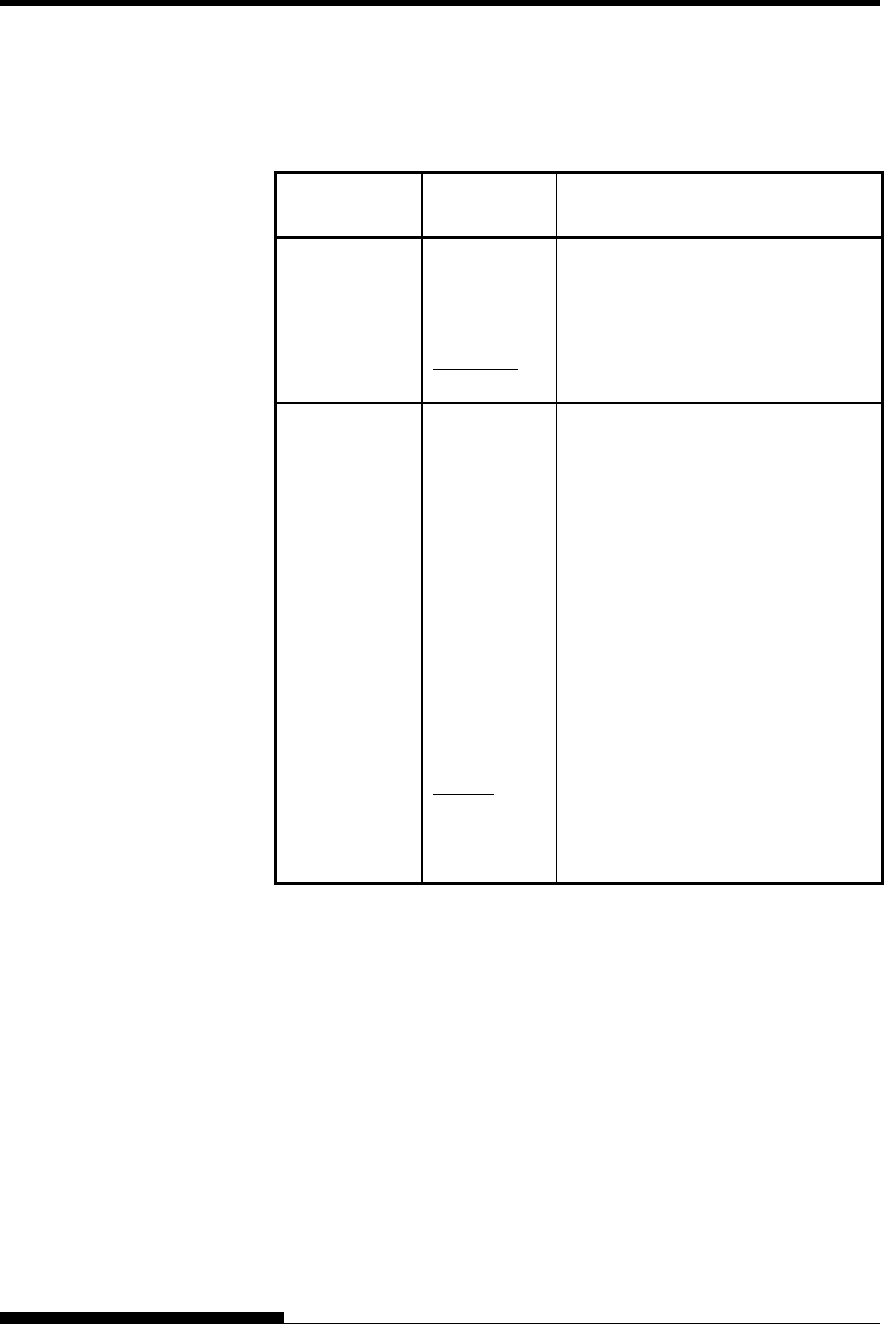
USING SETUP MODE
5-42 User's Manual
Table 5.6 CONFIG Items and Options (Cont.)
NOTE: Underlined options are the factory defaults.
CONFIG
Items
Options Description
GATHER Setting of ribbon protective control at
a line feed on continuous forms
ENABLE The protective control is executed.
DISABLE The protective control is not
executed.
CUT-CTL Setting of retracting control at
canceling TEAR OFF of continuous
forms.
PRCISIN
The precision-prioritized retracting
control is executed.
It retracts a certain amount of paper
(the top part of the paper which hangs
out from the TOFS), and then moves
back to the position before TEAR
OFF. If TOFS detects paper end
when a certain amount of paper is
retracted, it executes the continuous
forms save operation and then
executes the paper loading operation.
SPEED The speed-prioritized retracting
control is executed.
It retracts the paper by the amount the
paper was advanced.
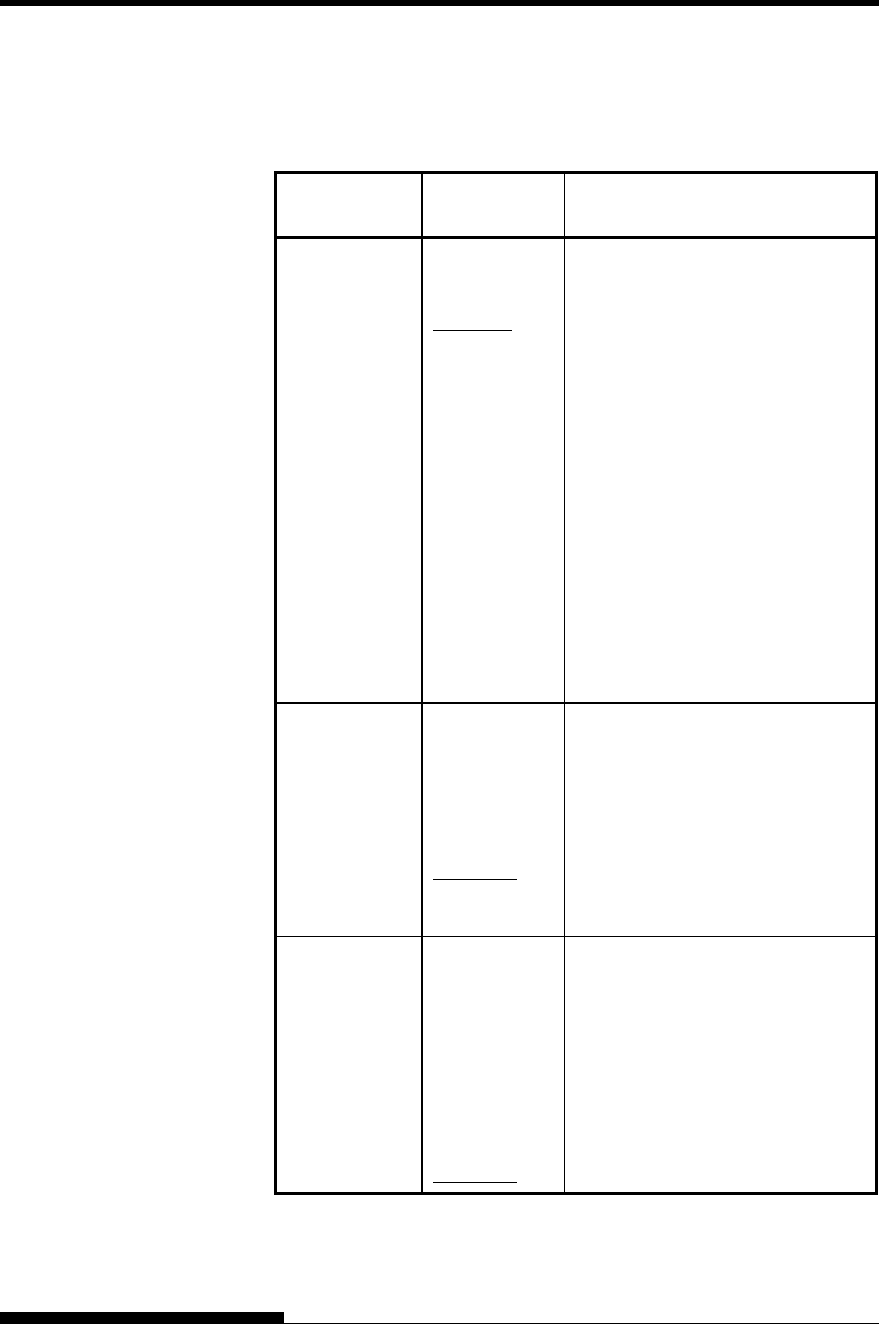
USING SETUP MODE
User's Manual 5-43
Table 5.6 CONFIG Items and Options (Cont.)
NOTE: Underlined options are the factory defaults.
CONFIG
Items
Options Description
SKIP-PR Setting of printing speed change
processing (skip)
ENABLE The skip processing is executed.
When a certain amount of blank
spaces are found in a line, it
changes the printing speed for the
blank spaces.
DISABLE The skip processing is not executed.
It does not change the printing
speed for the blank spaces.
- If the printing speed of the
printing data varies before and
after the blank spaces (such as
LQ characters + blank space +
CQ characters), it changes
printing speeds regardless of
this setting.
STATUS Setting of the asynchronous status
function
ENABLE
The status information is stored in
the send buffer by a nibble mode
request.
DISABLE The status information is not stored
in the send buffer by a nibble mode
request.
BANDCTL Setting of reducing backward line
feeds as much as possible.
Backward line feeds occur when
printing vertical enlargement
characters or multi-path characters
which involve several printing
paths for a print activation.
ENABLE Reduce control is performed.
DISABLE Reduce control is not performed.
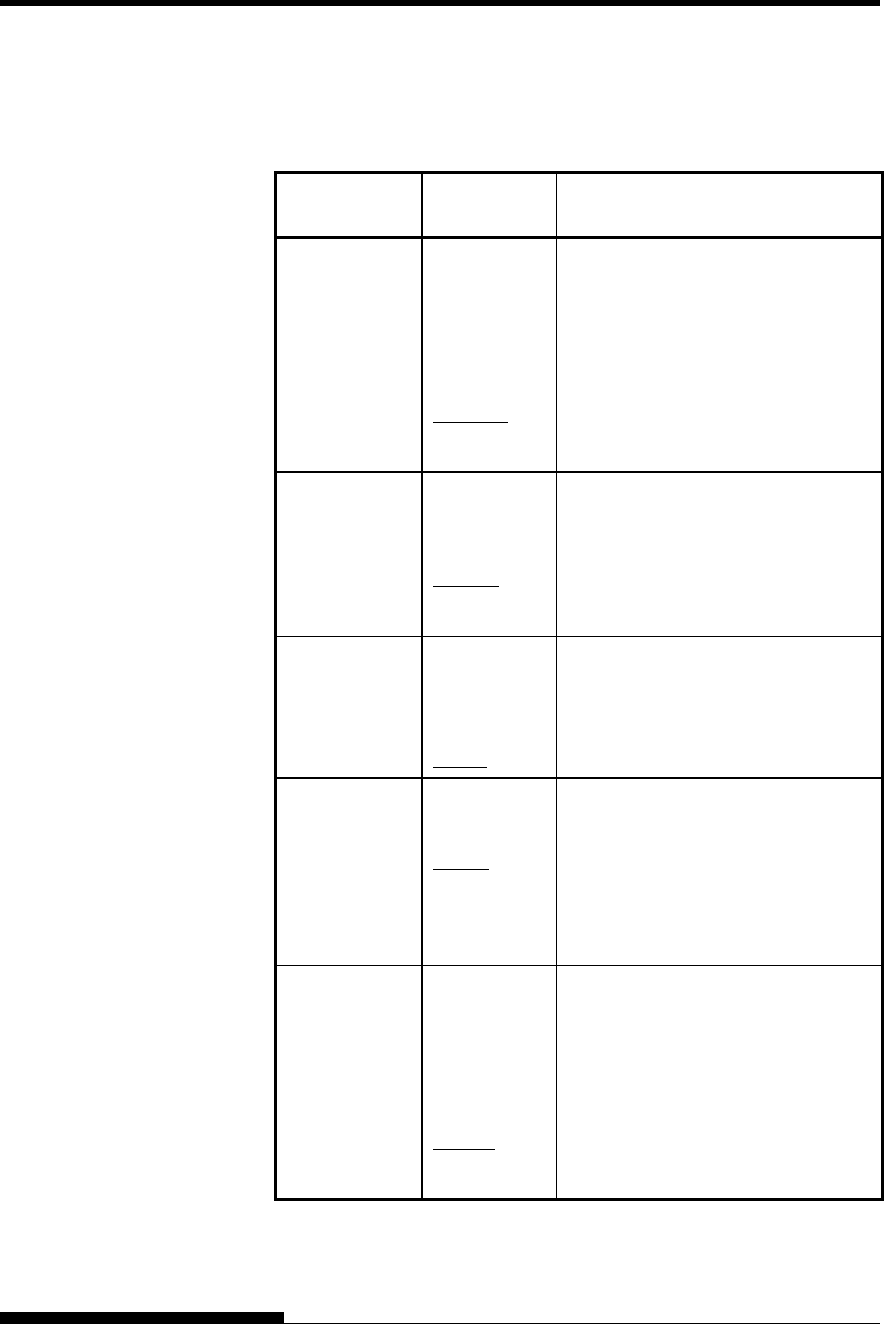
USING SETUP MODE
5-44 User's Manual
Table 5.6 CONFIG Items and Options (Cont.)
NOTE: Underlined options are the factory defaults.
CONFIG
Items
Options Description
TOF-CTL Setting of priority on TOF control to
a printer driver specification or a
setup specification. TOF control
determines the amout of the top
margin when paper is fed to the home
position.
DRIVER Driver specification is given priority.
SETUP Setup specification is given priority.
<CUTEDIR> Selection of the eject direction of cut
sheets with manually feeding of cut
sheets
FRONT Ejected to the front.
REAR Ejected to the rear.
<CSFEDIR> Selection of the eject direction of cut
sheets with use of a CSF
FRONT Ejected to the front.
REAR Ejected to the rear.
<CUTEJCT> Selection for automatic ejection of
cut sheets
AUTO Automatic ejection of cut sheets
when no cut sheet is detected
MANUAL
No automatic ejection of cut sheets
when no cut sheet is detected
<FL-CENT> Selection of the print carrier position
when paper is fed via a front path
(with feeding of continuous forms
paper from the front, use of a front
CSF, and manual feeding of cut
sheets)
POSN1 Position 1: Column 31
POSN2 Position 2: Column 42
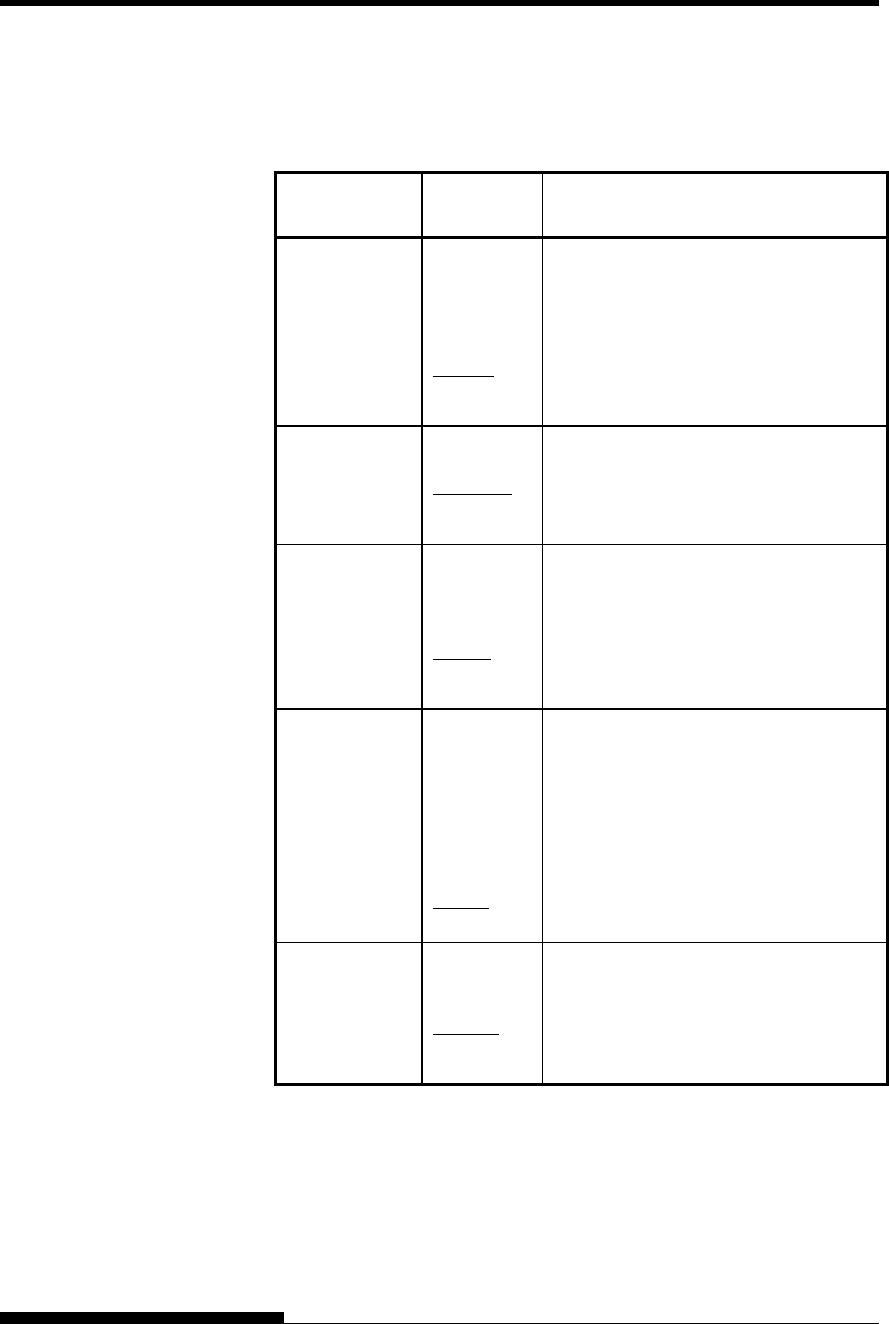
USING SETUP MODE
User's Manual 5-45
Table 5.6 CONFIG Items and Options (Cont.)
NOTE: Underlined options are the factory defaults.
CONFIG
Items
Options Description
<RL-CENT> Selection of the print carrier position
when paper is fed via a front path (with
feeding of continuous forms paper from
the rear and use of a rear CSF)
POSN1 Position 1: Column 31
POSN2 Position 2: Column 42
<SKEWCNT> Detection of paper feed skew
ENABLE Enables paper feed skew detection.
DISABLE Disables paper feed skew detection.
<FF-CODE> Selection of the method of processing
for the FF code is received in cut sheet
mode or for the “LF/FF” switch
EJECT Ejects cut sheets.
FORM-FD Uses a page break.
<PRT-CUT> Selection of the cut amount (margin) on
both sides of continuous forms paper
when AREACNT, the cut amount in
continuous printing, is set to ENABLE
71/180
Sets the cut amount for printing to
71/180 inches (about 10.0 mm).
99/180 Sets the cut amount for printing to
99/180 inches (about 14.0 mm).
<CSFBIN1> Selection of the CSF for pin 1 if both a
front CSF and rear CSF are mounted
FRONT Front CSF
REAR Rear CSF
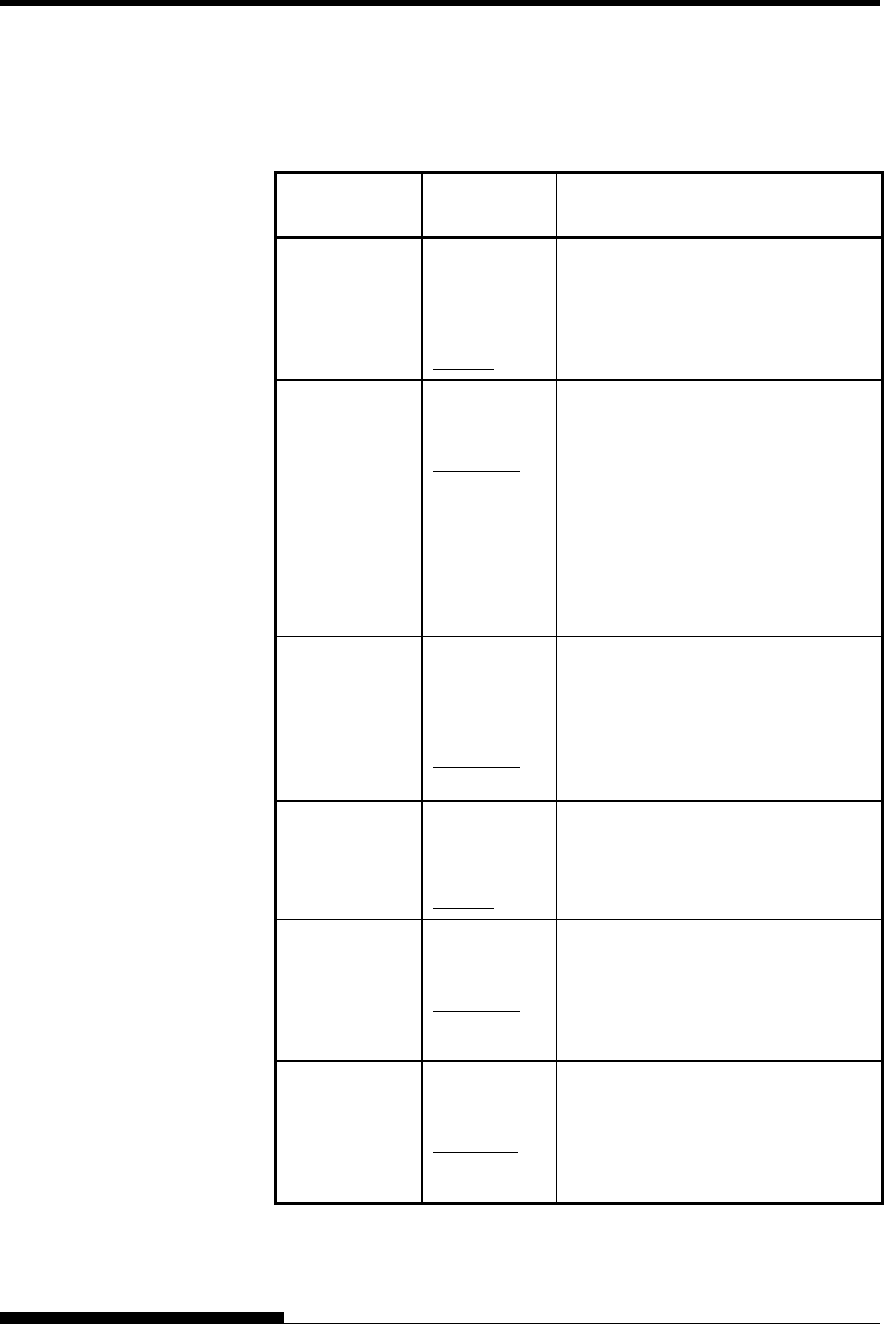
USING SETUP MODE
5-46 User's Manual
Table 5.6 CONFIG Items and Options (Cont.)
NOTE: Underlined options are the factory defaults.
CONFIG
Items
Options Description
<CNT-LD> Selection for the paper feeding of
continuous forms paper
PRCISIN Gives a higher priority to precision.
SPEED Gives a higher priority to speed.
<CSF-LD> Selection of the method of feeding
from the CSF
NORMAL Feeds paper directly from the CSF
hopper.
SWBACK
Feeds paper from the CSF hopper to
either the cut sheet table used with a
front CSF or the stacker used with a
rear CSF. Then, that paper is fed
again.
<CSFAPTC> Paper thickness detection with use of
a CSF
ALWAYS Every sheet of paper that is fed
NORMAL Sheet of paper that is fed immediately
after the feed pin is switched
<LF-CTL> Selection for page return
PRCISIN Gives a higher priority to precision.
SPEED Gives a higher priority to speed.
<PR-MODE> Selection for print mode
(standard/low noise)
NORMAL Prints in standard mode.
QUIET Prints in low-noise mode.
<HI-IMPT> Selection for high printing pressure
mode
DISABLE Prints in standard pressure mode.
ENABLE Prints in high printing pressure mode.
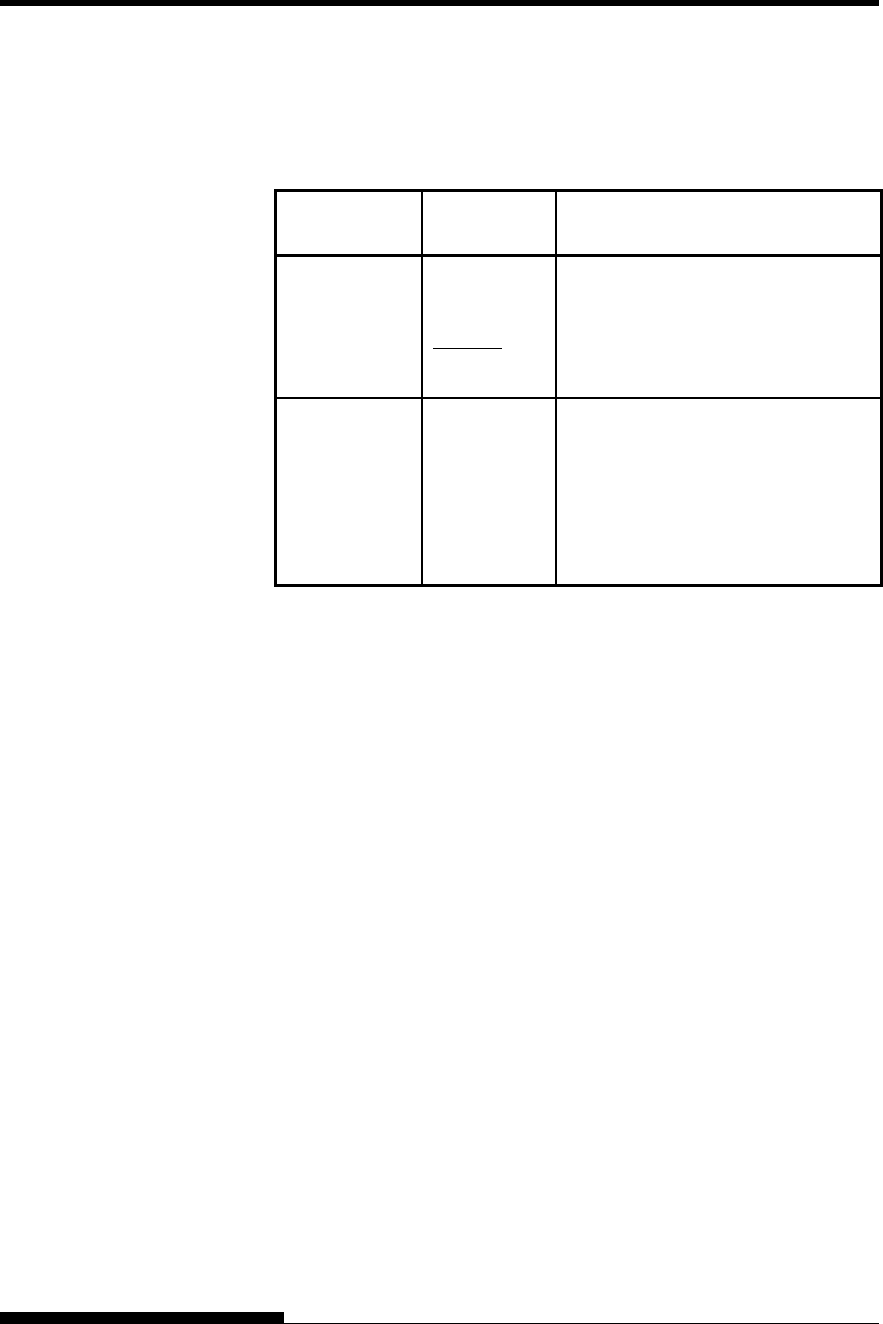
USING SETUP MODE
User's Manual 5-47
Table 5.6 CONFIG Items and Options (Cont.)
NOTE: Underlined options are the factory defaults.
CONFIG
Items
Options Description
<DQ-MODE > Selection for draft quality printing
mode
MODE1 Prints in 505CPS printing mode.
MODE2 Prints in 360CPS printing mode.
<==END==> Indicates the end of the CONFIG
item list. Press the T button to print
the first item, which is <TEAROFF>.
Press the S button to print the
previous item. Press the ONLINE
button to reprint the
<<FUNCTION>> menu.
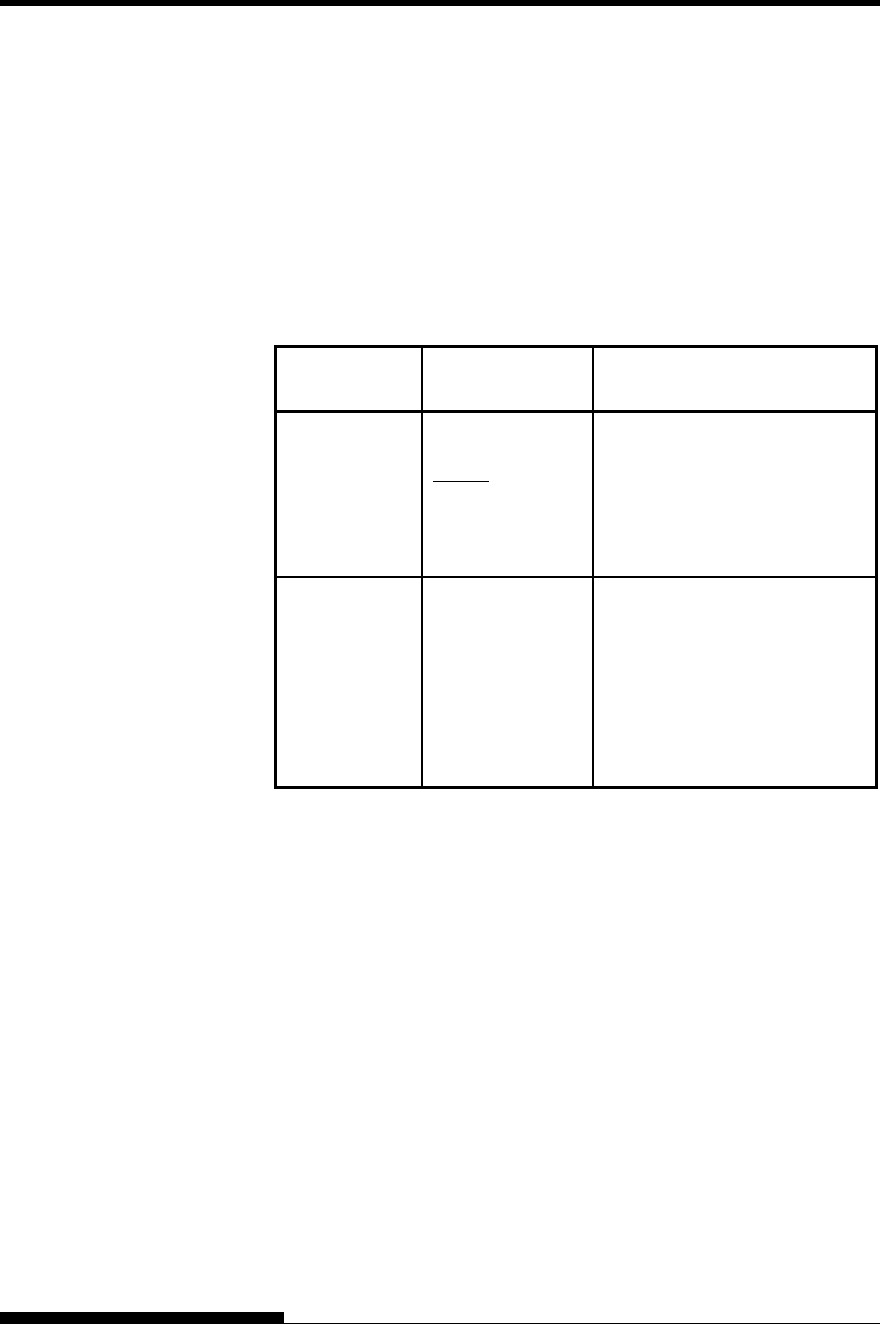
USING SETUP MODE
5-48 User's Manual
The GAP-ADJ function adjusts the gap between the print head and the
paper. The automatic paper thickness control (APTC) feature is built in
this printer. If you adjust the gap manually or fix the gap, change the
option of GAP-ADJ function.
For the procedure how to change the options refer to the section Setup
Mode Example earlier in this chapter.
Table 5.7 GAP-ADJ Items and Options
NOTE: Underlined options are the factory defaults.
GAP-ADJ
Items
Options Description
<AMOUNT> Specifies the print head gap.
AUTO The print head gap is set
automatically.
MANUAL
Turn the paper thickness dial
(indicator) manually.
<==END==> Indicates the end of the GAP-
ADJ item list. Press the T
button to print the first item,
which is <AMOUNT>.
Press the S button to print the
previous item. Press the
ONLINE button to reprint the
<<FUNCTION>> menu.
HEAD GAP
ADJUSTMENT
ITEMS AND
OPTIONS
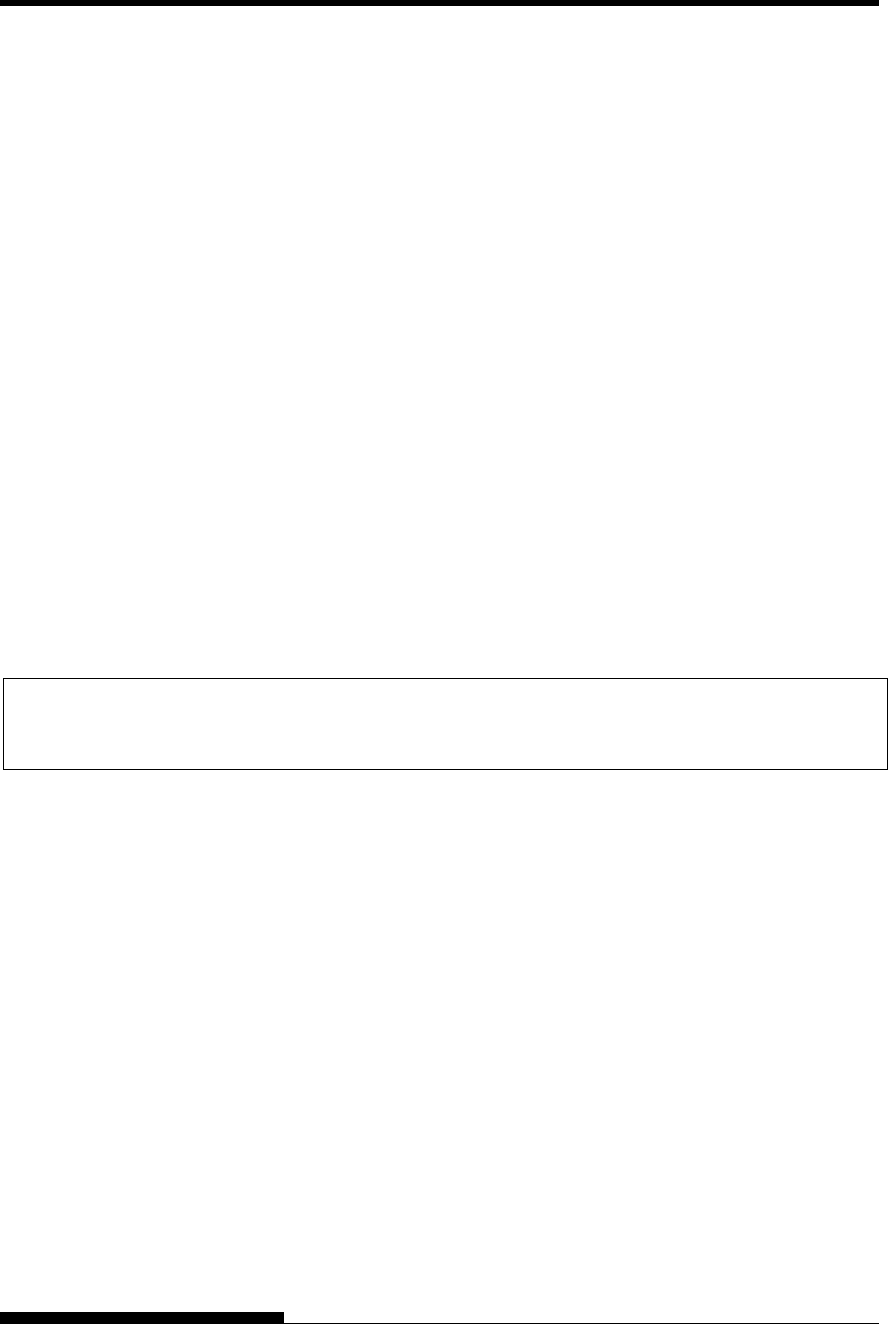
USING SETUP MODE
User's Manual 5-49
This section describes how to exit setup mode and save any changes you
made:
To exit setup mode immediately, select the SAVE & END function.
Any settings changed while in setup mode are saved as the new power-
on defaults for the printer. The new defaults remain active until you
change them again.
NOTE
The only way to exit setup mode without saving your changes is to
turn off the printer. When you turn the printer back on, the previous
default settings are used.
Procedure
To exit setup mode and save your changes using SAVE/END, proceed as
follows:
1. Print the <<FUNCTION>> menu.
The <<FUNCTION>> menu should be the last printed line on
the page. If the menu is not printed, press the ONLINE button to
print the menu. The <<FUNCTION>> menu is shown below:
<< FUNCTION >>
SAVE&END MENU1 MENU2 HARDWRE ADJUST CONFIG GAP-ADJ DEFAULT LIST SELF-TST
HEX-DUMP V-ALMNT INITIAL
2. Select the SAVE/END function.
Make sure that the cursor on the left edge of the aluminum print
guide is positioned under SAVE & END. Press the S button or
the T button to select SAVE & END. The printer exits setup
mode and returns online (the ONLINE indicator lights green).
Any changes you made while in setup mode are saved.
EXITING AND
SAVING
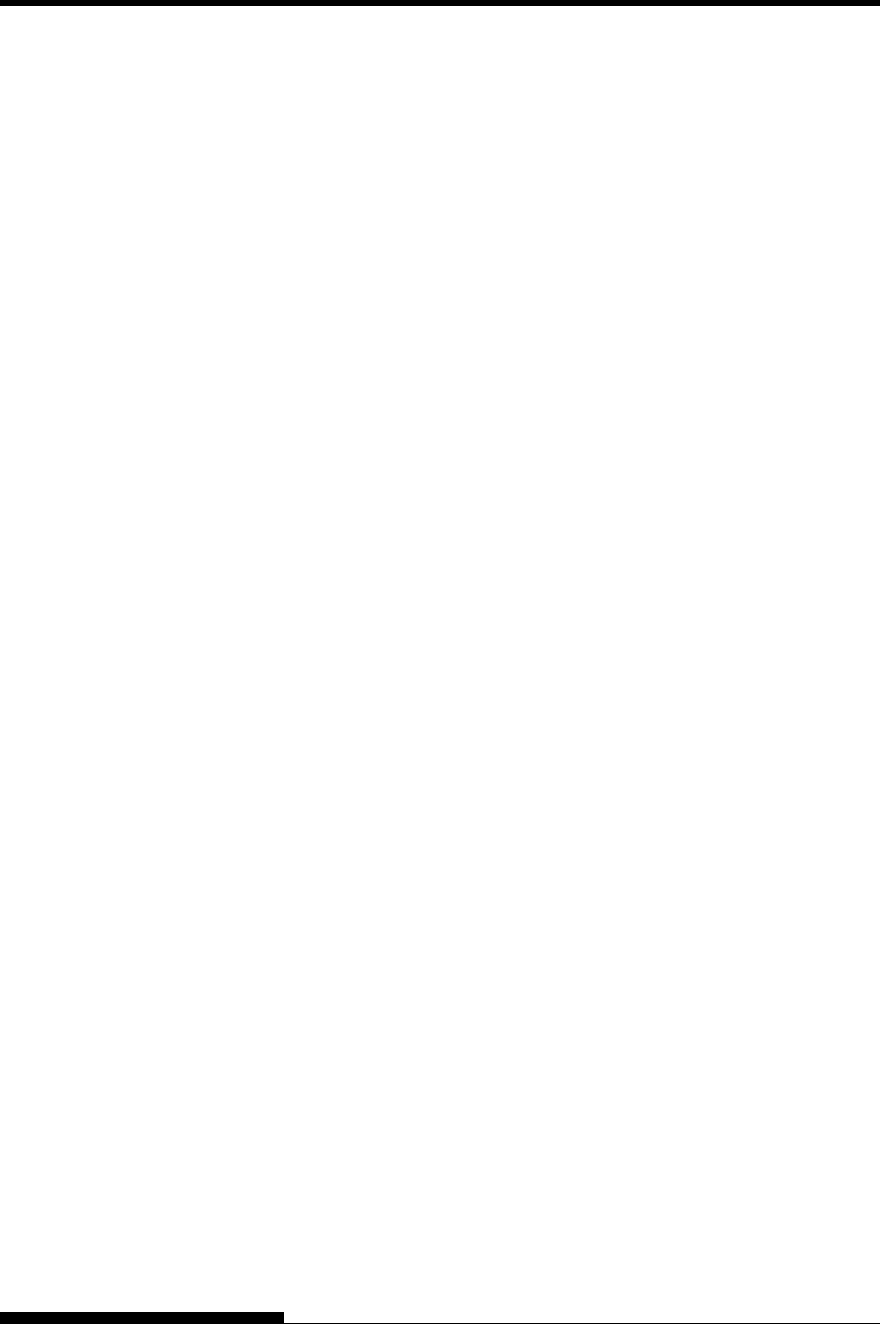
USING SETUP MODE
5-50 User's Manual
This section describes how to reset the printer’s power-on defaults, all of
the factory defaults, or the factory defaults only for MENU1 and
MENU2.
Resetting Power-On Defaults
Power-on defaults are the settings saved in the printer’s permanent
memory. The defaults are enabled whenever you turn the printer on.
The easiest way to reset the power-on defaults is to turn the printer off
and then on again. This method is useful if you have made changes in
setup mode that you do not want to save.
Resetting Factory Defaults
Factory defaults are those settings preselected at the factory. For a list of
the printer’s factory defaults, see the section Printing a List of Selected
Options earlier in this chapter. To reset the factory defaults for all
functions, proceed as follows:
1. Turn off the printer.
2. While pressing the LOAD and, TEAR OFF buttons, turn on the
printer. Continue to press the two buttons until the printer beeps.
The factory defaults are now reset.
Another available method is to select INITIAL in SETUP mode.
The method of making settings is the same as the method for
selecting DEFAULT on the next page, except that INITIAL
must be selected instead of DEFAULT.
Resetting Factory Defaults in MENU1 and
MENU2
This method resets factory defaults for MENU1 and MENU2 options,
listed in Table 5.3, but does not reset the printer hardware, print position
adjustment, and configuration options. To reset the factory defaults in
MENU1 and MENU2, proceed as follows:
RESETTING
DEFAULTS
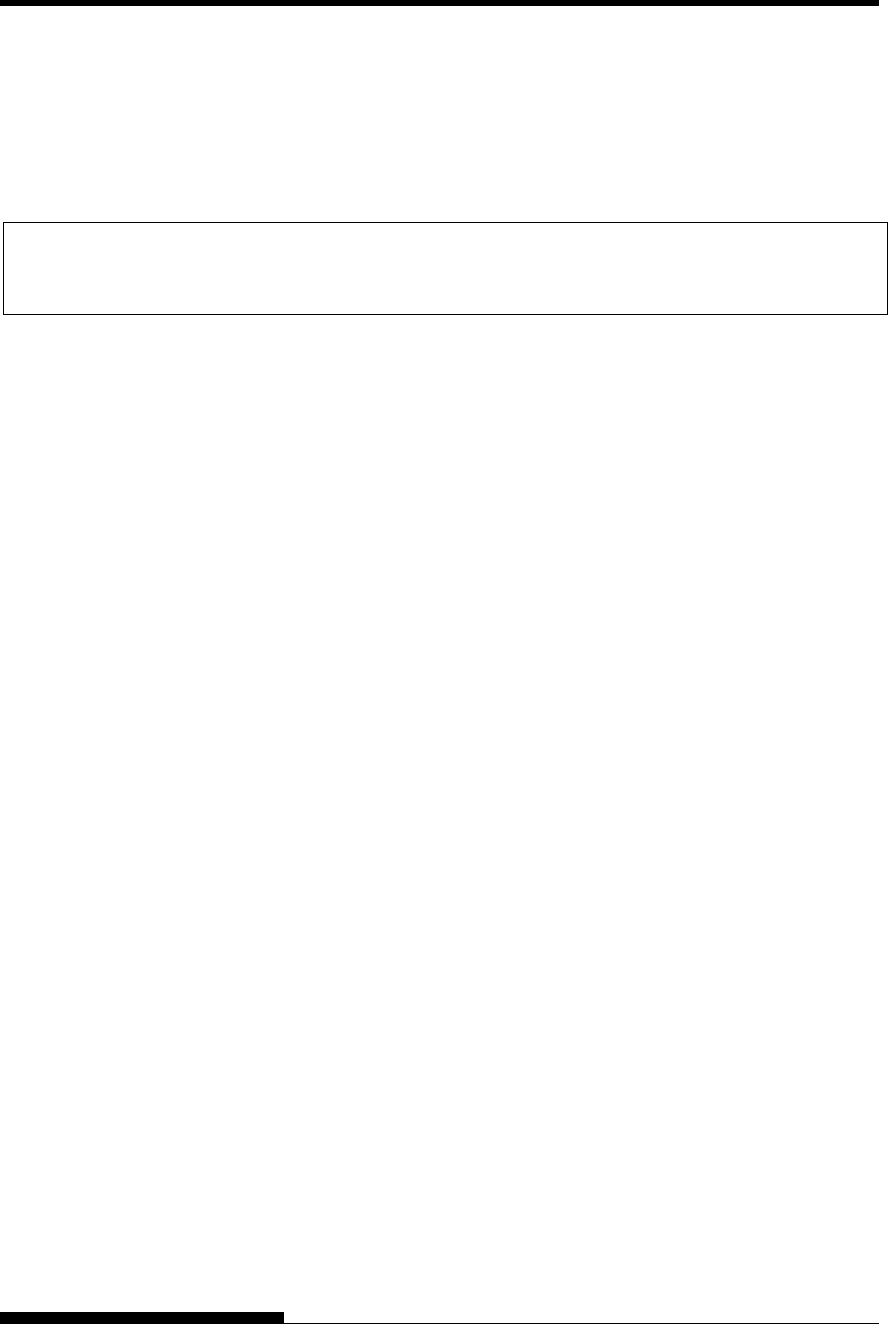
USING SETUP MODE
User's Manual 5-51
1. Enter setup mode.
Press the SMICRO button and the TMICRO button
simultaneously until the printer beeps. Wait for the printer to
stop printing and check that the following <<FUNCTION>>
menu is printed:
<< FUNCTION >>
SAVE&END MENU1 MENU2 HARDWRE ADJUST CONFIG GAP-ADJ DEFAULT LIST SELF-TST
HEX-DUMP V-ALMNT INITIAL
2. Select the DEFAULT function.
Repeatedly press the “TEAR OFF” or “LOAD” button to
position the cursor on the left edge of the aluminum print guide
on DEFAULT. Press the S button or the T button to select the
DEFAULT function. The printer reprints the <<FUNCTION>>
menu. The default values in MENU1 and MENU2 are now
reset.
3. Do either of the following:
• Select new options for MENU1 or MENU2.
• Exit setup mode, saving the factory defaults.
See the section MENU1 and MENU2 Items and Options. To
exit setup mode and save the new defaults, make sure that the
cursor on the left edge of the aluminum print guide are
positioned on SAVE & END, then press the S MICRO button
or the T MICRO button.
This section describes how to use the following diagnostic functions:
• SELF-TST
• HEX-DUMP
• V-ALMNT
These functions are used for checking print quality and diagnosing
printer problems. HEX-DUMP also provides useful information for
programmers.
Printing the Self-Test
The SELF-TST function prints test pages to check how the printer
operates independently of your computer. The self-test does not check
the interface between the computer and the printer.
The self-test prints the printer’s firmware version, its resident emulations,
and all of the characters available in the currently selected character set.
If the DPL24C PLUS emulation is selected for MENU1, the self-test is
printed using the settings currently assigned to MENU1.
USING THE
DIAGNOSTIC
FUNCTIONS
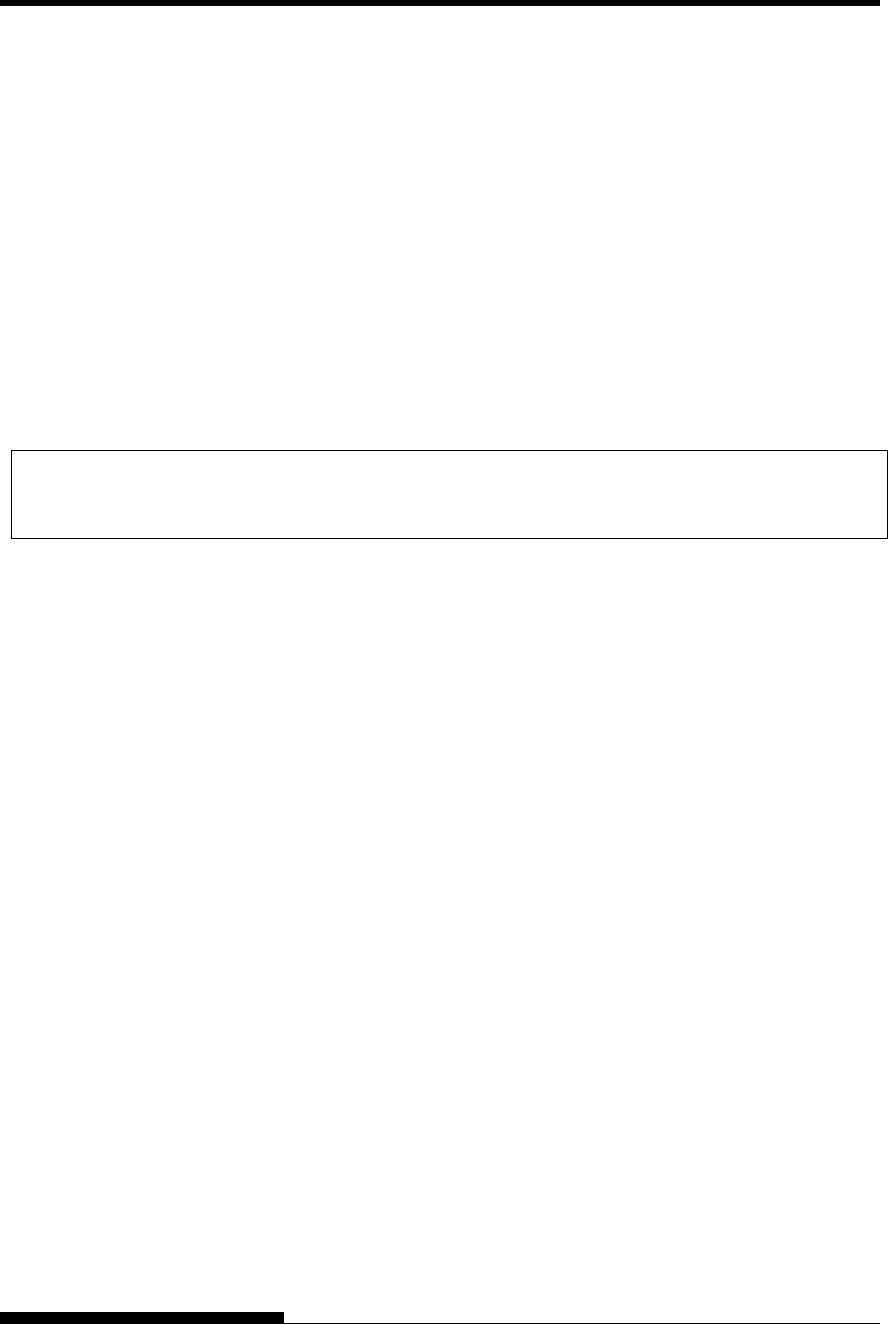
USING SETUP MODE
5-52 User's Manual
Procedure
This procedure assumes that you are in setup mode. To print the selftest,
make sure that continuous forms paper is loaded into the printer.
Then proceed as follows:
1. Print the <<FUNCTION>> menu.
The <<FUNCTION>> menu should be the last printed line on
the page. If the menu is not printed, press the ONLINE button to
print the menu. If you are using the HEX-DUMP function,
press the “TEAR OFF” or “LOAD” button instead of the
ONLINE button to print the menu. The following
<<FUNCTION>> menu is printed: The following
<<FUNCTION>> menu is printed:
<< FUNCTION >>
SAVE&END MENU1 MENU2 HARDWRE ADJUST CONFIG GAP-ADJ DEFAULT LIST SELF-TST
HEX-DUMP V-ALMNT INITIAL
2. Select the SELF-TST function.
Repeatedly press the “TEAR OFF” or “LOAD” button to
position the cursor on the left edge of the aluminum print guide
on SELF-TST, and then press the “S” button or the “T”
button. The printer selects SELF-TST and starts printing. A
short help menu is printed at the top of the page, followed by the
selftest. Note that the printer is not online during self-test
printing.
3. Examine the self-test page.
A sample self-test page is shown in Chapter 2. To pause during
self-test printing, press the “S” button or the “T” button. To
resume self-test printing, press the “S” button or the “T”
button again.
4. Exit the SELF-TST function.
Exit the SELF-TST function in either of the following ways:
• To exit SELF-TST and remain in setup mode, press the
LF/FF button. The <<FUNCTION>> menu is then
reprinted.
• To exit SELF-TST and return online, press the ONLINE
button. The printer permanently saves any changes made
while in setup mode and returns online.
The self-test can also be started by turning off the printer, and then
pressing the LF/FF button while turning the printer back on. As
described in Chapter 2, this method is useful when you first set up the
printer.
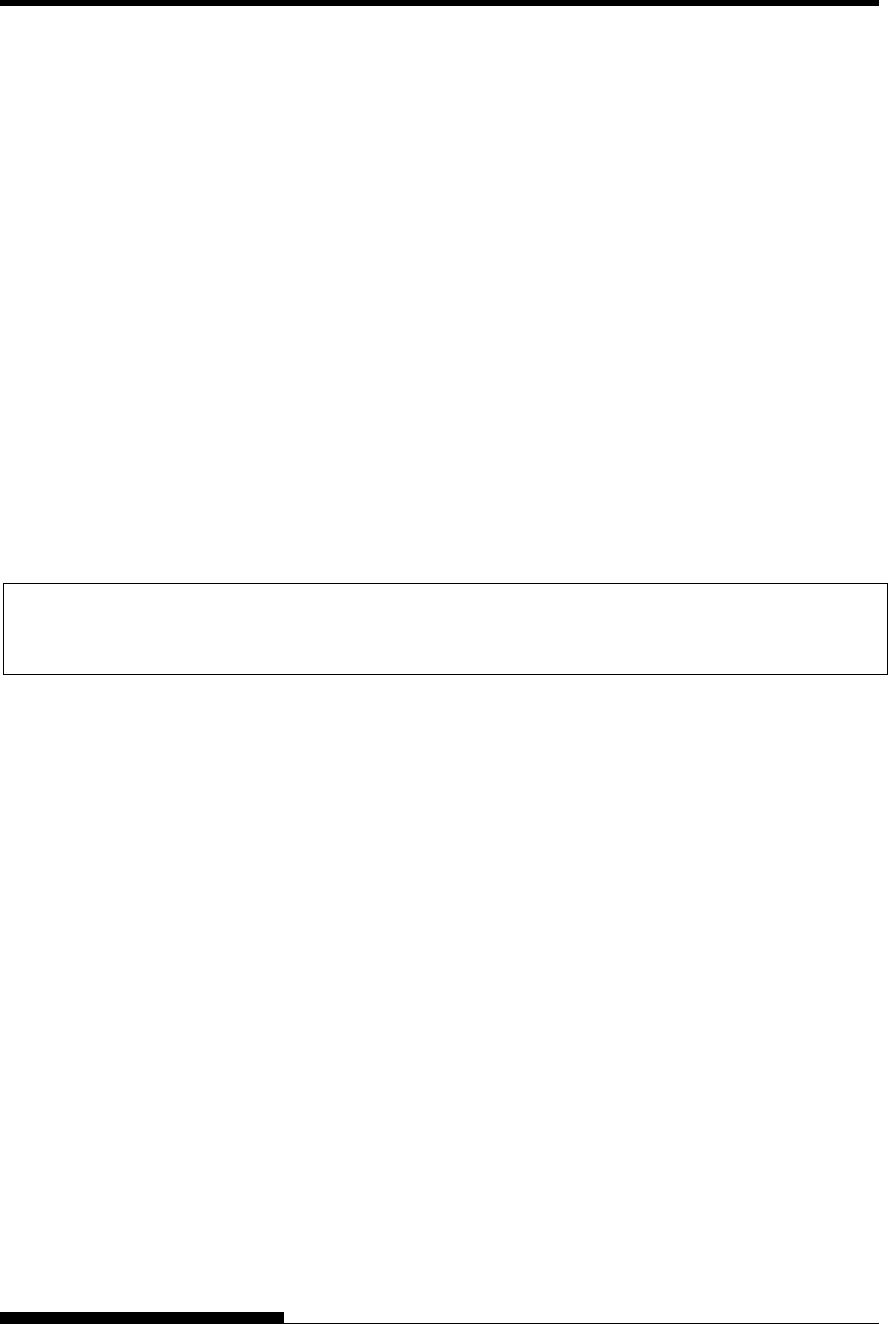
USING SETUP MODE
User's Manual 5-53
Printing Hex Dumps
The HEX-DUMP function prints data and commands in hexadecimal
characters and abbreviated control codes. The IBM character set 2 is
used for printing (see Appendix E). The HEX-DUMP function is useful
for checking whether your computer is sending the correct commands to
the printer and whether the printer is executing the commands correctly.
It is also useful for debugging software programs.
Procedure
To print hex dumps, make sure that continuous forms paper is loaded
into the printer. Then proceed as follows:
1. Enter setup mode.
Press the S MICRO button and the T MICRO button
simultaneously until the printer beeps. Wait for the printer to
stop printing and check that the following <<FUNCTION>>
menu is printed:
2. Select the HEX-DUMP function.
<< FUNCTION >>
SAVE&END MENU1 MENU2 HARDWRE ADJUST CONFIG GAP-ADJ DEFAULT LIST SELF-TST
HEX-DUMP V-ALMNT INITIAL
Repeatedly press the “TEAR OFF” or “LOAD” button to
position the cursor on the left edge of the aluminum print guide
on HEX-DUMP, then press the S button or the T button to
select the HEX-DUMP function. The printer goes online and
prints a header and a short help menu.
3. Print the hex dump.
To start hex dump printing, send your file or program to the
printer. The printer goes online and prints the hex dump.
Press the S MICRO button or the T MICRO button to pause
during hex dump printing. To resume hex dump printing, press
the button again.
NOTE
When hex dump printing stops, the printer remains online
in setup mode (the ONLINE indicator is green). To print
another hex dump, send another file to the printer.
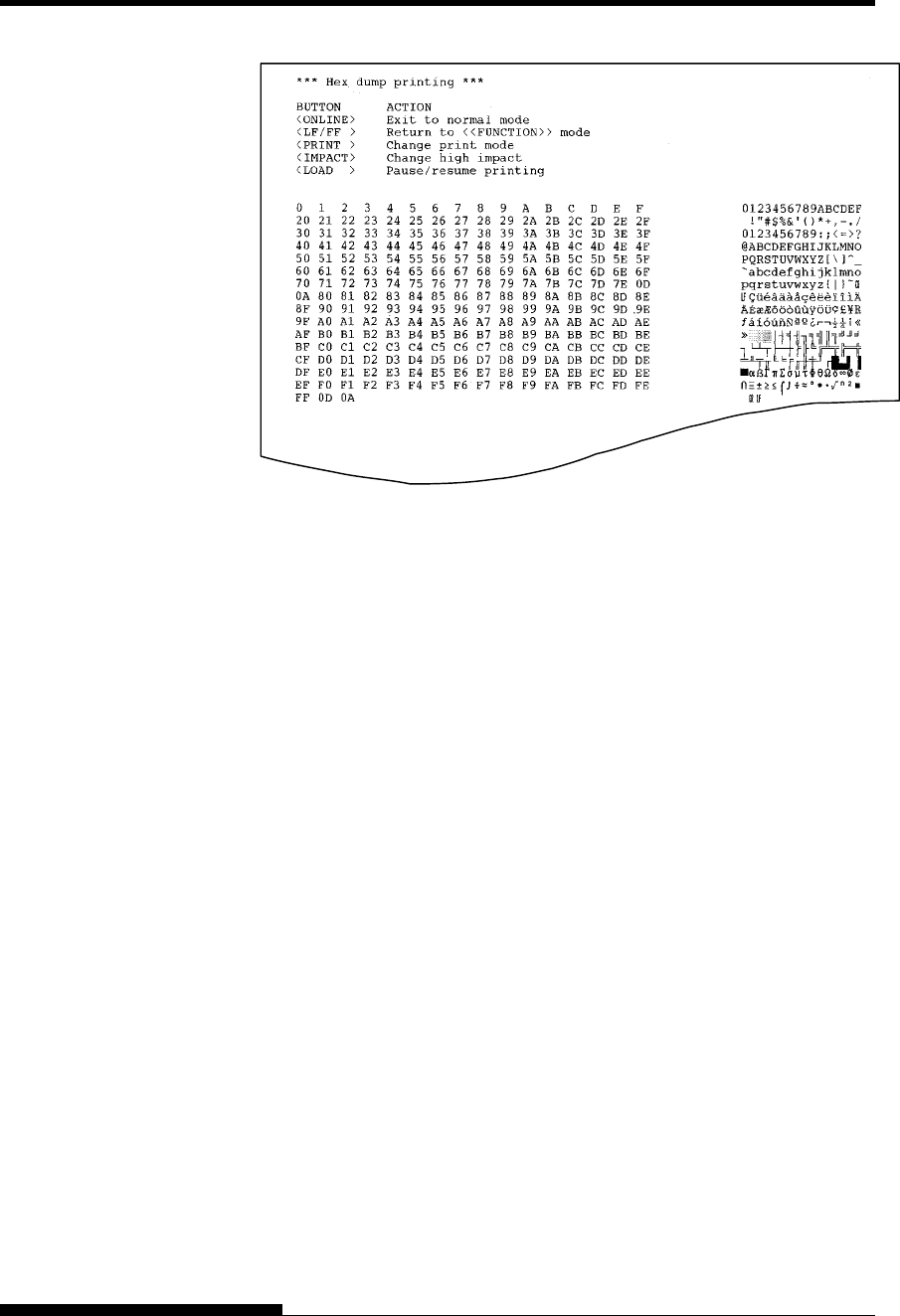
USING SETUP MODE
5-54 User's Manual
Sample hex dump
4. Exit the HEX-DUMP function.
Exit the HEX-DUMP function in either of the following ways:
• To remain in setup mode, press the LF/FF button. The
<<FUNCTION>> menu is then reprinted. For details on
other functions, see other sections in this chapter.
• To return to online normal mode, press the ONLINE
button.
If you press the ONLINE button while the hex dump is
printing, the printer immediately switches to normal online
mode, but data that was sent to the printer is printed.
You can also enter hex dump mode, by turning off the printer, and then
turning the printer back on while simultaneously pressing the ONLINE
button and the LF/FF button until the printer beeps.
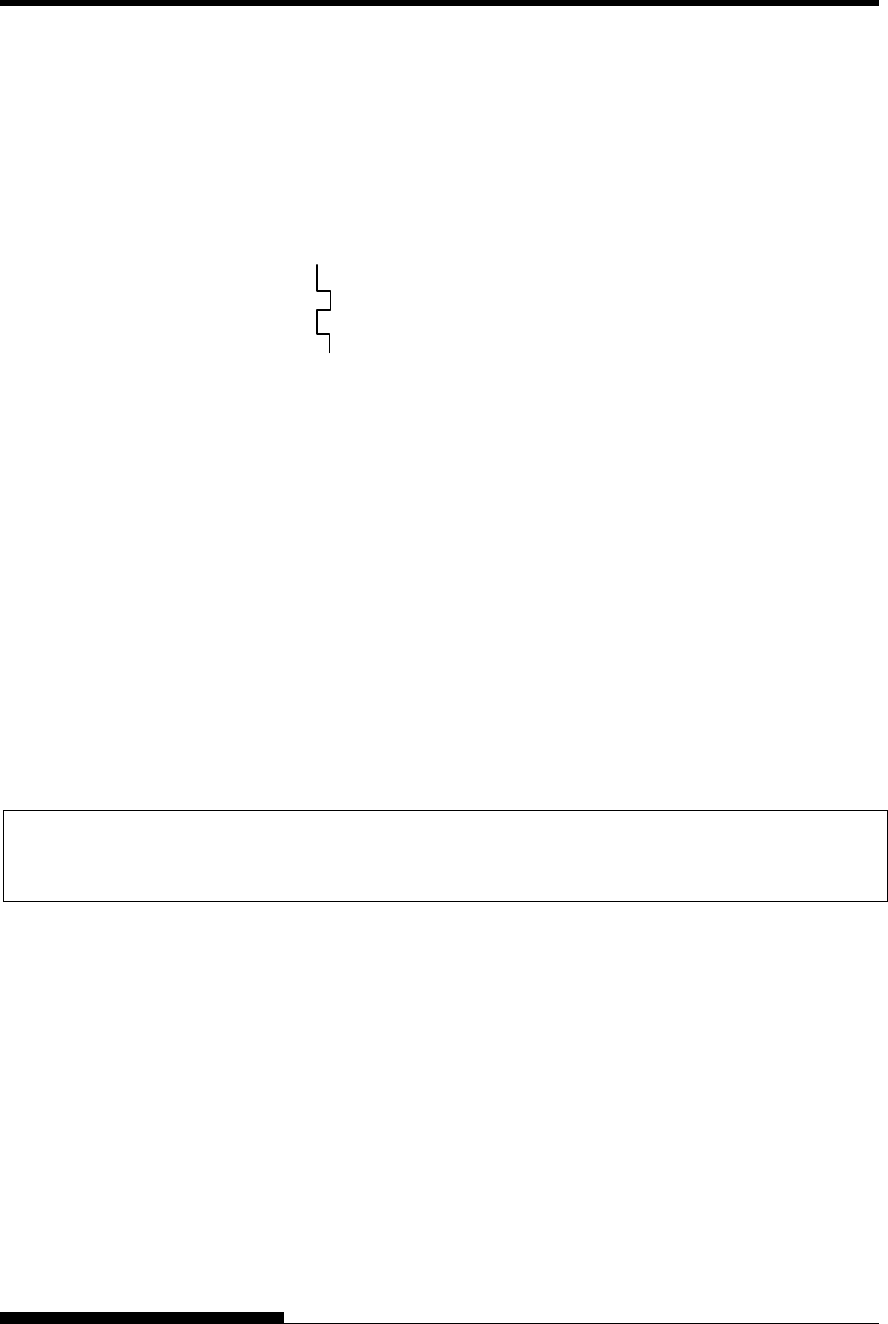
USING SETUP MODE
User's Manual 5-55
Checking Vertical Print Alignment (V-ALMNT)
The V-ALMNT function corrects the vertical character displacement that
sometimes occurs with bidirectional printing. Characters printed from
left to right are not aligned with characters printed from right to left as
shown below:
This example shows how printing looks
when characters are vertically
misaligned. Note that the left
margin is not straight.
If you notice misaligned printing, use the following procedure to check
and correct the vertical print alignment.
Procedure
Make sure that continuous forms paper is loaded in the printer. If
possible, use forms at least 356 mm (14 inches) wide to avoid printing on
the platen. However, you can also use letter or A4 size forms if you set
the WIDTH option in MENU1 to 8 inches. See the section Changing
MENU1 and MENU2 Items and Options for details. Then proceed as
follows to check and correct vertical print alignment:
1. Enter setup mode.
Press the S MICRO button and the T MICRO button
simultaneously until the printer beeps. Wait for the printer to
stop printing and check that the following <<FUNCTION>>
menu is printed:
<< FUNCTION >>
SAVE&END MENU1 MENU2 HARDWRE ADJUST CONFIG GAP-ADJ DEFAULT LIST SELF-TST
HEX-DUMP V-ALMNT INITIAL
2. Select the V-ALMNT function.
Repeatedly press the “TEAR OFF” or “LOAD” button to
position the cursor at V-ALMNT, then press the “S” button or
the “T” button to select the V-ALMNT function. The printer
prints the help menu then starts printing rows of parallel bars
using letter quality speed.
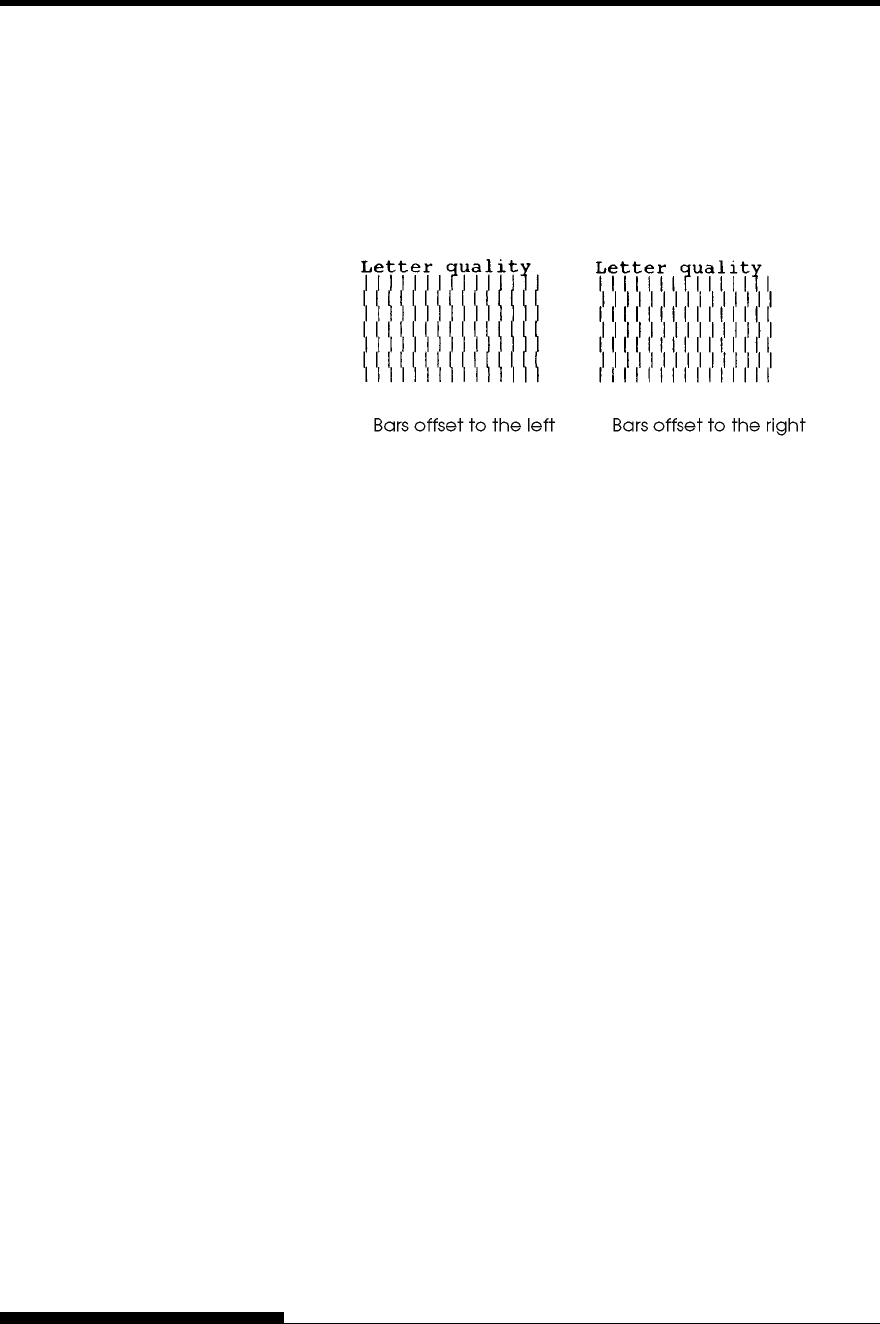
USING SETUP MODE
5-56 User's Manual
3. Adjust the vertical print alignment at letter quality speed.
Examine the parallel bars. If the bars are aligned (not jagged),
go to step 4. If the bars are offset to the left, repeatedly press the
“LOAD” button until the bars are aligned. If the bars are offset
to the right, repeatedly press the “TEAR OFF” button until the
bars are aligned. (In the following figure, the first line is
assumed to be printed from left to right.)
4. Adjust the vertical print alignment at correspondence speed.
Press the “TEAR OFF” button to switch from letter speed to
correspondence speed.
Examine the parallel bars and adjust the vertical print alignment
as described in step 3.
Press the HI IMPACT button to enter Hi Impact mode. Make
similar adjustments.
5. Adjust the vertical print alignment at draft speed.
Press the “TEAR OFF” button to switch from correspondence
speed to draft speed.
Examine the parallel bars and adjust the vertical print alignment
as described in step 3.
Press the HI IMPACT button to enter Hi Impact mode. Make
similar adjustments.
6. Adjust the vertical print alignment at high draft speed.
Press the “TEAR OFF” button to switch from draft speed to
high draft speed.
Examine the parallel bars and adjust the vertical print alignment
as desoribed in step 3.
Press the HI IMPACT button to enter Hi Impact mode. Make
similar adjustments.
7. Exit the V-ALMNT function.
Press the ONLINE button to exit the V-ALMNT function and
save the new vertical alignment settings. The printer exits setup
mode and returns online.
NOTE
To exit the V-ALMNT function, you must exit setup mode.
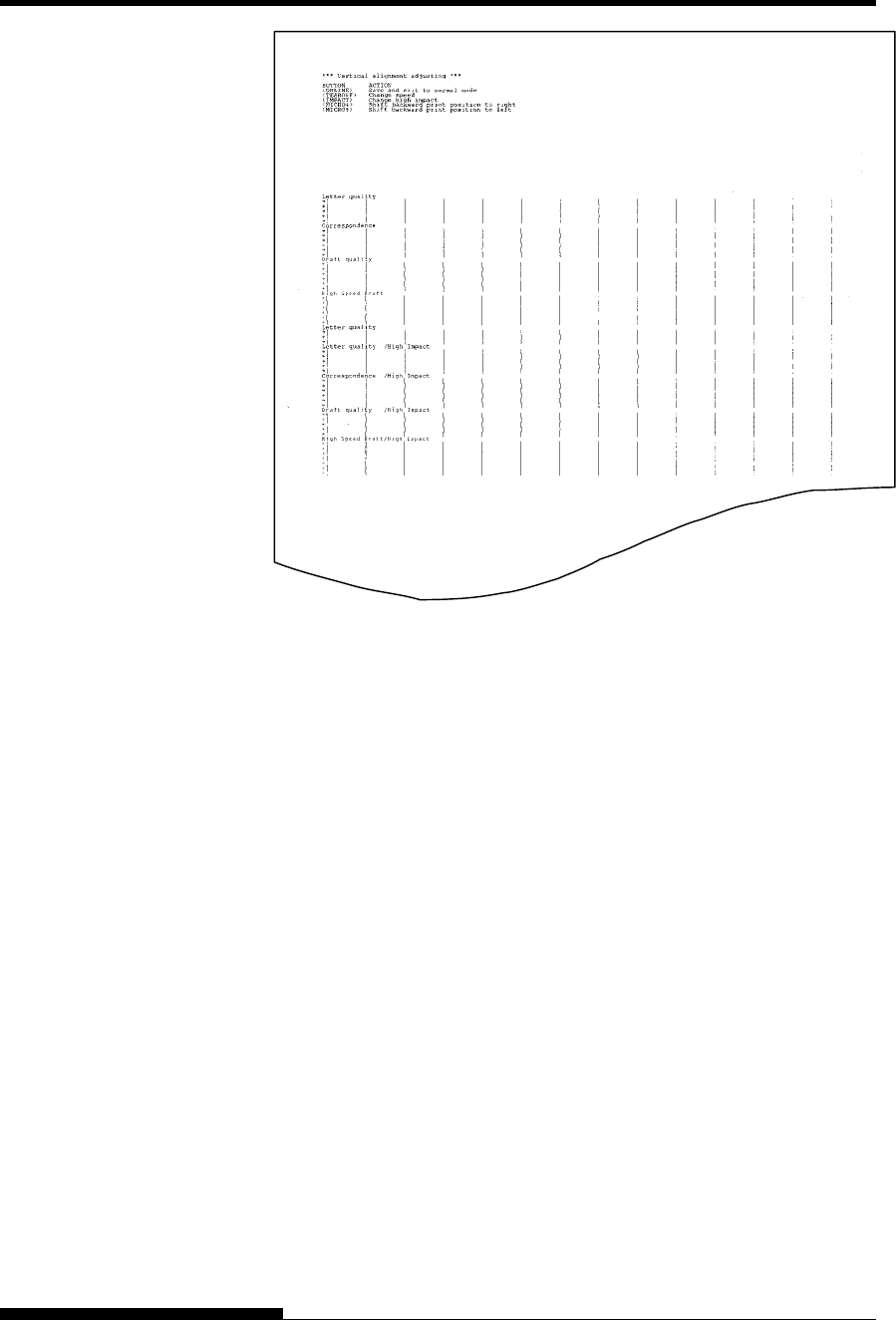
USING SETUP MODE
User's Manual 5-57
Correct vertical print alignment
The following flowchart shows how setup mode is organized for the
Fujitsu DPL24C PLUS emulation. Differences in the IBM Proprinter
XL24E and Epson ESC/P2 emulations are summarized after the
flowchart.
SETUP MODE
REFERENCE
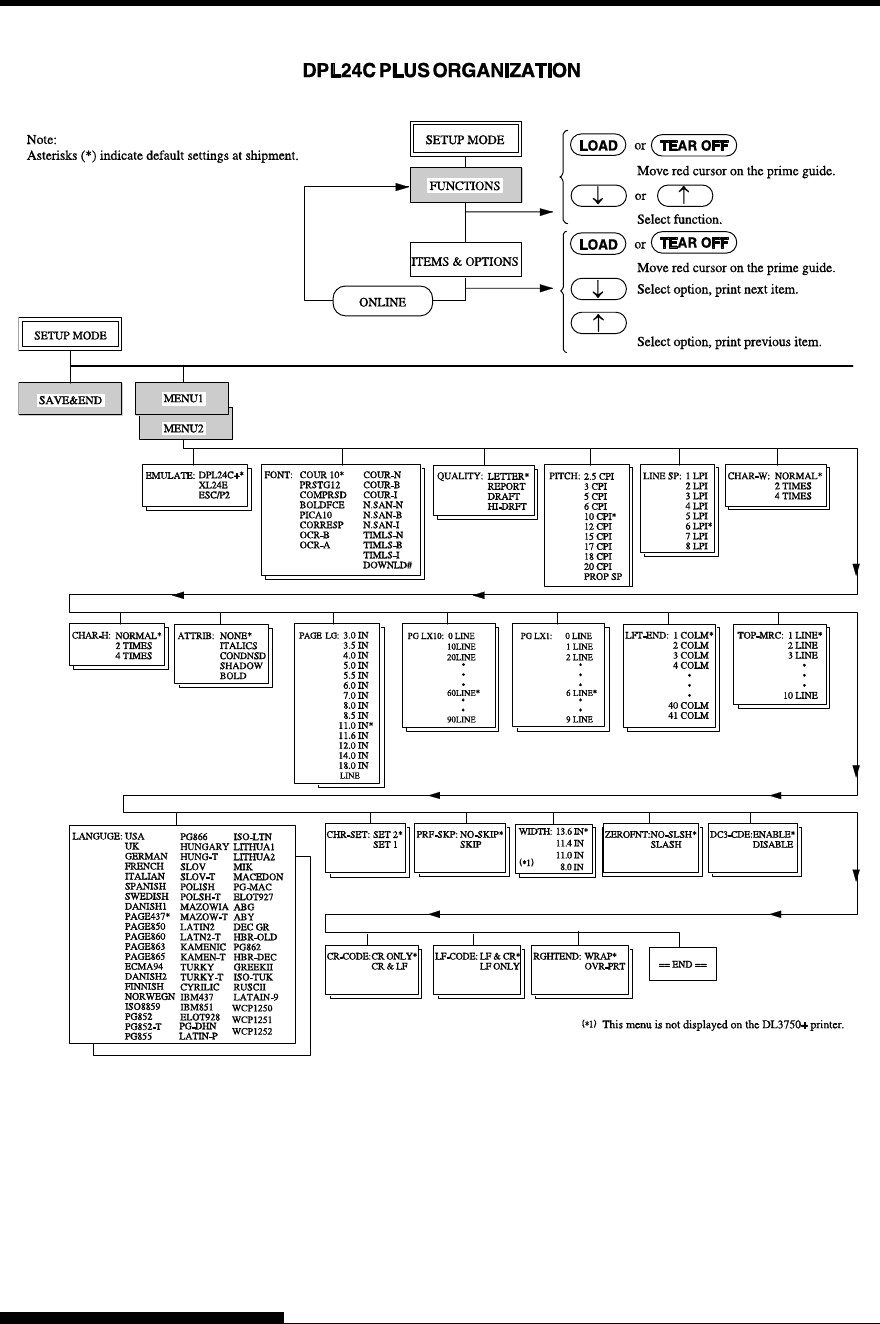
USING SETUP MODE
5-58 User's Manual
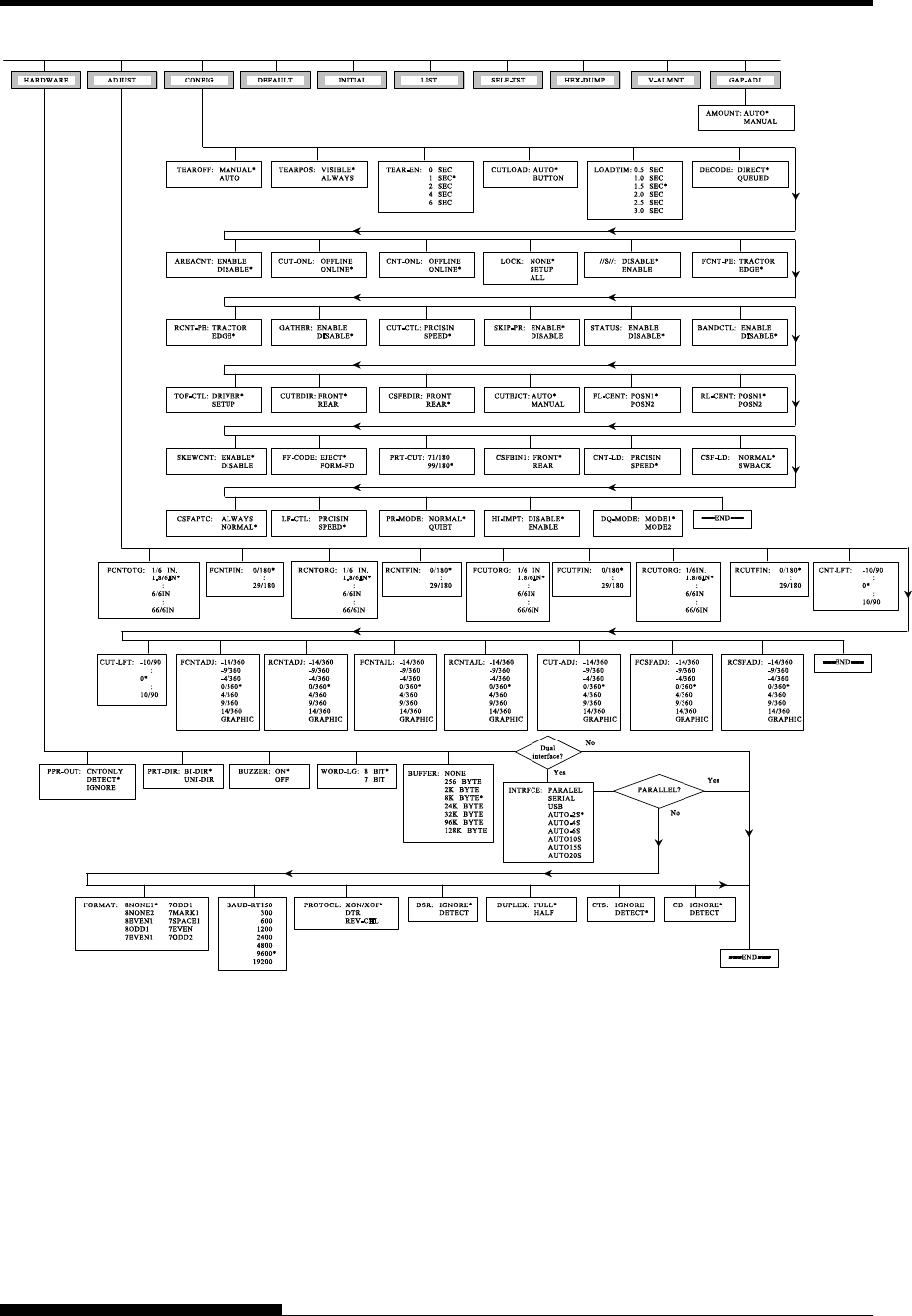
USING SETUP MODE
User's Manual 5-59
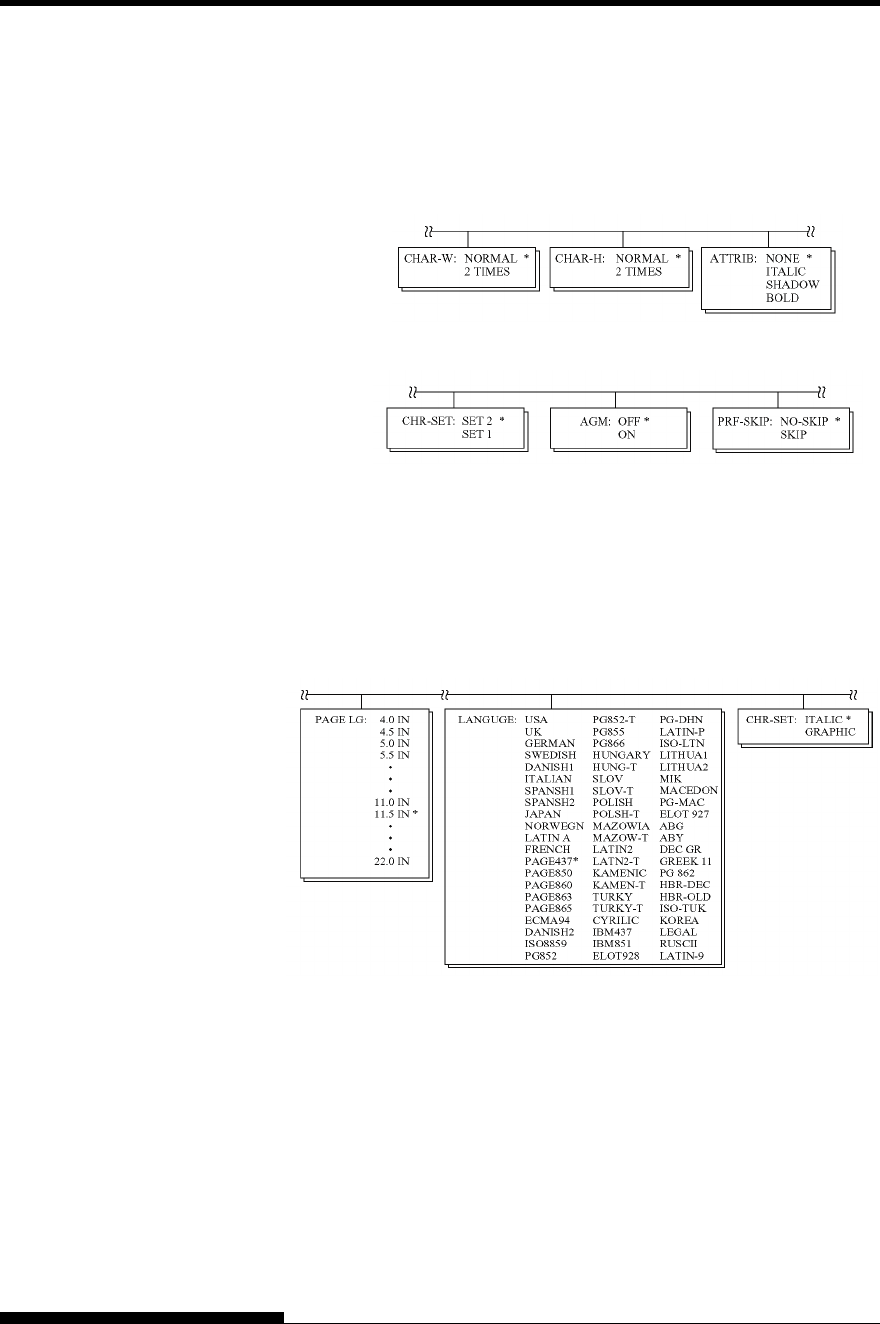
USING SETUP MODE
5-60 User's Manual
Differences in IBM Proprinter XL24E Emulation
In the IBM Proprinter XL24E emulation, MENU1 and MENU2 differ
from the DPL24C PLUS emulation in the following ways:
• The following options are different:
• The AGM item is provided:
Differences in Epson ESC/P2 Emulation
In the Epson ESC/P2 emulation, MENU1 and MENU2 differ from the
DPL24C PLUS emulation in the following ways:
• The ZEROFNT and LF-CODE items are not defined.
• The following options are different:
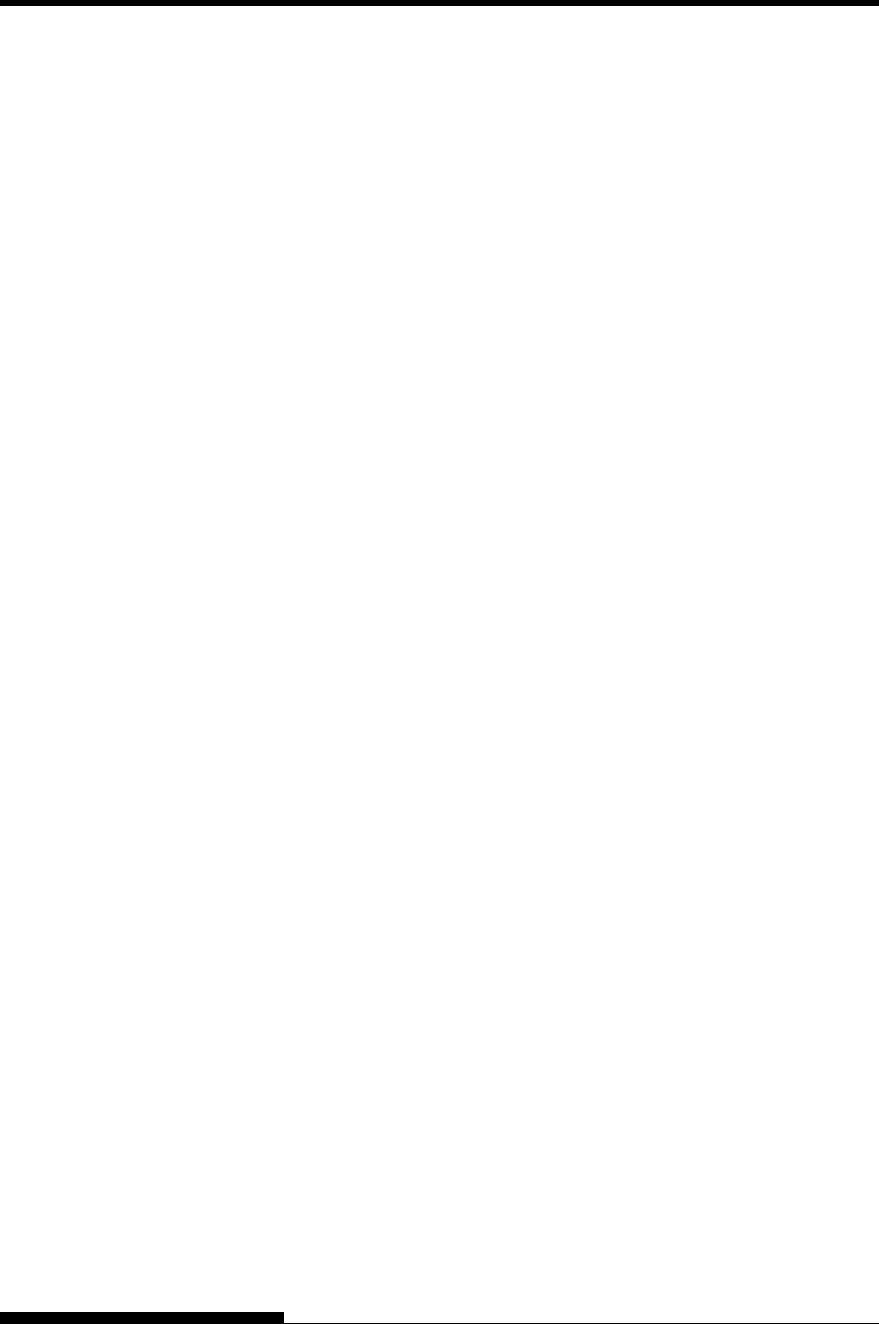
USING SETUP MODE
User's Manual 5-61
The preceding sections describe offline setup mode. This section
introduces online setup mode. The tedious task of setting up printer
features one-by-one from the control panel and printing and checking the
desired options on paper can be avoided by using online setup mode. In
online setup mode, printer features are set via the computer rather than
the printer control panel.
Put the printer in online setup mode, in either of the following two ways:
• Turn the printer off and then turn the printer back on while
pressing the TEAR OFF button. Hold down the button until the
printer beeps.
• Issue the printer command ESC e ONLINE. This command is
valid in any emulation.
Send setup data from the computer in any of the following three ways:
• Enter setup data directly from the computer keyboard before
starting your job. With MS-DOS, hold down the Ctrl key and
type P. Data entered from the keyboard is sent directly to the
printer. When data entry is complete, hold down the Ctrl key
again and type P. This method is useful when just a few settings
need to be changed.
• Use an editor program to prepare a setup data file and then send
the file to the printer using a command before starting your job.
With MS-DOS, use the COPY command. This method is useful
when settings are used repeatedly.
• Write a program that enables interactive entry of setup data on
the CRT screen. This method is the most useful of the three.
This printer is provided with a floppy disk which contains this
program called DLMENU. For DLMENU, see the last section
of chapter 2.
To exit from online setup mode, send EXIT as the last setup data.
For details of setup data and its format, refer to the programmer’s manual
for each emulation.
ONLINE SETUP
MODE
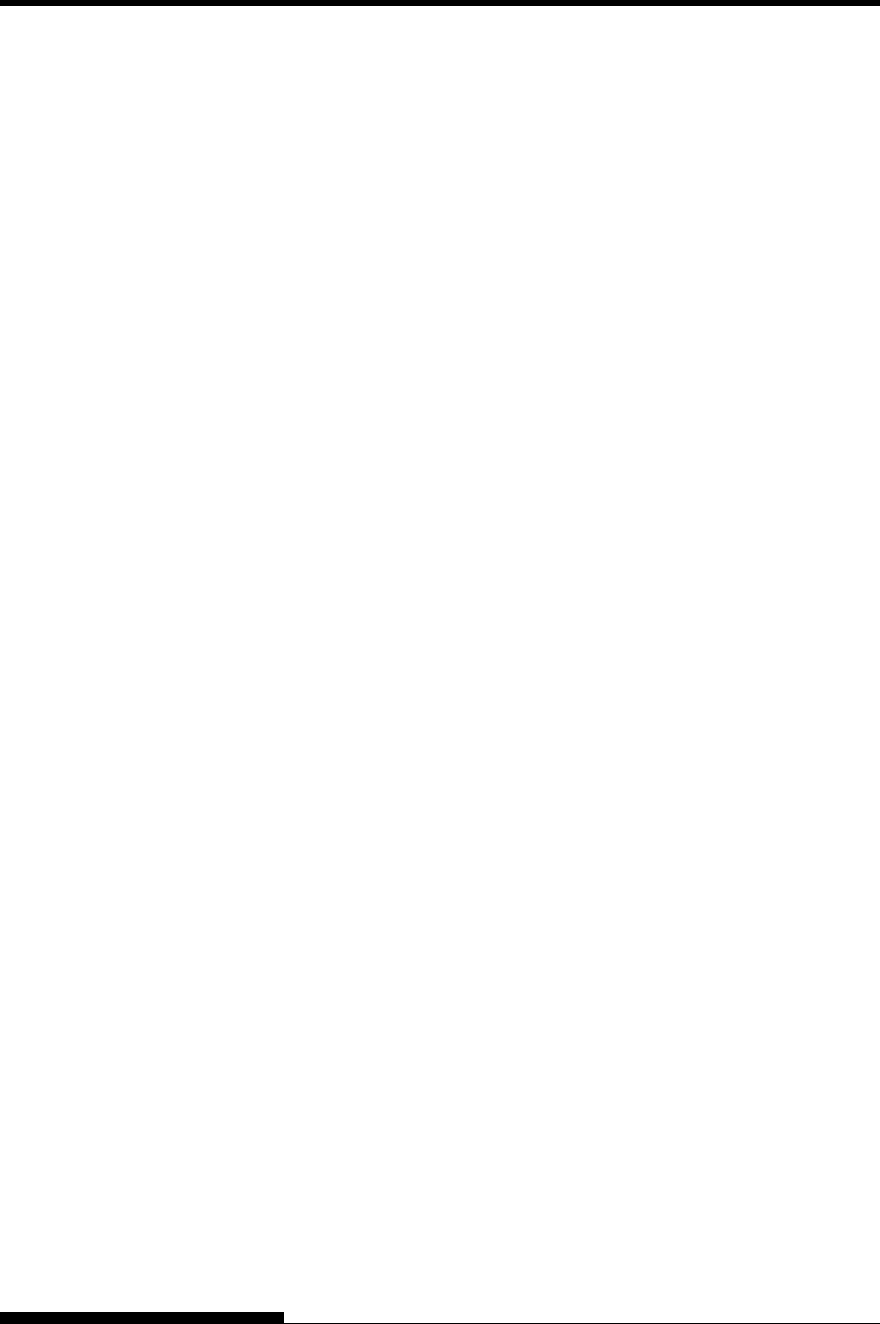
USING SETUP MODE
5-62 User's Manual
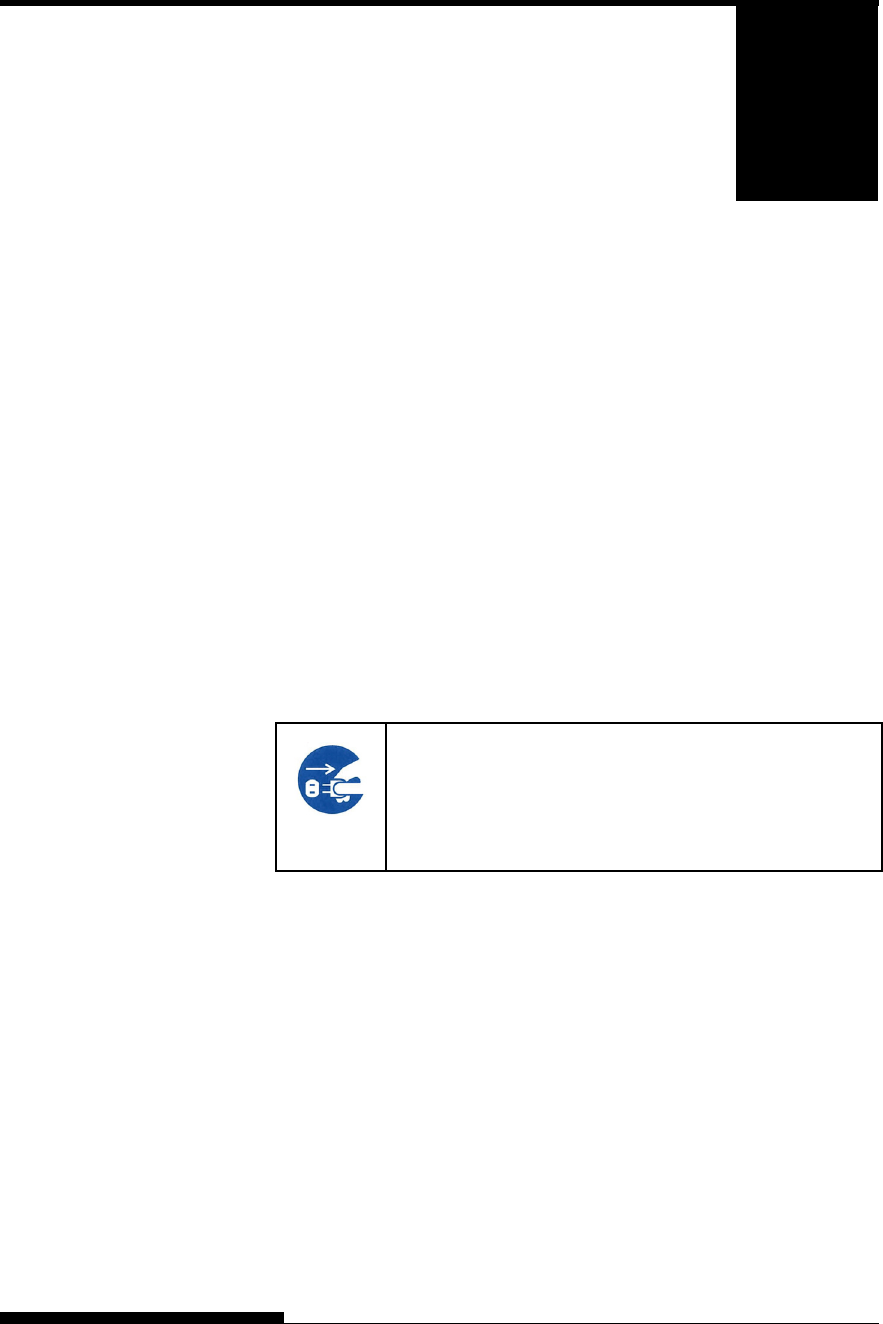
User's Manual 6-1
6
CHAPTER 6 MAINTENANCE
MAINTENANCE
Your printer requires very little care. Occasional
cleaning and replacement of the ribbon cartridge
are all that is required.
Lubrication of the printer is usually not necessary.
If the print head carriage does not move smoothly back and forth, clean
the printer as described in this chapter. If the problem continues, contact
your dealer to determine whether lubrication might be needed.
The front cover, the rear stacker, and the paper table of the printer help
protect against dust, dirt, and other contaminants. However, paper
produces small particles that accumulate inside the printer.
This section explains how to clean and vacuum the printer and how to
clean the platen.
It is easier to clean the printer when the front cover and the rear stacker
are removed.
Cleaning and Vacuuming the Printer
WARNING
To avoid any possibility of injury, before cleaning the
printer, turn off the power to both the printer and the
computer, and unplug the printer.
Use the following procedure to clean and vacuum the printer as required:
1. Remove any paper from the printer. Make sure that the power is
off, and then disconnect the printer power cord.
2. Using a soft vacuum brush, vacuum the exterior of the printer.
Be sure to vacuum the air vents at the front, left sides, and
bottom of the printer. Also vacuum the paper table, rear stacker,
and the cut sheet feeder.
3. Use a soft, damp cloth to wipe the exterior of the printer,
including the cover, paper table, and rear stacker. A mild
detergent may be used.
CAUTION
Do not use solvents, kerosene, or abrasive cleaning materials
that may damage the printer.
CLEANING
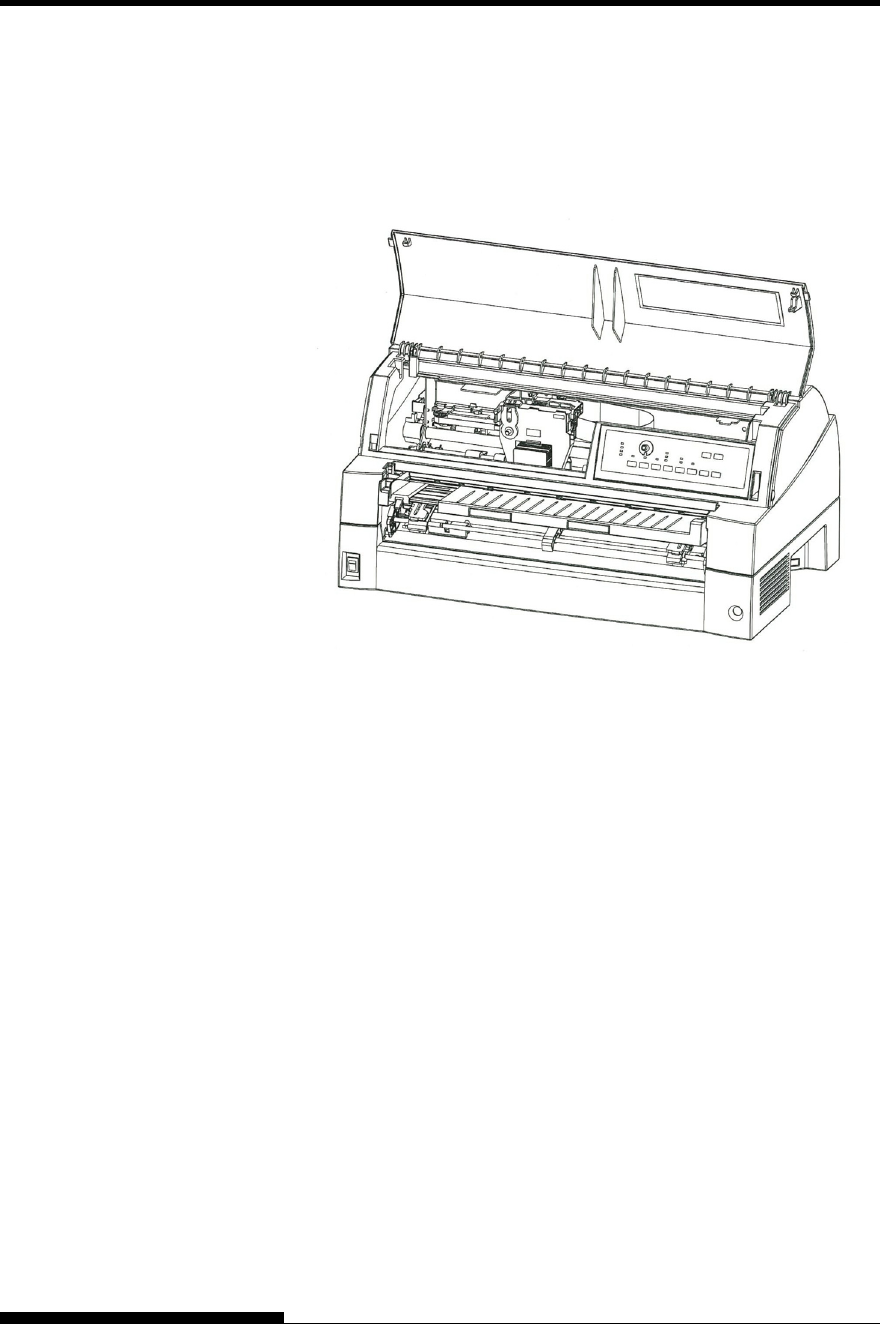
MAINTENANCE
6-2 User's Manual
4. Open the front cover of the printer and remove the ribbon
cartridge. Using a soft vacuum brush, gently vacuum the platen,
print head carriage, and surrounding areas. You can easily slide
the print head to the left or right when the power is off. Be
careful not to press too hard on the flat ribbon cable that extends
from the print head carriage.
Printer interior
5. Re-install the ribbon cartridge. Close the front cover.
6. Raise the paper table and rear stacker. Vacuum the forms
tractors and surrounding areas.
Cleaning the Platen
Clean the platen about once a month to remove excess ink. Use the
platen cleaner recommended by your supplier and proceed as follows:
1. Apply a small amount of platen cleaner to a soft cloth. Avoid
spilling platen cleaner inside the printer.
CAUTION
Do not use alcohol to clean the platen. Alcohol may cause the
rubber to harden.
2. Place the cloth against the platen.
3. To dry the platen, place a dry cloth against the platen.
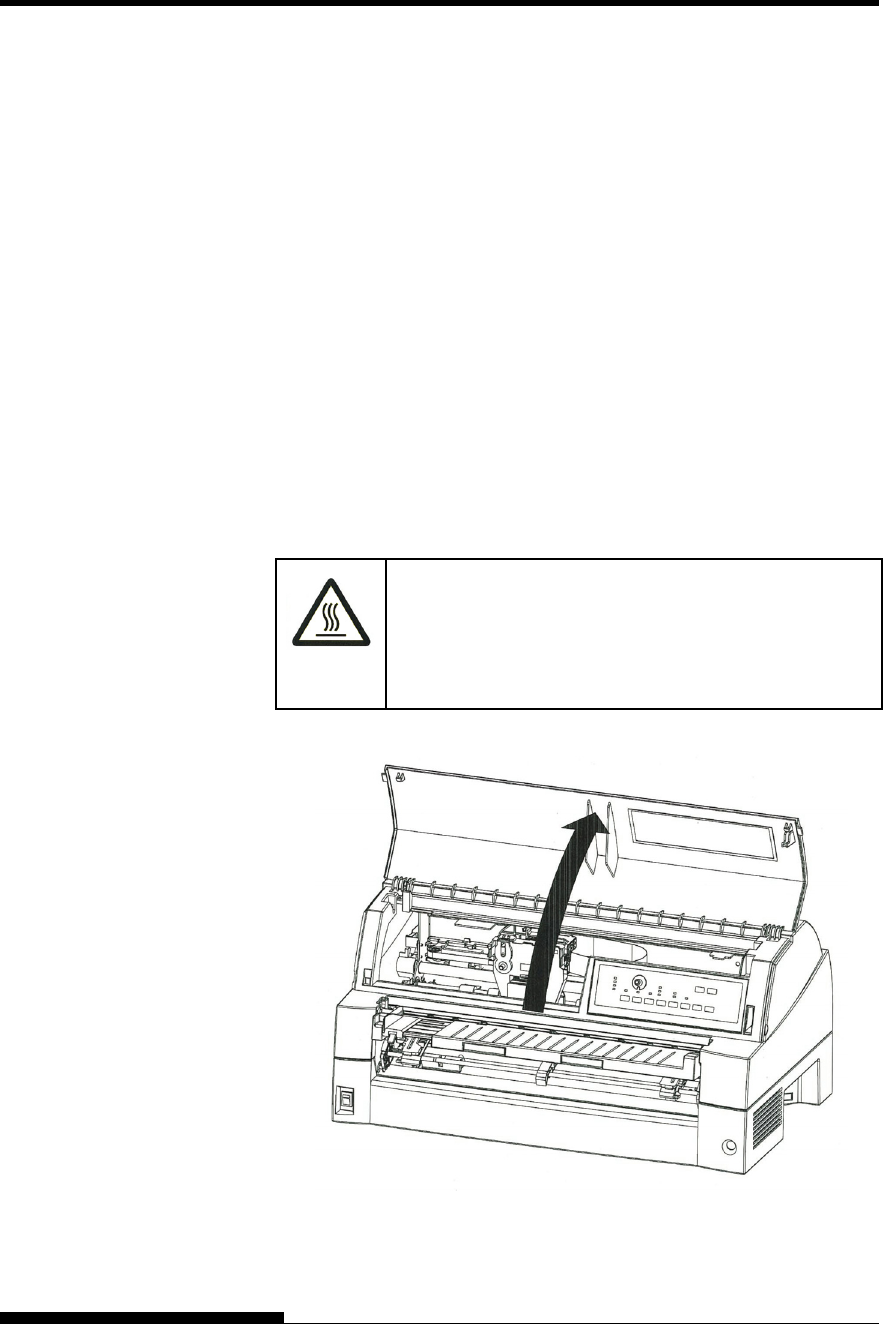
MAINTENANCE
User's Manual 6-3
There are two ways of replacing the ribbon. You can install a new ribbon
cartridge in the printer or refill the old ribbon cartridge with new ribbon
from a ribbon subcassette. Appendix A lists order numbers for ribbon
cartridges and ribbon subcassettes. The following procedure is for ribbon
cartridges. For ribbon subcassettes, refer to the instructions shipped with
the subcassette.
To replace the ribbon cartridge:
1. Turn off the printer.
Note:
If the power is turned off during or immediately after
printing, turn on the power again. Verify that the print
head has moved to the ribbon replacement position, and
then turn off the power again.
2. Open the front cover of the printer. For easy installation, slide
the print head carriage to a position for replacing the ribbon
cartridge (indicated by the triangle marking on the front of the
upper cover).
(HOT)
CAUTION <HOT>
The print head and metal frame is hot during printing
or immediately after printing. Do not touch them until
it cools down.
Paper thickness indicator
REPLACING THE
RIBBON
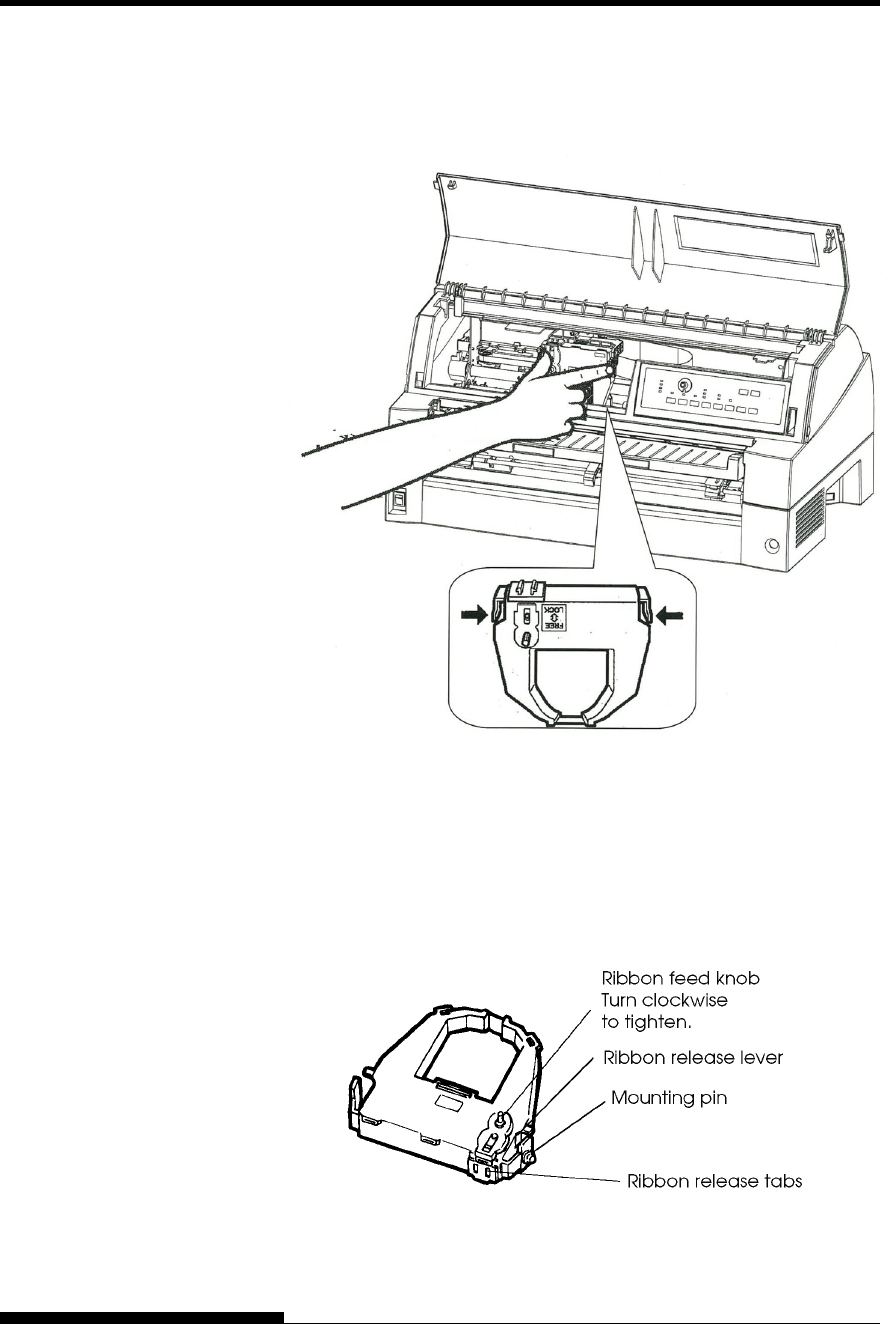
MAINTENANCE
6-4 User's Manual
3. To remove the ribbon cartridge, press the ribbon release levers
located on either side of the cartridge and carefully lift the
cartridge out of the printer.
Removing the ribbon cartridge
4. Remove the new ribbon cartridge from its package. Push in the
sides of the two ribbon release tabs. The tabs will snap into the
cartridge and the ribbon feed mechanism will engage.
Turn the ribbon feed knob clockwise to be sure that it feeds
properly.
Preparing the new ribbon cartridge
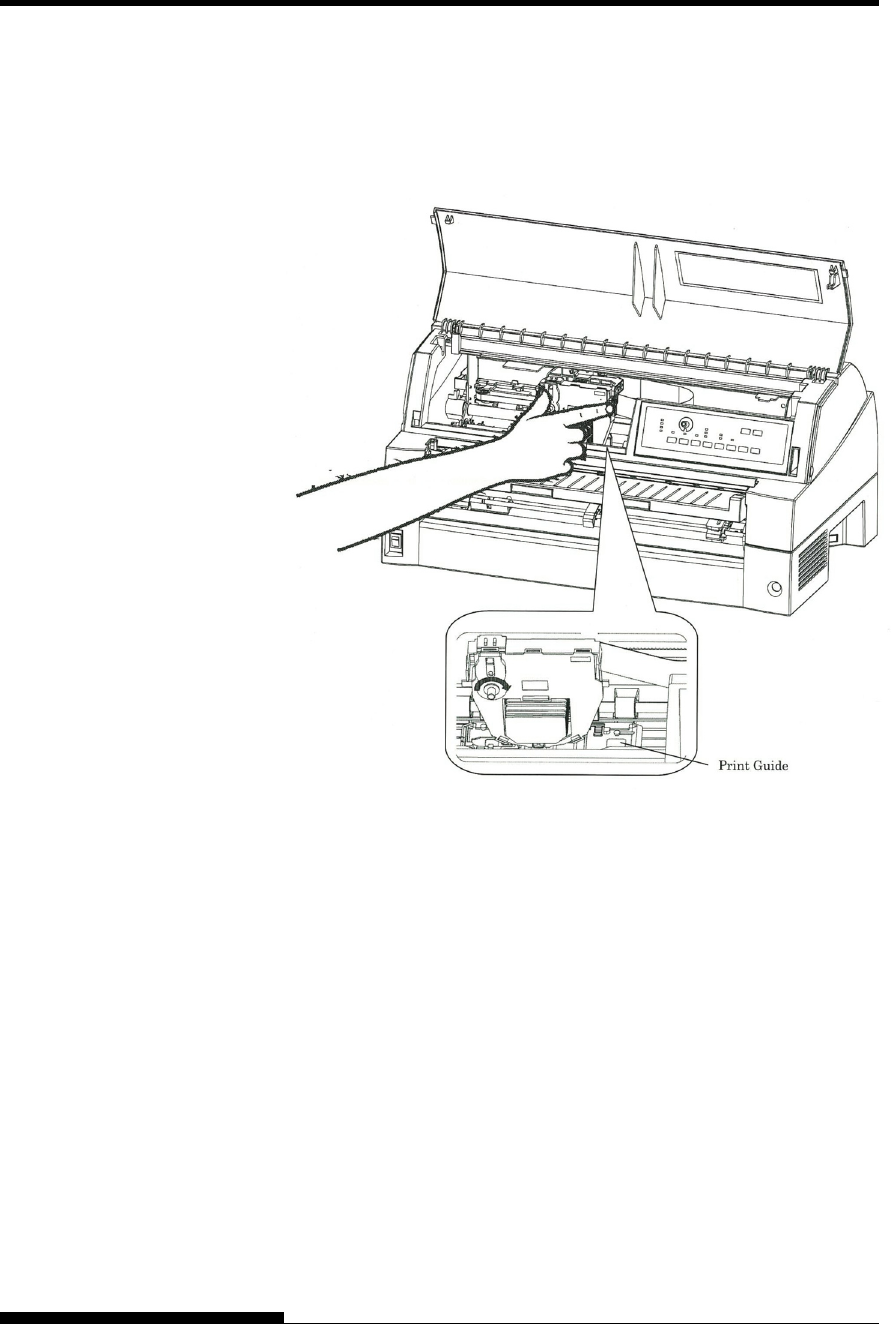
MAINTENANCE
User's Manual 6-5
5. Place the two mounting pins on the ribbon support brackets of
the head cartridge. (The two mounting pins are located on the
sides of the ribbon release levers.) Insert the ribbon so that the
ribbon falls between the nose of the print head and the plastic
print guide.
Installing the new ribbon cartridge
6. Press the ribbon release levers until the mounting pins snap into
the holes on the ribbon support brackets. Gently pull on the
cartridge to verify that the pins are securely positioned in the
holes.
7. Turn the ribbon feed knob clockwise to tighten the ribbon.
8. Close the front cover of the printer.
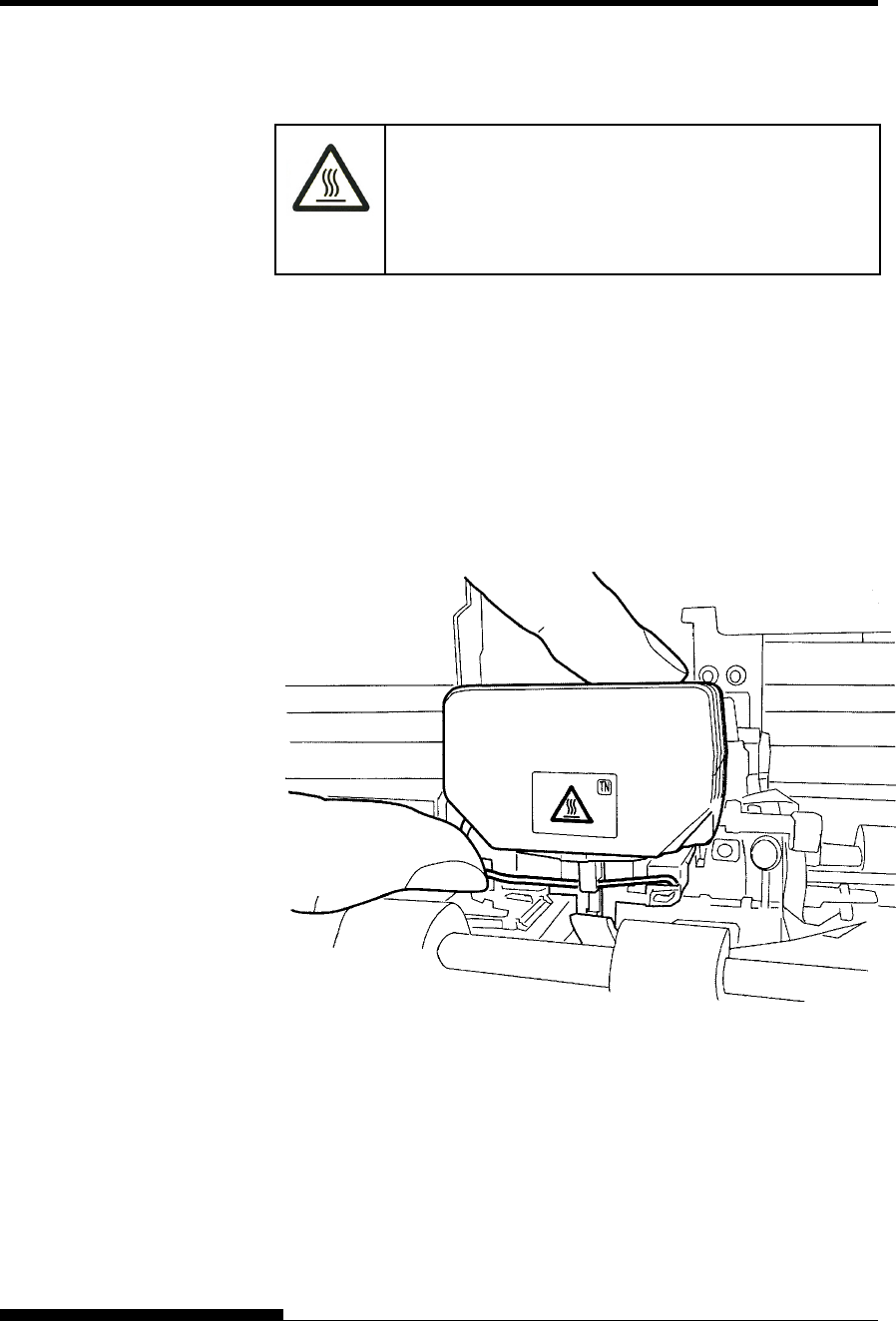
MAINTENANCE
6-6 User's Manual
The print head is easy to replace.
(HOT)
CAUTION <HOT>
The print head and metal frame is hot during printing
or immediately after printing. Do not touch them until
it cools down.
To remove the print head:
1. Turn off the printer.
2. Open the front cover of the printer and remove the ribbon
cartridge.
3. Pull the left end of the head lock wire forward to release it from
the hook at the left of the print head carriage. Then release the
wire from the center hook.
4. Release the wire (under the head) on the left side.
REPLACING THE
PRINT HEAD
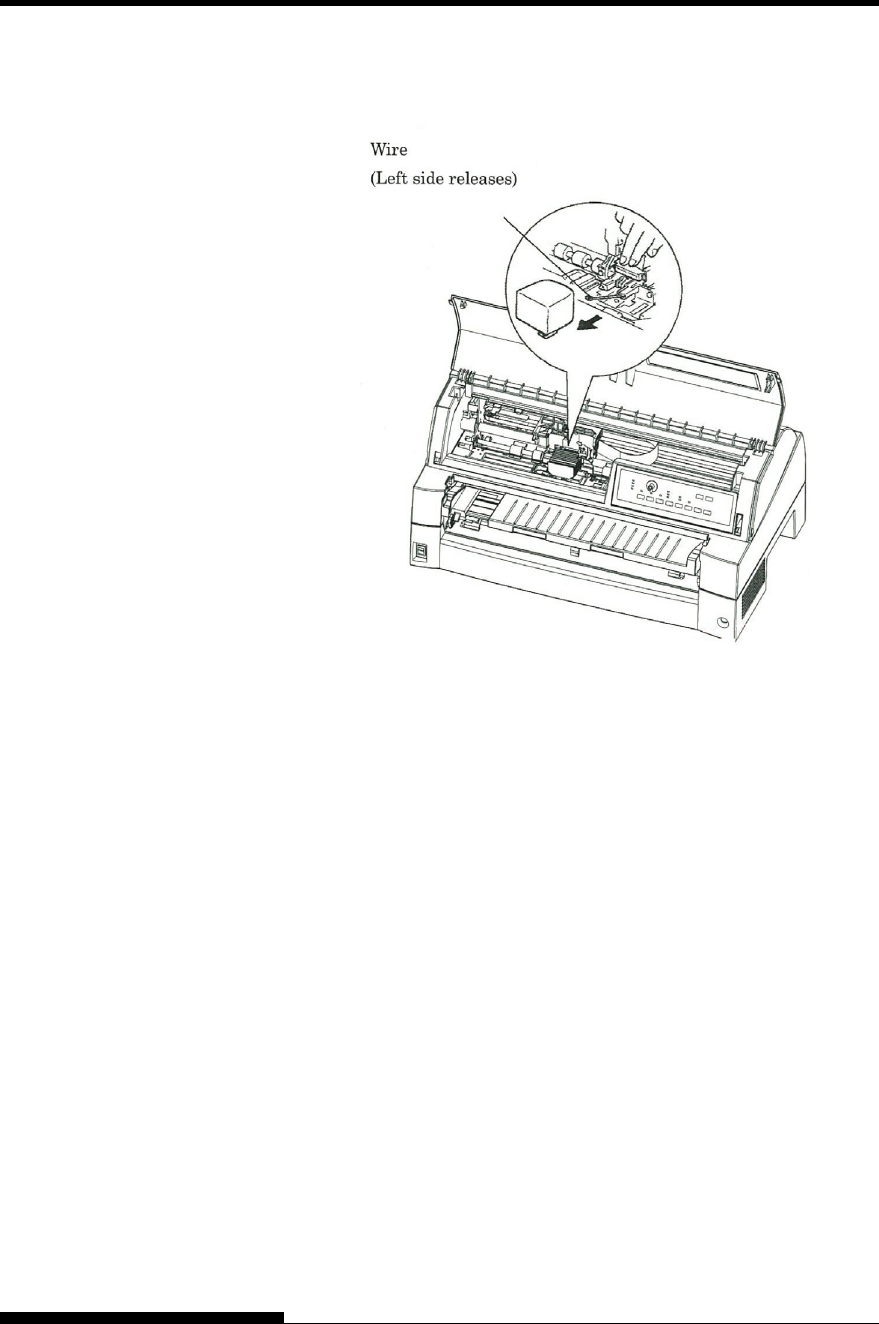
MAINTENANCE
User's Manual 6-7
5. Remove the print head from the connector on the carriage, as
shown in the figure below.
Replacing the print head
To install the print head:
1. Carefully fit the mounting guide grooves of the print head on the
locating studs on the carriage.
2. Push the print head into the connector and hook the wire into
place in the reverse order of removal.
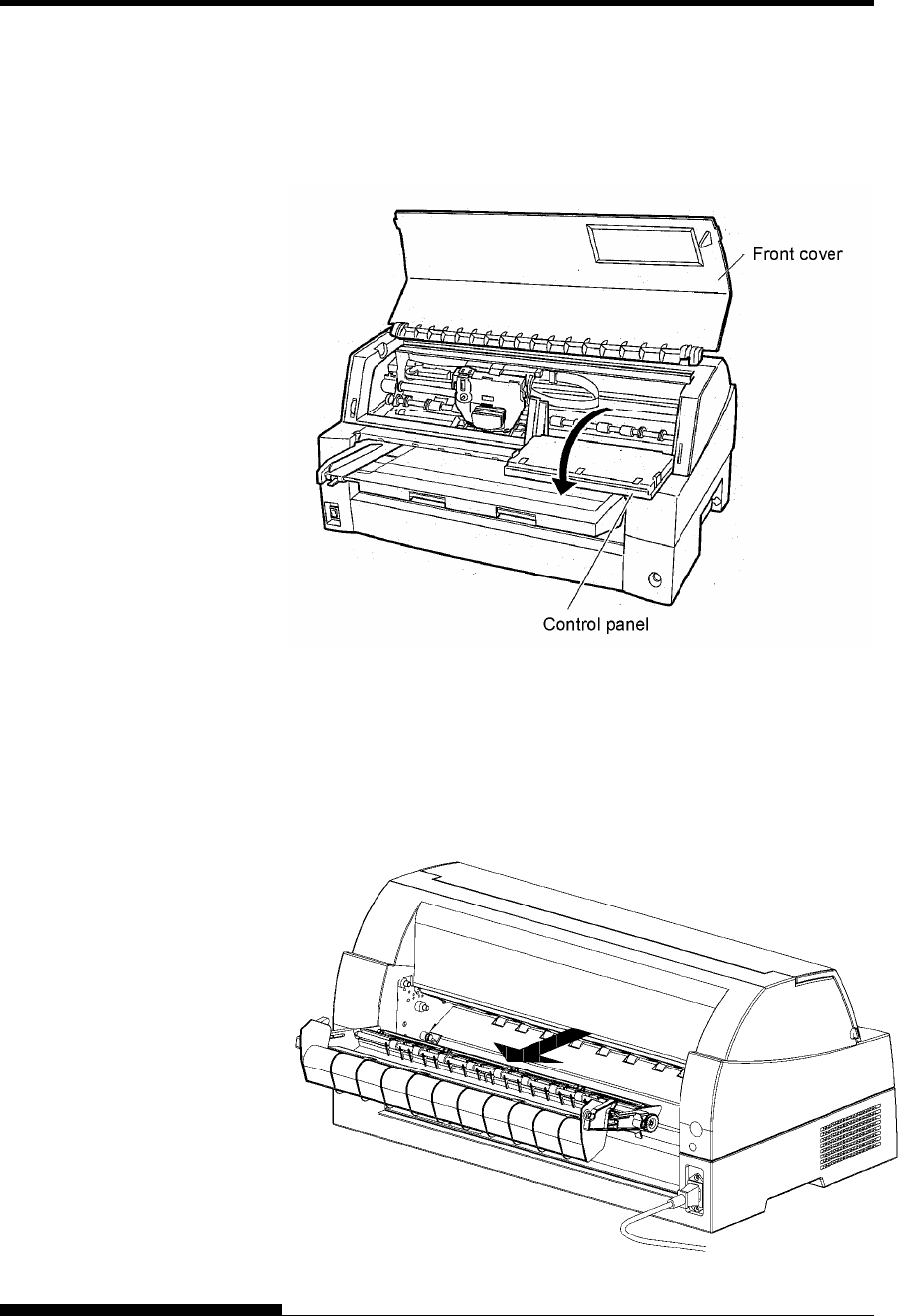
MAINTENANCE
6-8 User's Manual
Opening and closing the control panel
The control panel of this printer can be pulled down toward the front as
necessary, such as when jammed paper must be removed.
Removing the stacker unit
The stacker unit of this printer can be removed in the event that paper is
jammed in it unit.
While pushing down the lock levers of the stacker guide, pull out the
stacker unit from the rear.
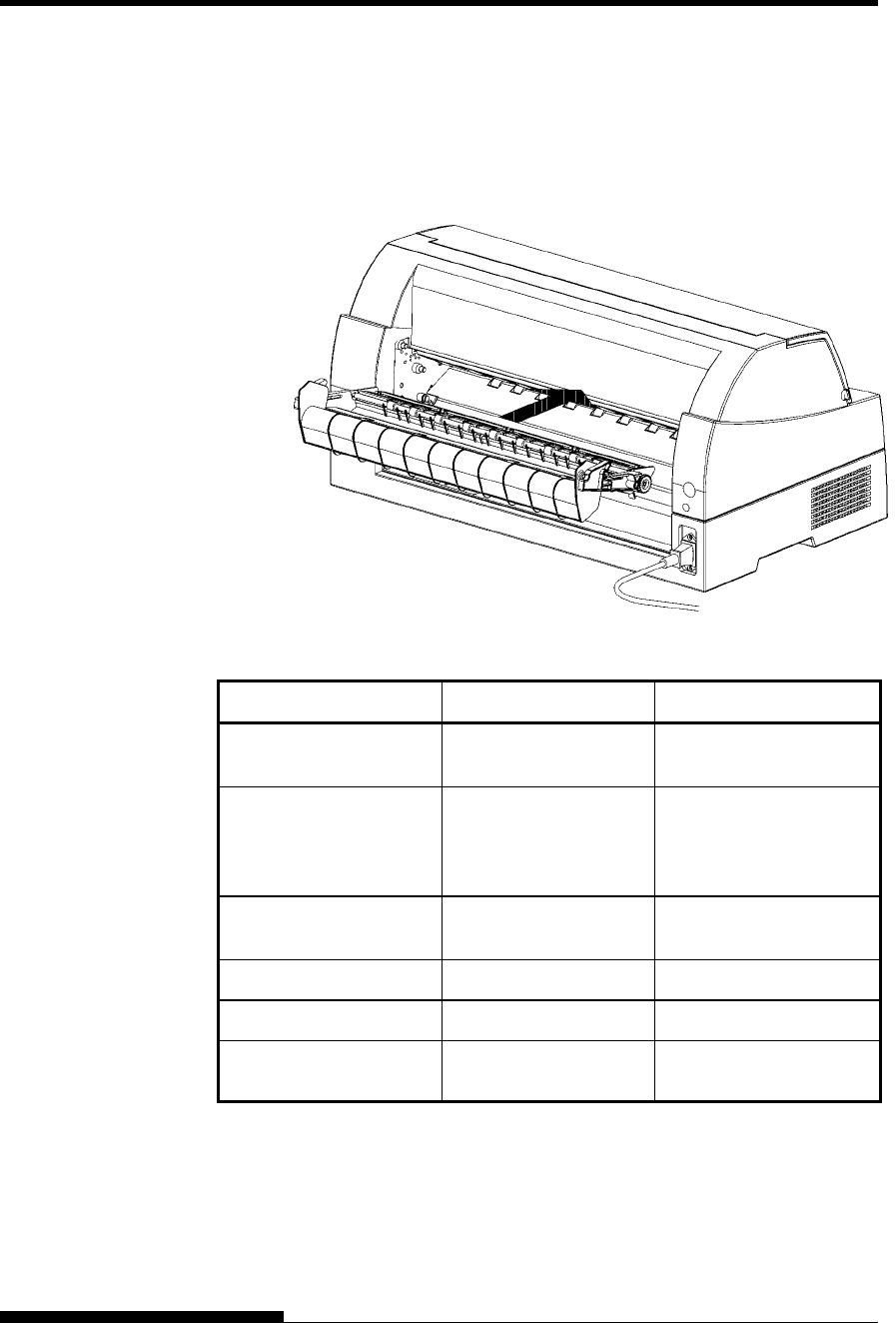
MAINTENANCE
User's Manual 6-9
Mounting the stacker unit
Position groove 1 over guide pin 1 on the right and left sides of the
stacker unit. Then, push in the stacker unit until guide pin 2 is hooked
onto slot 2.
Options Order Number Description
RS-232C serial interface
board.
CA02374-C992
LAN card KA02012-C103 Installable only on a
printer model with the
parallel an USB
interface.
Cut sheet feeder SF940
(KA02027-D750)
Tractor Unit KA02038-E650
Large Stacker KA02038-D160
Large paper table KA02038-D150
OPTIONS
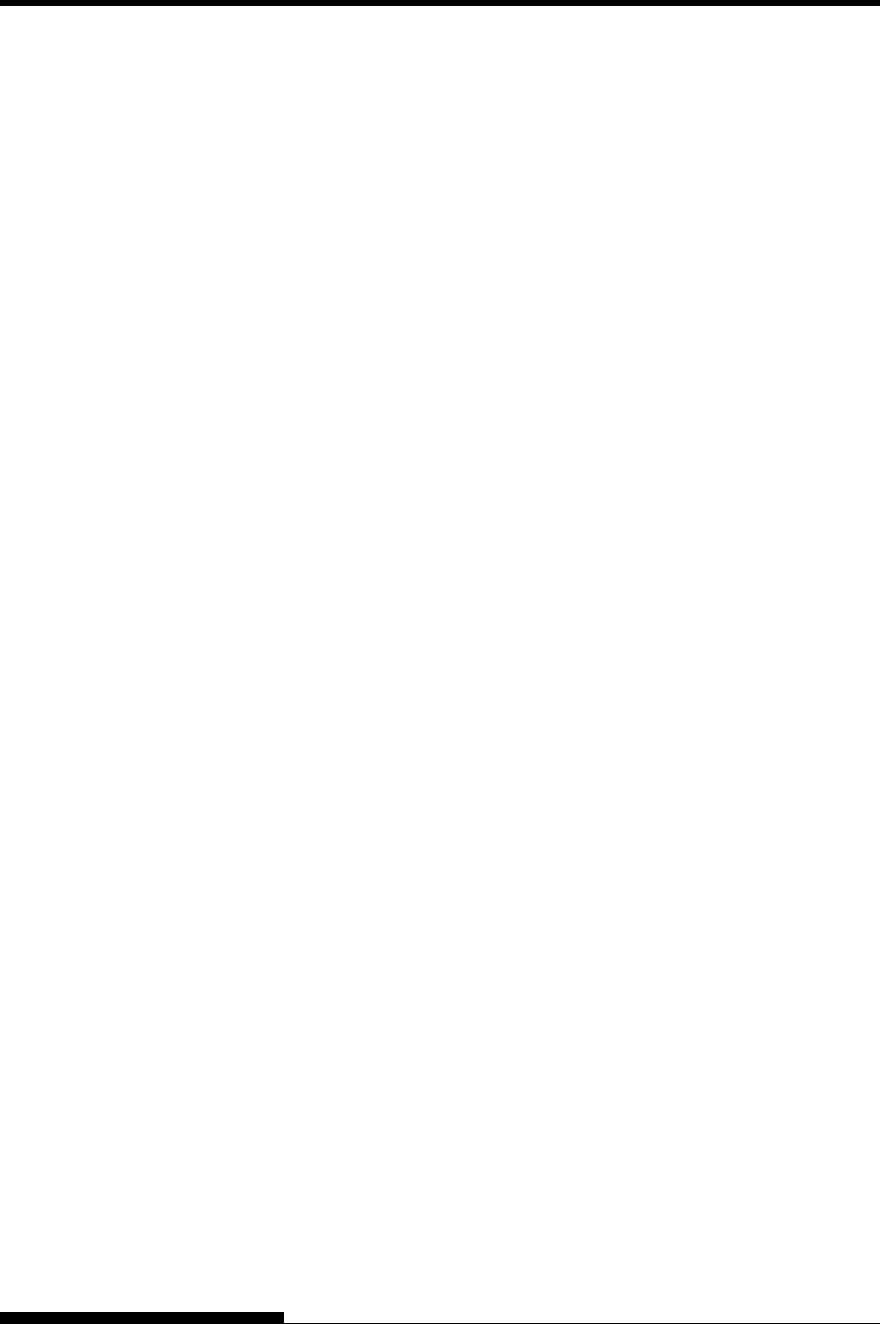
MAINTENANCE
6-10 User's Manual
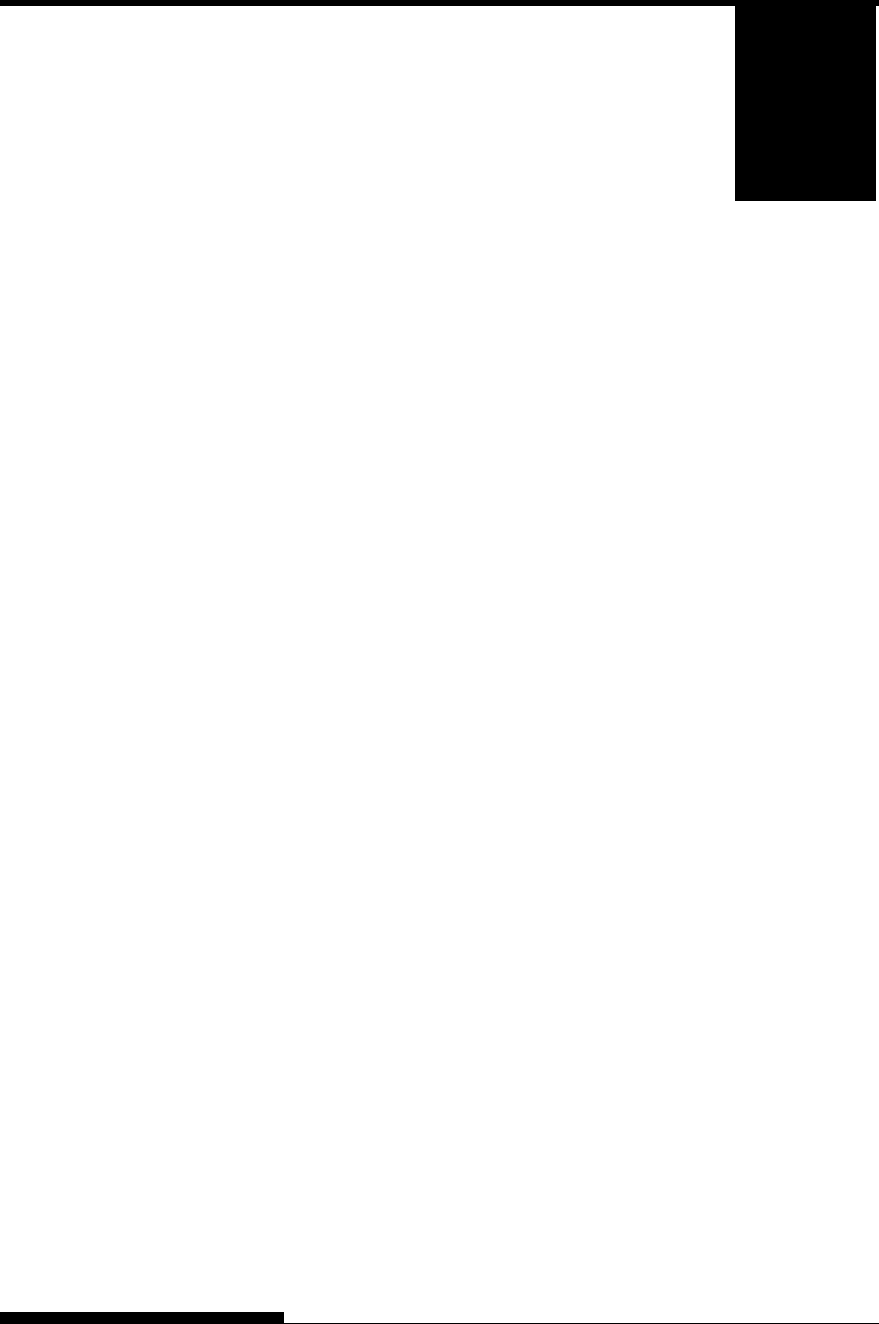
User's Manual 7-1
7
CHAPTER 7 TROUBLE-SHOOTING
TROUBLE-SHOOTING
Your printer is extremely reliable, but occasional
problems may occur. You can solve many of
these problems yourself, using this chapter.
If you encounter problems that you cannot resolve,
contact your dealer for assistance.
This chapter is organized as follows:
• Solving problems
• Diagnostic functions
• Getting help
The tables in this section describe common printer problems and their
solutions. The following types of problems are considered:
• Print quality problems
• Paper handling problems
• Operating problems
• Printer failures
Print Quality Problems
Poor print quality or other printing problems are often caused by
incorrect printer setup or incorrect software settings. A gradual decrease
in print quality usually indicates a worn ribbon. Table 7.1 identifies
common print quality problems and suggests solutions.
SOLVING
PROBLEMS
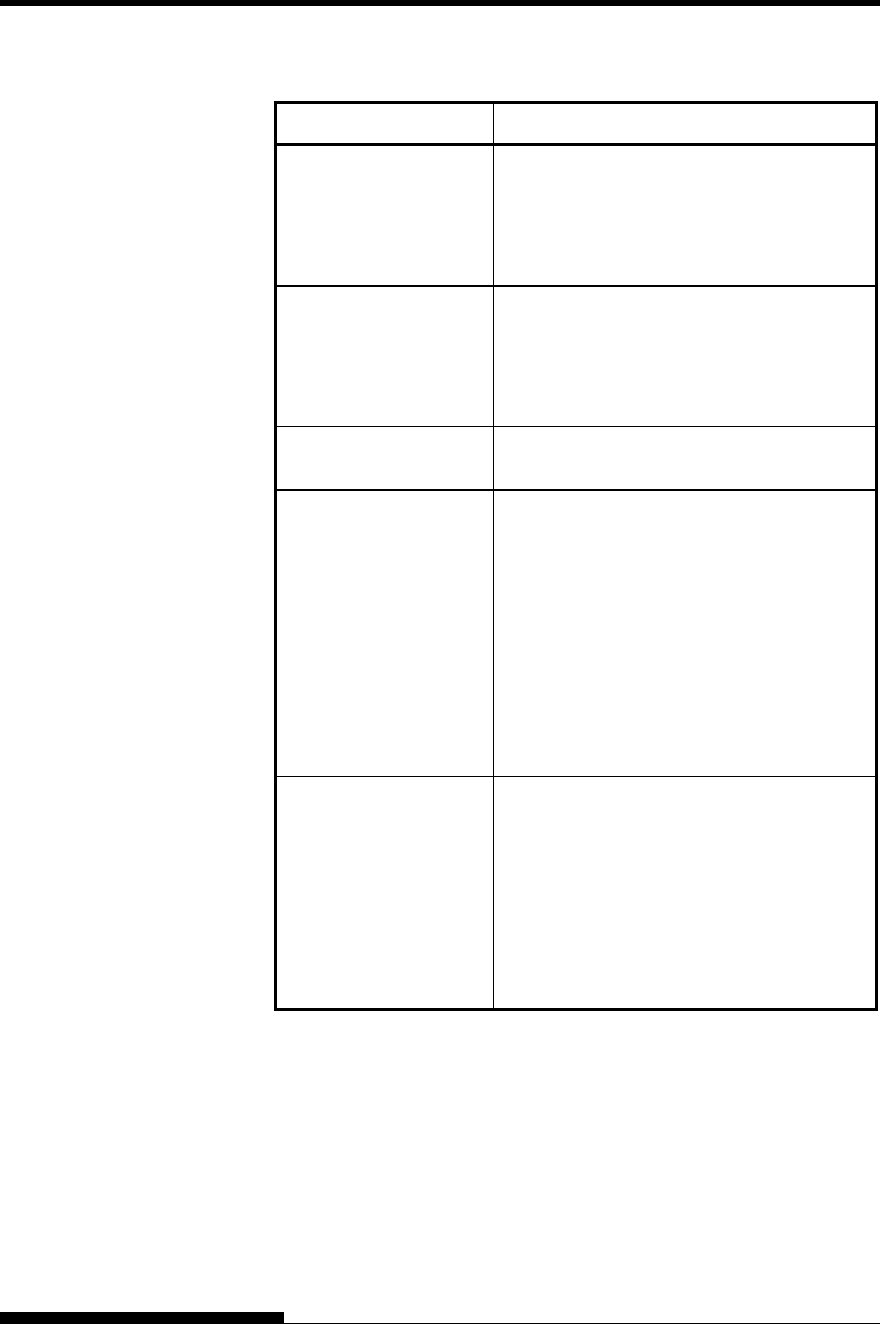
TROUBLE-SHOOTING
7-2 User's Manual
Table 7.1 Print Quality Problems and Solutions
Problem Solution
Printing is too light or
too dark.
Make sure that the ribbon cartridge is
properly installed and that the ribbon feeds
smoothly.
Check ribbon wear. Replace the ribbon if
necessary.
Stains or smudges
appear on the page.
Check ribbon wear. Replace the ribbon if
necessary.
Check whether the tip of the print head is
dirty.
Clean the head with a soft cloth if necessary.
The page is blank. Make sure that the ribbon cartridge is
properly installed.
Printing is erratic or the
wrong characters are
printed. One or more
“?” characters are
printed.
Make sure that the interface cable is securely
connected to both the printer and computer.
Make sure that the printer emulation selected
in your software is the same as the emulation
selected on the printer. See the section
Selecting an Emulation in Chapter 2.
If you are using an RS-232C serial interface,
make sure that the serial settings required by
your software or computer are the same as
the settings on the printer. See the section
Hardware Items and Options in Chapter 5.
Characters are lost at
the left or right end.
If you are using the area-over print
prevention function (option), make sure that
paper size, paper position, and left and right
margins are properly set. See the section
Configuration Items and Options in
Chapter 5.
Note that printing with paper skewed causes
characters even in the printable area to be
lost.
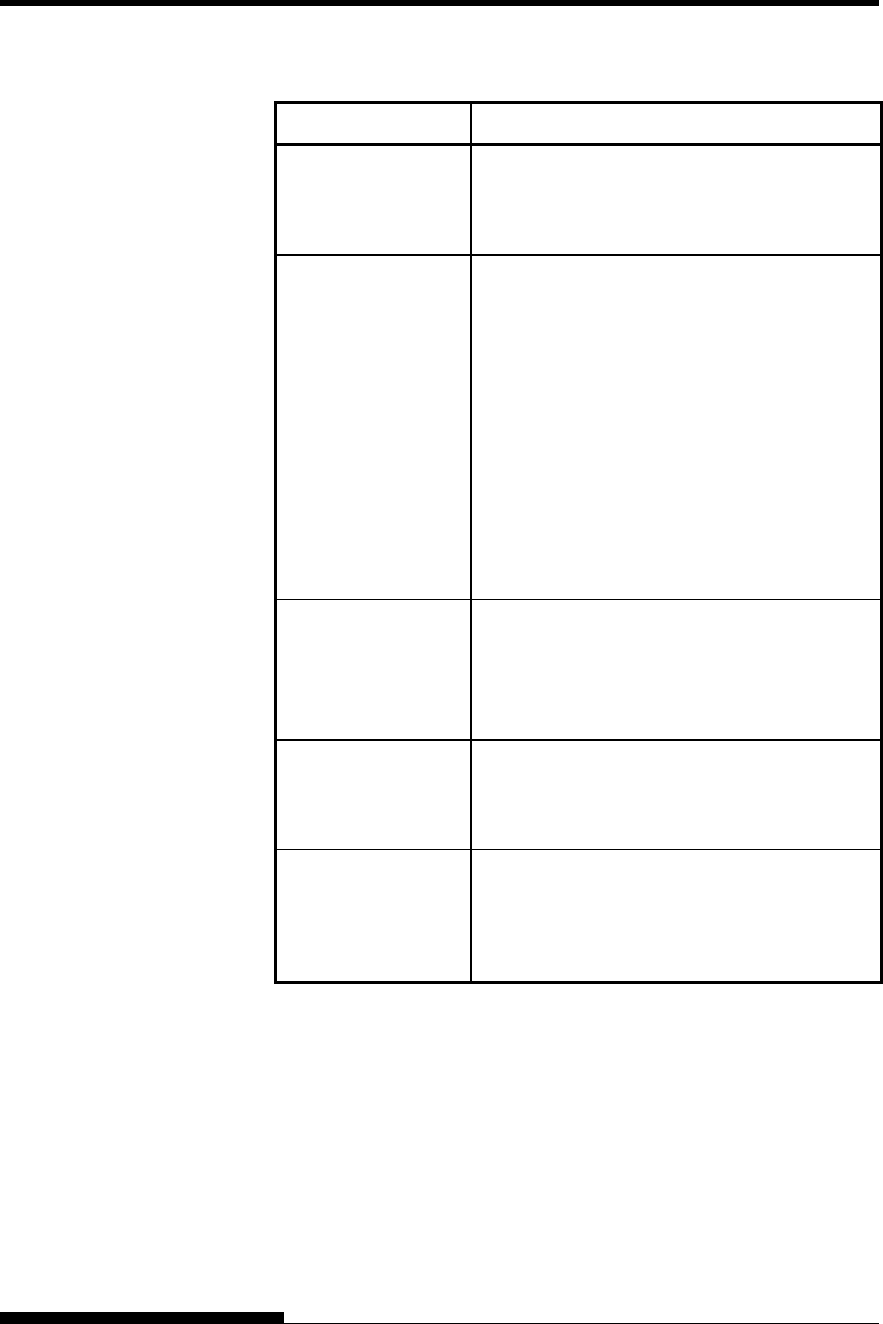
TROUBLE-SHOOTING
User's Manual 7-3
Table 7.1 Print Quality Problems and Solutions (Cont.)
Problem Solution
Printing is vertically
misaligned (jagged).
Use the printer’s V-ALMNT function to check
the vertical print alignment. If necessary, adjust
the print alignment. See the section Using the
Diagnostic Functions in Chapter 5.
The top margin is
wrong.
The top margin is the sum of the top-of-form
setting, the software-specified top margin, and
the printer’s TOP-MRG setting. Proceed as
follows:
• Make sure that the top-of-form setting is
correct. The factory default is 25.4 mm (1
inch). See the section Changing Top-of
Form in Chapter 5.
• Check the software-specified top margin.
Refer to your software documentation.
• Check the printer’s TOP-MRG setting. See
the section MENU1 and MENU2 Items
and Options in Chapter 5.
Lines are double
spaced instead of
single spaced.
Check the line spacing setting in your software.
Change the CR-CODE setting in the printer
setup mode to CR ONLY. See the section
MENU1 and MENU2 Items and Options in
Chapter 5.
The printer
overprints on the
same line.
Change the CR-CODE setting in the printer
setup mode to CR & LF. See the section
MENU1 and MENU2 Items and Options in
Chapter 5.
The next print line
starts where the
previous line ended
instead of at the left
margin.
Change the LF-CODE setting in the printer
setup mode to LF & CR. See the section
MENU1 and MENU2 Items and Options in
Chapter 5.
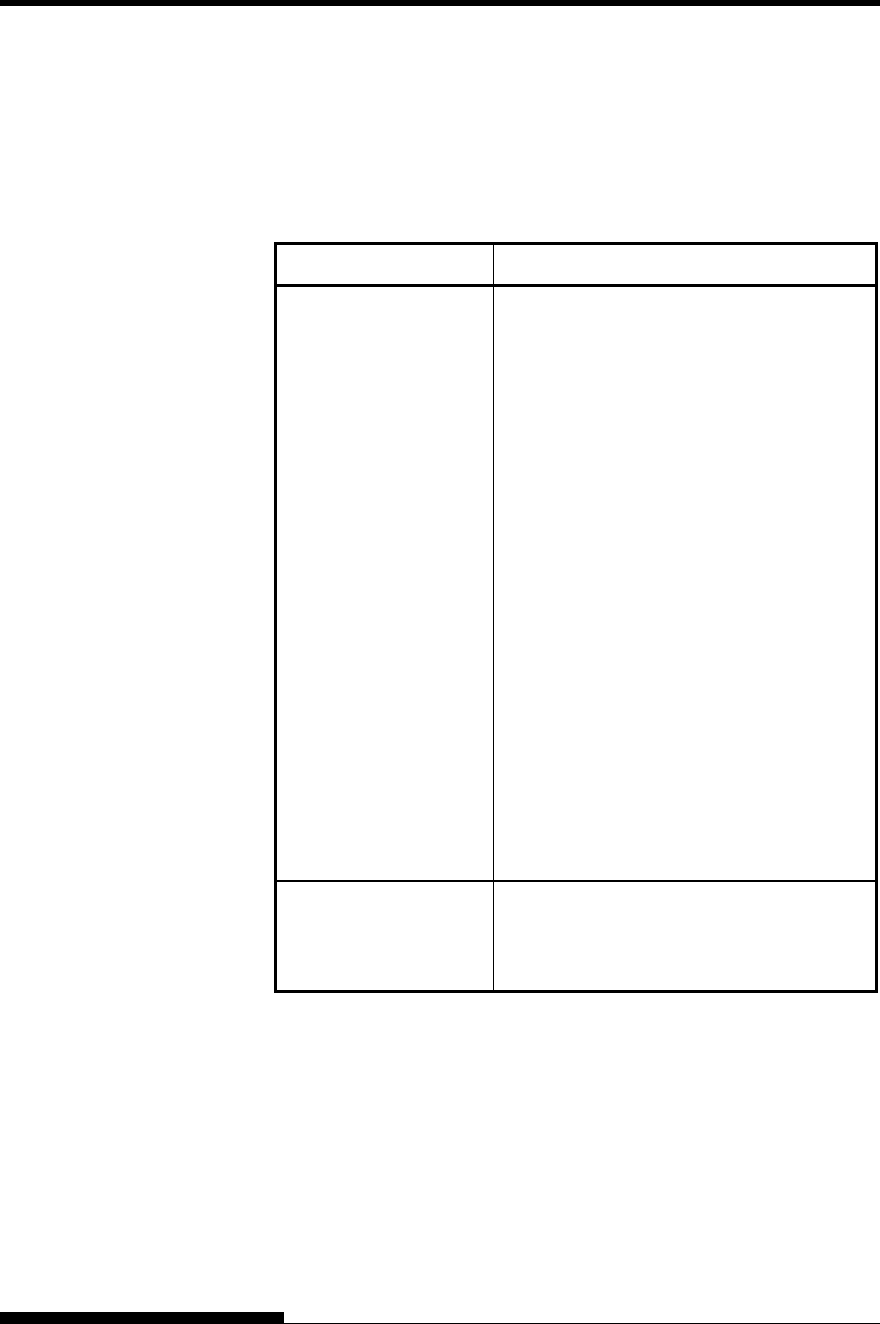
TROUBLE-SHOOTING
7-4 User's Manual
Paper Handling Problems
Table 7.2 describes common paper handling problems and suggests
solutions. See Chapter 3 for detailed procedures on loading and using
paper.
Table 7.2 Paper Handling Problems and Solutions
Problem Solution
Paper cannot be loaded
or fed.
Make sure that the paper path indicator
(FRONT TRACTOR, REAR TRACTOR,
CUT SHEET) lights correctly.
Press the PAPER PATH button to select the
paper path.
Make sure that the paper covers the paper-
out sensor, i.e., the left paper edge is within
52 mm for single sheets or 41 mm for
continuous forms from the left edge of the
platen. (This problem cannot occur if you
use the forms tractor unit or insert a single
sheet with its left edge in contact
with the left paper guide.)
Make sure that the tractor unit is correctly
installed and that the tractor shaft gear
engages the platen shaft gear.
If you are using a cut sheet feeder, make
sure that the bin lever is set to the
“CLOSED” position. (The bin lever is on the
left side of the feeder.)
If you are using a cut sheet feeder, make
sure that the feeder is firmly mounted on the
printer and the cable is correctly connected.
Paper manually loaded
is ejected without
printing
If you are using the paper skew detection
(option), adjust the paper guide on the paper
table for the print start position and correctly
slide the sheet along the guide.
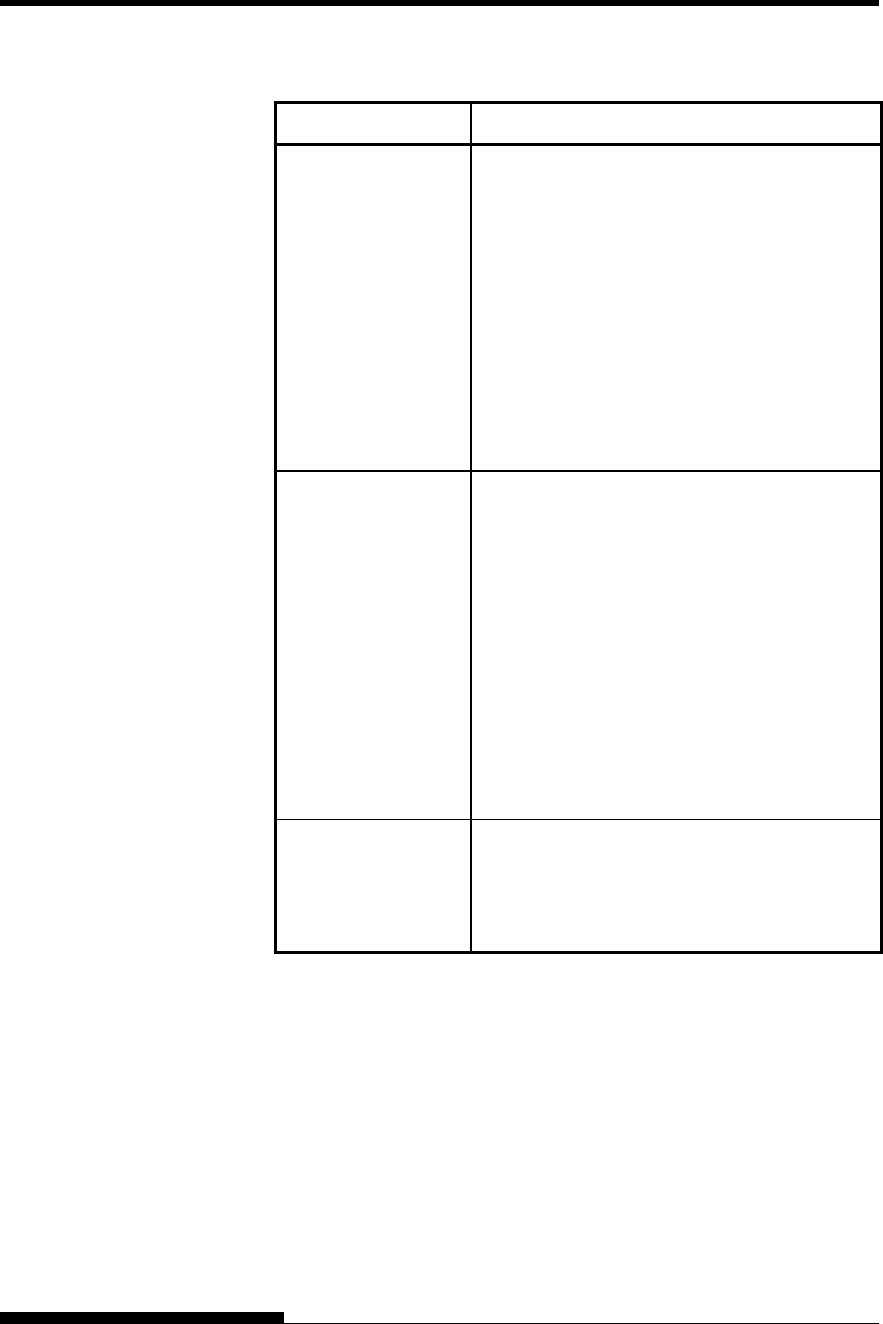
TROUBLE-SHOOTING
User's Manual 7-5
Table 7.2 Paper Handling Problems and Solutions (Cont.)
Problem Solution
Paper jams while
loading.
Turn off the printer and remove the jammed
paper. Remove any obstructions from the paper
path.
If you are using a cut sheet feeder, make sure
that the bin lever is set to the “CLOSED”
position. (The bin lever is on the left side of the
feeder.)
Make sure that the paper is not folded, creased,
or torn.
Reload the paper.
Make sure that the paper table is in normal
mode. Set the paper table to normal mode.
Paper jams while
printing.
Turn off the printer and remove the jammed
paper. Remove any obstructions from the paper
path.
For continuous forms, make sure that the
incoming and outgoing paper stacks are
correctly placed. Paper should feed straight.
Make sure that the paper table is in normal
mode. Set the paper table to normal mode.
If you are using a cut sheet feeder, make sure
that the bin lever is set to the “CLOSED”
position. (The bin lever is on the left side of the
feeder.)
Reload the paper.
Paper slips off the
forms tractors or the
perforated holes of
the paper tear during
printing.
Make sure that the forms tractors are positioned
correctly for the width of your paper and that
the perforated holes of the paper fit directly over
the tractor sprockets.
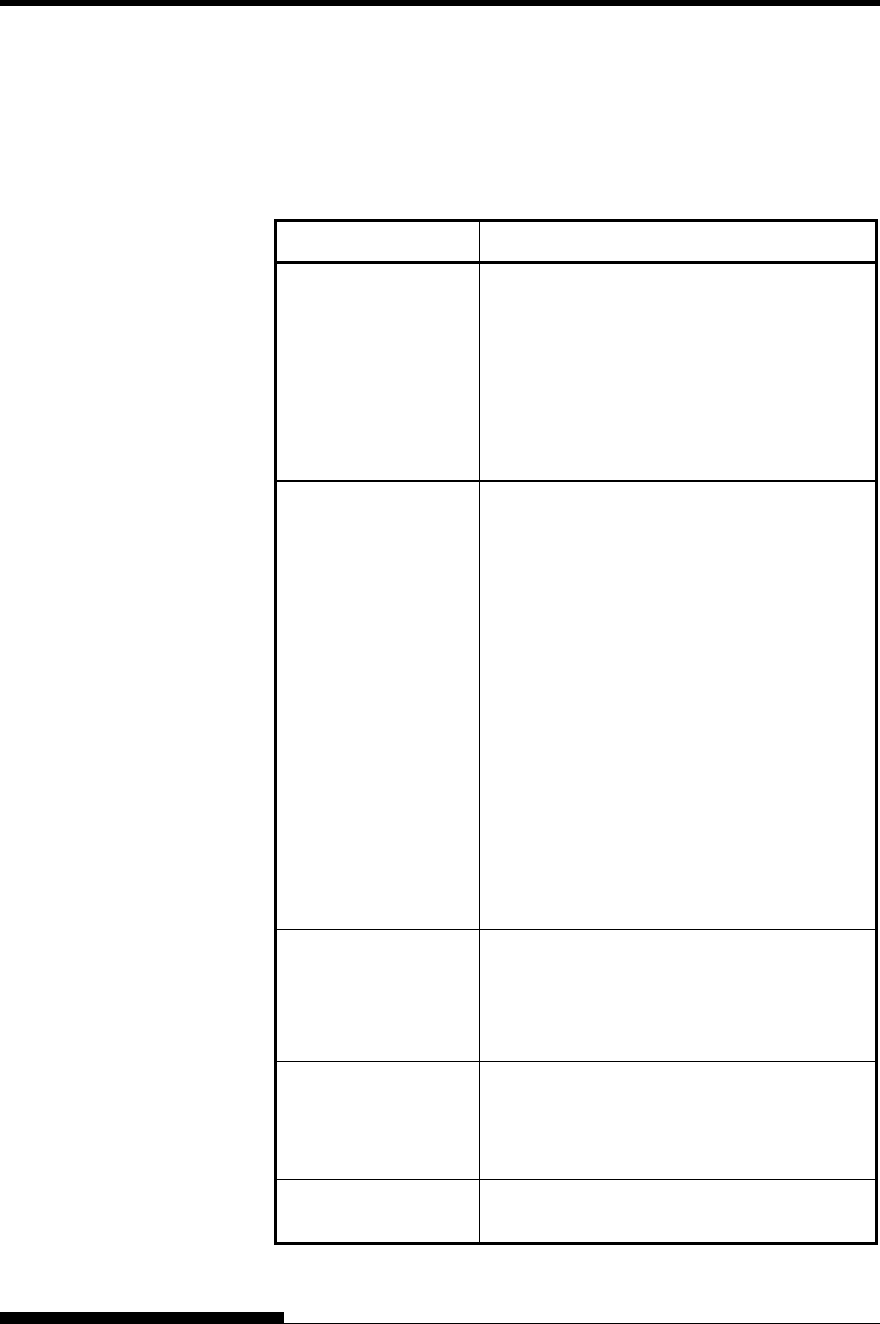
TROUBLE-SHOOTING
7-6 User's Manual
Operating Problems
Table 7.3 identifies common operating problems and suggests solutions.
If you cannot resolve a problem, contact your dealer.
Table 7.3 Operating Problems and Solutions
Problem Solution
The power does not
turn on.
Make sure that the “I” on the printer power
switch is depressed.
Make sure that the power cord is securely
connected to both the printer and the outlet.
Make sure that the power outlet is functional.
Turn the power off. Wait 100 seconds and
then turn the printer on again. If the printer
still has no power, contact your dealer.
The printer is on but it
will not print.
Make sure that the printer is online.
Make sure that the interface cable is securely
connected to both the printer and the
computer.
If the red PAPER OUT indicator is lit, load
paper.
Run the printer self-test (see Chapter 5). If the
self-test executes normally, the problem is
caused by the interface, the computer,
incorrect printer settings, or incorrect software
settings.
Make sure that the printer emulation selected
in your software is the same as the emulation
selected on the printer. See the section
Selecting an Emulation in Chapter 2.
Make sure that the front cover is completely
closed.
The printer is on but it
will not print
(continued).
If you are using an RS-232C serial interface,
make sure that the serial settings required by
your software or computer are the same as the
settings on the printer. See the section
Hardware Items and Options in Chapter 5.
The cut sheet feeder
does not operate.
Make sure that the cut sheet feeder is firmly
mounted on the printer.
Make sure that the cable is correctly
connected.
The FRONT DIR
indicator blinks.
Remove the printed sheet of paper from the
paper table.
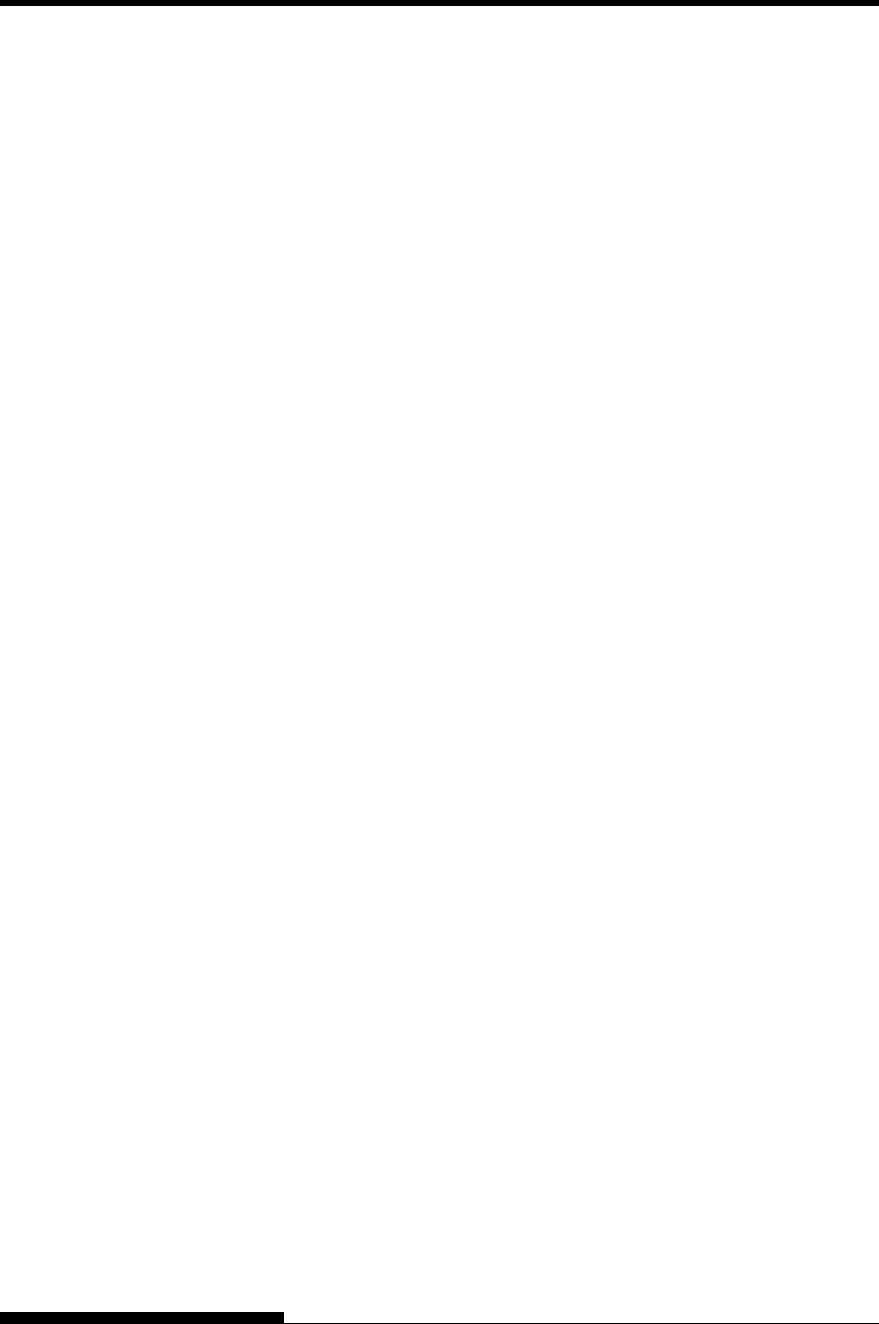
TROUBLE-SHOOTING
User's Manual 7-7
Printer Failures
A user cannot generally resolve a problem involving defective printer
hardware. On detecting a fatal error, the printer will:
• Stop printing
• Beep four times
• Turn the ONLINE indicator off
The control panel displays alarms. The meanings of alarms can be
checked in the following table.
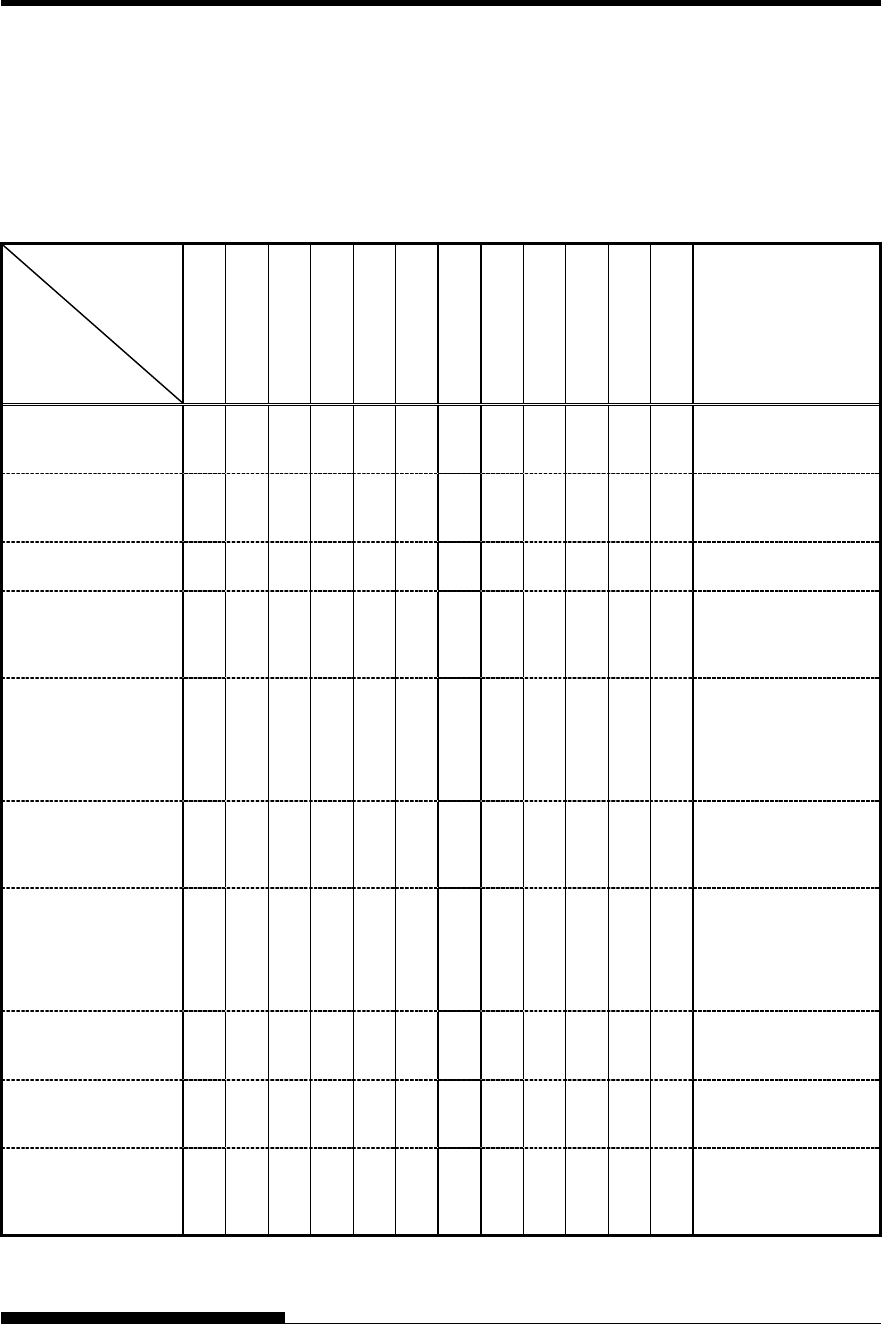
TROUBLE-SHOOTING
7-8 User's Manual
Alarm display function
This printer has a function for distinguishing between alarms by using
the blinking of individual lamps on the control panel.
From the combination of blinking lamps in an alarm state, the meaning
of the alarm can be determined as shown in the following table.
Lamp
Alarm name
PAPER OUT
REMOVE PAPER
FRONT DIR
QUIET
AUTO GAP
HI IMPACT
TRACTOR F
TRACTOR R
CUT SHEET
MENU1
MENU2
ONLINE
Condition of occurrence
LES alarm
LES could not be detected
during the space initial
operation.
Space problem alarm
The shield board could not
be detected normally by the
LRES sensor.
Fan alarm
The cooling fan for the
space motor was stopped.
HCPP (cut sheet or
continuous forms paper
switching) alarm
Switching between cut
sheet paper and continuous
forms paper was not
possible.
Overload alarm
An overload occurred
during printing, and
tripartite printing was
performed. However, the
power source voltage was
not restored.
Low voltage alarm
The power source voltage
dropped below the specified
level when no printing was
in progress.
APTC gap alarm
During the APTC
operation, paper was
detected immediately after
the start of approach
motion, or no paper was
detected.
APTC hop position sensor
alarm
During the APTC
operation, no reference
position was detected.
ROM/RAM alarm
A sum-check error or
read/write error occurred, or
no CG-ROM is mounted.
Sector protect alarm
A sector protect check of
flash ROM was performed,
but no sector protect
information was found.
: Blinking
Blank: Off
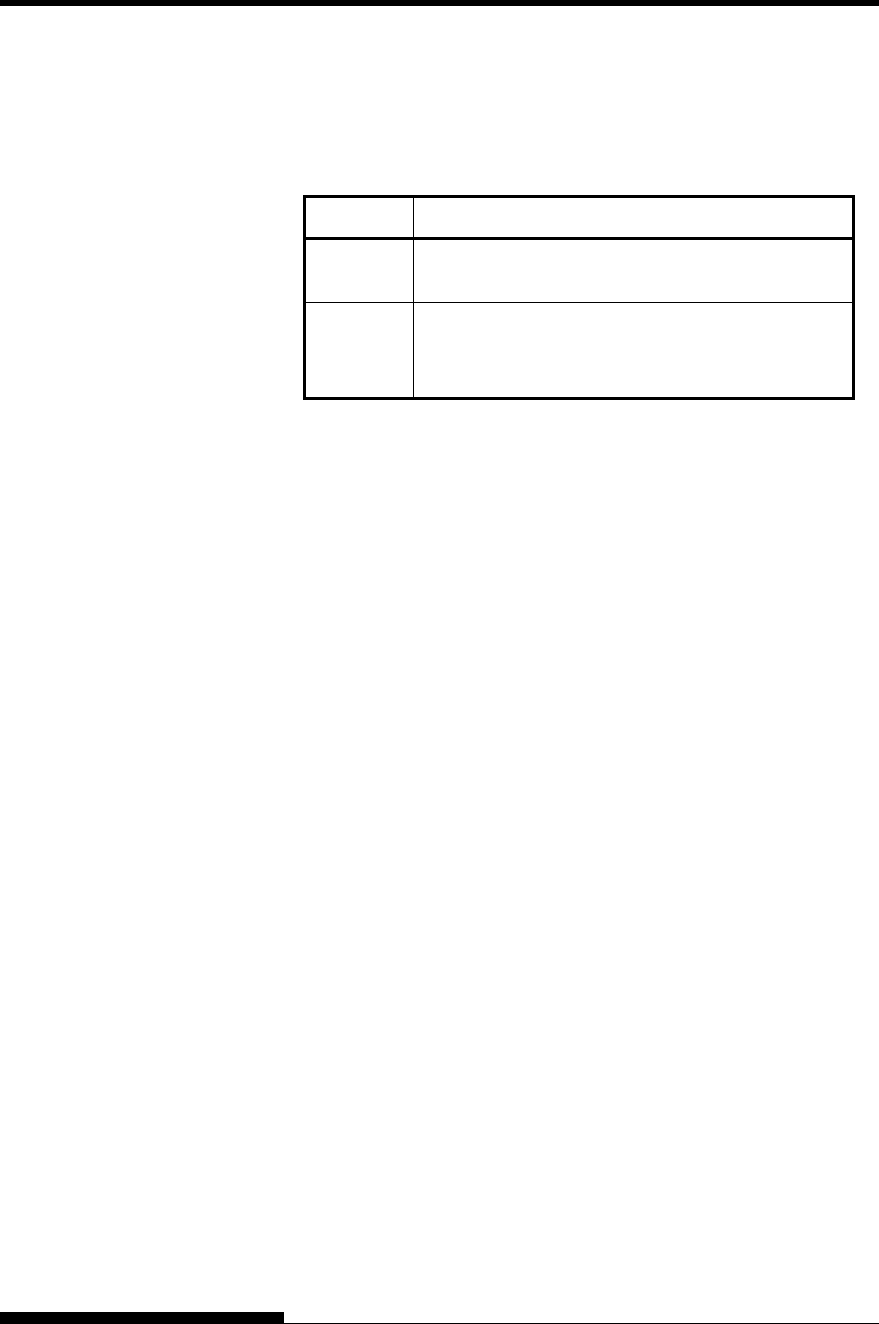
TROUBLE-SHOOTING
User's Manual 7-9
Responses to alarm occurrences
Your first response to each alarm should be as described in the following
table.
Problem Solution
LES alarm Remove any paper dust, which may cause problems
in carriage operation.
APTC gap
alarm
Check the paper thickness (0.04 to 0.65 mm).
Check whether the paper has different thicknesses
or whether the paper has filing holes.
For problems other than the above, request your printer dealer to make
repairs.
The following errors cause the printer to turn off the power:
• Print head error
• Space motor error
• Line feed motor error
• +34 V overvoltage error
No error condition is displayed if any of these errors occurs.
Turn the printer off and back on, then rerun the same job to check if the
error was transient. If the error recurs, contact your dealer.
The printer diagnostic functions are SELF-TST, HEX-DUMP, and V-
ALMNT.
• SELF-TST tells you whether the printer hardware is functioning
correctly. If the printer hardware is functional, any problems
you are having are probably caused by incorrect printer settings,
incorrect software settings, the interface, or the computer.
• HEX-DUMP allows you to determine whether the computer is
sending the correct commands to the printer, and whether the
printer is executing the commands correctly. This function is
useful to programmers or others who understand how to
interpret hex dumps.
• V-ALMNT allows you to check and, if necessary, correct the
printer’s vertical print alignment.
For details on using these functions, all of which are available in the
printer setup mode, see the section Using the Diagnostic Functions in
Chapter 5.
DIAGNOSTIC
FUNCTIONS
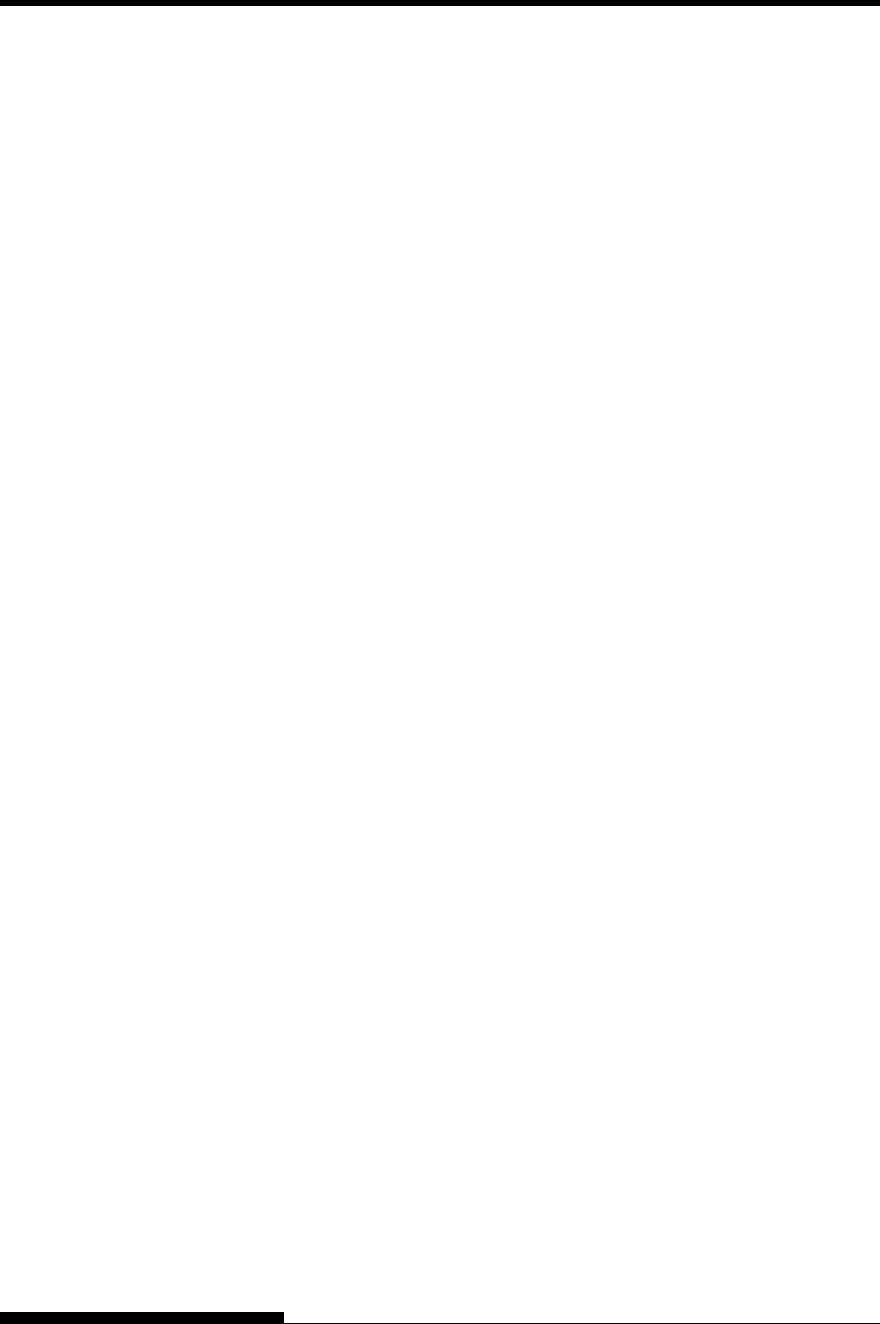
TROUBLE-SHOOTING
7-10 User's Manual
If you are not able to correct a problem using this chapter, contact your
dealer for assistance. Be prepared to provide the following information:
• Your printer model number, serial number, and date of
manufacture. Look for this information on the rating label at the
back of the printer.
• Description of the problem
• Type of interface you are using
• Names of your software packages
• List of the printer default settings. To print the default settings,
see the section Printing a List of Selected Options in Chapter
5.
GETTING HELP
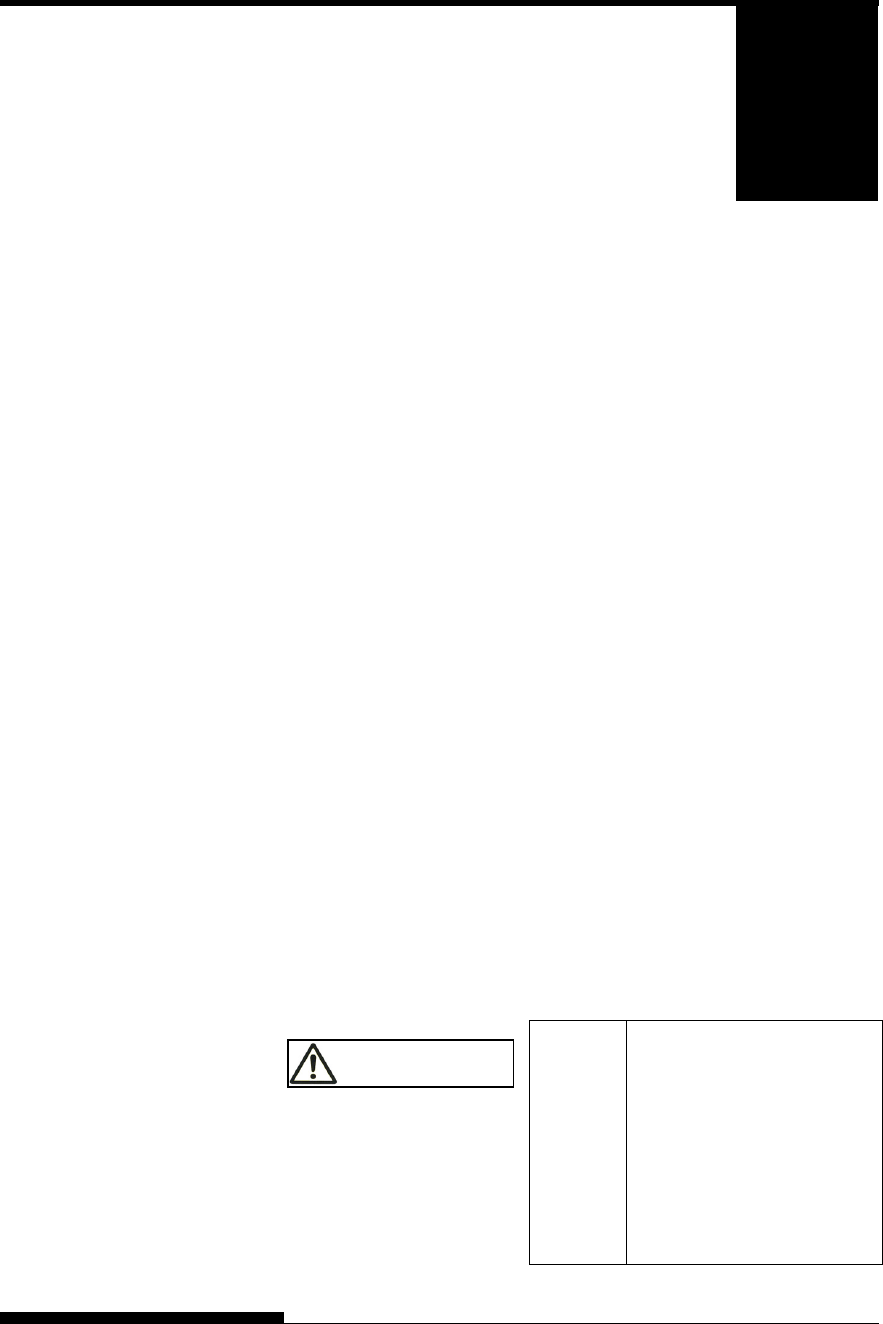
User's Manual 8-1
8
CHAPTER 8 INSTALLING OPTIONS
INSTALLING OPTIONS
The installaion of options allows you to expand
the capabilities of your printer. Options available
for the printer include:
• LAN card
• Cut sheet feeder
• Tractor unit
• Large stacker
• Large Paper Table
The LAN card is a user installable option, but can be installed only on a
printer model with the parallel and USB interfaces. For information on
the installation procedure, refer to the manual that comes with the LAN
card.
Options can be purchased from your dealer. Order numbers for options
are given in Appendix A.
This chapter describes what to do after installing cut sheet feeder.
A cut sheet feeder (SF940) allows you to automatically feed single
sheets. It can be mounted on the front or the rear of the printer.
When attaching the cut sheet feeder to the front of the printer, remove the
tractor
For both front and rear, the cut sheet feeder can handle a max. of 5-ply
multipart media.
When installing the front and rear cut sheet feeders, the printer assigns
the first bin to the front feeder. You can change the assignment using set
up mode.
WARNING Electric
shock
Before mounting or
removing the cut sheet
feeder, turn off the power
switches of the personal
computer and the printer
and remove the power plug
from the outlet.
Otherwise, you may
receive electric shock.
INSTALLING THE
CUT SHEET
FEEDER
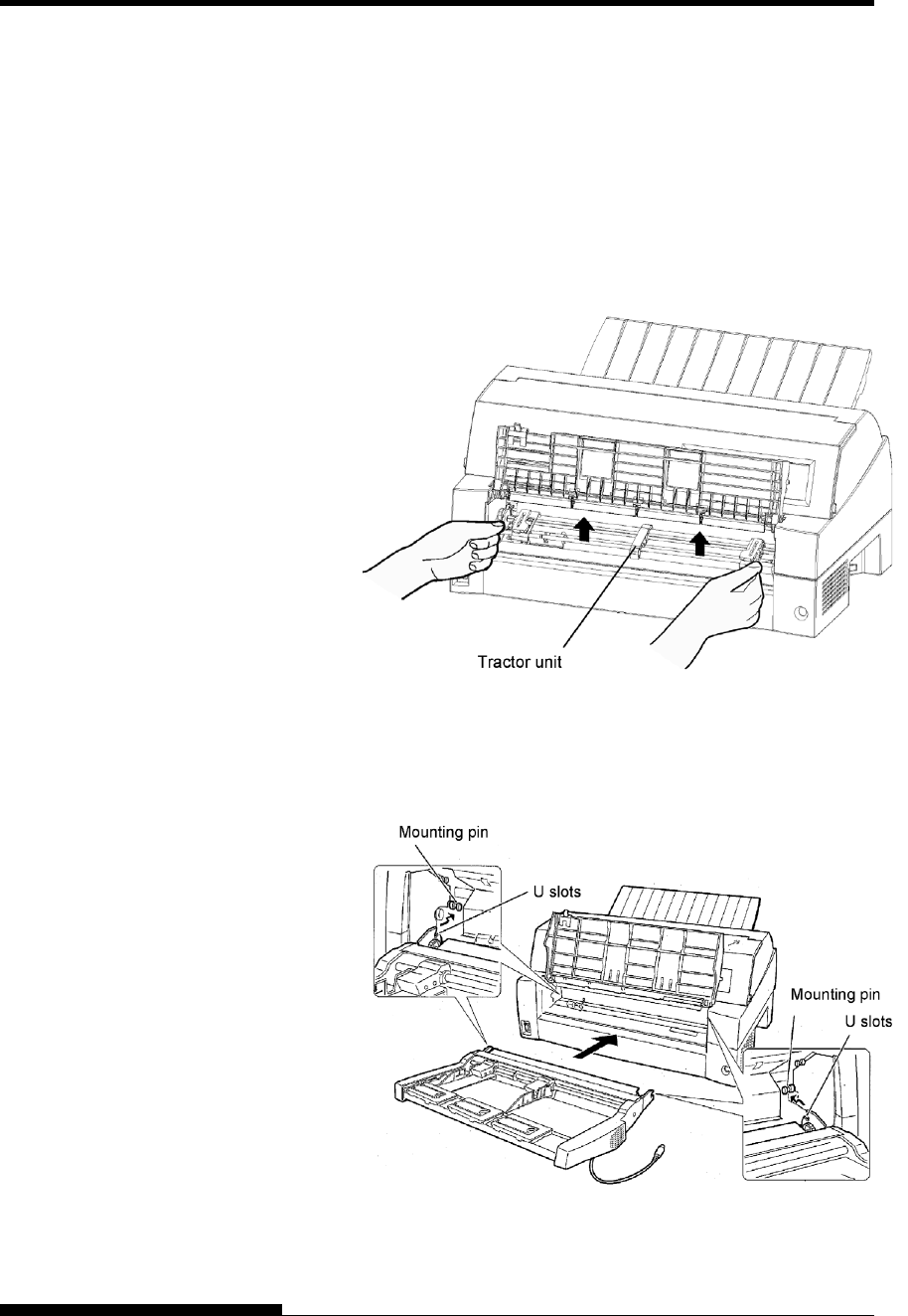
INSTALLING OPTIONS
8-2 User's Manual
Installing on the front side of the printer
1. Turn off the printer power.
Confirm that the printer power is turned to the { side.
2. Removing the tractor unit
Raise the paper table and remove the tractor unit. (For details
on mounting and removing the tractor unit, see “Selecting the
Tractor Unit Position” on page 2-10.)
3. Installing the cut sheet feeder
Adjust the U slots made on both sides of the cut sheet feeder to
the mounting pins inside the printer and lower the cut sheet
feeder slowly.
Check that the cut sheet feeder frame is correctly mounted on
mounting pin 2.
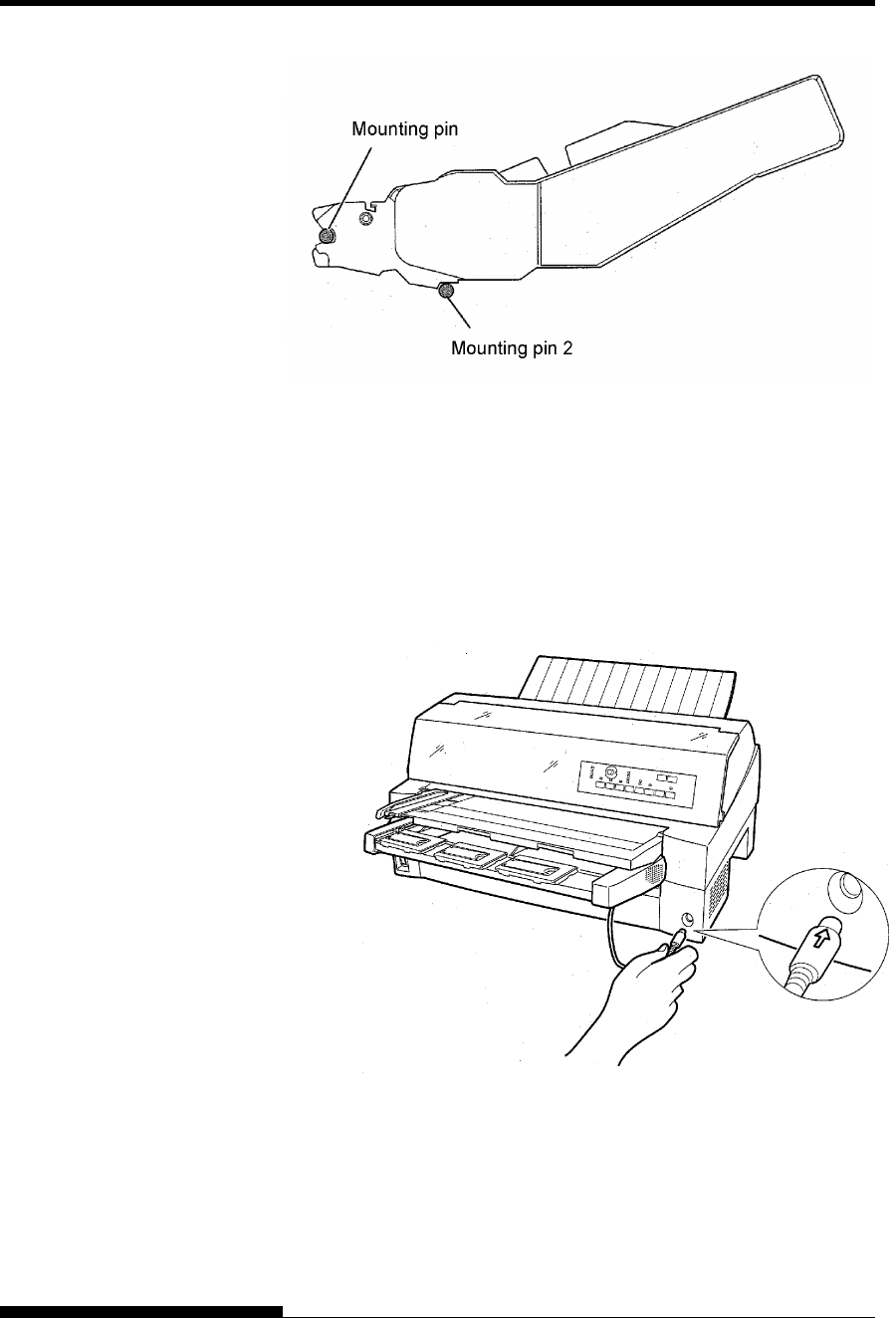
INSTALLING OPTIONS
User's Manual 8-3
4. Replacing the paper table
Be sure to replace the paper table. (See “Setting the paper
table” on page 13.)
If the paper table is incorrectly set, a paper jam may occur.
5. Connecting the cable
Connect the cut sheet feeder cable to the connector on the front
right of the printer. Insert the cable with the connector arrow
mark up.
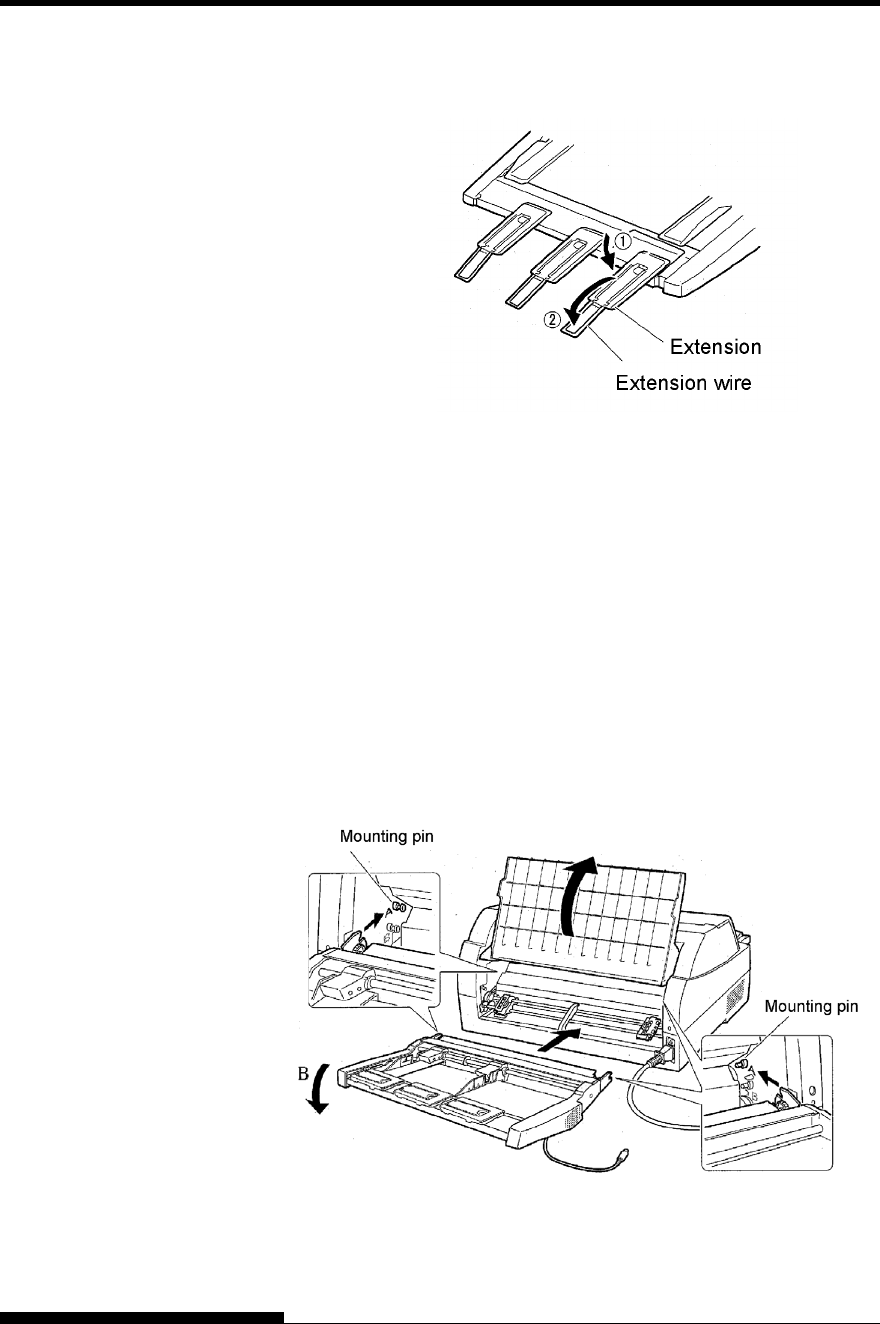
INSTALLING OPTIONS
8-4 User's Manual
6. Extend the extension and extension wire in the order from
(1) to (2) according to the size of the paper to be used.
Installing on the rear side of the printer
Before mounting the cut sheet feeder, turn off the printer power.
1. Turn off the printer power.
Confirm that the printer power is turned to the O side.
2. Installing the cut sheet feeder
Open the rear stacker. Hold both sides of the cut sheet feeder
and adjust the U slots made on both side of the cut sheet feeder
to the mounting pins inside the printer. (Attach the slots with
the letter A of the cut sheet feeder adjusted to that on the printer
side.) Then, lower the cut sheet feeder like it turns in the
direction of arrow B, using the mounting pins as supporting
points.
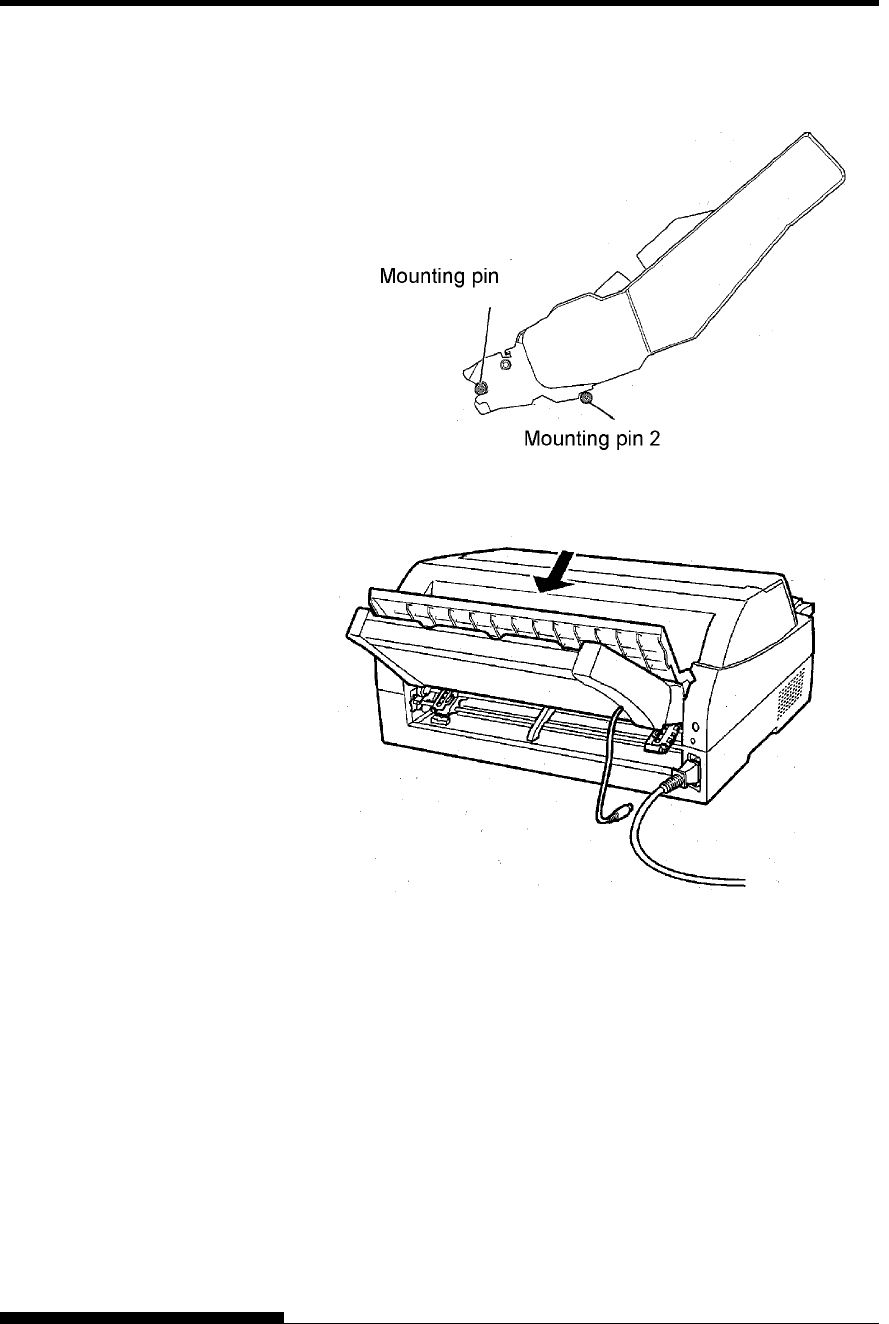
INSTALLING OPTIONS
User's Manual 8-5
Check that the cut sheet feeder frame is correctly mounted on
mounting pin 2.
3. Close the rear stacker.
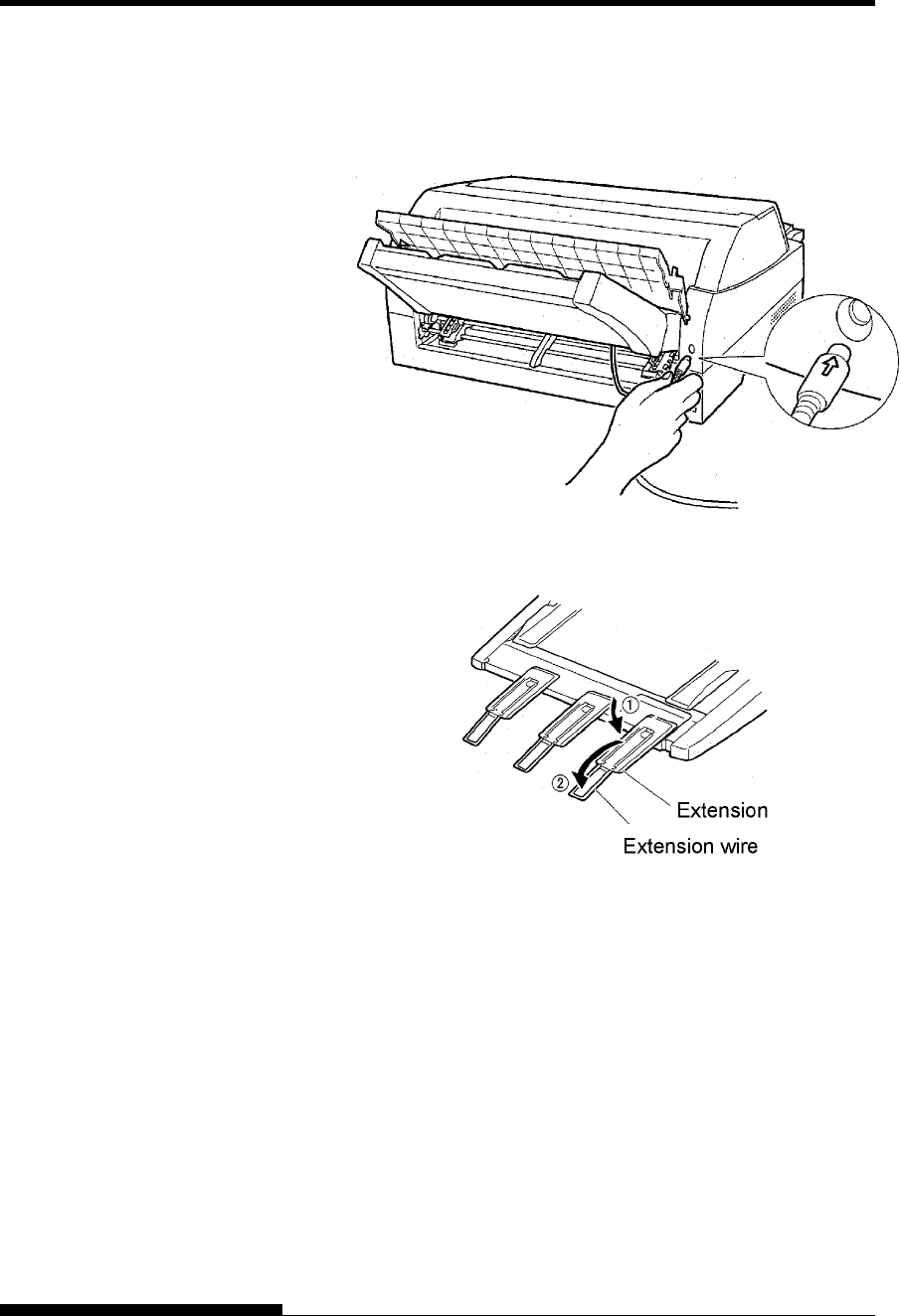
INSTALLING OPTIONS
8-6 User's Manual
4. Connecting the cable
Connect the cut sheet feeder cable to the connector on the rear
right of the printer. Insert the cable with the connector arrow
mark up.
5. Extend the extension and extension wire in the order from
(1) to (2) according to the size of the paper to be used
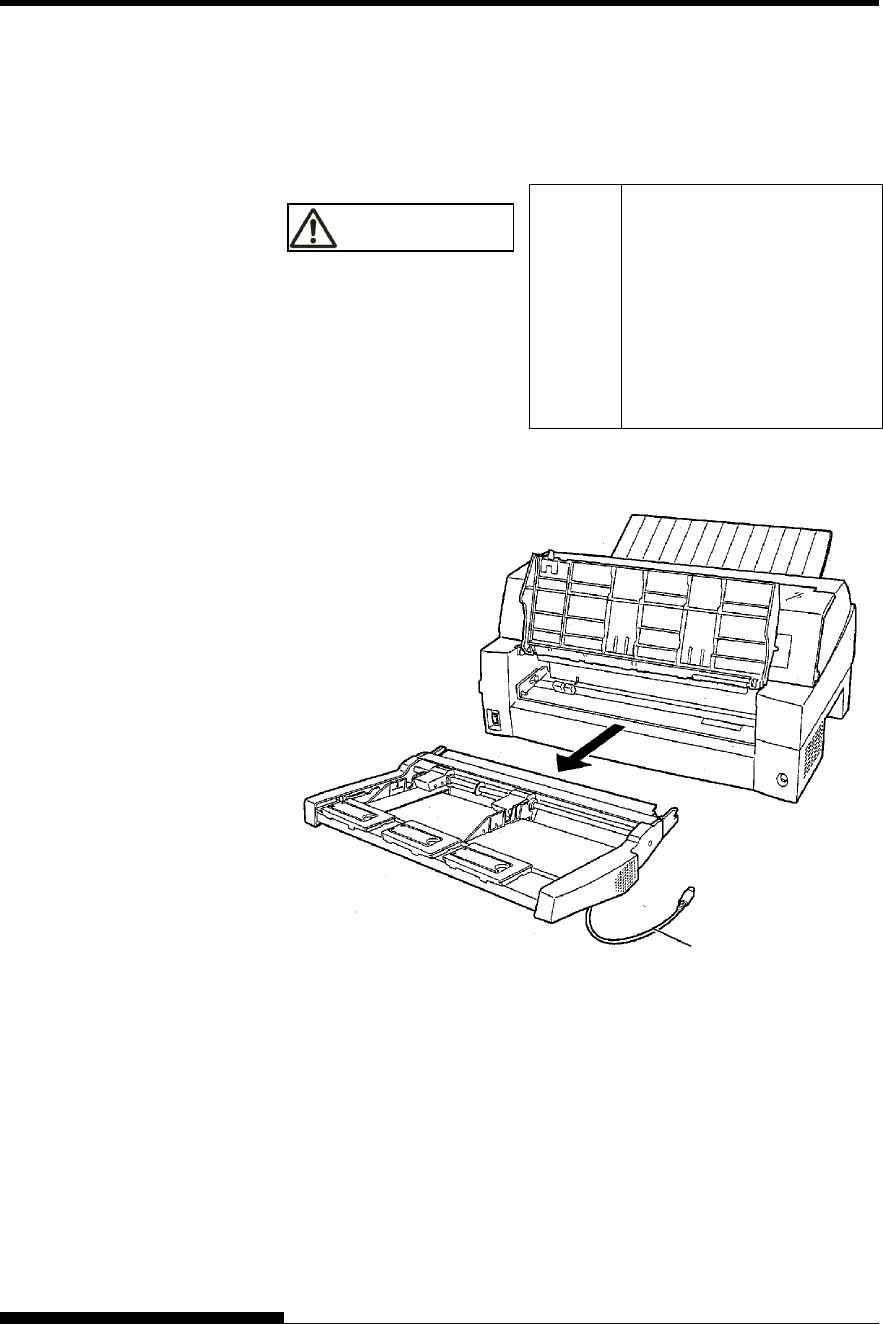
INSTALLING OPTIONS
User's Manual 8-7
Removing the Cut Sheet Feeder
Before removing the cut sheet feeder, disconnect the cable.
WARNING Electric
shock
Before mounting or
removing the cut sheet
feeder, turn off the power
switches of the personal
computer and the printer
and remove the power plug
from the outlet. Otherwise,
you may receive electric
shock.
When mounted on the front side of the printer
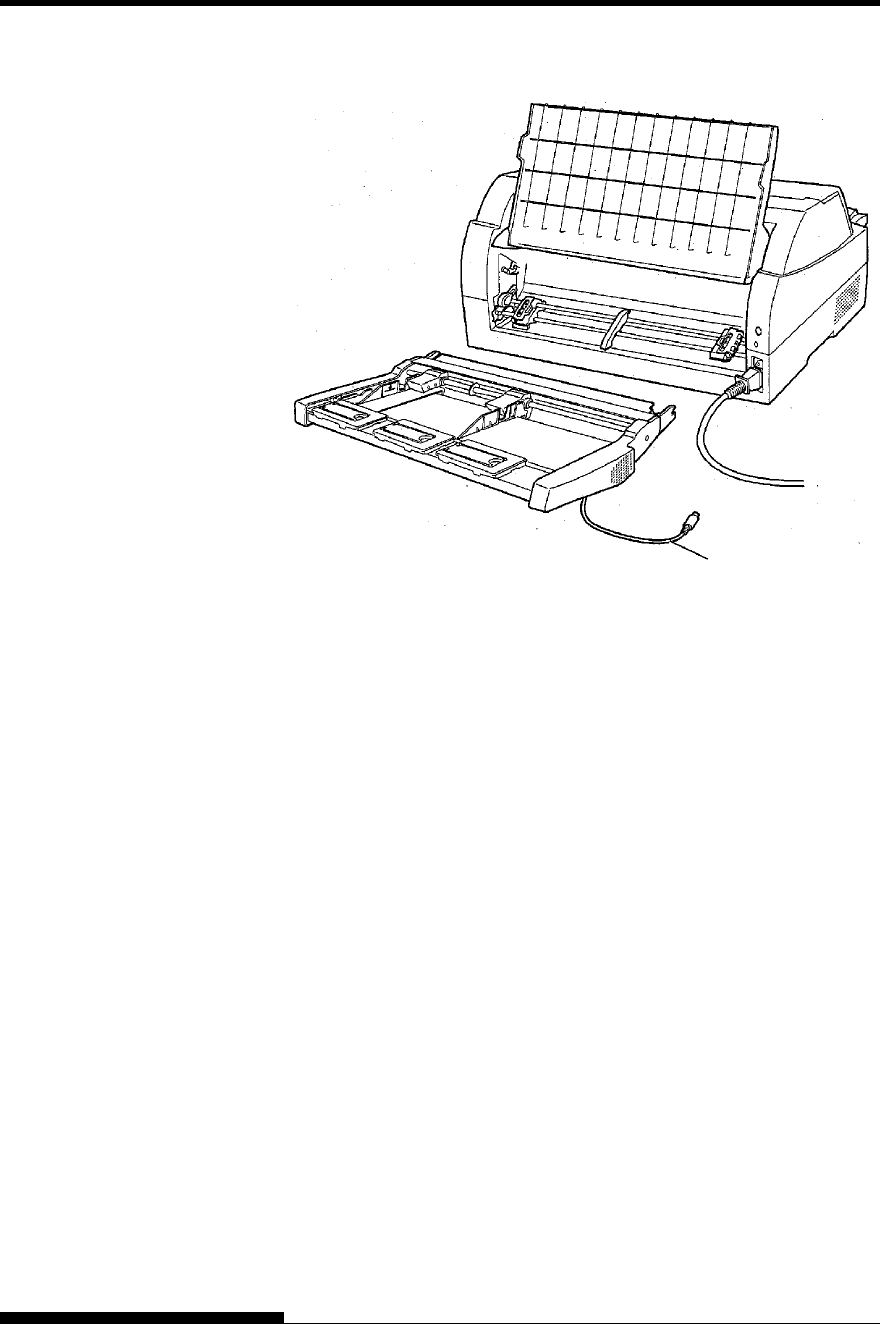
INSTALLING OPTIONS
8-8 User's Manual
When mounted on the rear side of the printer
A tractor unit is supplied as standard equipment attached to the front of
the printer.
This unit may also be attached to the rear of the printer for rear feeding
of continuous forms.
For details on removing and mounting the tractor unit, see “Selecting the
Tractor Unit Position” on page 2-10.
INSTALLING THE
TRACTOR UNIT
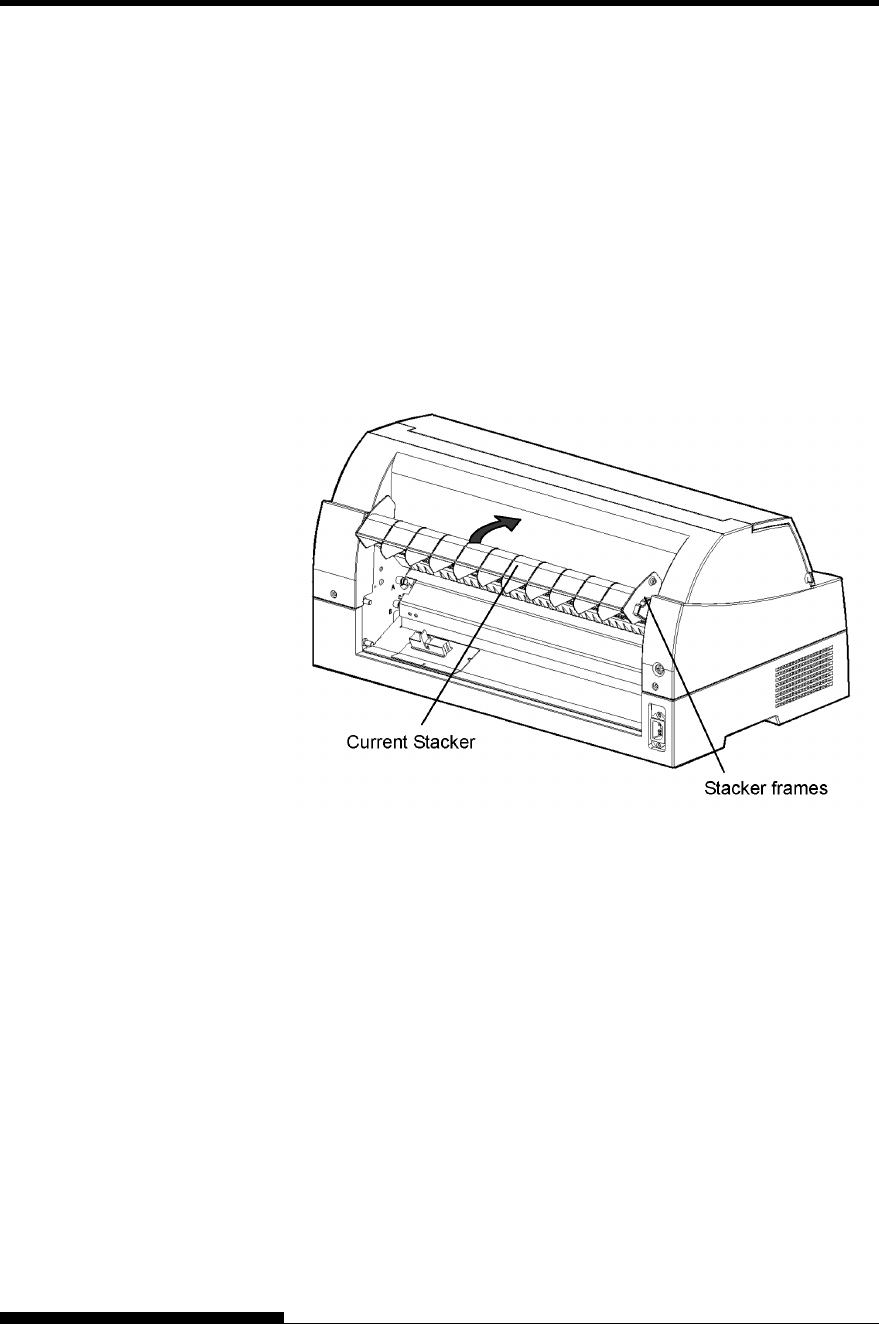
INSTALLING OPTIONS
User's Manual 8-9
To continuously stack cut sheets or eject long cut sheets to the rear,
mount the large stacker.
Also, if a cut sheet feeder is mounted at the rear, the stacker must be
replaced with the large stacker even if cut sheets need not be
continuously stacked.
1 Removing the current stacker
1. Lift up the current stacker in the direction indicated by the
arrow.
2. With the stacker in the condition described in step 1, push out
the right and left stacker frames to separate them from the
protrusions on the stacker plate.
INSTALLING THE
Large stacker
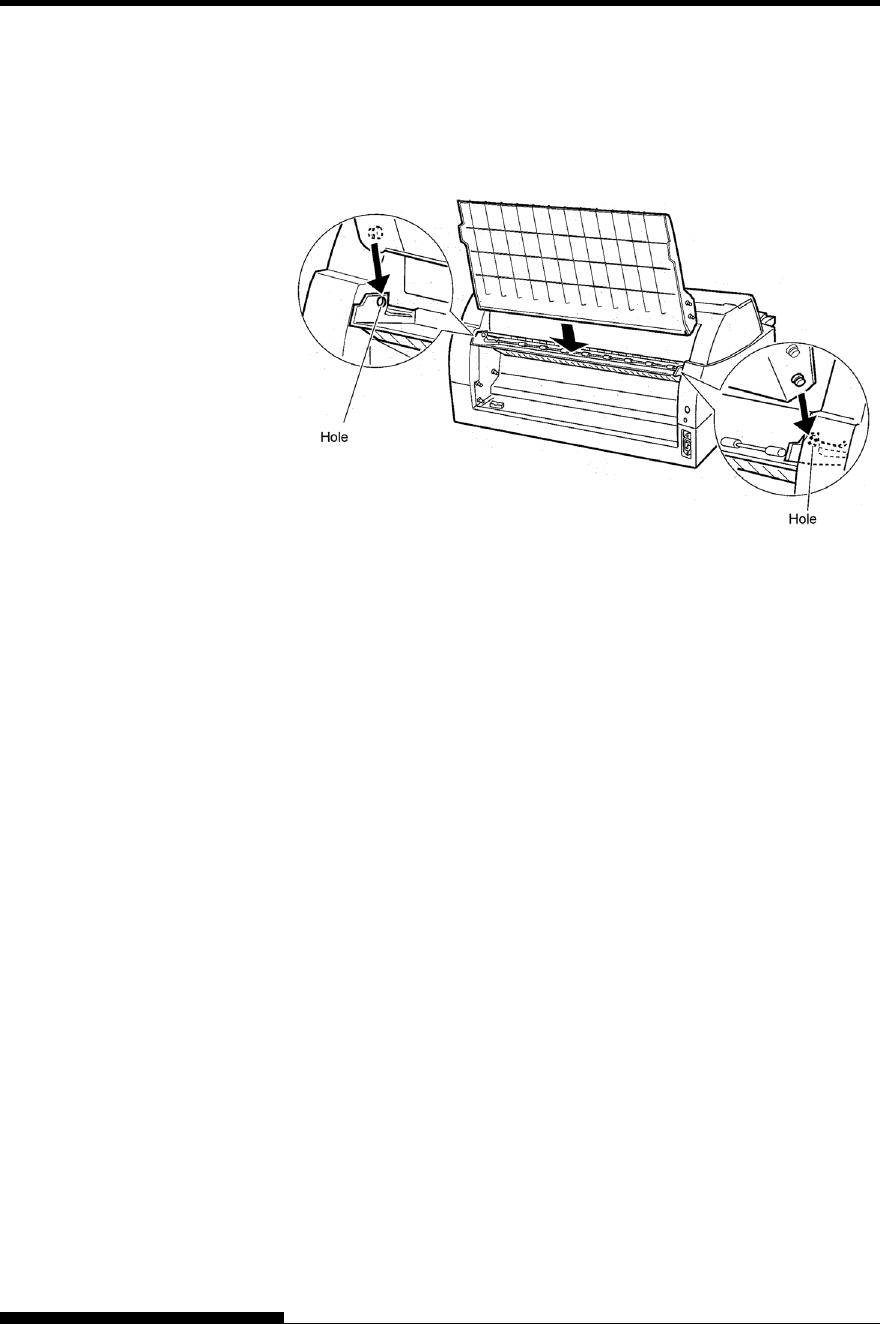
INSTALLING OPTIONS
8-10 User's Manual
2 Mounting the rear stacker
At the rear of the printer, push the protrusions on both sides of the
rear stacker into the holes inside the rear stacker guide as shown in
the following figure.
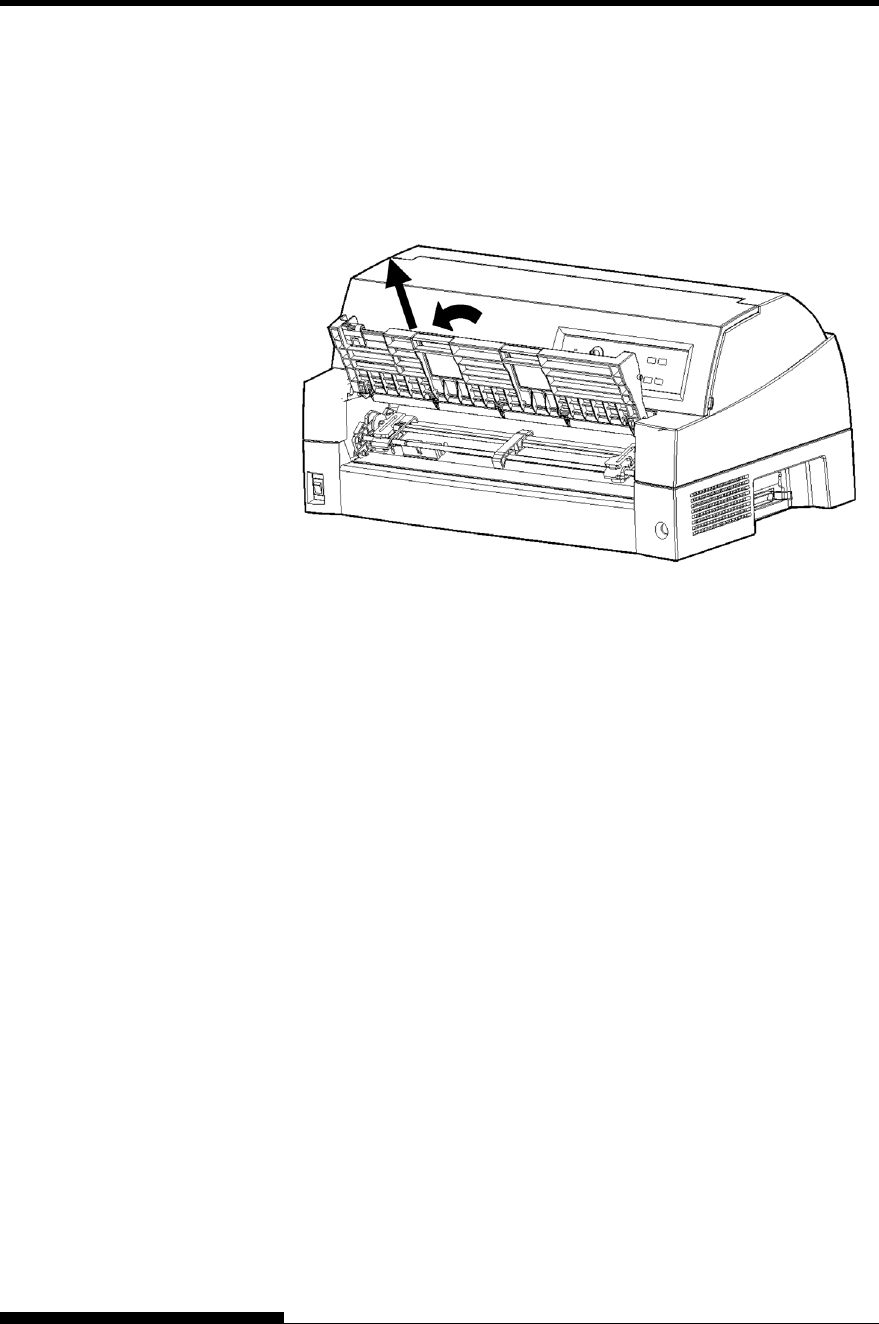
INSTALLING OPTIONS
User's Manual 8-11
To use long cut sheets, mount the large cut sheet table.
1 Removing the current paper table
After opening the paper table and adjusting it to a slanted position,
remove the paper table by lifting it to separate the left and right
protrusions on the paper table ends from the grooves on the cover.
1. Installing the Large Paper Table
Push the left and right protrusions on the paper table ends into
the grooves on the cover as shown in the following figure.
Leave the paper table in the open position.
The new large paper table can be opened or closed in the same
way as the removed paper table.
INSTALLING THE
Large Paper Table
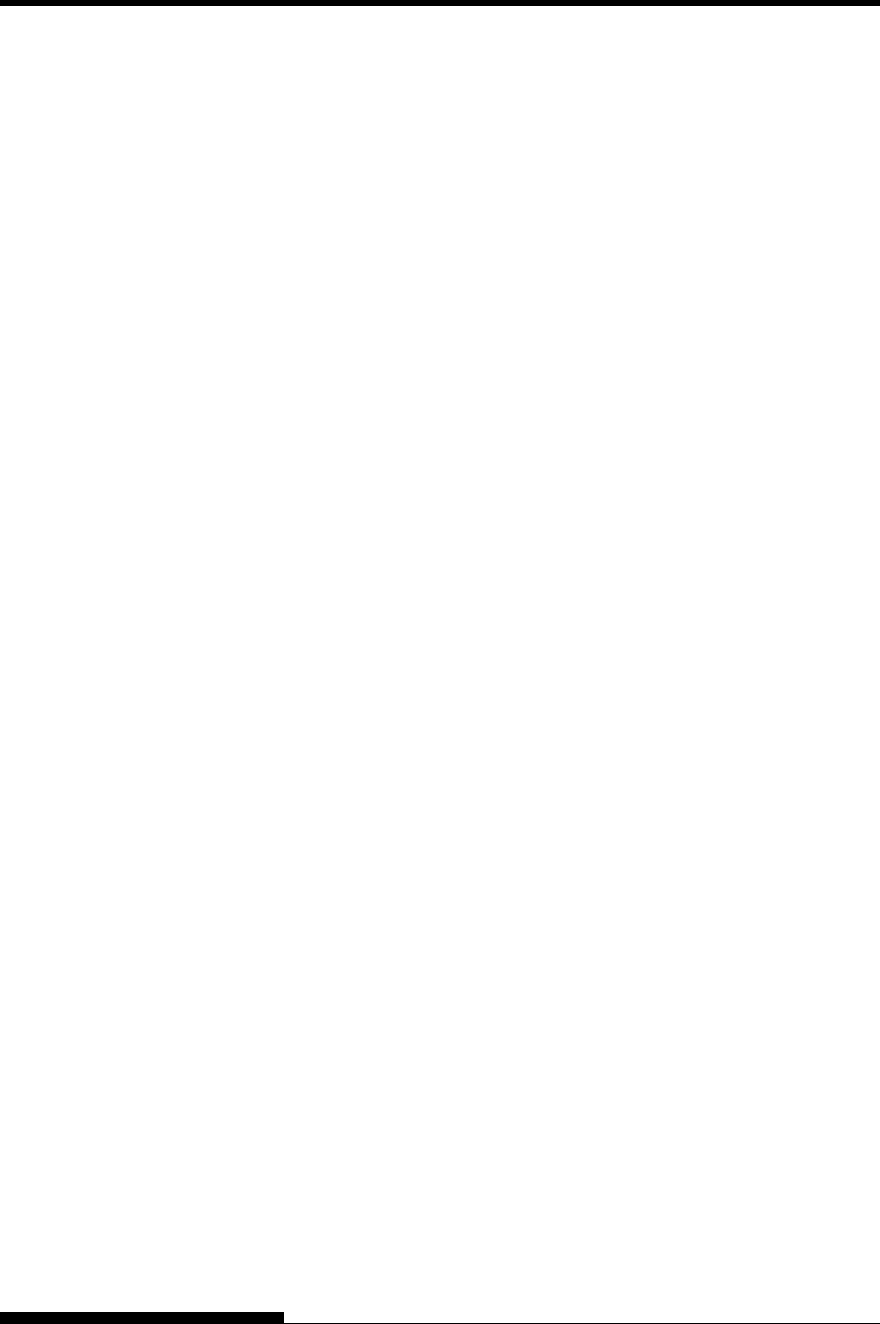
INSTALLING OPTIONS
8-12 User's Manual
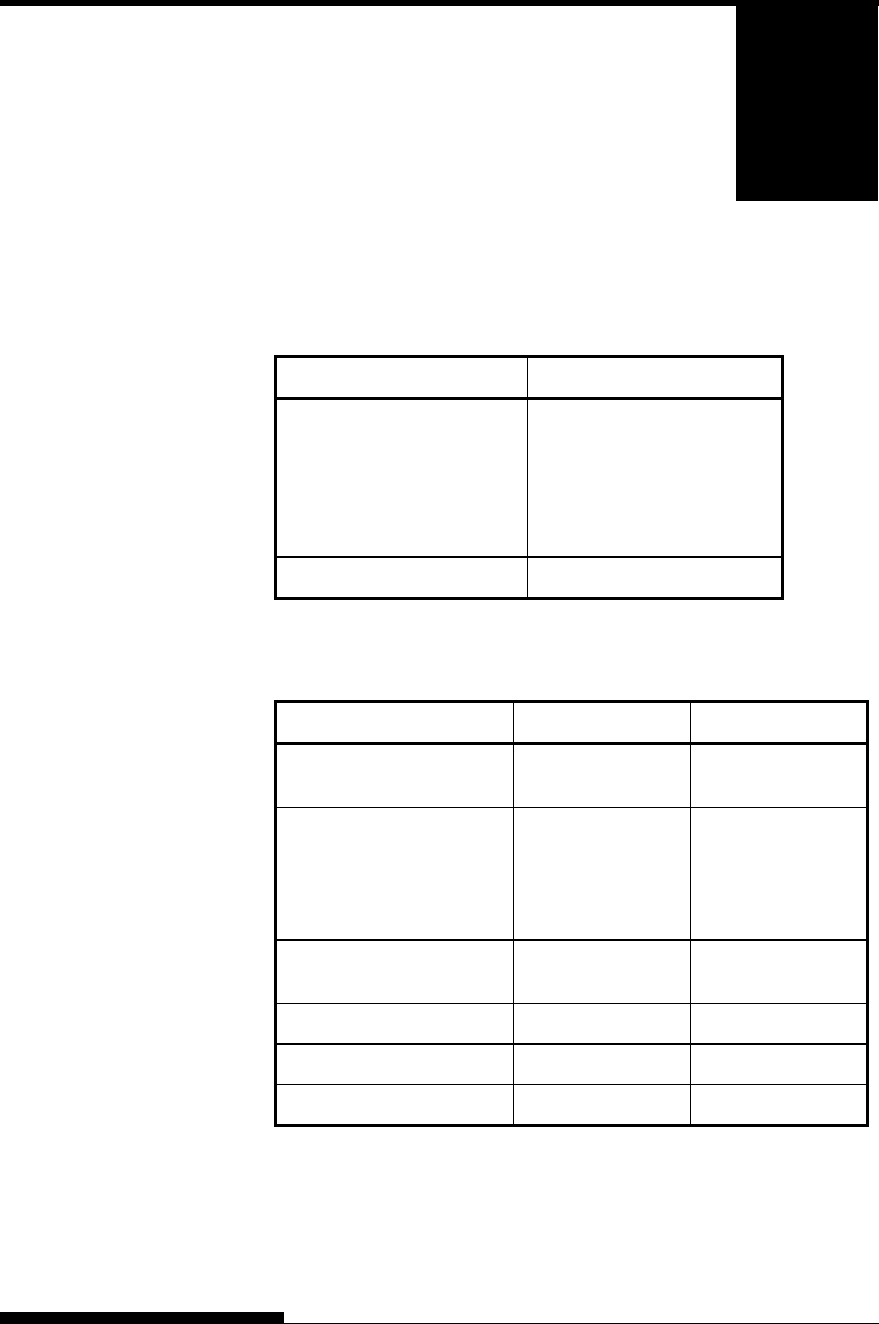
User's Manual A-1
A
APPENDIX A SUPPLIES AND OPTIONS
SUPPLIES AND OPTIONS
This appendix lists the supplies and options available
for the printer.
Contact your dealer for information on ordering
any of these items.
Supplies Order Number
Ribbon cartridges
Black ribbon CA02374-C104
Ribbon subcassette
Black ribbon CA02374-C204
Print head CA02281-E718
Options Order Number Description
RS-232C serial interface
board.
CA02374-C992
LAN card KA02004-C103 Installable only on
a printer model
with the parallel
and USB
interfaces.
Cut sheet feeder SF940
(KA02027-D750)
Tractor Unit KA02038-E650
Large Stacker KA02038-D160
Large paper table KA02038-D150
SUPPLIES
OPTIONS
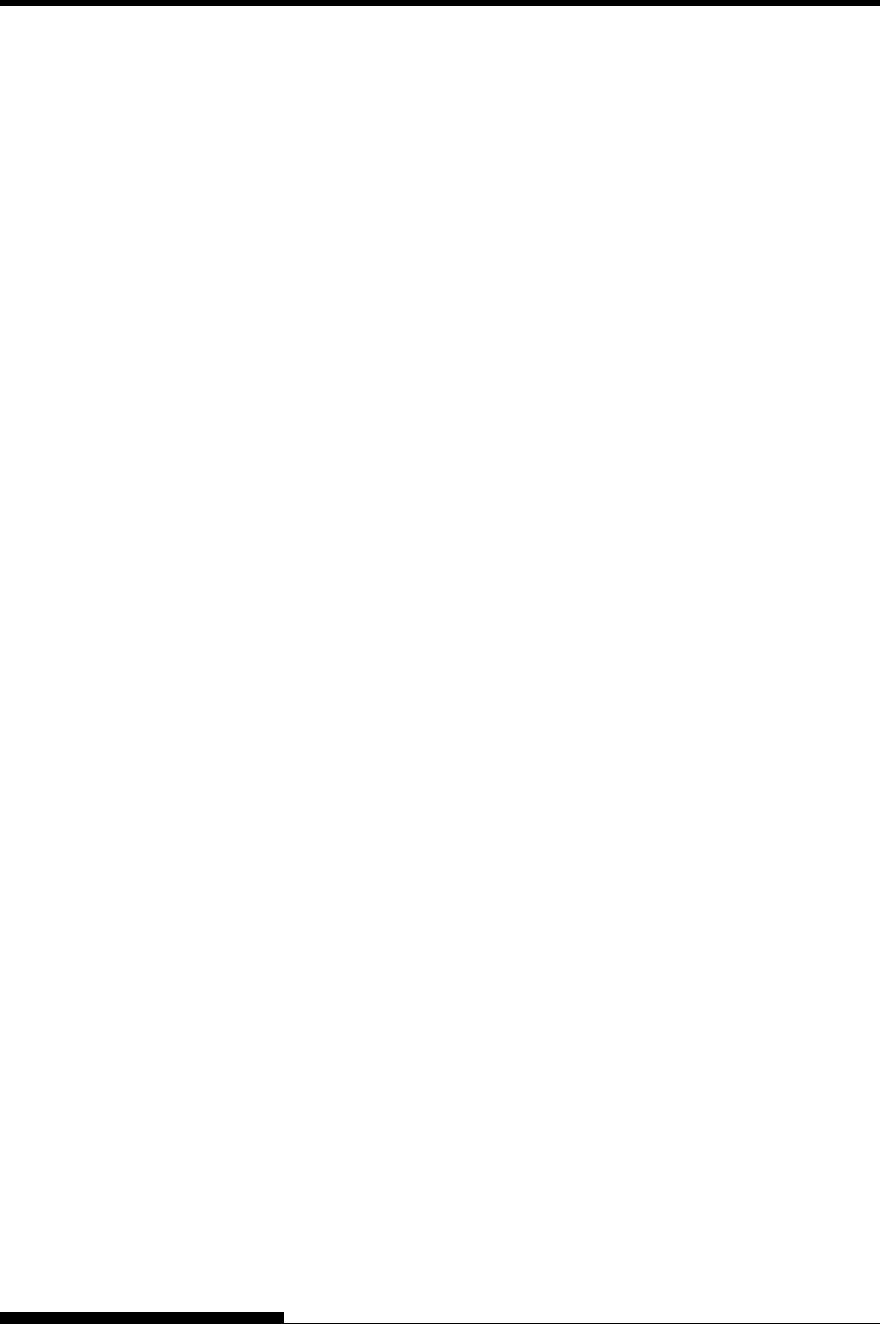
SUPPLIES AND OPTIONS
A-2 User's Manual
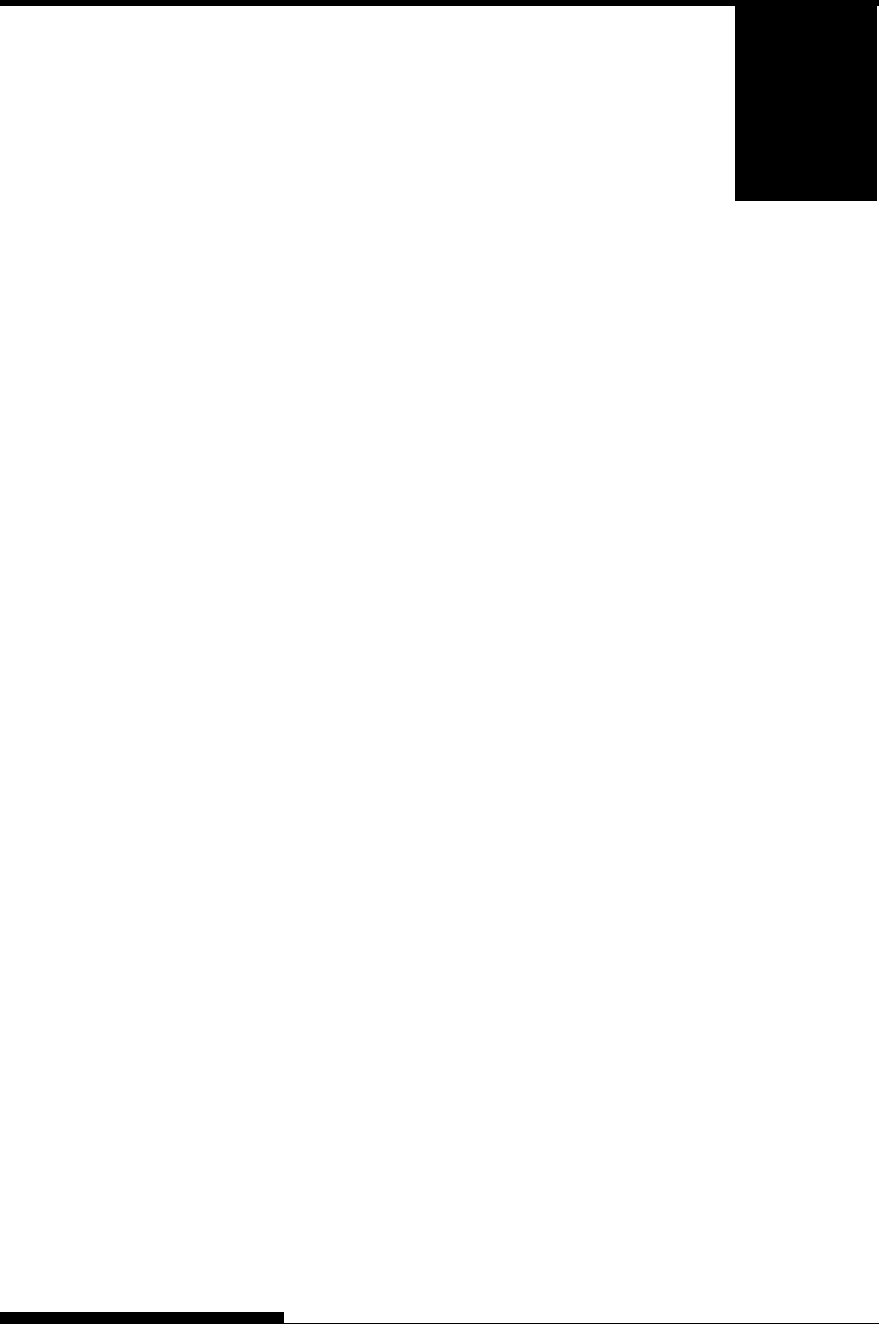
User's Manual B-1
B
APPENDIX B PRINTER AND PAPER SPECIFICATIONS
PRINTER AND PAPER
SPECIFICATIONS
This appendix gives the physical, functional, and
performance specifications for the printer.
It also gives detailed paper specifications.
Dimensions
Height: 290 mm (11.4 in)
Width: 600 mm (23.6 in)
Depth: 350 mm (13.8 in)
Weight: 17 kg (37.4 lb)
AC power requirements
M33324A: 100 to 120 VAC ±10%; 50/60 Hz
M33324B: 220 to 240 VAC -10%, +6%; 50/60 Hz
Power consumption Average 210 VA
Maximum 360 VA
Heat generation Average 115 kcal/h
Interface - Centronics parallel
- Centronics parallel and RS-232C serial
- Centronics parallel and USB and LAN
(option).
Data buffer size 0, 256, 2K, 8K, 24K, 32K, 96K, or 128K
bytes
Download buffer Maximum 128K bytes
(128K minus data buffer size)
Operating environment 5 to 38°C (41 to 100°F)
30% to 80% RH (no condensation)
Wetbulb temperature, less than 29°C (84°F)
Storage environment -15 to 60°C (-4 to 140°F)
10% to 95% RH (no condensation)
Acoustic noise Average 59 dB (A)
ISO 7779 (Bystander Position-Front)
PHYSICAL
SPECIFICATIONS
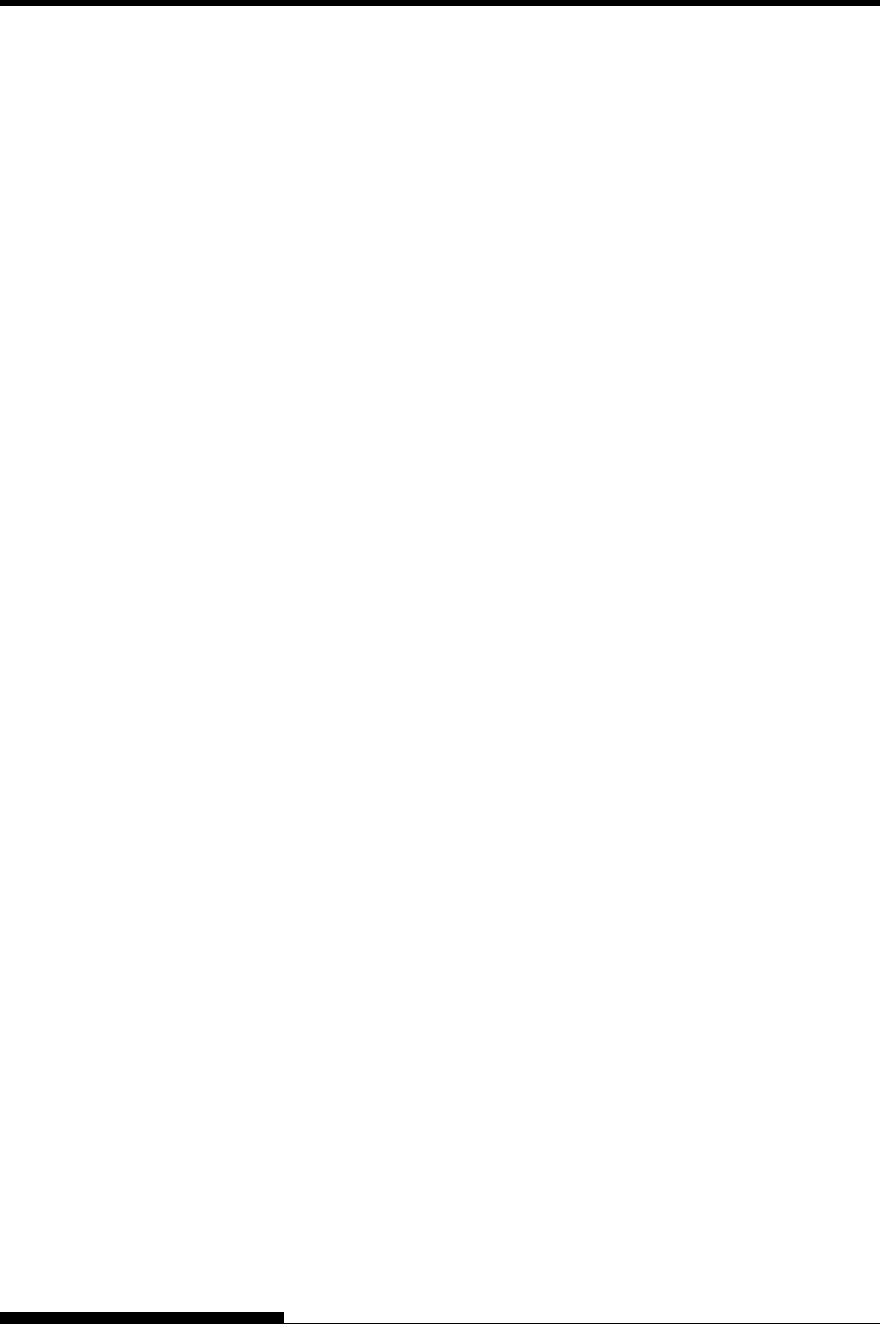
PRINTER AND PAPER SPECIFICATIONS
B-2 User's Manual
Print method Impact dot matrix with a 0.2 mm, 24-wire head
Print direction Bidirectional logic-seeking or unidirectional
seeking
Character cell Horizontal × vertical
Letter (10 cpi): 36 × 24 dots
Letter (12 cpi): 30 × 24 dots
Report: 18 × 24 dots
Draft: 9 × 24 dots
Paper handling
Standard: Friction-feed platen (cut sheets)
Convertible bi-directional tractor on front or
rear
Paper loading by LOAD button Advancing
perforations to tear-off edge by TEAR OFF
button
Parking continuous forms when using cut sheets
Optional: Cut sheet feeder
Tractor unit
Paper type 1 to 5-copies for cut sheet feeder
1 to 8-copies for tractor and paper table
Paper size
Continuous Width: 102-420 mm (4-16.5 in)
Length: 102 mm (4 in) or greater
Cut sheets
(Paper table)
Width: 55-420 mm (2.16-16.5 in)
Length: 70-420 mm (2.76-16.5 in)
(Cut sheet feeder)
Width: 100-420 mm (4-16.5 in)
Length:
70-420 mm for front cut sheet feeder
(2.76-16.5 in)
100-420 mm for front cut sheet feeder
(4-16.5 in)
Note:
To use cut sheets exceeding 297 mm in length, the optional large cut
sheet table and large stacker are required.
FUNCTIONAL
SPECIFICATIONS
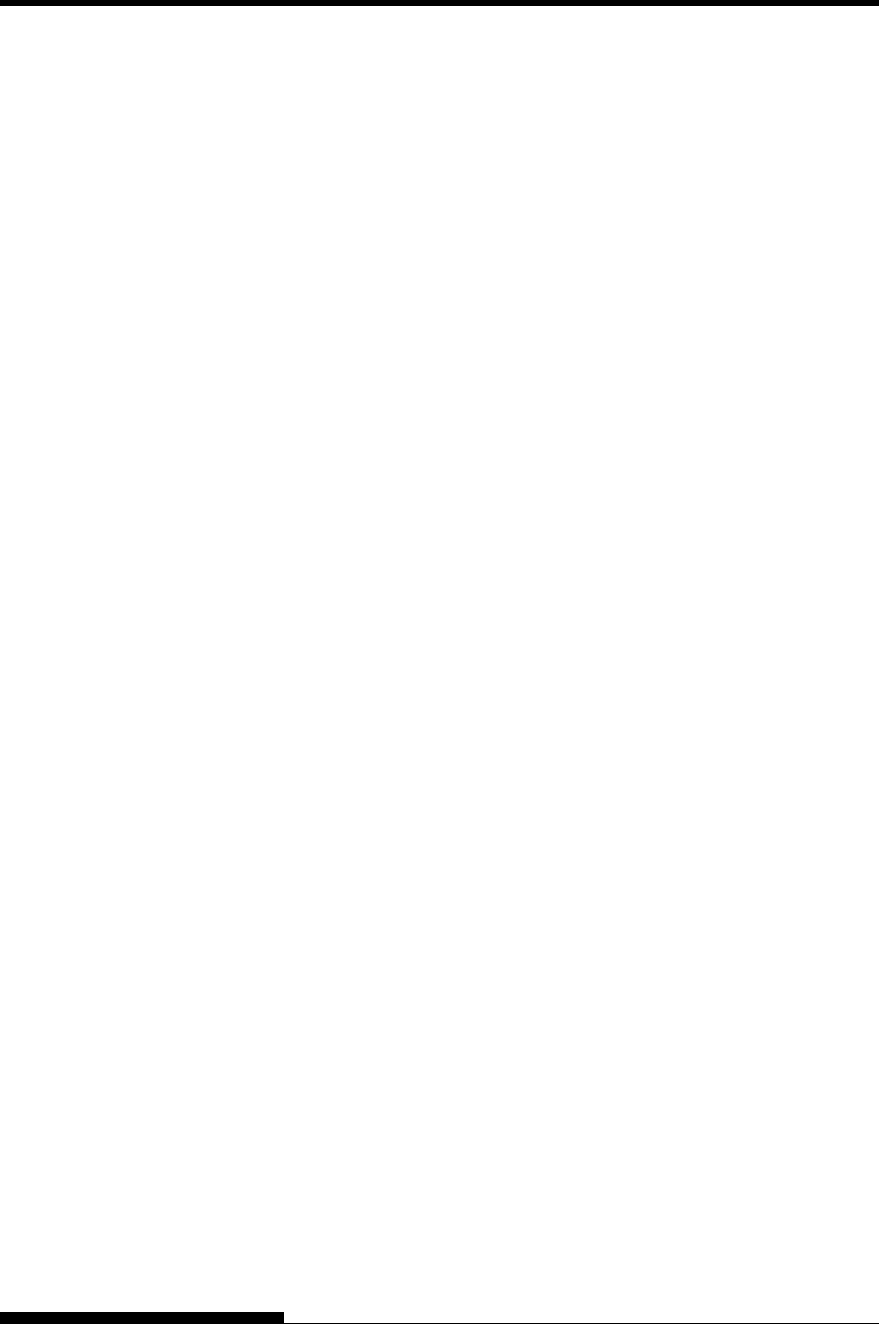
PRINTER AND PAPER SPECIFICATIONS
User's Manual B-3
Paper thickness Up to 0.65 mm (0.025 inch)
Paper length
By software Programmable in one line or inch
increments in all emulations
By control panel Depends upon emulations. Default is 11
inches for all emulations.
DPL24C+/XL24E: 3, 3.5, 4, 5, 5.5, 6, 7, 8, 8.5, 11, 11.6, 12,
14, or 18 inches
ESC/P2: 4, 4.5, 5, 5.5, ..., 11, 11.5, ..., 22 inches
Number of copies Up to 5, including the original (normal
mode)
Up to 8, including the original (HI
IMPACT mode)
Paper stack
Cut sheet 100 sheets (A4 size, 1p, 55 kg/m2) (The
stack of cut sheets may decrease,
depending upon the various paper
conditions such as quality, the extent of
curl, and storage environment.)
Command sets
(emulations)
Resident Fujitsu DPL24C PLUS
IBM Proprinter XL24E
Epson ESC/P2
Character sets
DPL24C+/XL24E: • IBM PC character sets 1 and 2 (code
pages 437)
• IBM PS/2 character sets (code pages
and other national character sets (57
+ 2 languages in total)
• Fujitsu character sets (691
characters)
ESC/P2: • Italic character set Graphics
character sets 1 and 2
• IBM PS/2 character sets (code
pages) and other national character
sets (61 + 2 languages in total)
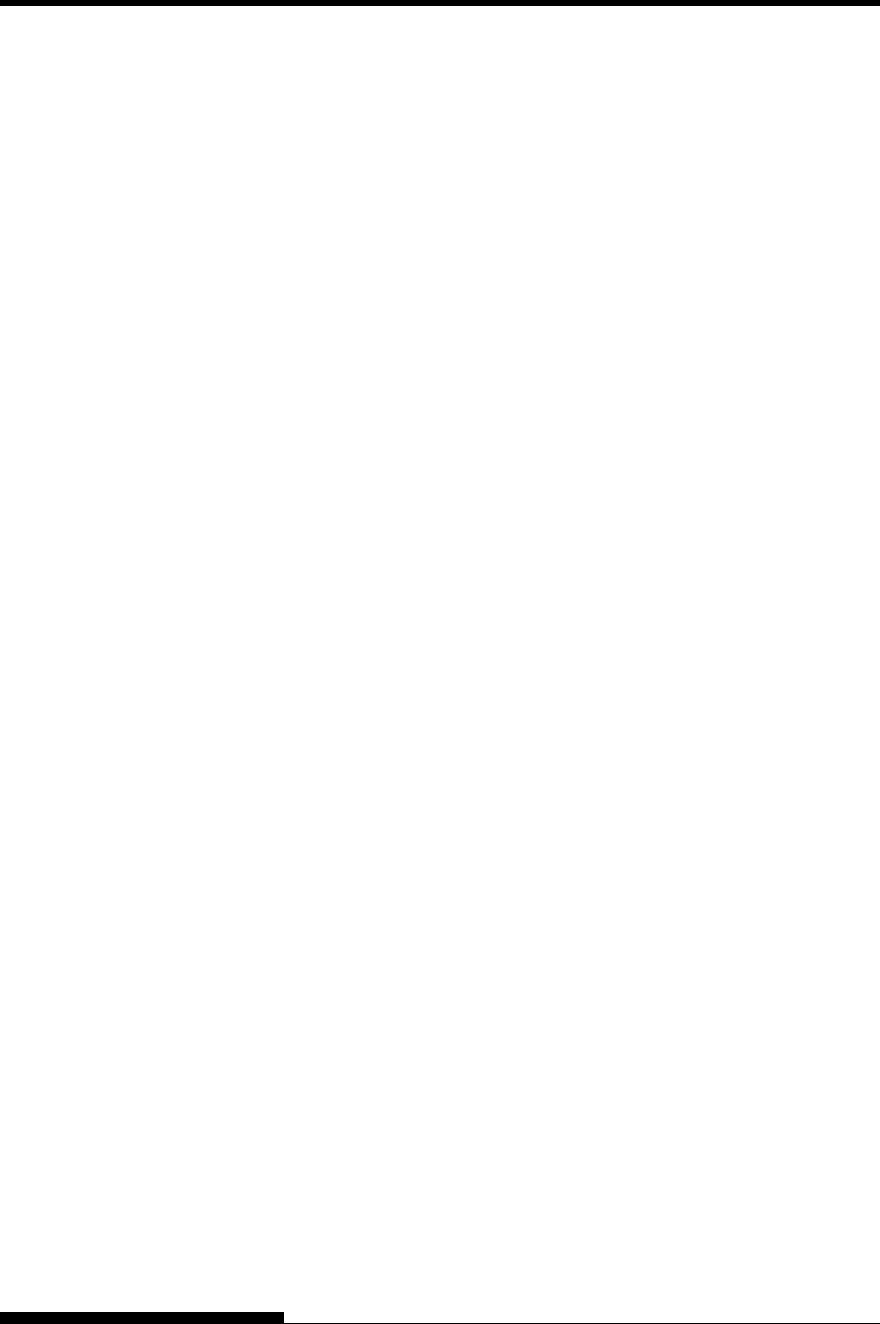
PRINTER AND PAPER SPECIFICATIONS
B-4 User's Manual
Fonts
Resident Nineteen fonts available
Bit map: Courier 10, Pica 10, OCR-B 10, OCR-A 10 ,
Prestige Elite 12, Boldface PS,
Correspondence, Compressed, Draft, and
High-speed Draft.
Scalable: Courier, Timeless, and Nimbus Sans ®; each
in normal, bold, and italic styles
Downloaded Available from independent vendors
Line spacing 1, 2, 3, 4, 5, 6, 7, or 8 lines per inch.
Programmable in 1/360 inch or various
increments for image graphics.
Character pitch 2.5, 3, 5, 6, 10, 12, 15, 17.1, 18, or 20 cpi, or
proportional spacing.
Programmable in 1/360 inch or various
increments for image graphics.
Characters per line
10 cpi: 136 cpl
12 cpi: 163 cpl
15 cpi: 204 cpl
17.1 cpi: 232 cpl
18 cpi: 244 cpl
20 cpi: 272 cpl
cpi: characters per inch
cpl: characters per line
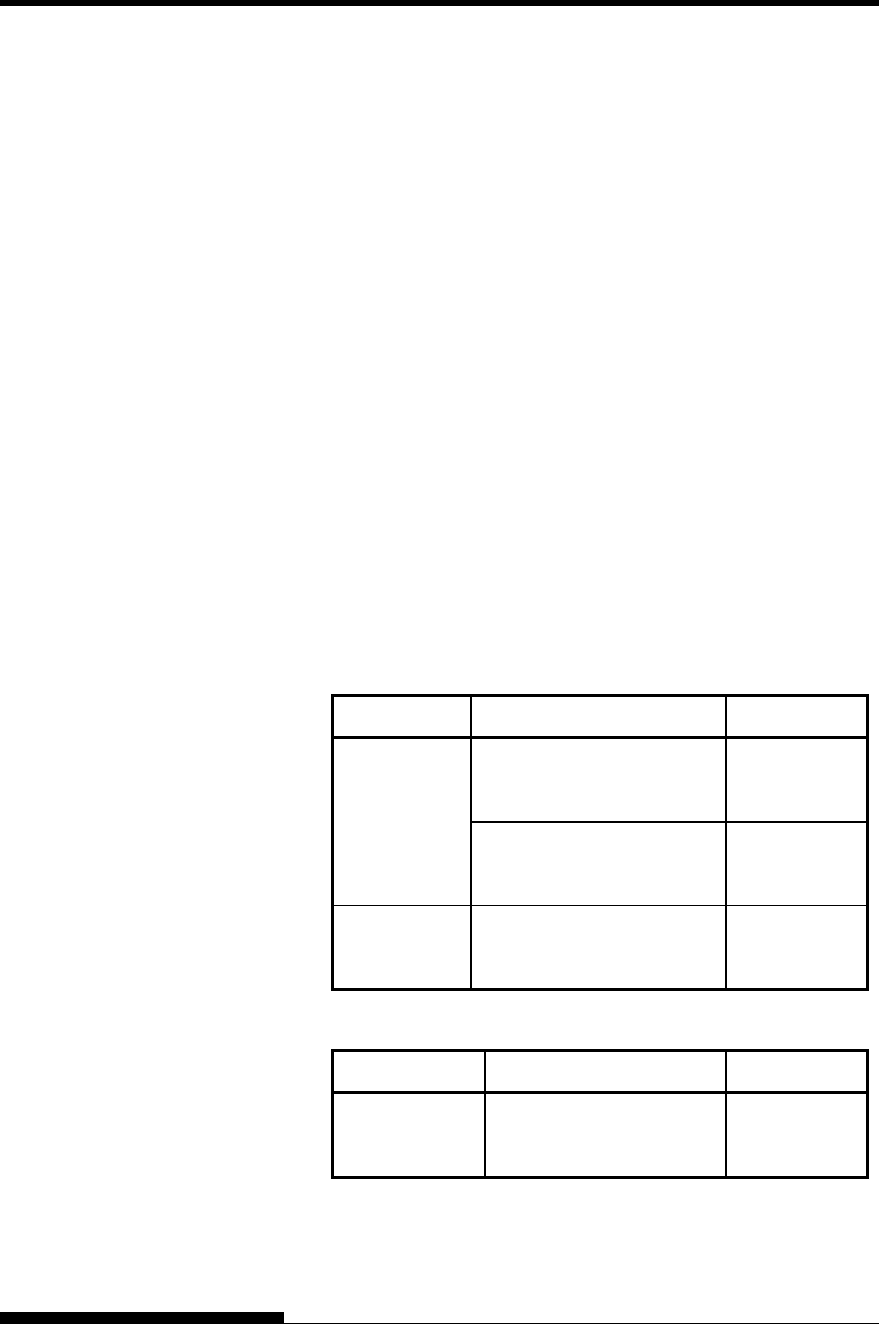
PRINTER AND PAPER SPECIFICATIONS
User's Manual B-5
Print speed 10 cpi 12 cpi
Letter: 120 cps 144 cps
Report: 240 cps 288 cps
Correspondence: 240 cps 288 cps
Draft: 505 cps 606 cps
cpi: characters per inch
cps: characters per second
Line feed speed
60 ms per line at 6 lines per inch
Form feed speed
6 inches per second
Ribbon life
Up to 5 million characters
Certification
Safety:
Model Regulation Country
UL 1950 United States
(for 100 to 120 VAC)
United States M33324A
CSA C22.2/950
(for 100 to 120 VAC)
Canada
M33324B TÜV EN 60 950
(for 220 to 240 VAC)
Germany
RFI regulation:
Model Regulation Country
M33324A Class B of FCC Part 15B
(for 100 to 120 VAC)
United States
PERFORMANCE
SPECIFICATIONS
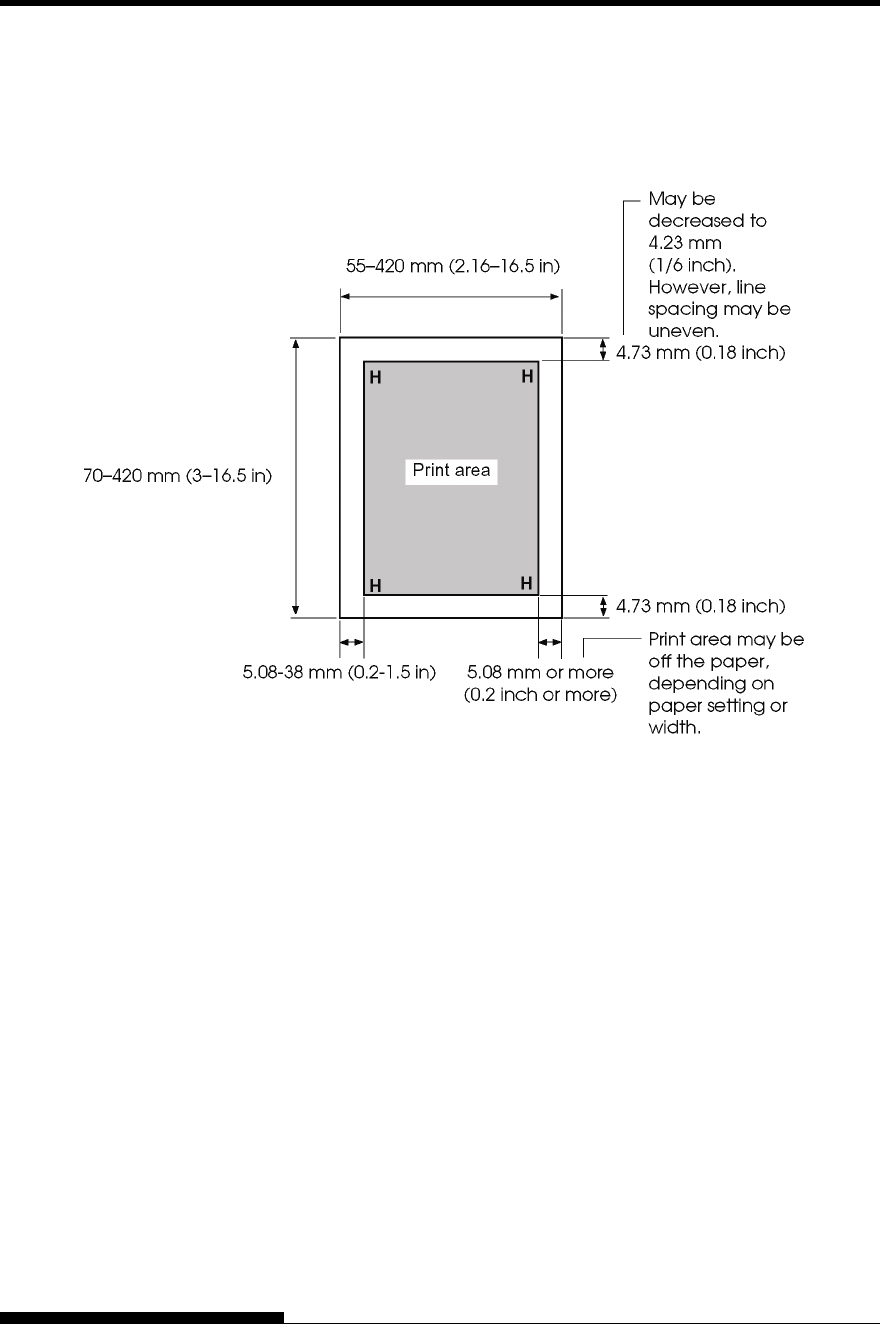
PRINTER AND PAPER SPECIFICATIONS
B-6 User's Manual
Print Area
This section illustrates the recommended print area for single sheets and
continuous forms.
Print area for single sheets
PAPER
SPECIFICATIONS
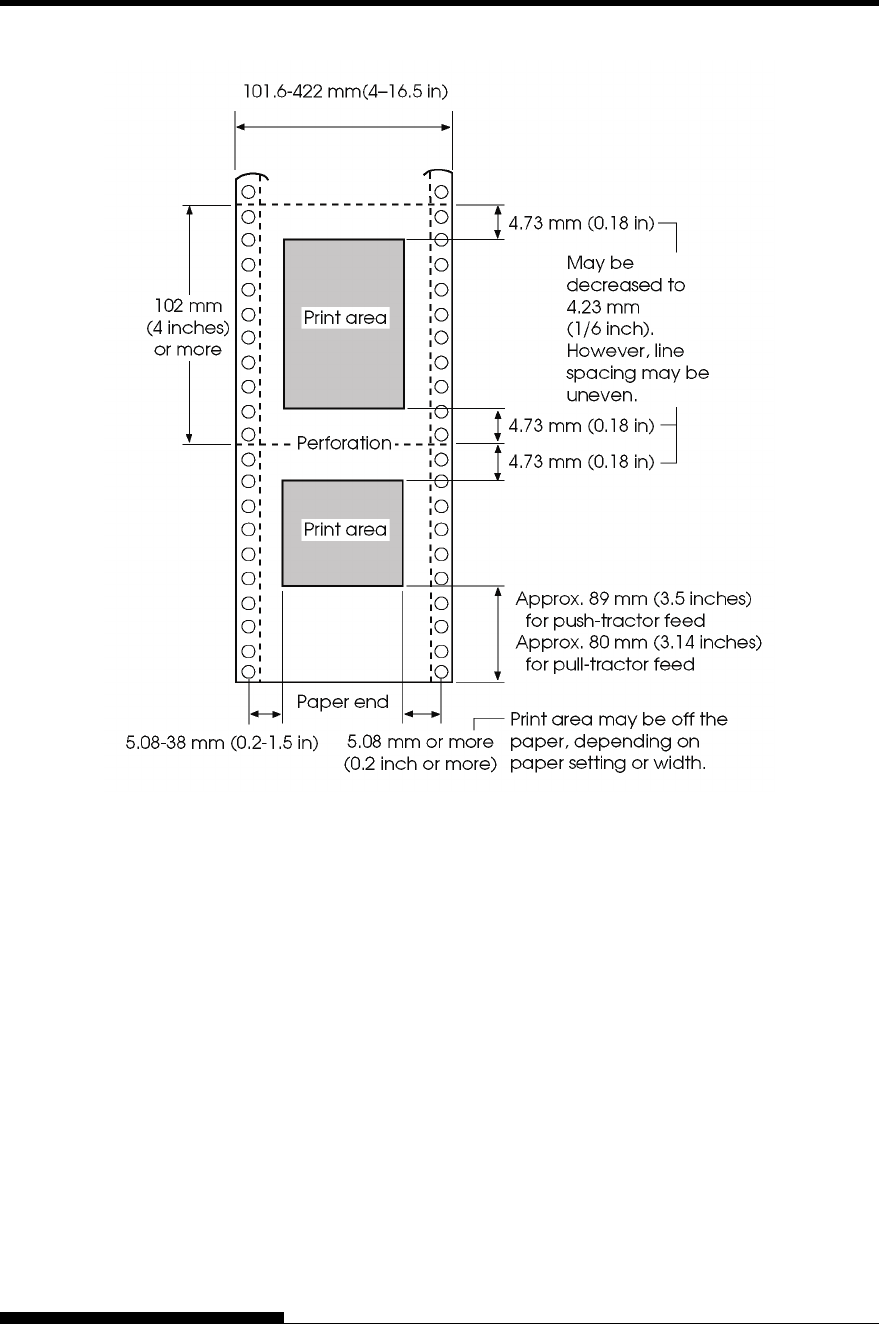
PRINTER AND PAPER SPECIFICATIONS
User's Manual B-7
Print area for continuous forms
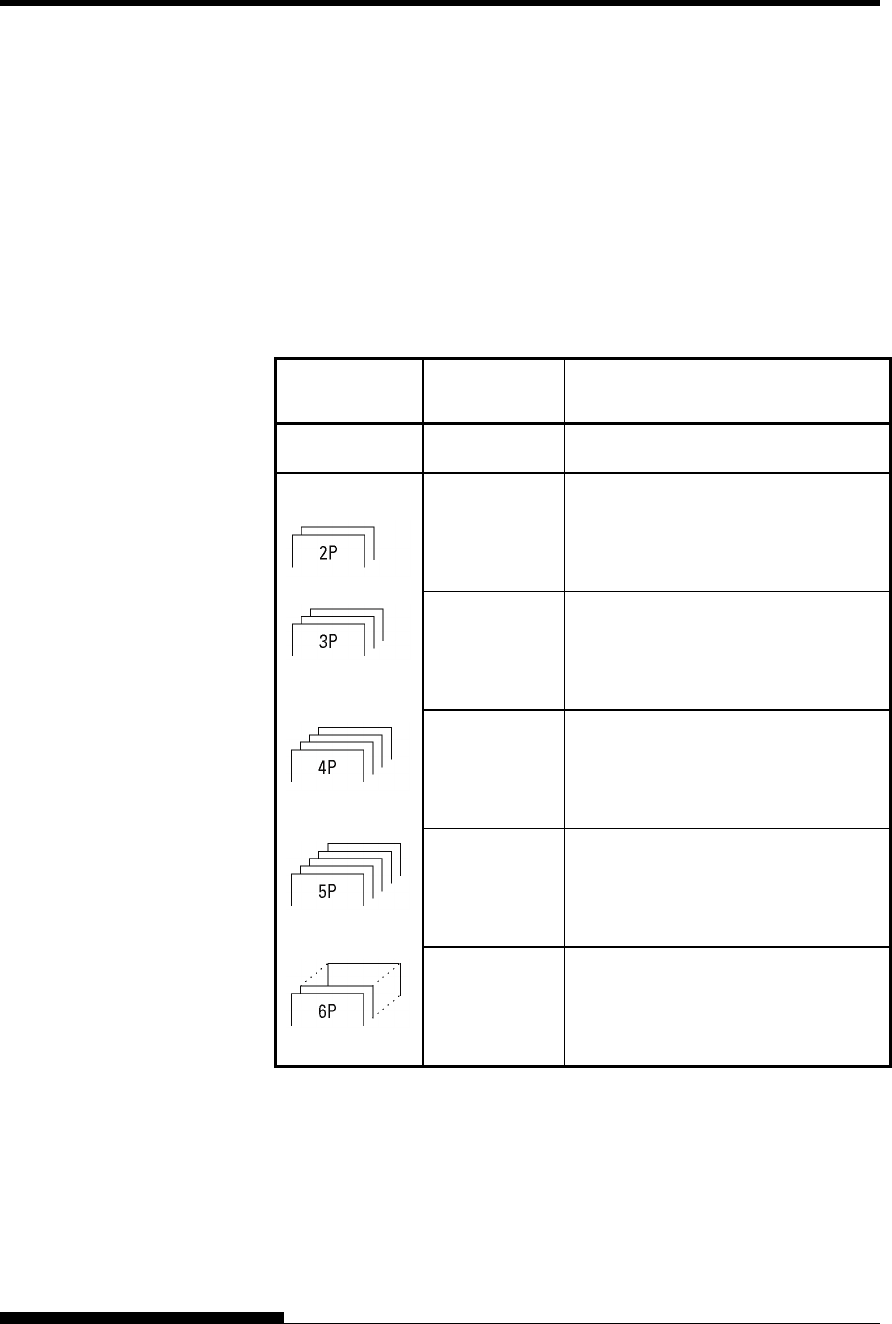
PRINTER AND PAPER SPECIFICATIONS
B-8 User's Manual
Paper Thickness
Paper thickness is given by the weight of the paper in either grams per
square meter (g/m2) or in pounds per bond (lbs/bond). The following
table shows the allowable paper thickness for one-part paper or for each
sheet of multipart paper. The total thickness must not exceed 0.65 mm
(0.025 inch).
The weight of carbonless or carbon-backed paper may vary, depending
upon the paper manufacturer. When using paper of borderline thickness,
test the paper before running a job.
Type of Paper Number of
Parts
Thickness
One-part Single 47-81 g/m2 (40-70 kg or 12-22 lb)
Carbonless
Top
Bottom
40-64 g/m2 (34-55 kg or 11-17 lb)
40-81 g/m2 (34-70 kg or 11-22 lb)
Top
Middle
Bottom
40-50 g/m2 (34-43 kg or 11-13 lb)
40-50 g/m2 (34-43 kg or 11-13 lb)
40-81 g/m2 (34-70 kg or 11-22 lb)
Top
Middle (2-3p)
Bottom
40 g/m2 (34 kg or 11 lb)
40 g/m2 (34 kg or 11 lb)
40-81 g/m2 (34-70 kg or 11-22 lb)
Top
Middle (2-4p)
Bottom
40 g/m2 (34 kg or 11 lb)
40 g/m2 (34 kg or 11 lb)
40-64 g/m2 (34-55 kg or 11-17 lb)
Top
Middle (2-5p)
Bottom
40 g/m2 (34 kg or 11 lb)
40 g/m2 (34 kg or 11 lb)
40-64 g/m2 (34-55 kg or 11-17 lb)
kg: Weight in kilograms of 1000 sheets of 788 × 1091 mm paper
(1.16 g/m2)
lb: Weight in pounds of 500 sheets of 17 × 22 inch paper (3.76 g/m2)
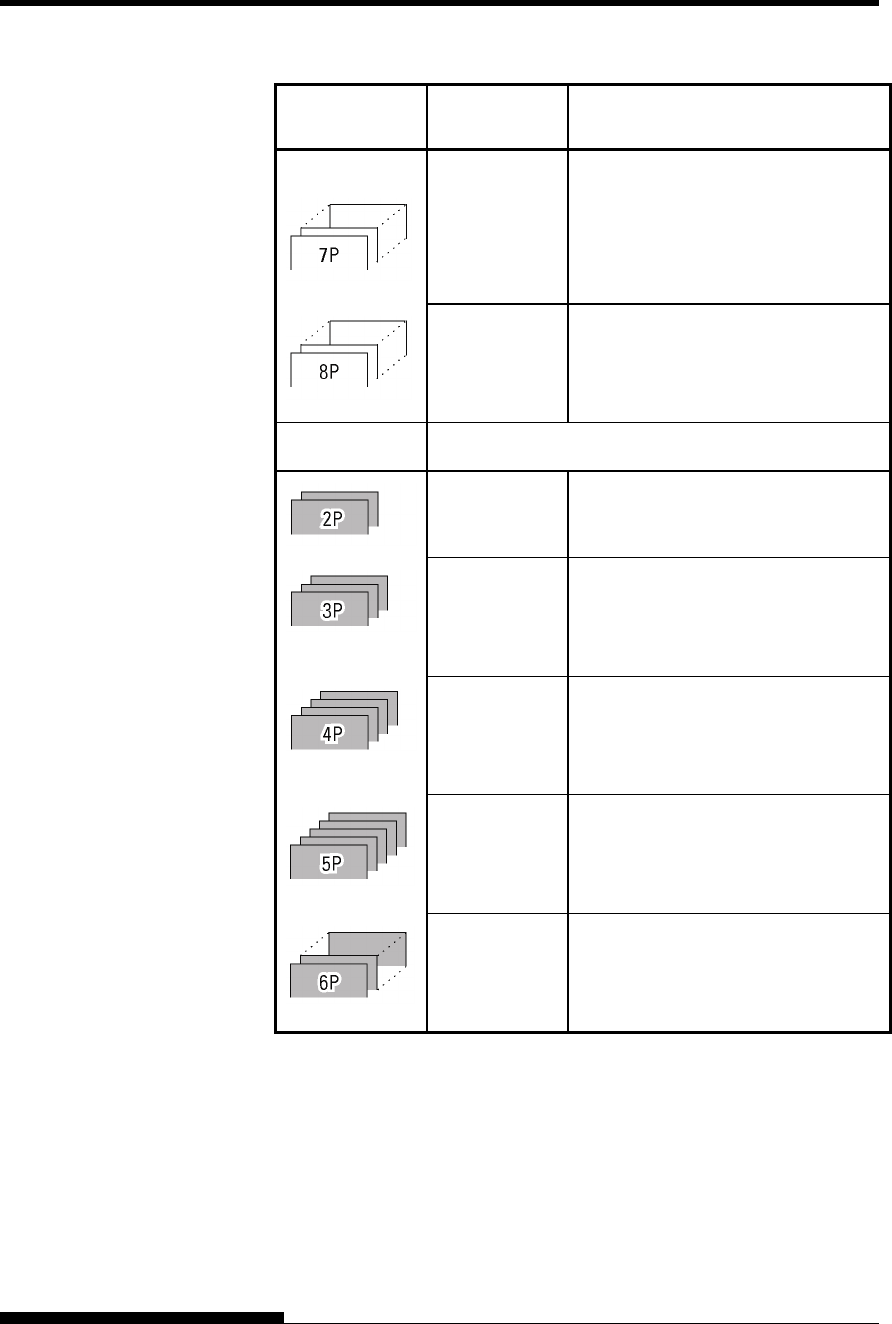
PRINTER AND PAPER SPECIFICATIONS
User's Manual B-9
Type of Paper Number of
Parts
Thickness
Carbonless
Top
Middle (2-6p)
Bottom
40 g/m2 (34 kg or 11 lb)
40 g/m2 (34 kg or 11 lb)
40-64 g/m2 (34-55 kg or 11-17 lb)
Top
Middle (2-7p)
Bottom
40 g/m2 (34 kg or 11 lb)
40 g/m2 (34 kg or 11 lb)
40-64 g/m2 (34-55 kg or 11-17 lb)
Carbon-backed Do not use in high humidity environments.
Top
Bottom
40-64 g/m2 (34-55 kg or 11-17 lb)
40-81 g/m2 (34-70 kg or 11-22 lb)
Top
Middle
Bottom
40-52 g/m2 (34-45 kg or 11-14 lb)
40-52 g/m2 (34-45 kg or 11-14 lb)
40-81 g/m2 (34-70 kg or 11-22 lb)
Top
Middle (2-3p)
Bottom
40 g/m2 (34 kg or 11 lb)
40 g/m2 (34 kg or 11 lb)
40-81 g/m2 (34-70 kg or 11-22 lb)
Top
Middle (2-4p)
Bottom
40 g/m2 (34 kg or 11 lb)
40 g/m2 (34 kg or 11 lb)
40-64 g/m2 (34-55 kg or 11-17 lb)
Top
Middle (2-5p)
Bottom
40 g/m2 (34 kg or 11 lb)
40 g/m2 (34 kg or 11 lb)
40-64 g/m2 (34-55 kg or 11-17 lb)
kg: Weight in kilograms of 1000 sheets of 788 × 1091 mm paper
(1.16 g/m2)
lb: Weight in pounds of 500 sheets of 17 × 22 inch paper (3.76 g/m2)
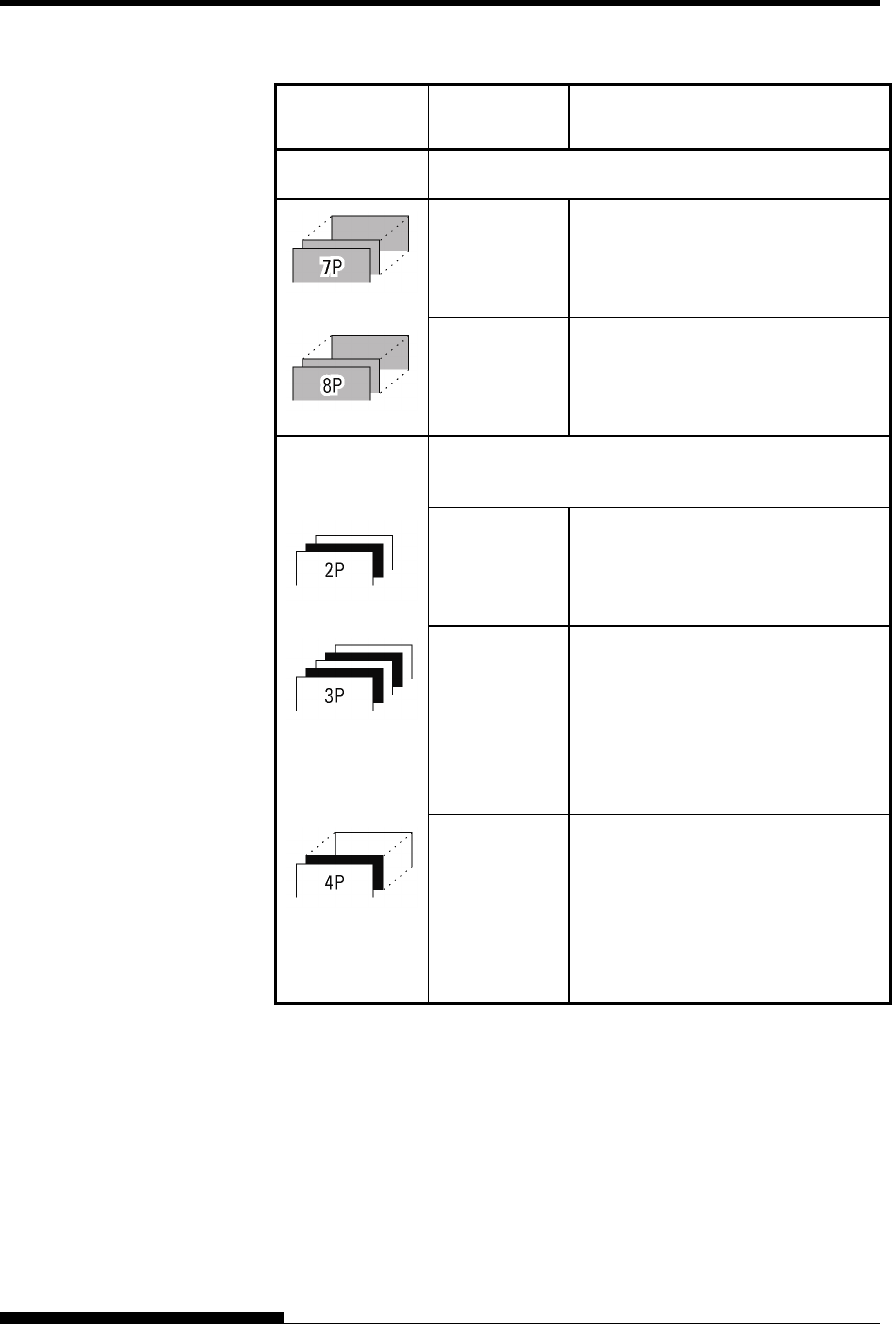
PRINTER AND PAPER SPECIFICATIONS
B-10 User's Manual
Type of Paper Number of
Parts
Thickness
Carbon-backed Do not use in high humidity environments.
Top
Middle (2-6p)
Bottom
40 g/m2 (34 kg or 11 lb)
40 g/m2 (34 kg or 11 lb)
40-64 g/m2 (34-55 kg or 11-17 lb)
Top
Middle (2-7p)
Bottom
40 g/m2 (34 kg or 11 lb)
40 g/m2 (34 kg or 11 lb)
40-64 g/m2 (34-55 kg or 11-17 lb)
Carbon-
interleaved
Avoid using carbon-interleaved single sheets.
Top
Carbon
Bottom
35-52 g/m2 (30-45 kg or 9-14 lb)
Counted as one sheet
35-81 g/m2 (30-70 kg or 9-22 lb)
Top
Carbon
Middle
Carbon
Bottom
35-46 g/m2 (30-40 kg or 9-12 lb)
Counted as one sheet
35-46 g/m2 (30-40 kg or 9-12 lb)
Counted as one sheet
35-64 g/m2 (30-55 kg or 9-17 lb)
Top
Carbon
Middle (3,5P)
Carbon (4,6P)
Bottom
35-46 g/m2 (30-40 kg or 9-12 lb)
Counted as one sheet
35-46 g/m2 (30-40 kg or 9-12 lb)
Counted as one sheet
35-64 g/m2 (30-55 kg or 9-17 lb)
kg: Weight in kilograms of 1000 sheets of 788 × 1091 mm paper
(1.16 g/m2)
lb: Weight in pounds of 500 sheets of 17 × 22 inch paper (3.76 g/m2)